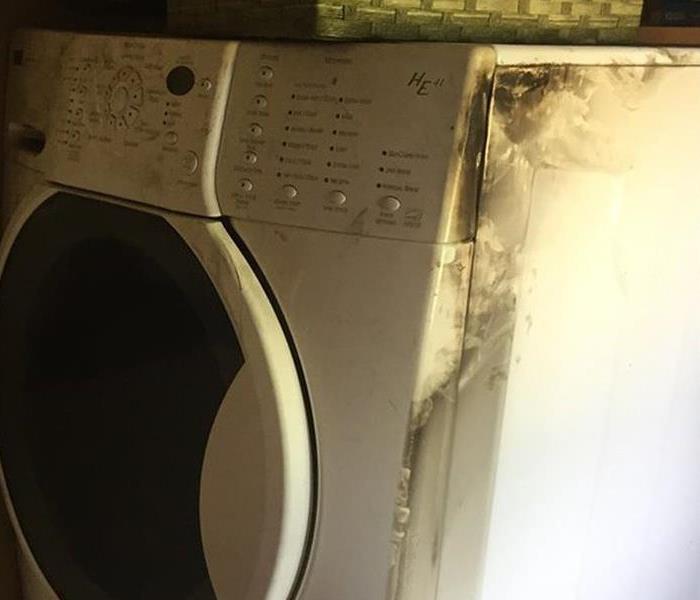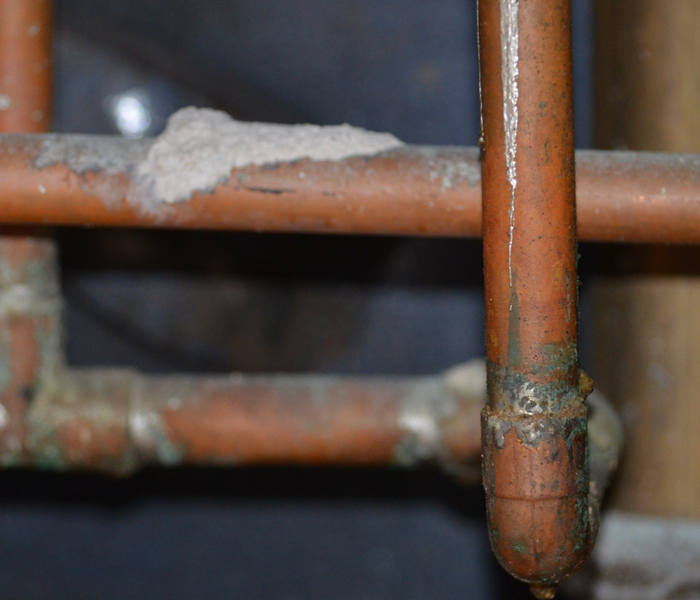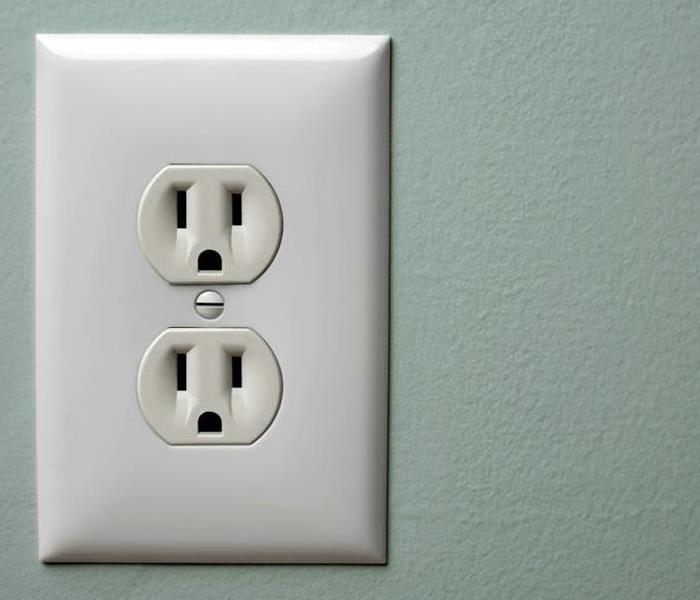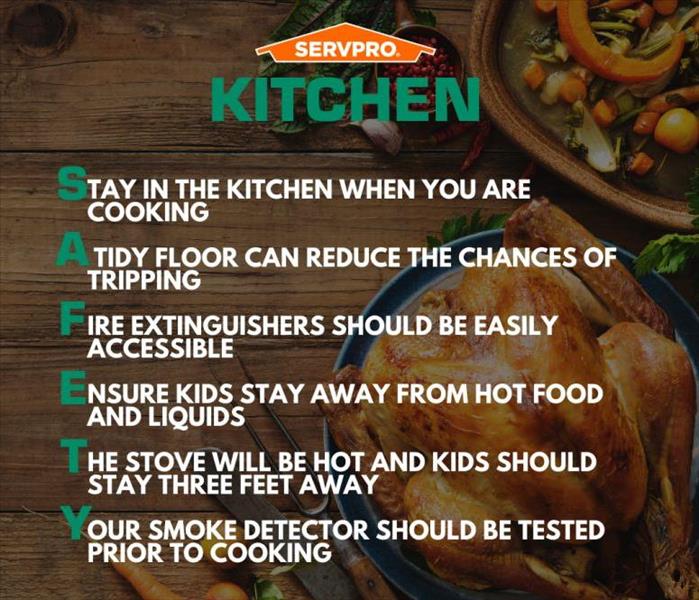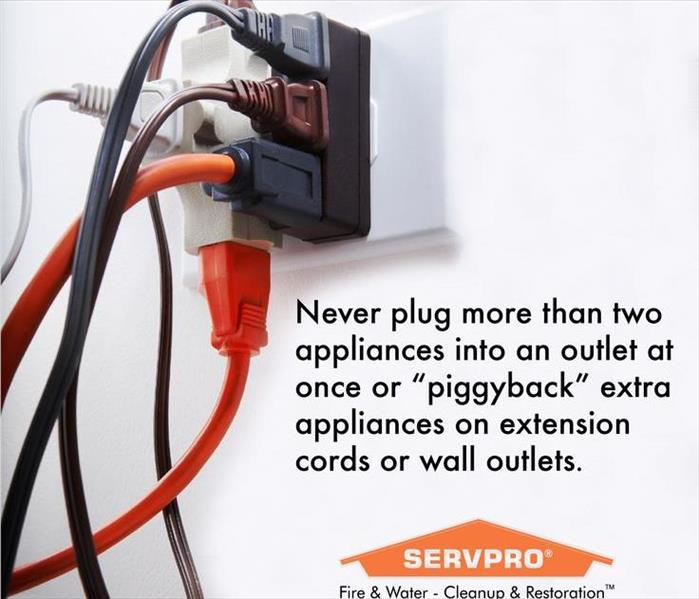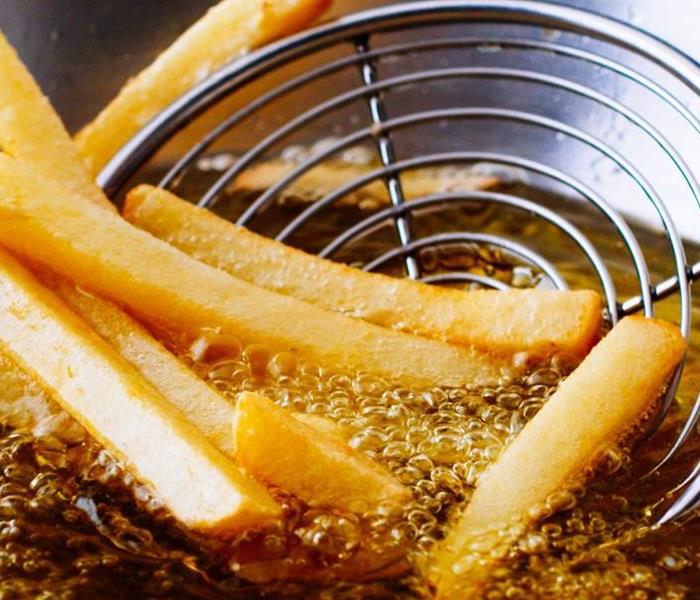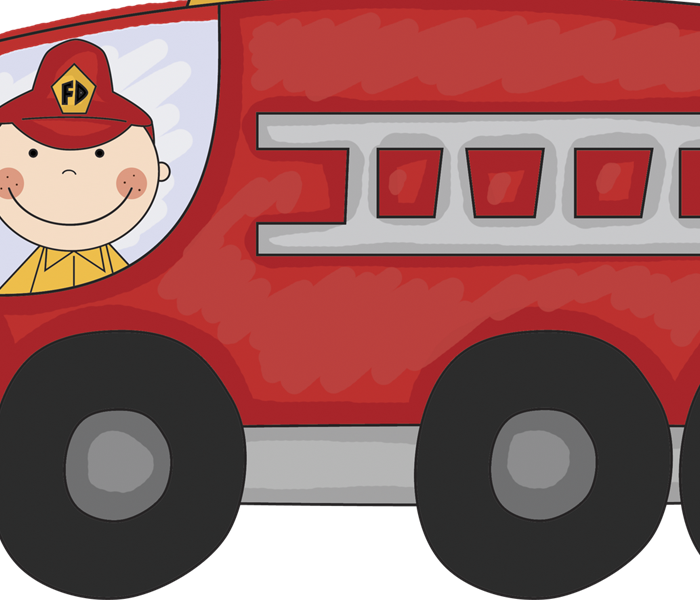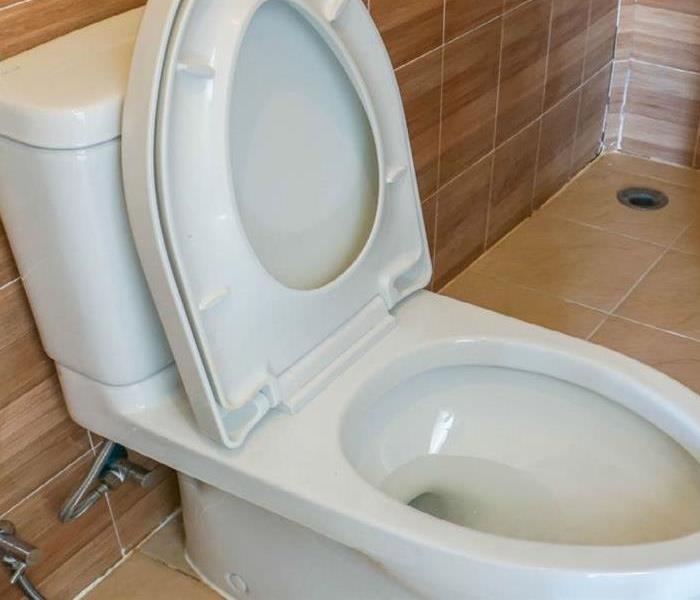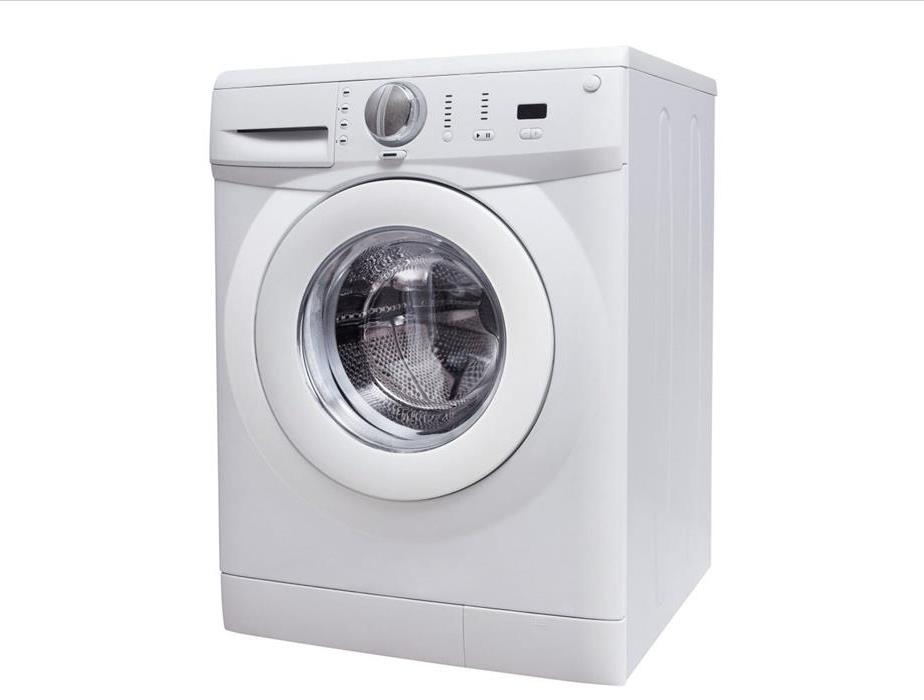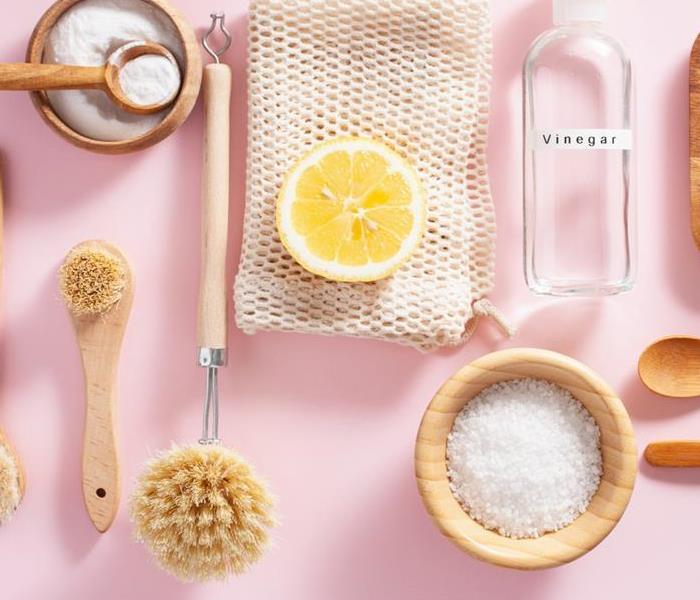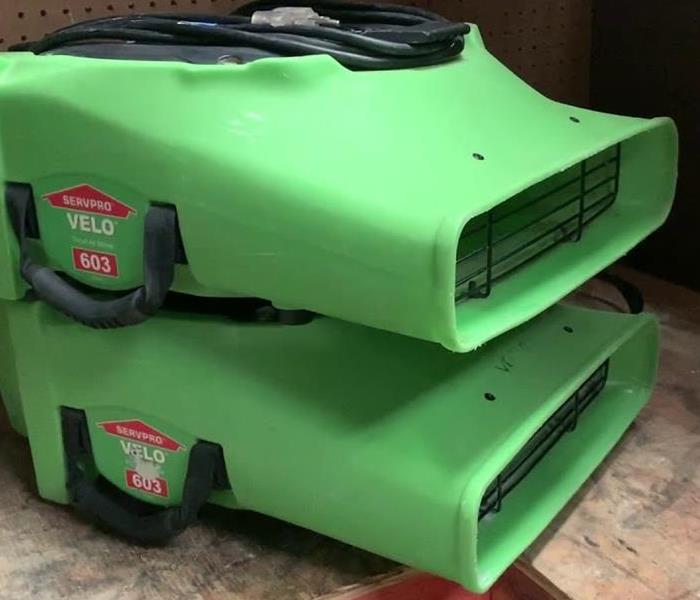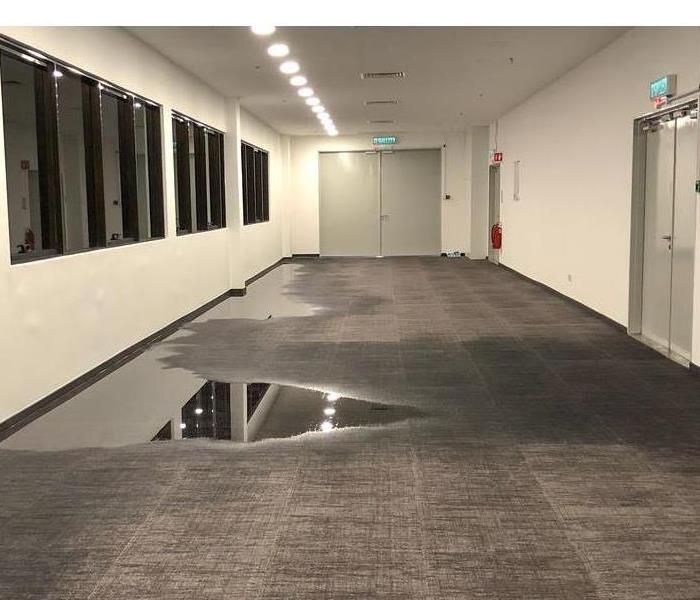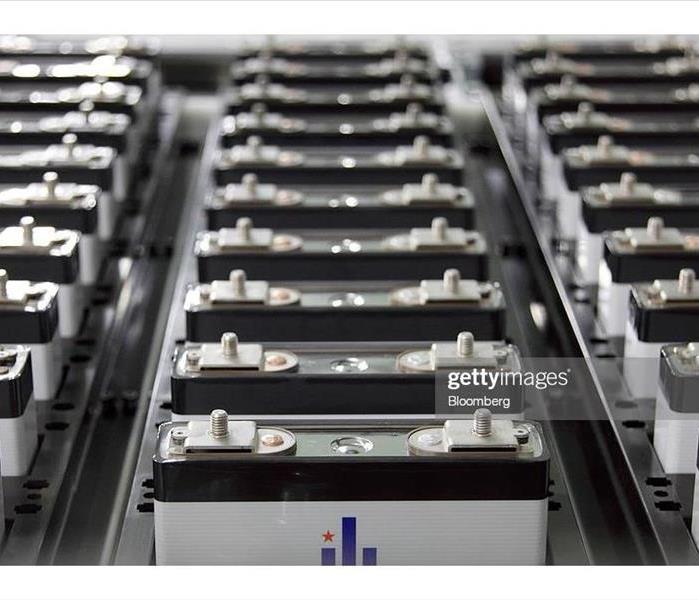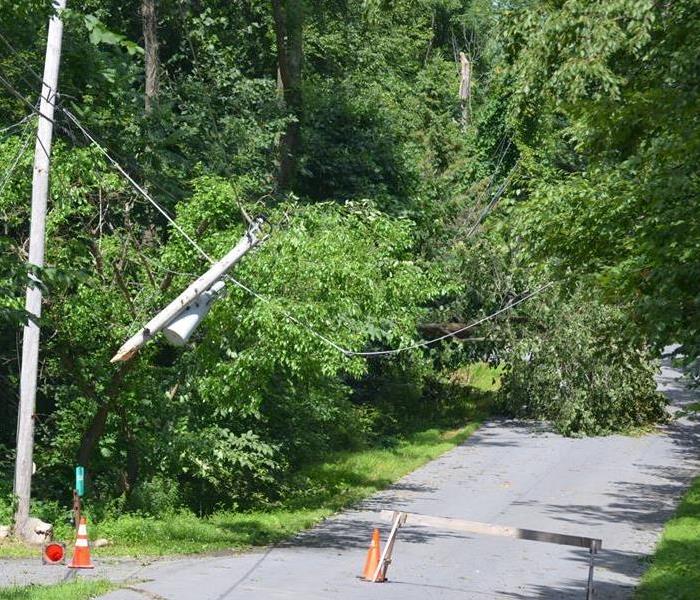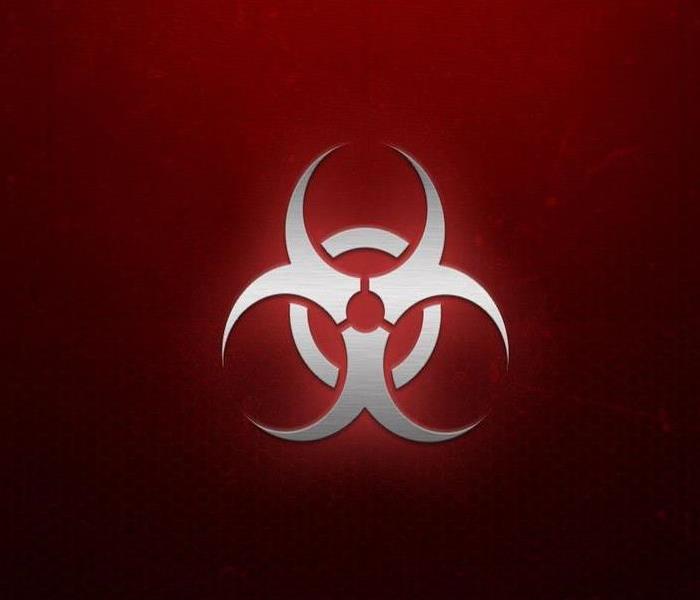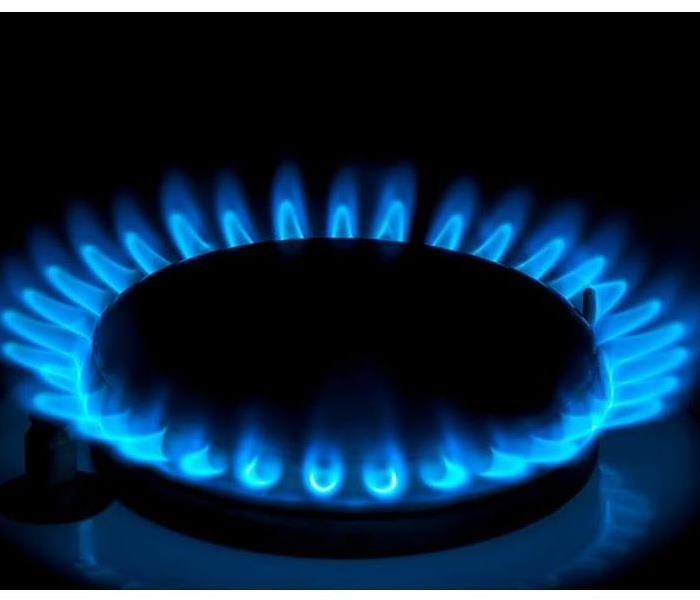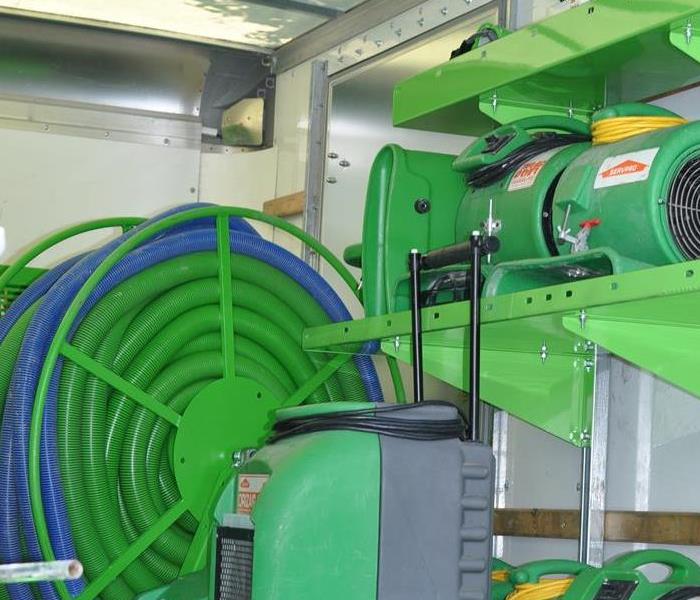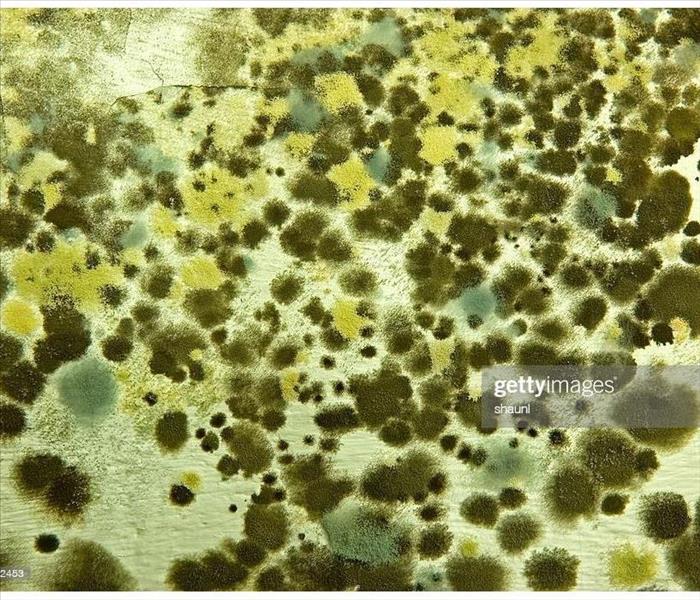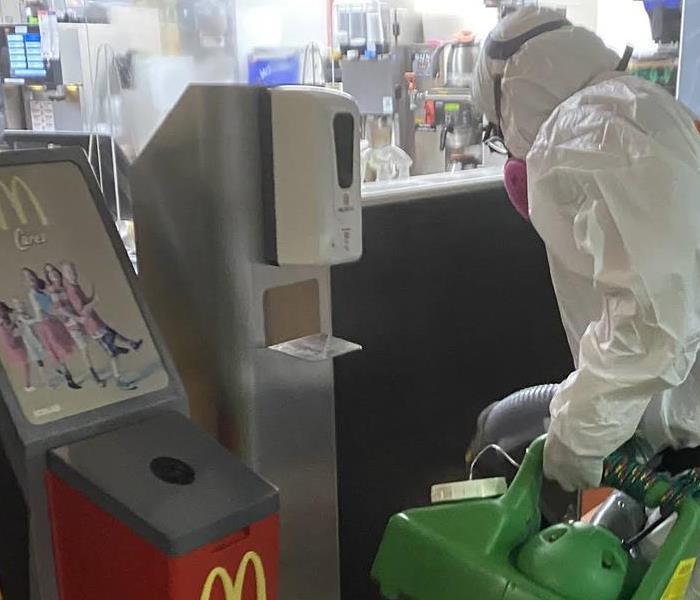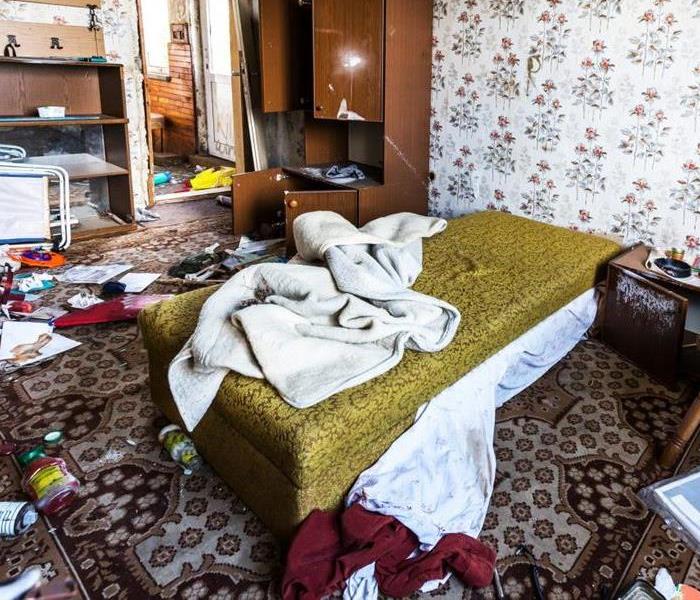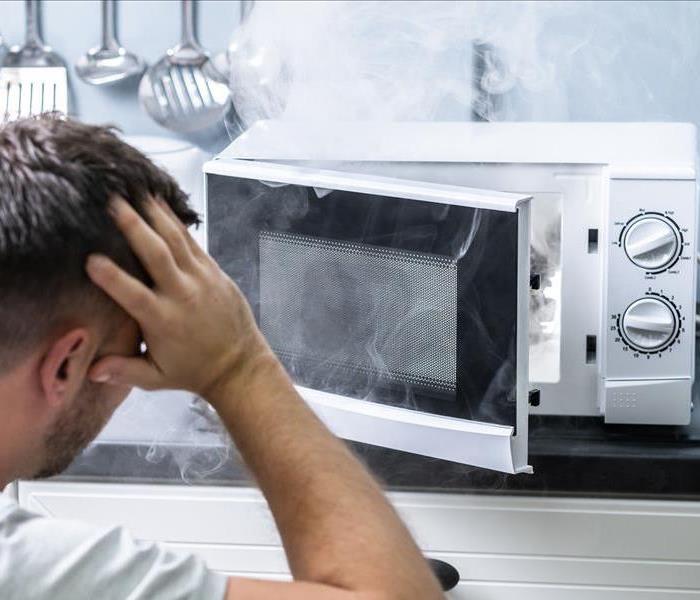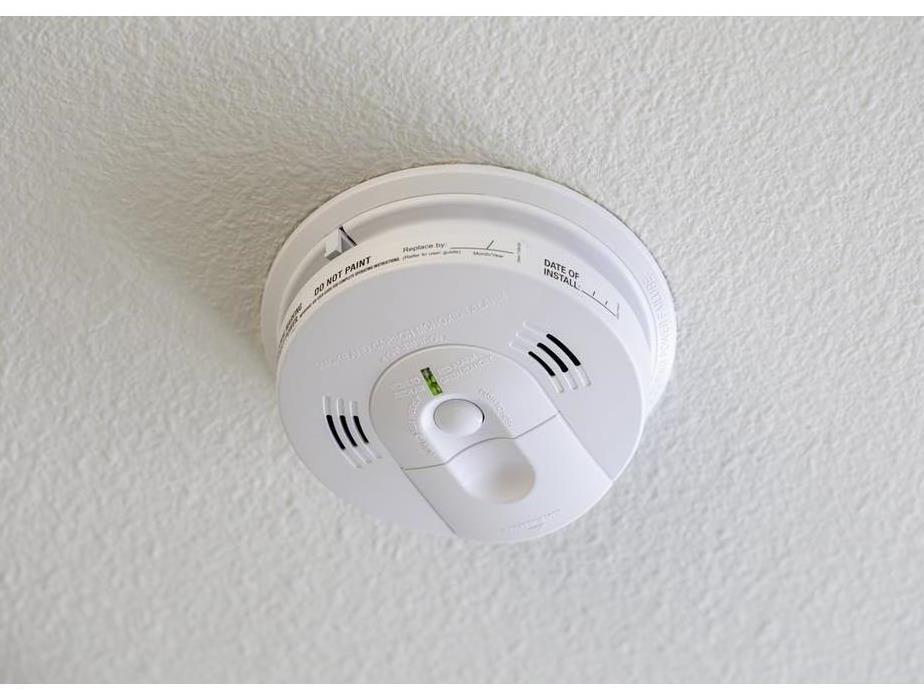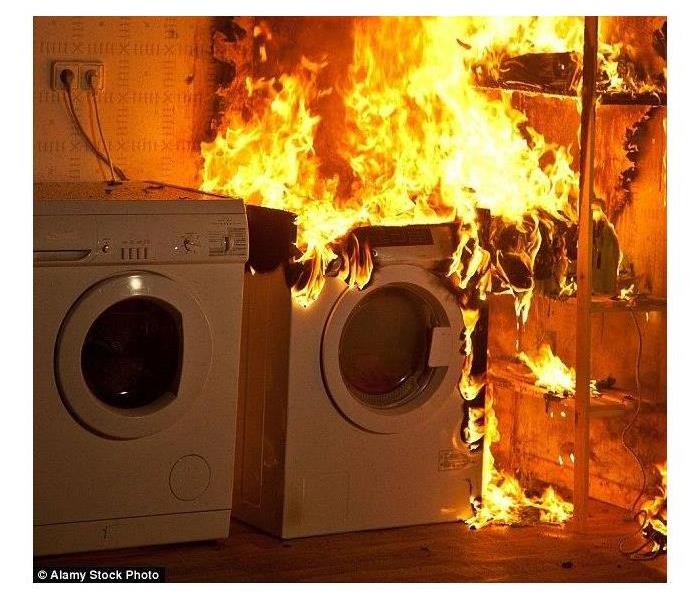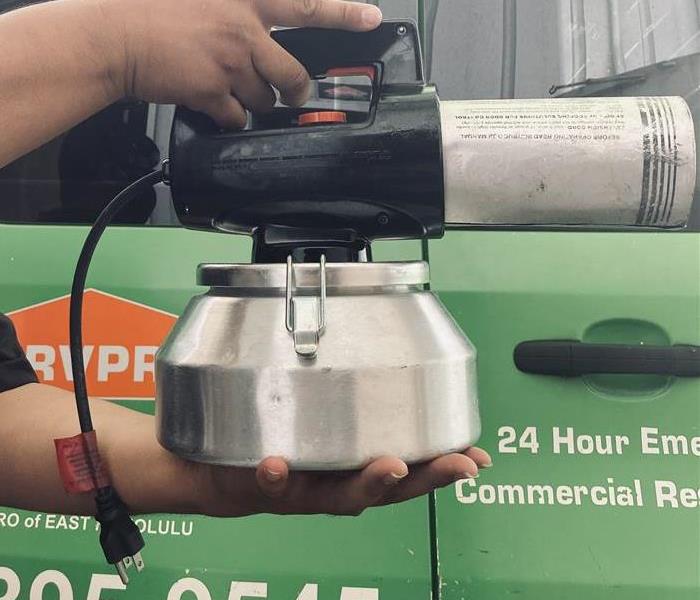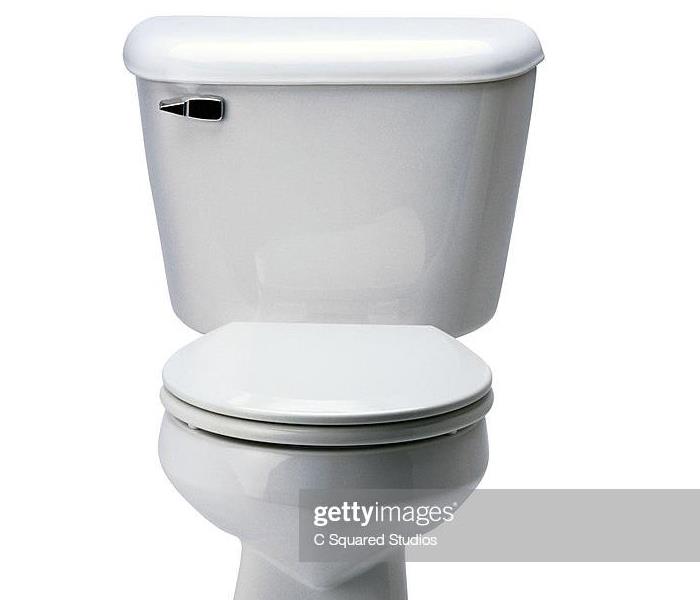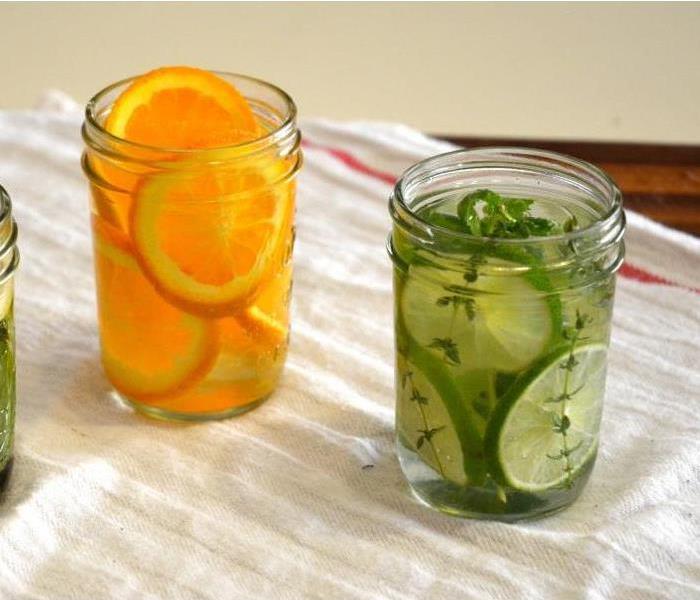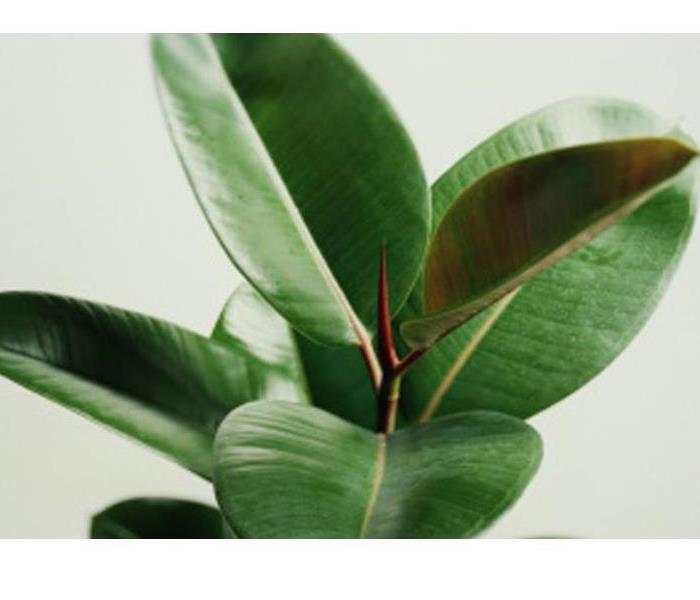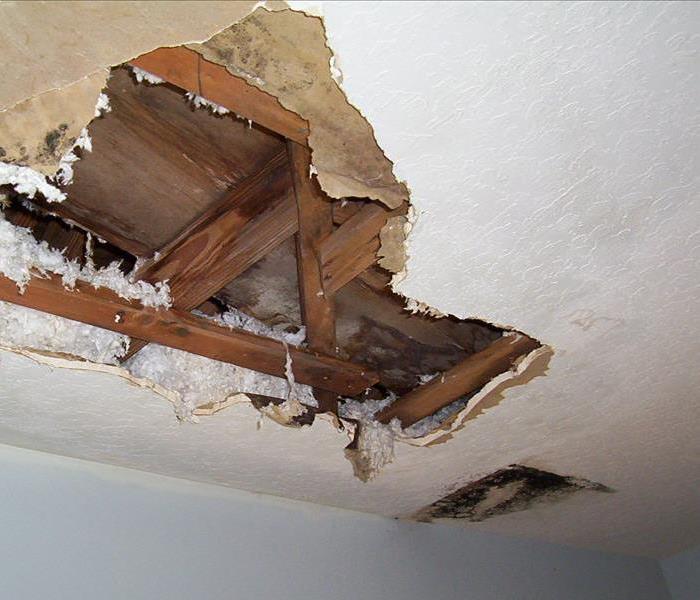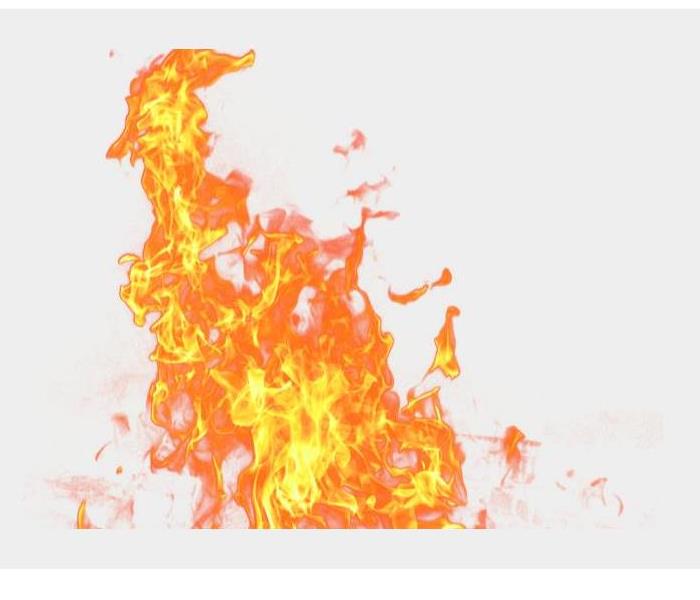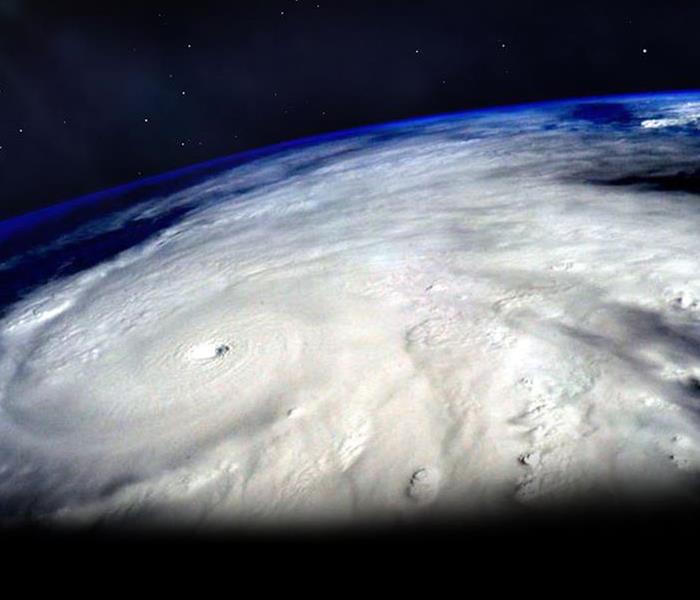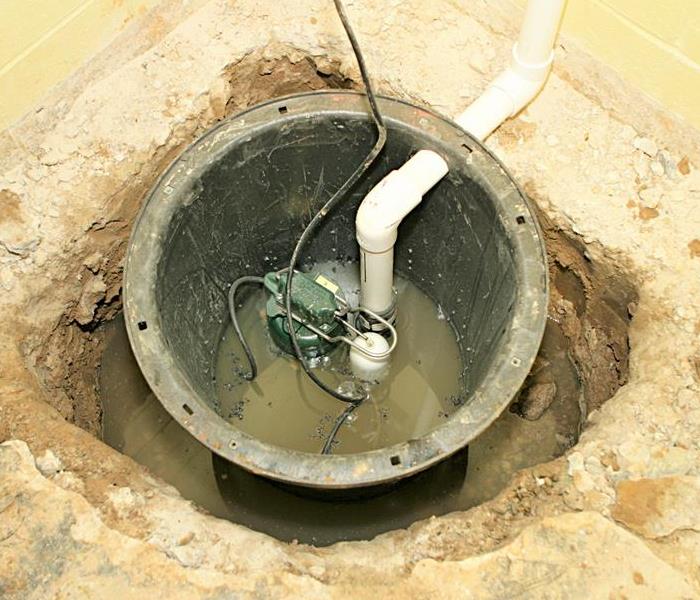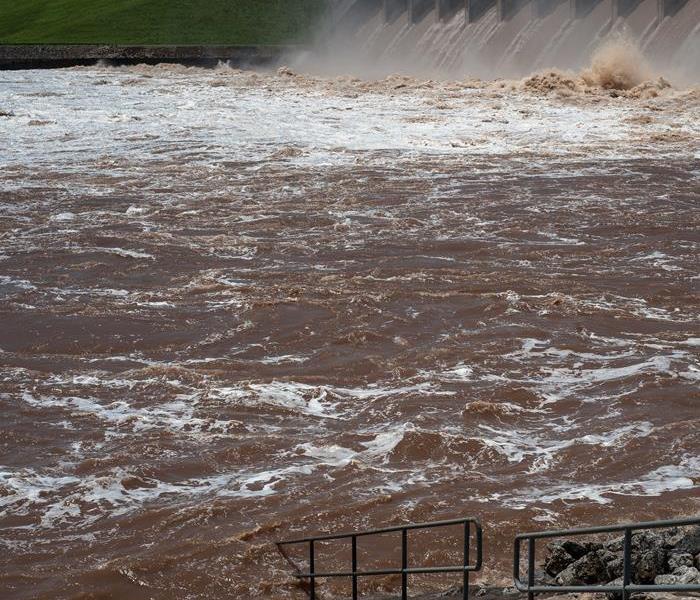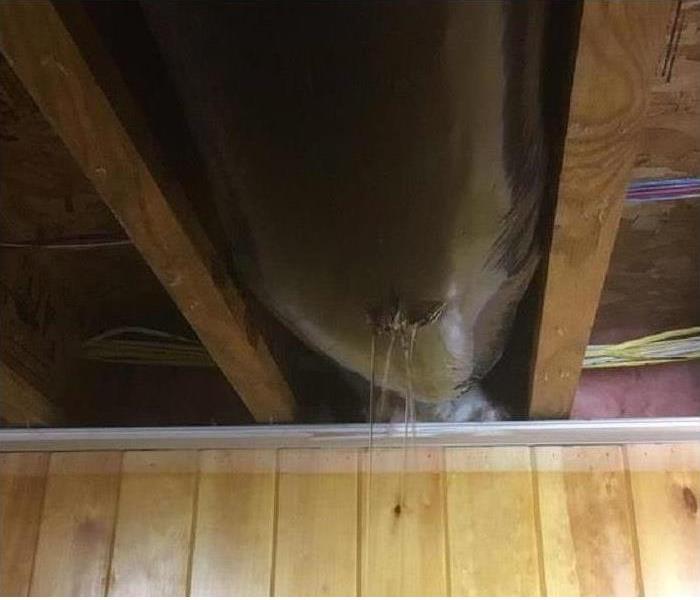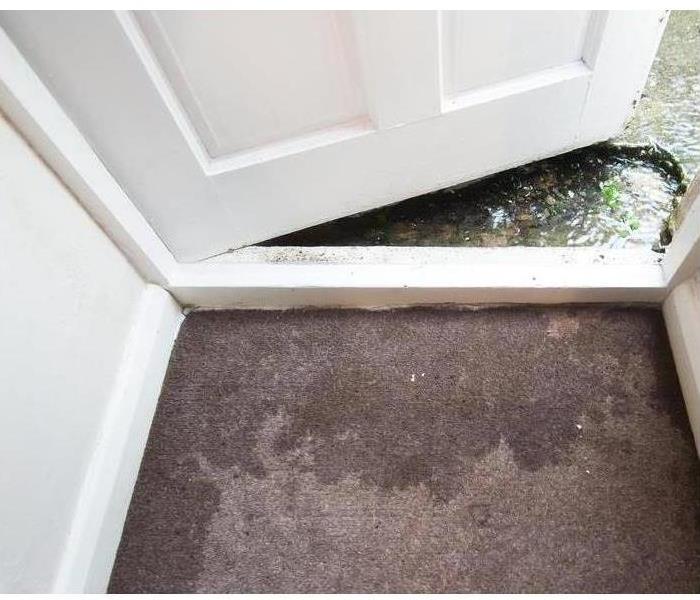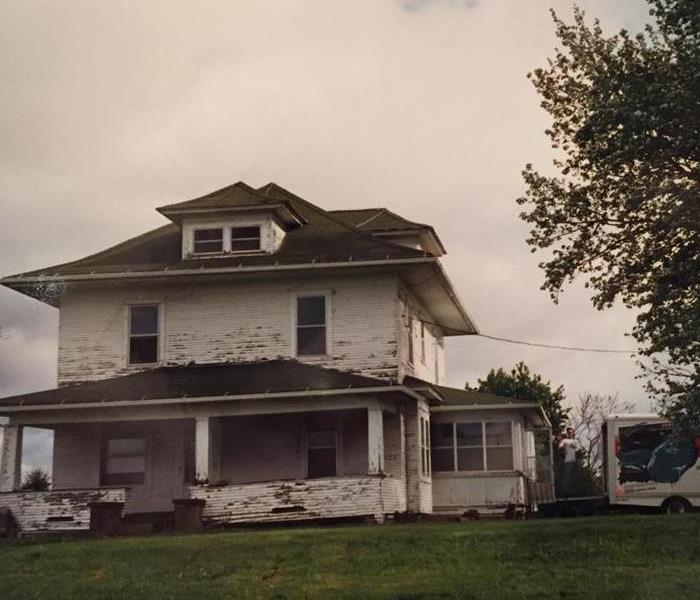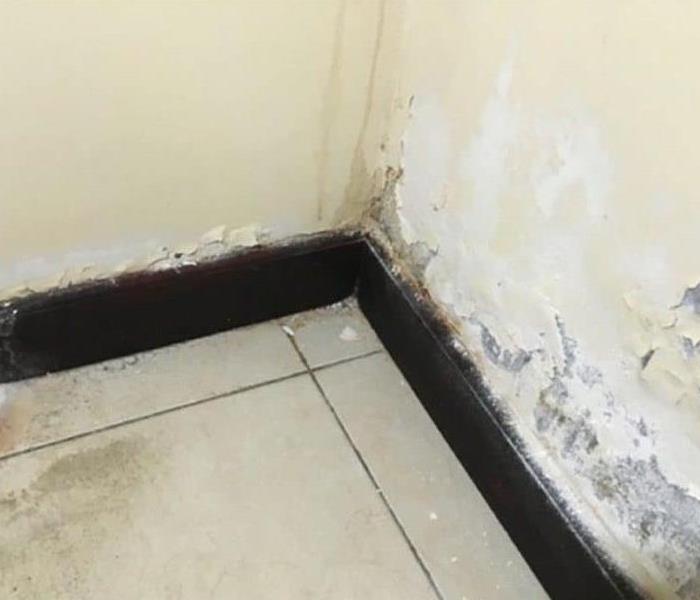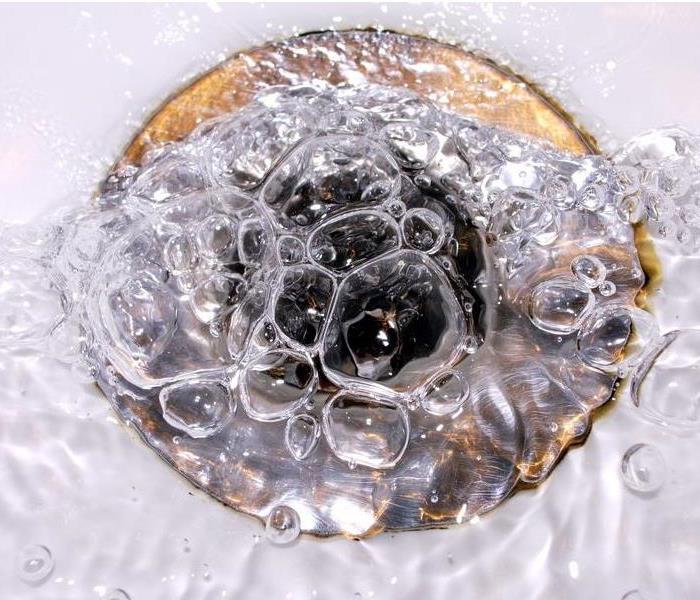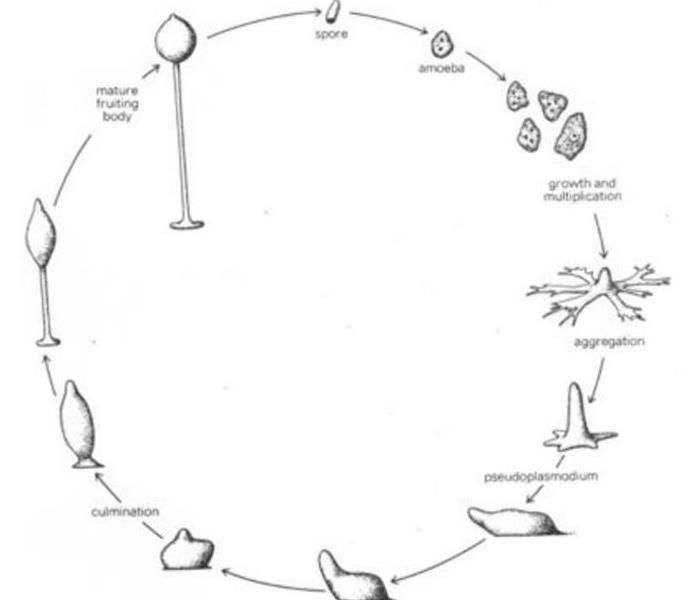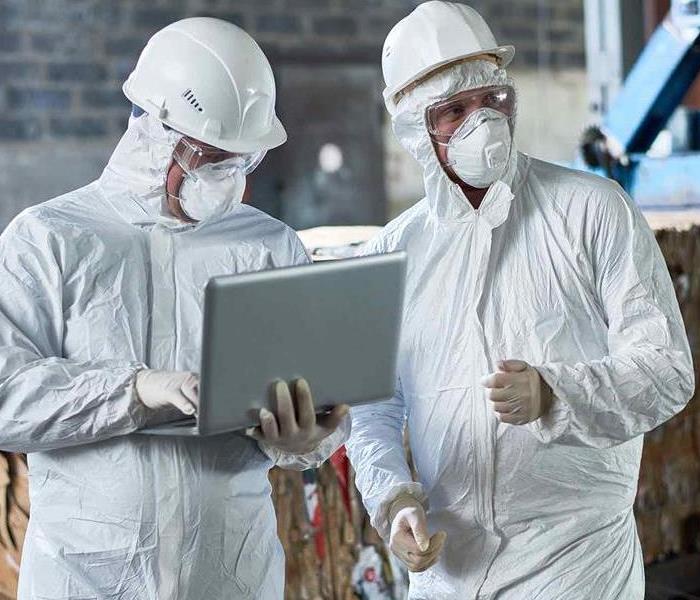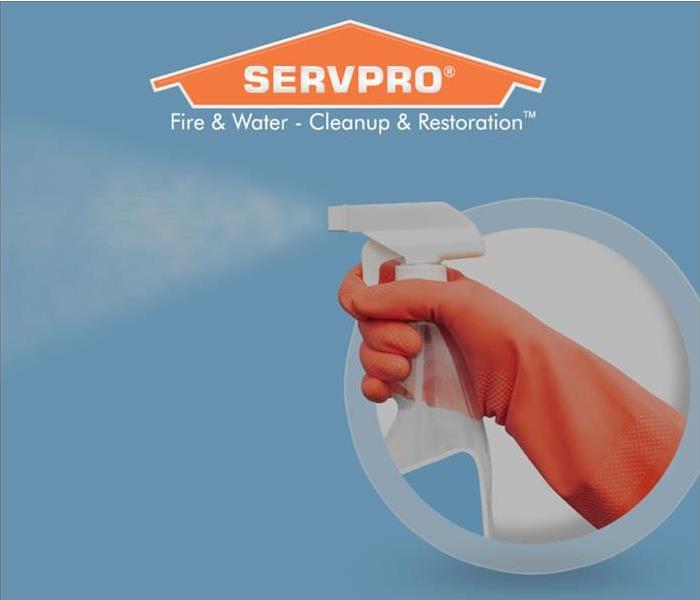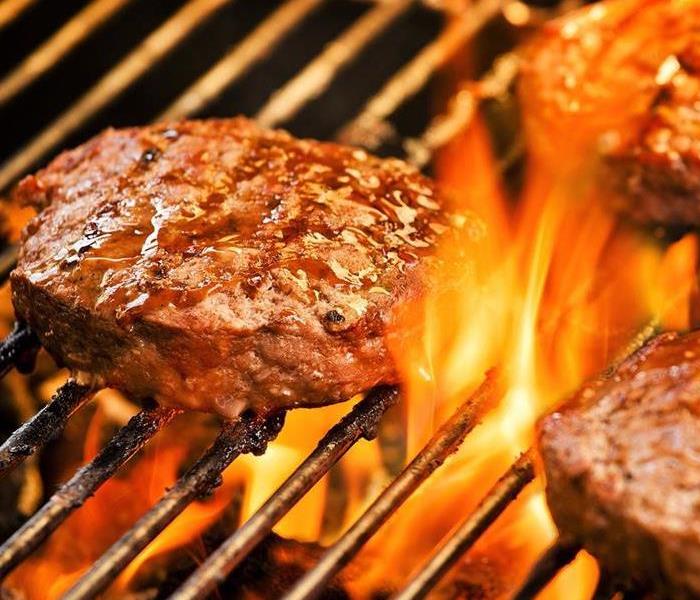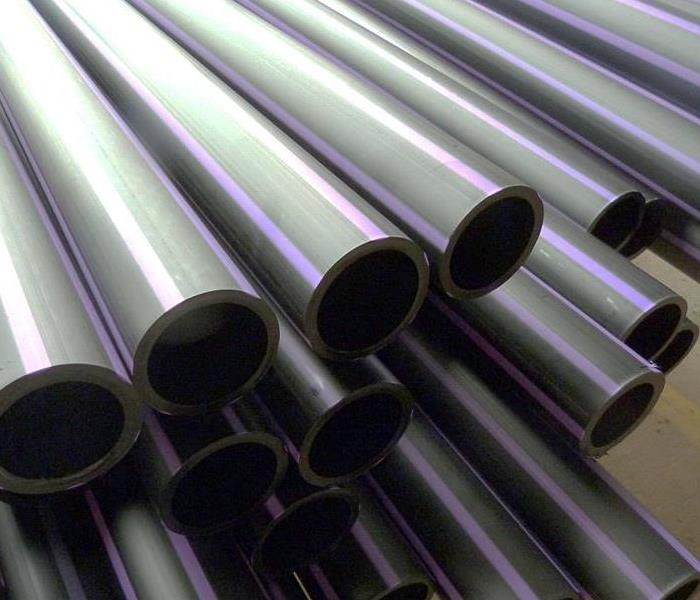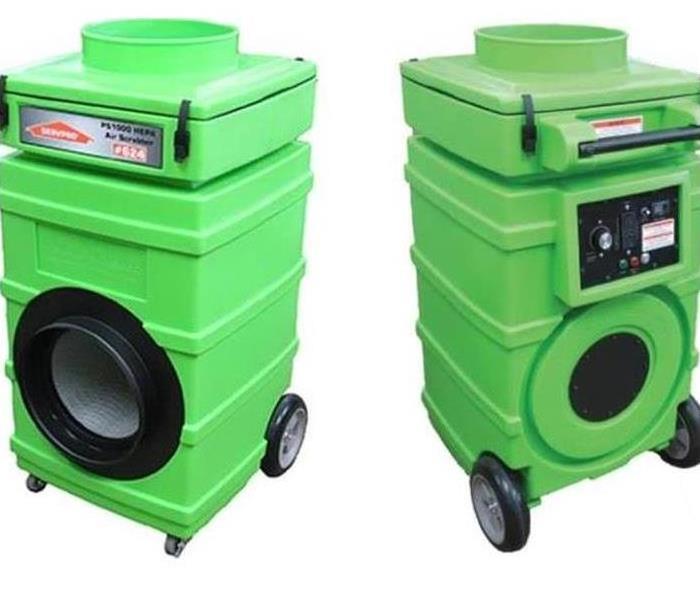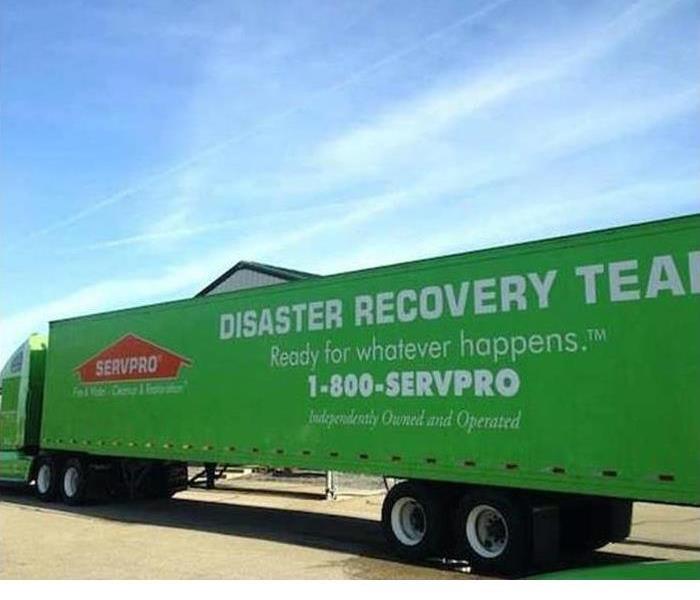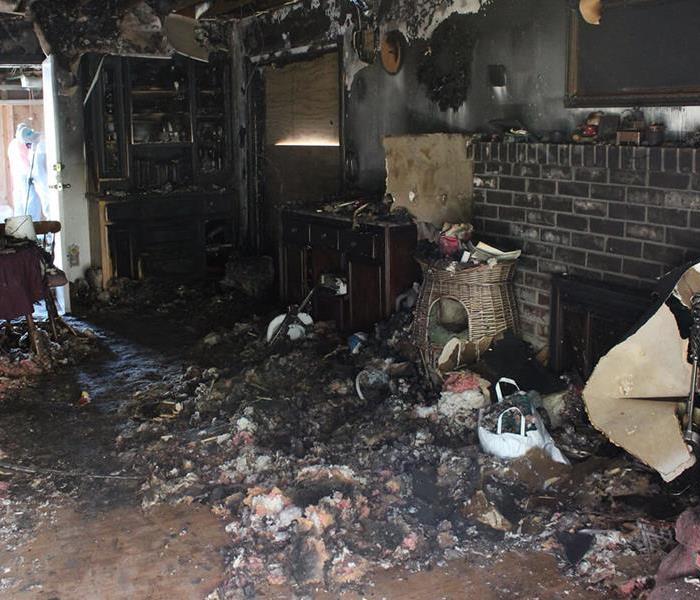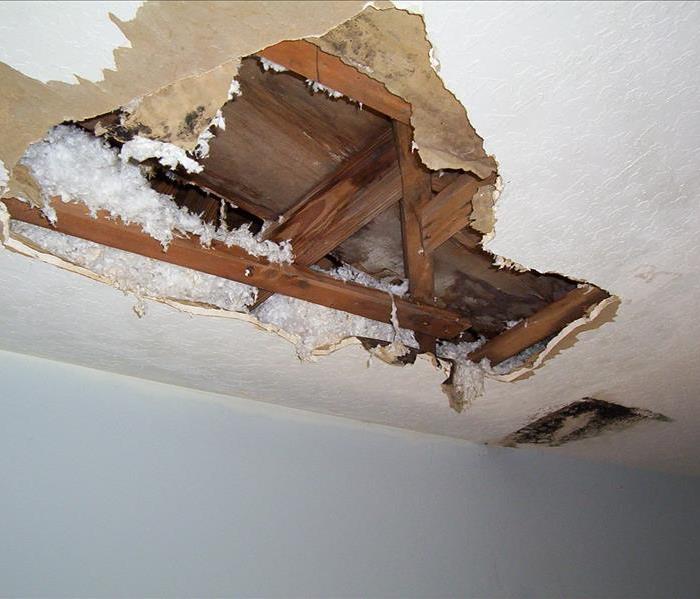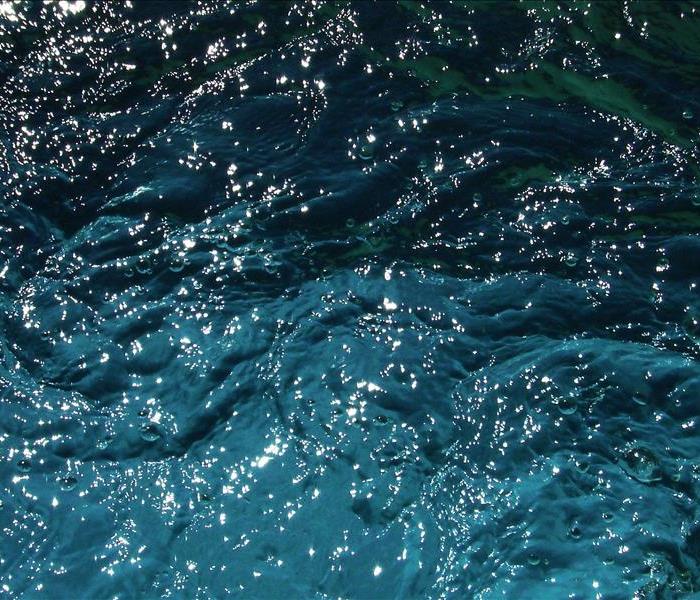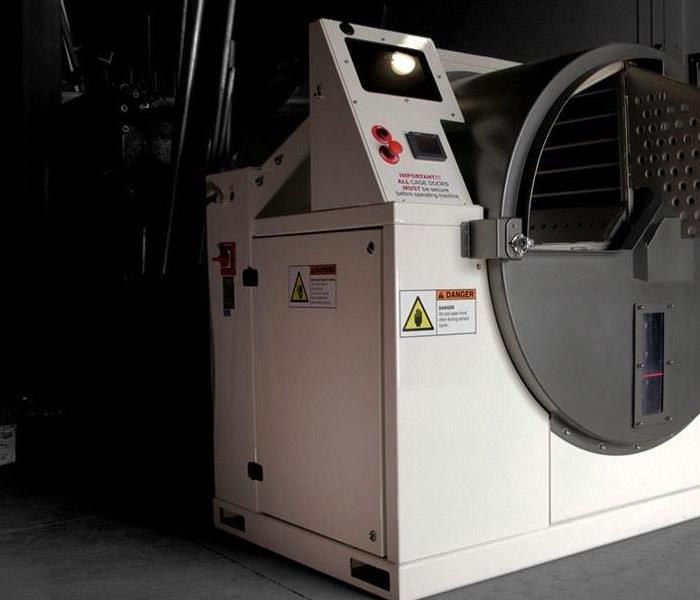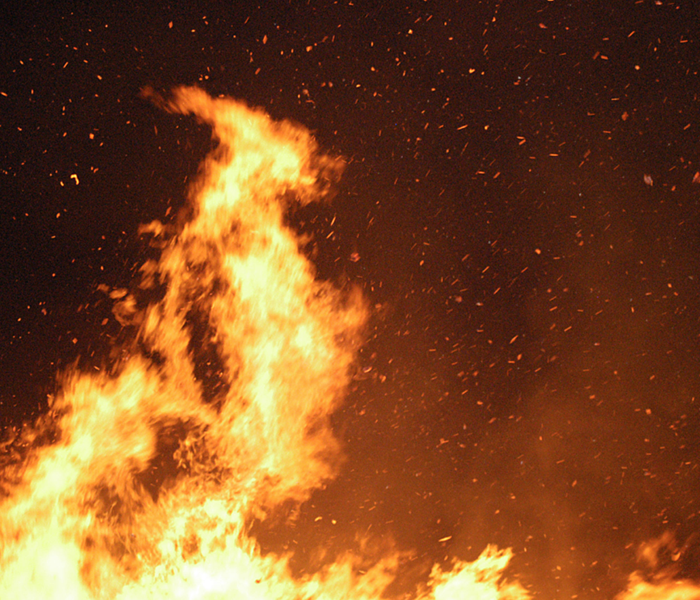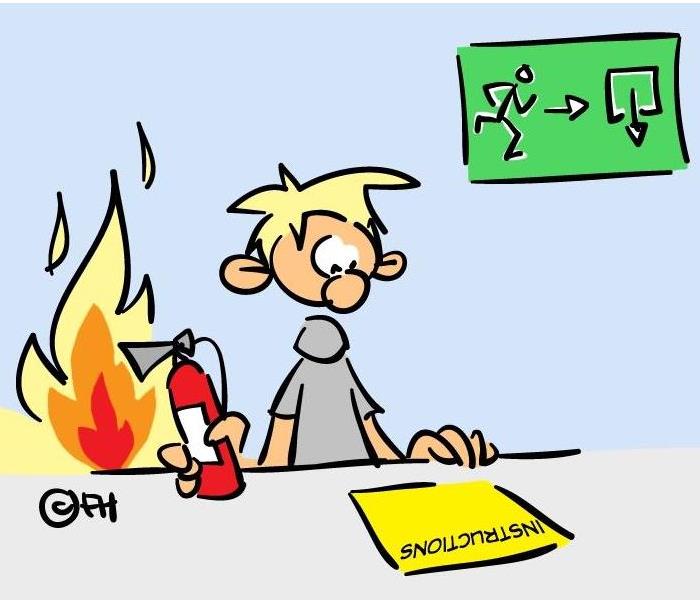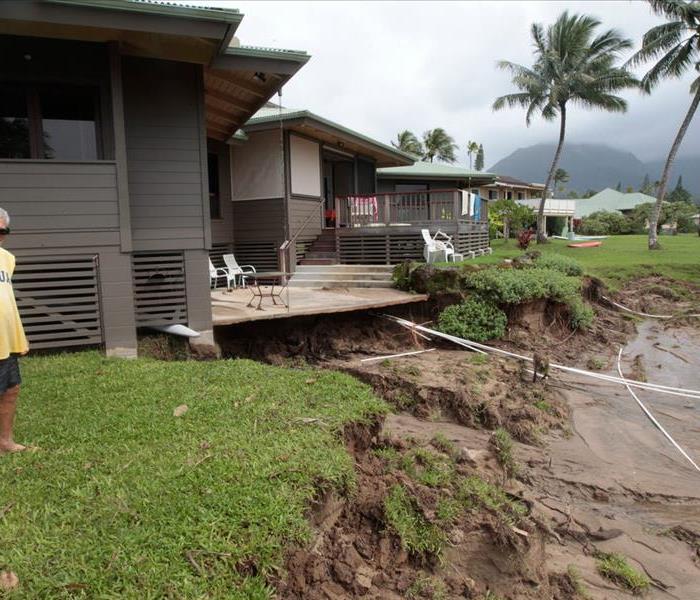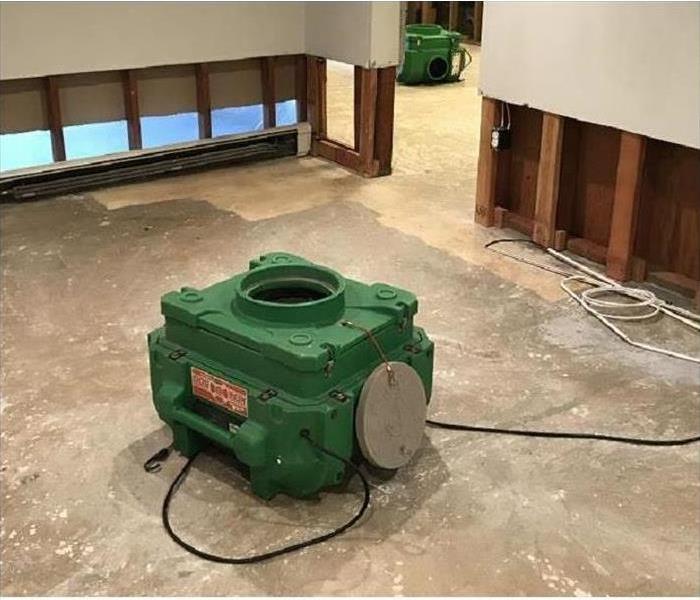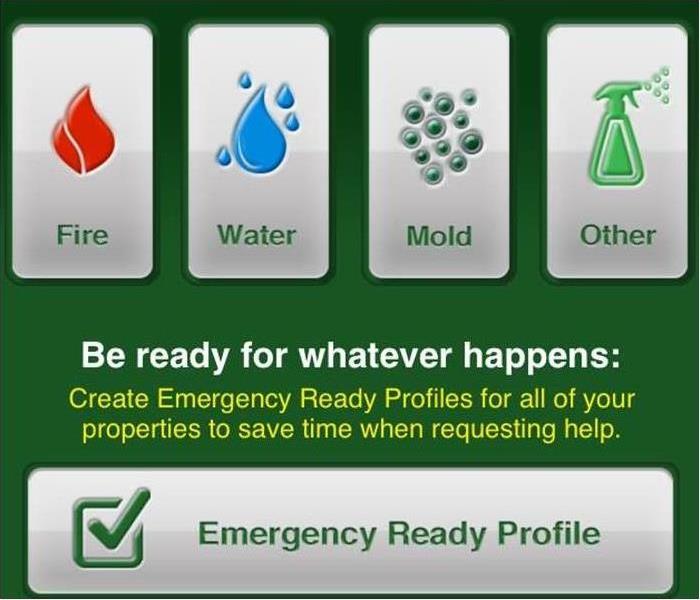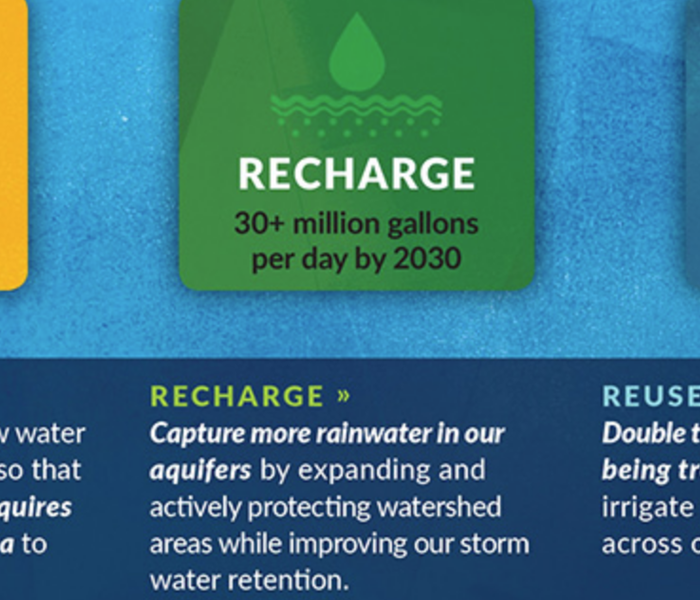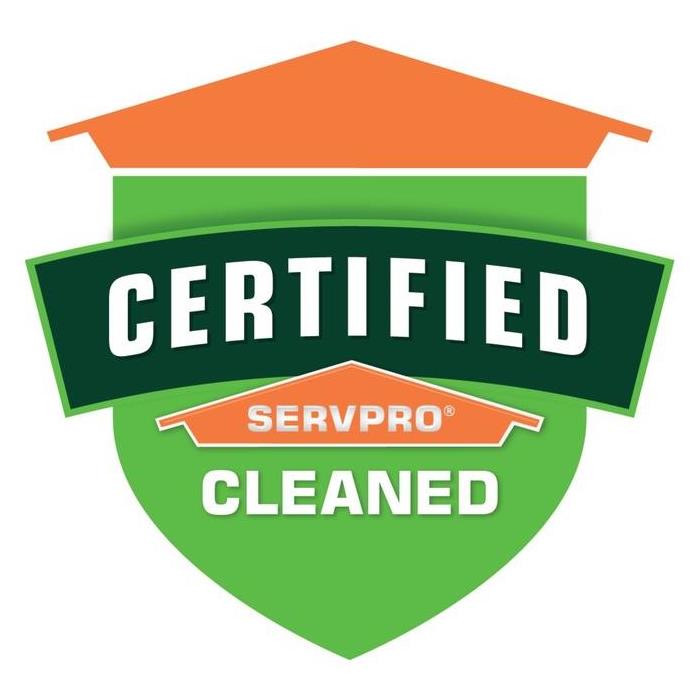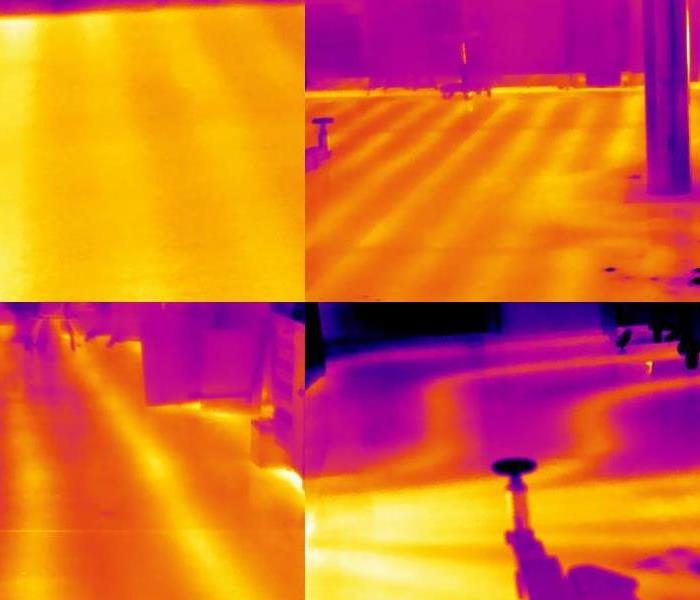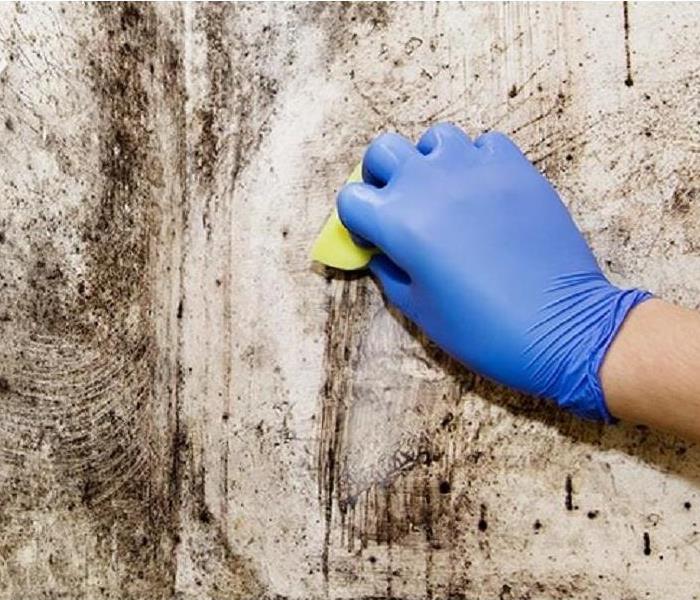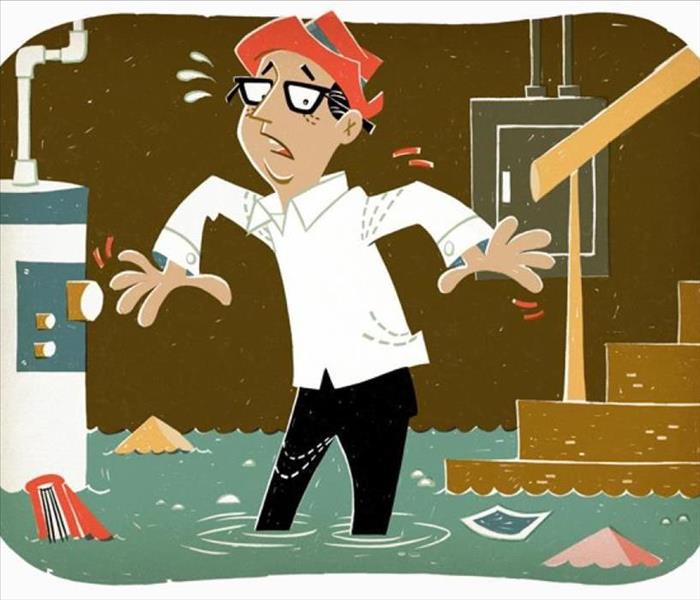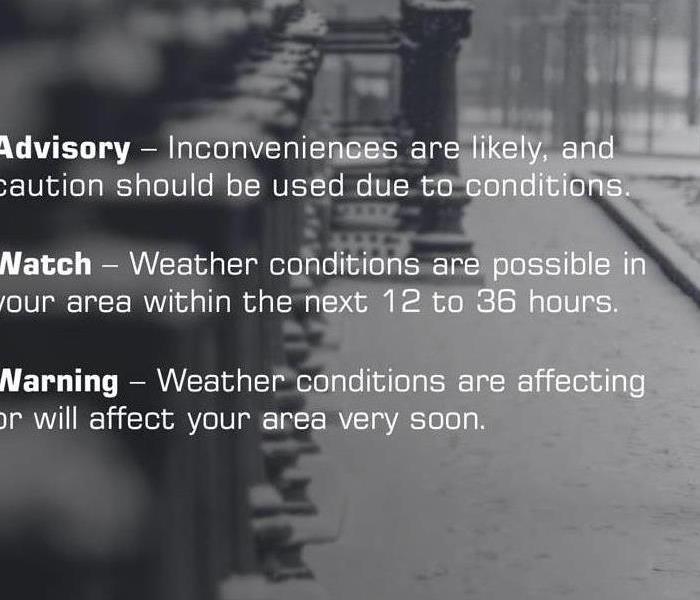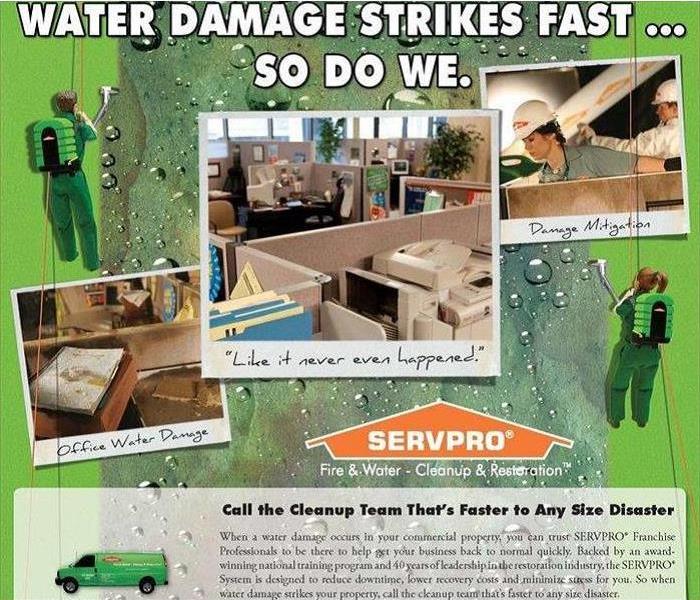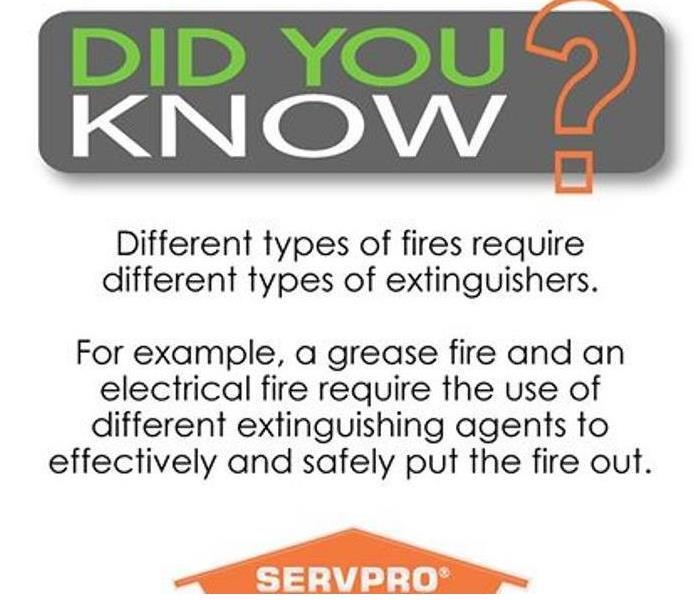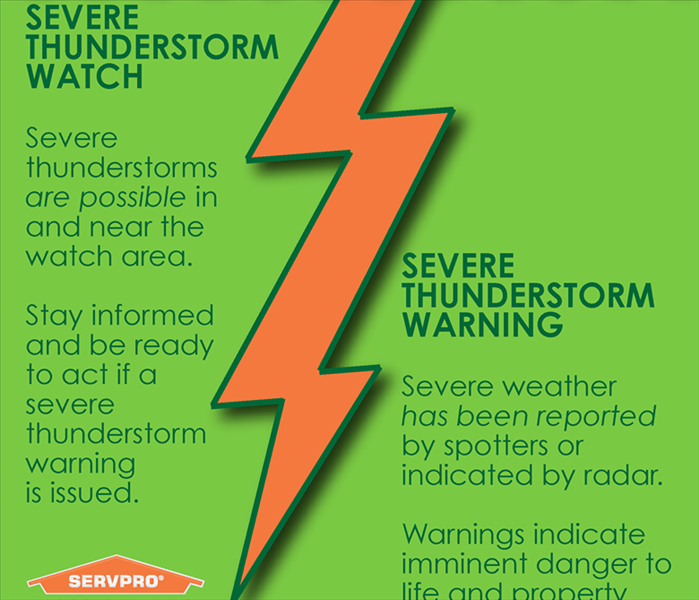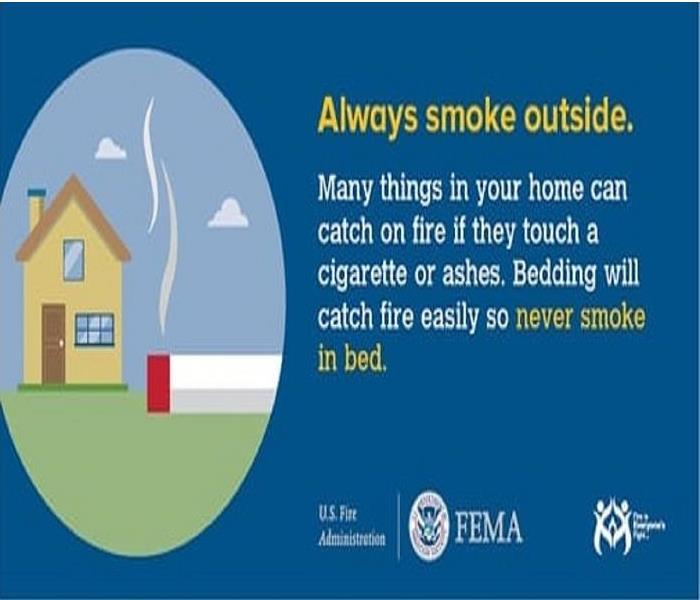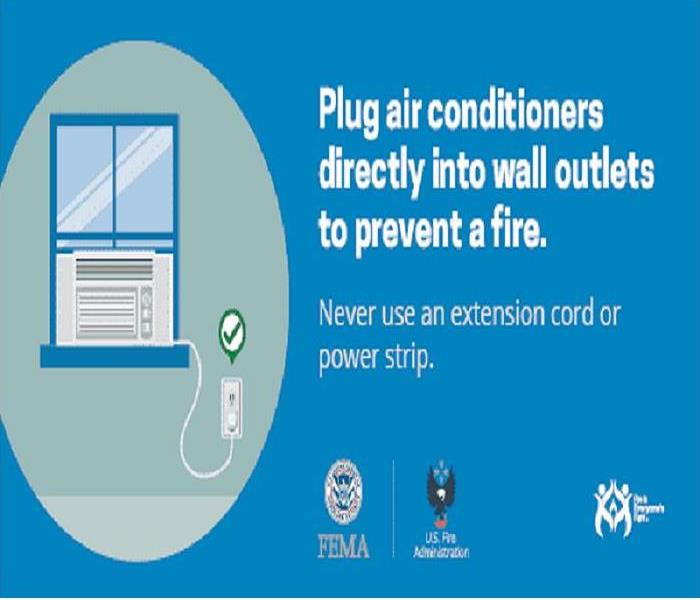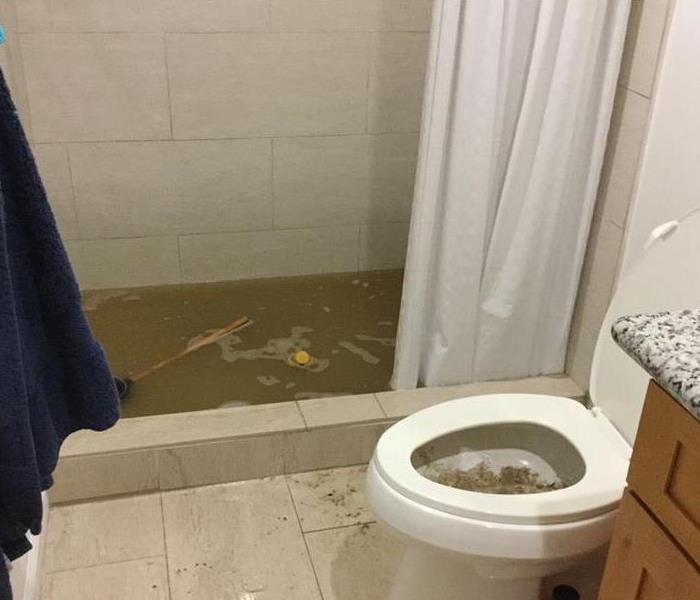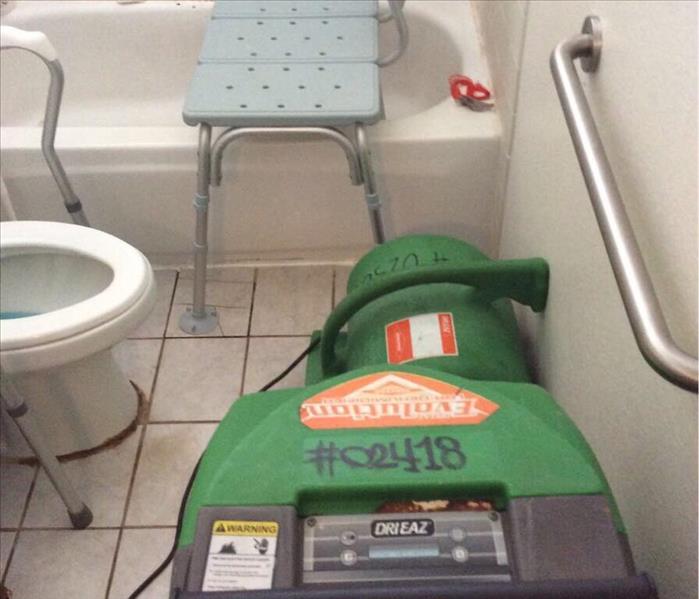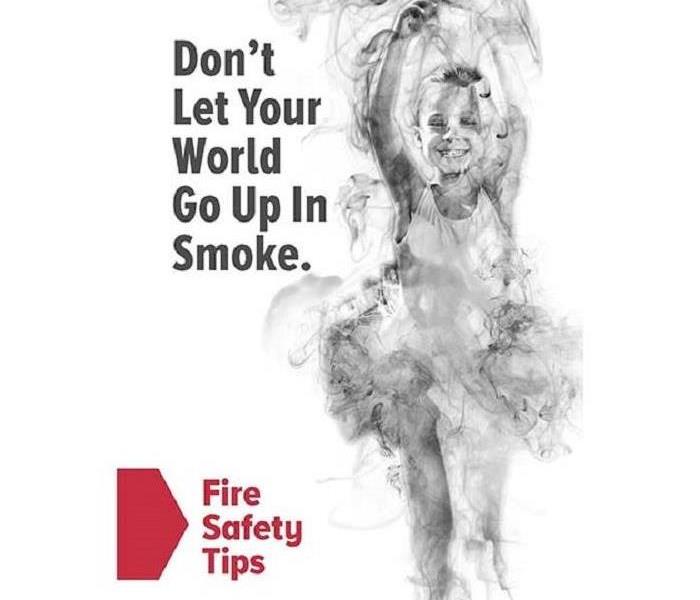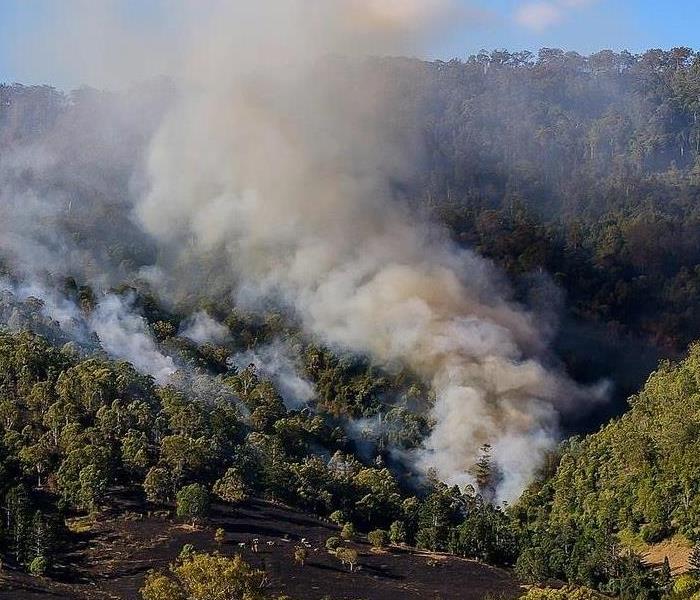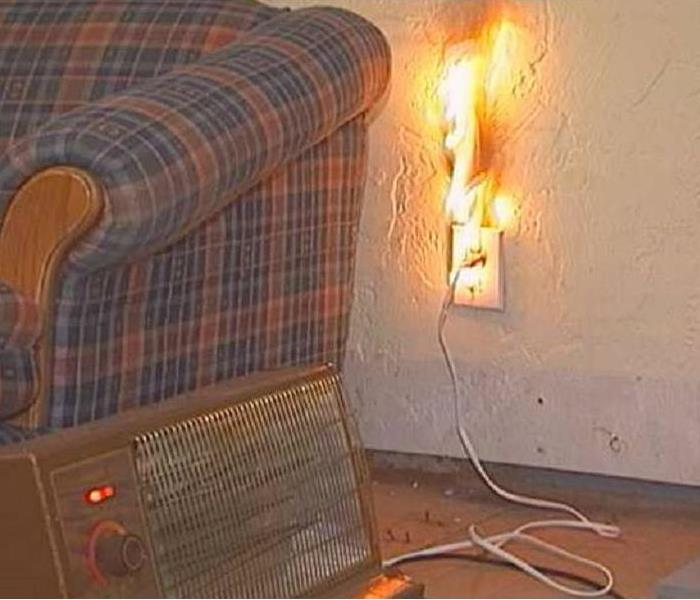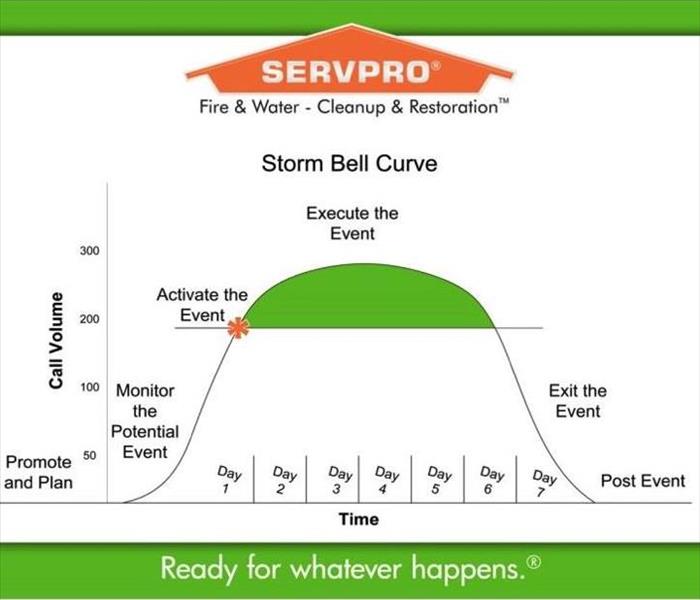Archived Blog Posts
Hidden Water Damage in Honolulu
4/1/2023 (Permalink)
SERVPRO of East Honolulu is well versed in continuously occurring water damages. There are many reasons as to why a home has water damage, this manifests in varying ways. It may not be the most noticeable, and more often than not it creeps with age.
We were called in once to inspect a home that had suspected water damage. Over the course of 10 years a hairline fissure in their copper piping caused odors and discoloration on their drywall.
Undetected water damage is quite the headache for numerous reasons, here are some signs that you may have hidden water damage:
- Peeling paint: paint can start to peel when there is an unsustainable amount of water within your drywalls.
- Drywall is like a sponge, when there is no dry surface for the paint to attach itself to then the paint starts to peel. This is a sign of major water damage, since the drywall needs to be very wet.
- Warped flooring: Water will always be looking for the lowest point of Earth- partly due to gravity and its molecular properties. Water will flow and seep into the deepest parts of your home if left unchecked. If water reaches your sub-flooring it is time to call us at SERVPRO of East Honolulu. Warping and deforming floors are the best indicators that your sub-flooring has water damage.
- This sub-flooring is where mold can grow and multiply, thus it is integral to the safety of your property for there to not be standing water underneath.
- Staining on walls or ceilings: These stains will be slightly discolored and range based on the type of water damage done.
- For instance, if there was rain and your ceiling leaks, the evidence of water damage would arise from corners of rooms, mostly the ceiling being discolored. It may also manifest as long lines of discoloration. Where pipes or streams have come across your walls and ceilings.
- Mold growth: Occasionally there could be “fuzz” on your ceiling corners which originally look like webs or dust and may be mold. Mold accrues from the sitting water damage, mold spores are microscopic and most often airborne.
- If there are discolored patches of drywall within your home that may be a good indicator that water damage has occurred.
- Malodorous smells: If you smell something earthy or a little “dank” that may also be a sign of water damage. Basements should not smell like mildew, and if they do it's a sign that there has been standing water recently.
- Any smell that seems spoiling, could be the water compromising clean building materials. And if not removed, these compromised materials can affect more housing goods.
Keep your house safe by knowing the small- creeping- signs of water damage. And if anything arises, or you seem to find them in your home… SERVPRO of East Honolulu is there for any damages. Call us at (808) 395-9545 for any concerns about these kinds of water damages and its implications to your home. We are available 24/7. "Like it never even happened."
The Cleaning Experts of East Honolulu
3/20/2023 (Permalink)
SERVPRO of East Honolulu offers a vast range of services, whether it is water remediation or a general clean for your carpets. We host numerous services due to the expertise, advanced cleaning agents, and ample equipment. Serving commercial and residential properties alike in the east Honolulu area.
Our cleaning services are needed now more than ever because of the COVID-19 Pandemic. We are so grateful for the kokua of the people in the medical field allowing us to stay in business as we follow CDC regulations throughout our whole process. With our knowledge on chemicals, our technicians have been needed for the experience that is beyond the scope of a janitor’s day to day clean.
We have many ways to clean for COVID-19 as well as thoroughly disinfect your commercial or residential property. There are a few places in which we take special care in ensuring it is fully disinfected, these areas are high-touch surfaces. As deemed by the Center of Disease Control these surfaces are more prone to bacteria and viral contaminants, these are:
- Tabletops
- Light Switches
- Phones
- Counters
- Bathroom Fixtures
- Tablets
- Toilets
- Tables
Cleaning these common surfaces is crucial for keeping your workers and ohana safe. As people pass through and touch these areas frequently.
We have also cleaned an array of spaces with our EPA safe products. Like
- Bathrooms
- School Classrooms
- Dentist Offices
- Sale Counters
- Playgrounds
- Kitchens
- Fitness equipment.
We can also sanitize these surfaces from COVID19 in the most efficient way using a thermal fogger and our EPA approved SERVPROxide: a powerful cleaning agent that is safe to stay on your surfaces.
These kill pathogens and viral organisms within minutes, sterilizing all surfaces. SERVPROxide is a hospital grade cleaning detergent safe for all living organisms.
SERVPRO technicians have also cleaned airport restaurants, after one of the workers tested positive for COVID-19. We came in using a thermal fogger to spray every surface possible, making sure that each crevice was covered with smoke.
This smoke contains agents that disinfect anything it touches. As a smoke it cleanses all areas being touched by it, including soft goods that can't be traditionally sanitized without a lot of work.
We aim to uphold sanitation standards from the IICRC, with microfiber cloths, spraying agents, and a thorough finish. You can trust us with all types of building materials, vinyl floorings, metal shelving, marble countertops. We use safety measures and protective practices to make it… "Like it never even happened."
For any questions, comments or concerns contact us (808)395-9545. We are proudly locally owned and operated business in east Honolulu.
SERVPRO of East Honolulu’s Timeline
3/15/2023 (Permalink)
We take pride in our efficient and seamless process we employ for each and every new damage. Our customers appreciate our straight-forward methods, because time is of the essence once disaster strikes your commercial property!
This is the essential timeline that happens once we get a claim or a call
Within the hour: After receiving the claim or the call we contact the insured and/or the residential tenants to schedule the initial assessment. This is when we gather contact information, if there is still water, what materials are damaged...etc
The Initial Assessment: The initial canvas of your commercial property occurs, taking pictures of the damaged structures, gaining measurements of the areas that need demolition, and simply inspecting the nature of your damage.
Insurance Pause: Within the next few days an estimate will be drafted up by one of our technicians. This estimate will be sent to your insurance companies, and we will proceed with a treatment.
Cleaning, Demo: When everything is approved by insurance, and the restoration process is drafted up. Our technicians will swing by the commercial property to do a controlled demolition or a thorough cleaning process. Regardless of which route one pursues this step is essentially removing the remnants of damage incurred.
Restoration: After our technicians have finished prepping for the other contractors who restore your property. Whether that is fixing parts of drywall or replacing tile, it takes 2-3 weeks.
Final Moments: This is when we do a final inspection, just overall inspecting the progression of restoration. Retrieving materials or tools left on site, adjusting your home to its pre-damage condition. Whether that is moving your couch, or unwrapping furniture.
SERVPRO of East Honolulu strives to be quick and efficient after all our motto is… "Like it never even happened." Regardless of the natural disaster, you are safe in our care and we are prepared!! Taking pride in our company, means we stand with values that you can see in the field. Call us (808)395-9545.
Escape Plan Basics
3/3/2023 (Permalink)
Because fire is a risk in every building — whether you sleep, study, or work there — you should always have an escape plan. You may need to escape within a few minutes of a fire’s start, so your safe exit depends on immediate warning from smoke alarms and advance planning of escape routes.
Escape Plan Basics
- Include two ways out of every room in all escape plans
- Designate a location to meet outside the building
- Verify that smoke alarms are installed to provide early detection and warning so you’ll have enough time to execute your escape plan
- Make sure doors located in your path of travel can be opened from the inside under all lighting conditions
- Verify that doors located in your path of travel Do not require a key to open from the inside
- Take note of whether any disabled or elderly residents will require evacuation assistance
- Conduct a roll call to verify everyone has escaped the building
- Remain outside until notified by the fire department that it is safe to re-enter the building
- Practice, practice, practice your plan!
If your secondary escape route is a window…
- Make sure the window can be opened from the inside
- Assure the window is large enough for you to pass through the opening
- Verify the windowsill is low enough to allow you to crawl through the opening
- Make sure any security bars can be opened from the inside without the use of a key, and that you can open them under all lighting conditions
- Determine how you will escape if the window is above the first floor: will you purchase a rope ladder or other emergency escape device, or will you wait for the fire department to arrive and evacuate you?
- Make sure sloping terrain, the location of the window, or other factors will not prevent the window from being used as a secondary escape route
SEVERE WEATHER SAFETY GUIDELINES: HOME
3/3/2023 (Permalink)
By following these simple guidelines, you can protect yourself and your family from nature's most violent storm.
The most important things to remember are:
- GET IN - If you are outside, get inside. If you're already inside, get as far into the middle of the building as possible.
- GET DOWN - Get underground if possible. If you cannot, go to the lowest floor possible.
- COVER UP - Flying and falling debris are a storm's number one killer. Use pillows, blankets, coats, helmets, etc to cover up and protect your head and body from flying debris.
HOME
Your plan at home should be known by everyone in the home and practiced at least twice each year. Children who may be at home alone should know what to do and where to go even if no adults are there.
When selecting your shelter area, remember that your goals should be:
- Get as low as possible - completely underground is best.
- Put as many barriers between you and the outside as possible.
It is not the wind inside - it's the flying debris that's in the wind. Items can fly through the air (broken glass, etc) or fall down (could range from small objects to objects the size and weight of cars). A basement is also a good shelter in most cases. If your basement is not totally underground, or has outside doors or windows, stay as far away from them as possible. Items from above could fall into the basement, so it's a good idea to get under a stairwell or a piece of sturdy furniture. If possible, avoid seeking shelter underneath heavy objects on the floor above. Use coverings (pillows, blankets, sleeping bags, coats, etc) and helmets to shield your head and body and to protect yourself from flying debris.
If No Underground or Reinforced Shelter is Available
If you're like most people, you don't have an underground shelter. In this case, you need to find a location that is:
- As close to the ground as possible
- As far inside the building as possible
- Away from doors, windows and outside walls
- In as small a room as possible
Here are Some Ideas
- Bathrooms
Bathrooms MAY be a good shelter, provided they are not along an outside wall and have no windows. Contrary to popular belief, there is nothing magically safe about getting in a bathtub with a mattress. In some cases, this might be a great shelter. However, it depends on where your bathroom is. If your bathroom has windows and is along an outside wall, it's probably not the best shelter.
Bathrooms have proven to be adequate shelters in many cases for a couple of reasons. First, bathrooms are typically small rooms with no windows in the middle of a building. Secondly, it is thought that the plumbing within the walls of a bathroom helps to add some structural strength to the room.
- Closets
A small interior closet might be a shelter. Again, the closet should be as deep inside the building as possible, with no outside walls, doors or windows. Be sure to close the door and cover up.
- Hallways
If a hallway is your shelter area, be sure to shut all doors. Again, the goal is to create as many barriers as possible between you and the flying debris. To be an effective shelter, a hallway should as be far inside the building as possible and should not have any openings to the outside (windows and doors).
- Under Stairs
The space underneath a stairwell could be used as a shelter.
SEVERE WEATHER SAFETY GUIDELINES: ROAD
3/3/2023 (Permalink)
How to handle severe weather situations on the road is detailed below.
Being In a Vehicle
Vehicles - cars, trucks, sport utility vehicles, RVs, 18-wheelers, boats, trains, planes, etc. - are terrible places to be when a severe thunderstorm threatens. Fortunately, these situations can be avoided most of the time by being ALERT to the possibility of severe storms and tornadoes.
All types of vehicles can be blown over, rolled, crushed, lifted or otherwise destroyed by even a weak tornado. People have been hurt or killed when large trees crushed their cars. Below are some safety tips.
- Consider delaying your trip if severe thunderstorms are in the area or along your path of travel.
- Monitor television, radio, NOAA weather radio, and the internet for storm location information.
- Be familiar with the area where you're traveling.
- If you're in your car, find a station broadcasting weather information. Some radio stations will interrupt programming to broadcast warnings and other information. Search for a station with local weather information and listen for details. A battery-operated weather radio is essential for travelers.
- Wind
Severe thunderstorms can produce devastating straight-line winds, as strong, or even stronger than most tornadoes. Any vehicle may be overturned by severe thunderstorm winds. Get off the road, if possible, and find a sturdy building to take shelter in.Severe thunderstorms contain deadly and destructive elements that can threaten your life in your car. - Hail
Severe thunderstorms can produce hail as big as baseballs or softballs. These chunks of ice, falling at over 100 mph from a severe thunderstorm, will break car windshields and dent vehicles bodies. Get off the roadway, if possible, and find shelter underneath an awning, a carwash or other structure. Abandon your vehicle, if possible, and get into a sturdy structure. Do not park underneath highway overpasses or bridges. You could cause a deadly traffic jam, preventing others from reaching safe shelter and blocking emergency vehicles. - Heavy Rain & Flooding
Even non-severe thunderstorms can produce excessive rainfall in a very short period of time that can flood roadways and low water crossings. Avoid areas where water is covering the roads - even familiar ones.
Every situation is different
The worst-case scenario for motorists would be to be trapped in your vehicle on the road with no escape possible. This scenario could occur in more densely populated areas, in metropolitan areas at rush-hour or in high traffic situations, or on limited access roadways, such as interstates or turnpikes, where it might not be possible to quickly exit and find safe shelter. It is in these situations when it may become necessary to leave your vehicle and seek shelter in a ditch, culvert or low spot.
Highway overpasses are NOT tornado shelters, and these should be avoided.
Taking Shelter Outdoors
Ditches, culverts, and ravines should be used only as an absolute last resort. You will be exposed to flying debris, rain and hail, lightning and extreme wind. People have survived by seeking shelter in ditches. If you must leave your vehicle to seek shelter in a ditch, you should try to get as far away from the vehicle, as possible.
Making a Fire Claim in East Honolulu
3/1/2023 (Permalink)
Most property owners in Hawai’i use home insurance, this process is generically the same regardless of provider. Requirements to prove water or fire damages are also similar, especially because we live on such a small island!
Regardless of who your insurance company, these measures needed to estimate the cost of restoration and cleanup.
Fire is an aggressive type of damage, secondary impairments can incur within hours after fire occurs. Soot is acidic, as such it tends to compromise any and all materials it finds itself on.
Weakening drywall, flooring, wood furnishings, or carpets. Additionally, most of the costs from fire damage are ironically from water damage.
The damage due to the water used to put out the fire, destroying electronics, paper goods, wiring, and other water sensitive materials found within homes.
Here is Some Information To Know When You Make a Fire Claim
When a fire claim is filed it needs to be proven by photos and videos. Making sure to thoroughly document any affected areas of your property to help your insurance make the most sound price estimate.
It is crucial for us to be the most transparent with your insurance company when handling fire damage. Knowing the extent of the damage and the allocations needed to rebuild your hale.
Additionally, indicating where the damage has specifically occurred on your goods is equally important. This facilitates your home being re-established to its pre-fire condition, enabling the claim settlement process. With proof of purchase of these goods, replacement or repairing options, and in some cases proof of authenticity are great companions with the list of damaged goods.
Although you may not be able to anticipate damage, it is good to be prepared. With furniture, clothing, items that are of more value to you it is good to know the proper handling when such an occurrence arises.
- The Estimate for Restoration
It is essential for any insurance company to know the true extent of your damage, thus a scheduled appointment for an adjustor or local restoration company such as SERVPRO of East Honolulu occurs. This is the documentation process for the insurance and remediation companies that will aid in fixing those damages.
Preparing to file a fire damage claim it is decisive to get the above information, for your convenience and the most covered when damage arises. Regardless of your insurance policy here in East Honolulu, O’ahu these tips will aid in the remediation and restoration process.
And when disaster strikes SERVPRO of East Honolulu is here for any remediation or restoration needed. Call us (808)395-9545 with any questions, comments, or concerns.
“Replacing” and “Restoring”: the Difference
2/20/2023 (Permalink)
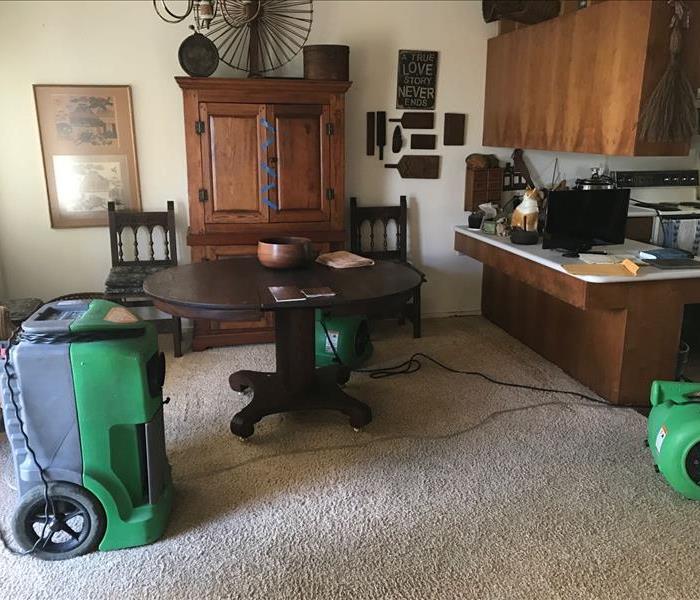 Our first instinct is to dry, the second is preservation.
Our first instinct is to dry, the second is preservation.
"Like it never even happened."
That is the SERVPRO of East Honolulu way, we aim to help our customers achieve pre-damaged looks.
We aren’t replacing your damaged materials, we are restoring. An art that is much more than revamping or upgrading, it is paying attention to all the tangible details to achieve a deja-vu effect to a damaged space. It is the tale of your property and home in all of its glory, finding the flooring similar to your old one, or removing all the bookshelves and books affected by water damage.
And it is protecting your pieces with protective material all throughout the process, cleaning as many goods as we can on your property.
This also entails keeping it at a minimal cost, simplicity is key when it comes to damaged prices. Restoring from disaster emergencies can lead to unforeseen costs and insurance companies.
Insurances want to keep costs low- with deductibles in mind- SERVPRO of East Honolulu likes to keep costs minimal by finding the most efficient way. Saving your money whilst still ensuring your property situation is habitable.
- Which means our process keeps disturbing your living situations to a minimum. We try to move materials as least as possible for the sake of your wallet and our backs! We use protective material and ask you to remove some of your goods, for your peace of mind.
Because we are not architects upgrading your property, accidents happen, we come in to make sure it looks like the accident did not occur. Not that a lottery ticket to a house makeover.
We appreciate our community and understand the common concerns that happen with water damage or fire damage. We strive to be trusted by both our customers and their insurances alike; by using the best contractors and keeping the damage to the minimum with our mitigation teams.
Call us anytime at (808)395-9545, SERVPRO of East Honolulu is locally owned and operated.
Categories of Water Damage// SERVPRO of East Honolulu
2/1/2023 (Permalink)
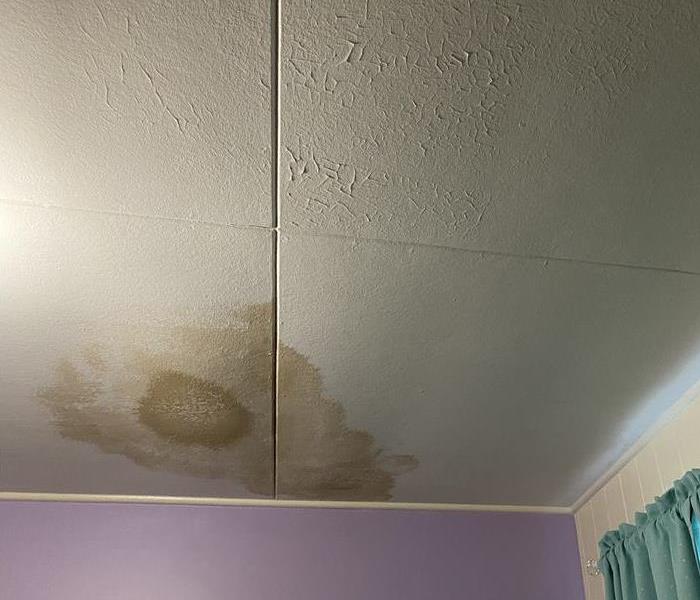 This is compromised materials that need to be removed immediately. It is showing signs of bacterial growth, and contains contaminates.
This is compromised materials that need to be removed immediately. It is showing signs of bacterial growth, and contains contaminates.
There are three different types of water damage that incur, these descriptions are based on the water loss source: where it came from. The most common sources here in East Honolulu are broken water, sewage pipes, defective appliances, storms/hurricanes or structural failures.
These disasters can happen to anyone whether it is on personal or commercial property. Understanding what category your water damage is allocated is crucial to understanding our solutions and treatments.
There are certain steps needed to do the various kinds of water reparations and remediation.
To understand the full treatment would also mean understanding your flooring and drywall drying status and damage.
Category One: Clean Water
This means that the water should not have any contaminants in it nor have ever been used. This kind of water would be found from overflowing sinks or broken pipes. This is the easiest water damage to deal with and poses little life threat. Other than the potential to grow mold if untreated.
Category Two: Gray Water
Cat 2 is called gray water because it has been used and carries waste products that are not human feces. This is water that isn’t exposed to animal fecal matter, and would occur in damages from overflowed washing machines and toilet overflows that were not filled with matter. It is more dangerous than category one water and can expose one to diseases and bacteria if consumed and/or touched.
Category Three: Black Water
Black water is the most dangerous water category for an organism's health. Category three water is unsanitary water that comes from floods or sewage. This water does possess bacteria fatal to health and equally possible chemical contaminants.
These colorization of categories may not be accurate to your case of water damage, the color of water itself varies from each personal damage.
- Like one may have Cat.3 water damage from a storm, and the water drying is clear; it is still known as black water because of the possible properties it possesses which are harmful to health.
It should be equally known that the longer water sits it gains the ability to classify in a higher category.
- Water being soaked into your building materials and goods are exposed to the air and bacteria- consequently mold spores. The longer water is on a site the “dirtier” it gets.
Thus mitigation is integral to preventing dangerous water damage to accrue on your property.
- This secondary damage can be seen as anything like musty odors to warped flooring, carpet delimitation or mold growth.
We aim to save as much as your property as possible, the faster the water is removed-regardless of category- the less damages will occur. Knowing these categories also determines the final treatment of the affected area.
- Keeping mold prone ceilings are harmful in the long run especially to your quality of life.
Removing it as soon as the damage happens saves you money over time.
SERVPRO of East Honolulu prides itself in creating a service that helps you along the way of the whole restoration process.
"Like it never even happened." Call us, 24/7, at (808)395-9545
SERVPRO of East Honolulu is Ready For All Natural Disasters
1/20/2023 (Permalink)
Our 24/7 Promise
SERVPRO is a trusted company name in the Remediation and Restoration Industry for a reason. That is for our promise of quality service and our transparent processes. SERVPRO of East Honolulu embodies these qualities as we aim to solve all mitigation disasters. Handling flooding emergencies, water, fire, and storm damage that harm businesses consequently the quality of your life. Whether it is a holiday or weekend, when we are sleeping or going fishing, we’ll answer your call with assurance.
A Local Business
We are huge proprietors for the local businesses in our East Honolulu community. Hence, we prioritize our local businesses and because we are also locally owned and operated. Our response times are quicker than corporations with remediation teams. Additionally we host local jobs for local people sourcing, many of our supplies from small businesses. Small businesses help communities and we are proud to serve East Honolulu.
Skilled in Water Damage Reparations
Although not commonly thought of, water is very invasive and very well absorbed by building materials. If not treated immediately your “compromised materials”- nonfunctioning materials due to water- can also damage your originally good materials. Water causes problems for walls, furniture, soft goods, floors...etc it does not discriminate. SERVPRO of East Honolulu are franchised professionals who show up ready to extract water and the processes thereafter.
Call us at (808)395-9545 for any questions or concerns.
Candles and Incense
1/13/2023 (Permalink)
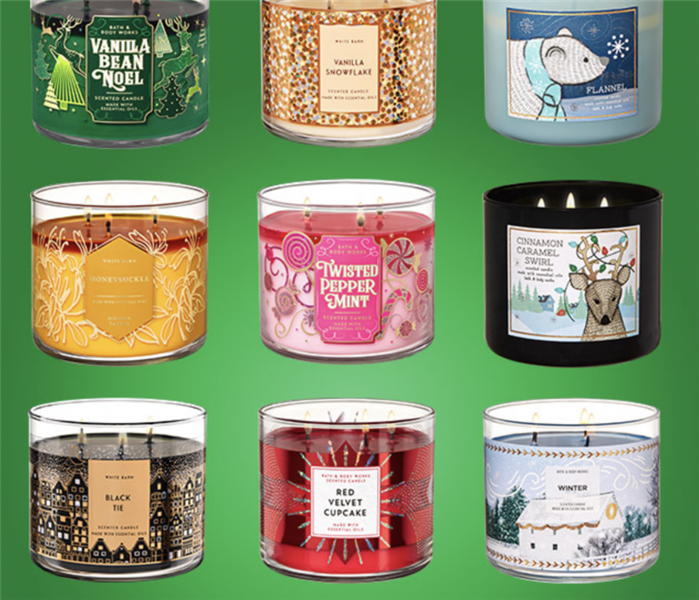 As many of us received candles as gifts for the holidays, it's wise to be cautious prior to use.
As many of us received candles as gifts for the holidays, it's wise to be cautious prior to use.
Candles and incense are often used to create ambiance or help celebrate a special event, but they are open flames that pose a threat of fire. Most candle fires take place in the bedroom, and many occur when candles are left unattended. In addition, the winter holidays and New Year’s Eve are peak times for candle fires, so be sure to exercise caution when celebrating with open flames.
Candle and Incense Basics
- Remember: candles and burning incense are open flames, and the safest option is not to have them in your home
- Never leave candles or incense unattended, and always extinguish them before leaving the room or going to sleep
- Keep candles and incense away from curtains, clothing, books and newspapers, and other combustible items
- Keep candles and incense away from flammable liquids (i.e., alcohol, oil, etc.)
- Use durable candle holders, which are made of non-combustible materials, are big enough to collect wax drippings, and don’t tip over easily
- Trim candle wicks to one-quarter inch, and maintain this wick length throughout the candle’s life
- Extinguish taper and pillar candles when their wax melts down to within two inches of the holder, and extinguish votives and other encased candles before the last half inch of wax starts to melt
- Use flashlights during blackouts instead of candles, and always avoid carrying lit candles whenever possible
Smart Home-Owners Add These Three Clauses in Case of a Fire Emergency
1/1/2023 (Permalink)
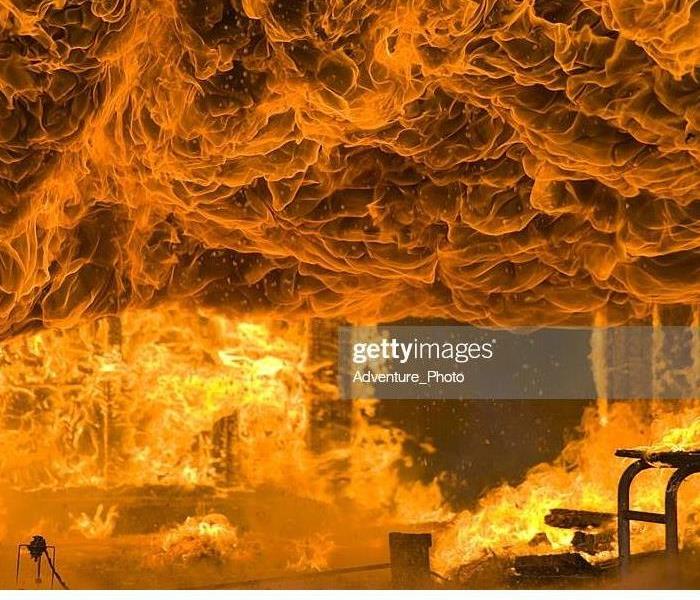 Keeping honesty and transparency at the fore front of communication is integral in keeping your property and assets safe during troubling times.
Keeping honesty and transparency at the fore front of communication is integral in keeping your property and assets safe during troubling times.
Ensuring Safety for your Home and Tenants is Integral in Saving Money, Time, and Confusion
It is important to ask questions on emergencies before disaster strikes. Such as who is responsible for fire damage on your rental property, how are the costs delegated?
The easiest way to avoid confusions and uncomfortable conversations is simply stating them in your lease. Making these clauses in your agreement keeps you protected and your tenant notified.
- Tenant(s) Need Rental Insurance
Adding into a renter’s lease that rental insurance is needed, stops uncertainty in its tracks. Rental insurance usually covers natural disasters such as fire damage. This ensures if there is an emergency then the renters goods are taken care whilst the restoration process happens.
It also means that the tenant(s) can stay elsewhere paid by the insurance. That if a fire hits, the renter acknowledges their proper procedures to take place for their goods and personal safety.
- Create a Guideline for Momentary Housing
Although most renter’s insurances cover temporary housing, especially in East Honolulu where most end up in hotels for the duration of restoration. Transparency is key to maintaining a healthy relationship model with your tenant and property.
Clearly creating an outline of what happens when your property is unlivable based on questions like if rent is taken care of the time repairs take creates clear boundaries before they are needed. Misunderstandings cause disillusions, the last thing you need as a property owner.
- Set Expectations for Repairs
Sometimes repairs can be costly with new materials, technicians, and time. The time it takes during restoration differs, when it becomes an indefinite period with inhospitable conditions; that should be outlined within the lease. For the safety of your tenant, whether that is refunding their deposit to live elsewhere or paying rent to live on your other property. Making it blatantly clear for your renter should be your initial concern when leasing your property, not when emergencies happen..
Your renter and you alike have numerous variables to worry over above a fire. A lease clearly outlining scenarios that are inherently tricky diminishes both of your worries. Leading to no disagreements- as they already signed the lease to live on your property. And if anything occurs SERVPRO of East Honolulu is there.
Call us at (808)395-9545
The Cause Behind Mold Odor in Eastern Honolulu
8/15/2022 (Permalink)
It is not uncommon for mold to accrue overtime in Hawai’i especially in eastern Honolulu. On our beautiful island, the damp summers, and ocean breezes are breeding grounds for toxins like mold or bacteria. Mold is a danger to all life forms, and needs the utmost care when being remedied. Thriving in damp areas that tend to be confined, it may be hard to even spot mold growth or spores. Additionally, mold can survive both in the air and on materials. Any biodegradable material, such as wood, dry wall, clothing, and flooring.
Before we enter the site for mold, residential and commercial owners alike can probably smell the problem. It might not be visible to the naked eye but there is a chemical that produces this smell: mycotoxin. This chemical emitted by mold spores tends to spread rapidly.
Mycotoxins have a very distinctive, malodorous odor with musty, swampy, or grungy notes. Mycotoxins attribute dangerous properties from being a microbial volatile organic compound-MVOC. Meaning a few defining characteristics:
- It is toxic, it is secretion from mold
- The scents vary with each mold type
- Potency of this toxin differs with each type and amount of mold
- It clings to skin and hair, this exposure is toxic
One of the main reasons as to why mold is a dangerous toxin that must be thoroughly cleaned is because of mycotoxins that mold spores release. For the sake of sanity some people simply remove the odor by masking it. Using perfumes, air freshers, or cleaning physical manifestations of mold. This only mitigates your smelling pleasures, whilst the mycotoxins are in the air.
SERVPRO of East Honolulu utilizes the newest technology to combat natural disasters and messes. One of them being HEPA air filtration devices. Cleaning furniture, clothing, and surfaces can get rid of your mold with the proper chemicals… but with mold it is simply not enough. Mold is an airborne spore meaning that although your surfaces are clean, the mold infestation can still be there. Using a HEPA filter takes the toxins in the air to be sucked into it and stay in the filter. This filter also takes care of the lingering odor even when everything else is disinfected. Bleach is not a good cleaner for mold, it does not get into porous materials like wood.
Call the professionals if you smell mold in your residential or commercial property in Eastern Honolulu. SERVPRO of Eastern Honolulu prides itself in holding IICRC cleaning standards. We also work with the state in passing properties as livable situations once we clean for mold. Mold remediation is no easy feat, and SERVPRO of Eastern Honolulu is here every step of the way. "Like it never even happened."
Hawaii Hurricane Season
7/8/2022 (Permalink)
As we all know, Hawaii weather is very dynamic and can change for the worse in a very short period. With hurricane season in Hawaii running from June 1 through November 30, proper preparation is important to ensure the safety of you and your family.
The National Weather Service will issue a Hurricane Watch if there is a threat of hurricane conditions within 36 hours. A Hurricane Warning is issued when sustained winds of 74 mph or more are expected in a specified area in 24 hours or less. A Hurricane warning can remain in effect when dangerously high water or high waves continue, even though winds may be less than 74 mph.
In the event of a hurricane, it is recommended to be prepared and assembly your Disaster Supply Kit. Non-perishable food, water, supplies and equipment should be assembled in one central location.
Create a Family Disaster Plan. In case of evacuation, make plans in advance to stay with friends or relatives who live inland or on higher ground. Learn the recommended evacuation routes from your home. Local broadcast stations or authorities will give the safest routes or to learn them ahead of time, contact your local emergency management office. Program important numbers into each family member's cellular phones and make a list of valuable possessions.
When a Hurricane Watch is issued for your area, check your Disaster Supply Kit and replenish anything that may be missing from your kit. Check and restock your supply of water if necessary. Make sure your car has a full tank of gas and is ready to go or if you have made arrangements for a ride, contact that person to reconfirm. Gather emergency papers in your home such as birth and marriage certificates, wills, insurance policies, deeds, etc. Place them in a waterproof container with your non-perishable food supply or put them in your safe deposit box.
For senior citizens, store at least a two-week supply of any medicines you may take. Also, be sure to have an extra pair of eyeglasses as well as extra hearing aid batteries.
If a hurricane is about to strike and you have not reached an emergency shelter, emergency procedures include taping or boarding up windows (or installing storm shutters), stay indoors and away from windows (even secured ones), shut off your main gas valve and the main power switch, and don't use your telephone or vehicles except in an emergency.
Make sure all objects on your lawn or patio are properly secured so that they cannot be picked up and carried away during high winds. Items such as: lawn furniture, garbage cans, garden tools, toys, signs, and other items can be very harmful and become missile-like weapons during high winds.
And lastly, ensuring the safety of all your loved ones also means making sure your pets are safe. Make sure your pets have received all their vaccinations. In case of an evacuation, pet shelters may require proof of vaccinations. Keep a current photograph of your pet as well as a collar with identification and a leash. Have a properly sized pet carrier for each animal. A proper pet carrier should be large enough for your animal to stand and turn around in.
You Want SERVPRO of East Honolulu to Mitigate!
4/1/2022 (Permalink)
On the tiny island of O'ahu, comparably, there are a vast variety of restoration companies. With the sea of information the internet offers, it seems like they are drawing each other out with the same guaranteed processes. SERVPRO of East Honolulu boasts many admirable traits that stick out from our competitors.
SERVPRO of East Honolulu is Locally Owned and Operated
As a franchise of SERVPRO we are locally owned but nationally supported, with a vast array of resources from our SERVPRO ohana. The years and experiences have shaped our company to accommodate our clients needs however niche it may be.
Equipment
We are up to code for three entities, the state of Hawai’i, the IICRC and additionally SERVPRO headquarters. Having access to the best information out there on property restoration we can dry out, clean up, or remove parts of your house… "Like it never even happened."
Crew
Our Eastern Honolulu crew is growing with each year! We boast about our IICRC trained professionals, they are the backbone of our production integral to our customer’s safety and happiness. Disaster waits on no one, but we do! That is why we offer a 24/7 open phone line for emergency purposes. So even if the worst happens, we are second behind the authorities.
Dryer Safety Precautions
3/31/2022 (Permalink)
Dryers are an everyday conventional tool that is usually harmless.
But thousands of American homes, including ones in Hawai’i are privy to a dryer fire lest one continuously keeps these in mind. Throughout the lifetime of your dryer, there are many reasons that can go ary and leave someone with soot and smoke.
SERVPRO of East Honolulu accommodates our customers when disaster strikes. We can clean everything the fire touches, repair and replace your damaged materials. All the while keeping your contents safe and clean either in our storage or a storage brand we trust.
But before we ever go out… you can keep your home safe from a fire, here are a few tips to ensure you don’t ever see our technicians for a dryer fire.
- Precautions must be taken even while installing the dryer. It is important to understand the electric capacities of both your house and dryer. Most fires occur from the lack of maintenance.
- Continuously cleaning your dryer is the best way to mitigate a fire. Most dryer fires are started by the lint accumulation in the lint trap. When there is too much lint it is more prone to catching a flame. Every few uses the lint trap should be cleared, that way down the line everything is safe. The back of the dryer may also contain buildup, cleaning your exhaust/vent pipe 2-3 a year is also crucial to maintaining safety.
- Properly using your dryer is the most important tip for safety. Overloading your dryer means there are too many clothes to dry and is also dangerous. Make sure that rubber, plastic, foam and other flammable chemicals are not placed into the dryer. This is a known way to cause fires. Other chemicals to consider when putting your clothes in the dryer are alcohol, gas, and other liquids that hold the potential to start a fire.
- Routinely checking on the health of your dryer will ensure that it is in the best shape possible.
- One should change their dryer every 5-10 years.
Dryer fires are completely preventable if homeowners and renters alike understand the maintenance needed to properly utilize these machines. One can not always be on top of danger, so if a dryer fire does occur… Do not hesitate to call SERVPRO of East Honolulu. We are available 24/7 for emergencies at (808)-395-9545
Common Instances of Water Damage
3/28/2022 (Permalink)
There are four general reasons as to why water damage occurs in a residential property- whether it is an apartment or house alike.
Indicators of water damage are universal, yet the whole restoration process needs to be curtailed to the niche property it occurs on.
That’s why you contact us, SERVPRO of East Honolulu when disaster strikes. We can ensure that the proper treatment is issued for your home, and your ohana is safe… "Like it never even happened."
These are the four main causes of water damages we encounter in the East Honolulu area.
Build-Up
Water build-up is the silent yet deadly handling of water damage. It comes over time, slowly, without the owner noticing the longest. Any amount of leakage from your pipes increases your water bill. Water pooling from the resulting leak tends to also remain hidden to any user of the pipes. Virtually, most leaks have to be sought after. Which is why a spike in your water bill is the best indicator of a leak without physically seeing it. Habitually look at any of your pipes, if there are any too cool areas inside your home or mold growth in dusty corners. It makes all the difference catching a water leak sooner rather than later.
Broken Pipes
The most destructive way a home can receive water damage. This is caused by high-pressure and a small hole in the pipe.Even the tiniest of cracks can cause a pipe to burst if over exerted. In a matter of hours, or minutes your whole property can be flooded with any pipe's contents.
Weathered Materials
Weather wear can also lead to various water damages, make sure that you know your local weather. As it is different for different parts of the island. Make sure that you are proactive in protecting your housing materials. This is the best way to stop damage. It is not fun being prepared for the worst case scenario, but it is always better to be overdressed than under.
Faulty Appliances
The last most common water damage we are going to talk about are malfunctioning appliances. Anything from an outdated refrigerator or copper pipes can be considered faulty appliances. There are tons of building materials that are outdated or ineffective after a while, which can cause major issues. Make sure that your house is refurbished to maintain the integrity of your property.
But if all else fails, your friendly, neighborhood technicians are always willing to come help clean it up… "Like it never even happened." Call us at (808)-395-9545 with any questions, comments, or concerns.
Smoke Alarm Basics
3/11/2022 (Permalink)
There are thousands of home fires in the U.S. every year, which result in roughly 3,000 deaths annually. Almost half of these deaths resulted from fires that were reported between the hours of 11:00 p.m. and 7:00 a.m., the time period in which most people sleep. For this reason, providing smoke alarms in bedrooms may be the single most important step toward preventing fire-related casualties in residential buildings.
Smoke Alarm Basics
- Install at least one smoke alarm in every bedroom
- Install additional smoke alarms in hallways and common areas in the vicinity of bedrooms
- Install at least one smoke alarm on every level of your home
- Make sure the smoke alarms within your home are interconnected so the activation of one alarm will activate all alarms within the home
- Try to use smoke alarms powered by the building electrical system, which have a battery for backup power … However, if this type of smoke alarm is not available, battery-powered units are certainly better than not having smoke alarms
Smoke Alarm Installation
- Install smoke alarms on ceilings whenever possible
- Locate any smoke alarms installed on walls at least four inches below the ceiling
- Locate any smoke alarms installed on walls no more than 12 inches below the ceiling
- Do not install smoke alarms in the corners of rooms
- Do not install smoke alarms next to air-conditioning vents, heating vents, or ceiling fans, to ensure proper functioning of the unit
- Do not install smoke alarms in kitchens or bathrooms, to prevent false alarms
Smoke Alarm Maintenance
- Test smoke alarms at least once a month, by pressing the button on the alarm that allows you to test the unit
- Smoke alarms with non-replaceable 10-year batteries are designed to remain effective for up to 10 years. If the alarm chirps, warning that the battery is low, replace the entire smoke alarm right away
- Smoke alarms with any other type of battery need a new battery at least once a year. If the alarm chirps, warning the battery is low, replace the battery right away
- Replace smoke alarms every 10 years
Laundry Safety
3/11/2022 (Permalink)
Laundry equipment is often overlooked when addressing the issue of home fire safety. However, laundry appliances pose a serious fire risk because they involve electricity, and the combination of combustible clothing and extremely hot temperatures. The vast majority of laundry fires are caused by dryers that are not cleaned properly.
Dryer Safety Basics
- Have dryers installed and serviced by a competent professional
- Have gas-powered washers and dryers inspected periodically by a professional to ensure the gas line and its connection are intact
- Make sure that the dryer is plugged into an outlet that meets its electrical needs, so it doesn’t overload the outlet and trip circuit breakers or blow fuses
- Keep the area around the dryer clear of boxes, clothing, and other combustibles
- Turn the dryer off when leaving home
Lint Filters
- Do not operate the dryer without a lint filter
- Clean lint filters before or after each use, and remove any lint from around the dryer drum
- Make sure the dryer exhausts into the exterior or into a listed water trap
- Inspect the area around the dryer for accumulations of lint, paying special attention to the area behind the dryer, and remove any lint you notice
- Inspect the flexible exhaust duct (if your dryer has one), and remove lint accumulations on a periodic basis
Full-Service Restoration Company
3/11/2022 (Permalink)
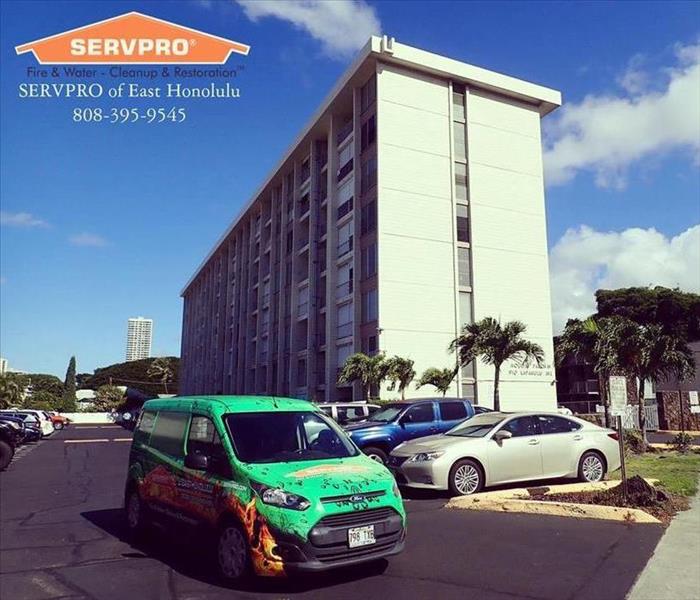 Start Your Commercial Restoration Today! Call us at 808-395-9545
Start Your Commercial Restoration Today! Call us at 808-395-9545
Since the start of SERVPRO of East Honolulu, we have been here for our community, serving both families and business recover from fire, water, or storm damage. Our vast knowledge on what is affecting our community most on water, fire damage and cleaning services instills a culture of change. We are constantly evolving our technique, ensuring that our customers get the best and most efficient way possible to mitigate their problems.
"Like it never even happened."
The technicians of SERVPRO of East Honolulu are expertly trained not only in disaster mitigation but in commercial general reconstruction services. After we’ve dried your building, removed odors, and cleaned contents, we’ll transition smoothly into the commercial restoration phase of your project.
Not only are we equipped for your disaster's needs, but our technicians are also trained professionals with IICRC certifications and instilled in SERVPRO work values. Here, we get the job done as soon as possible, as transparent as possible, for your convenience. Our technicians will know how and where you need our services and equipment. From restoring flooded hotel rooms to reopening fire-damaged restaurants, our craftsmen have the expertise, training, and equipment to successfully complete any type of commercial restoration.
To ensure a smooth experience from start to finish, SERVPRO of East Honolulu works closely with our clients throughout the commercial general remodeling process.
We’ll return your property to preloss condition by creating a customized, quick, and cost-effective plan based on our range of general reconstruction services:
- Complete Debris Removal
- Structural Damage Assessment
- Repair Versus Replacement Assessment
- Building and Property Demolition
- Smoke and Fire Damage Reconstruction
- Water Damage Reconstruction
Full-Service Restoration Company
SERVPRO of East Honolulu is your one stop solution to property damage restoration. From initial response through to returning your commercial property or home to preloss condition, SERVPRO of East Honolulu, provides the following services:
- 24/7 emergency response
- Emergency Water Removal
- Mold Removal & Remediation
- Storage services
- Document Restoration
- Asbestos Removal
- Odor Removal
Start Your Commercial Restoration Today! Call us at 808-395-9545
Who you gonna call?
2/25/2022 (Permalink)
When it comes to protecting your commercial property, there is nobody more trusted than the experts at SERVPRO of East Honolulu. To find out more about our commercial restoration services, just give us a call today 808-395-9545
- 24/7 Emergency Services – With expert coordination and professionally trained crews, we will respond to your business emergency ASAP!
- Water Damage – From a simple condo bathroom to a completely flooded hotel, we are equipped to deal with water damage of any size.
- Mold Removal – Mold is tricky and can be expensive if not dealt with correctly. We have done some of the state’s largest and most complicated mold remediation jobs. Trust in us, not just to get rid of existing mold, but also to make sure that new mold won’t develop.
- Fire & Smoke Damage – A fire of any size can bring your life or business to a halt. Minimize the impact to your world with our highly efficient fire and smoke damage services.
- Structural Drying – We use state of the art equipment to thoroughly dry complex commercial structures from the inside out!
- Content Storage Services – SERVPRO of East Honolulu offers complete packing, inventory, and relocation services for our commercial customers during the repair and mitigation process.
- Document Restoration – Our highly-trained staff provides premier restoration services for documents damaged by water, smoke, or sewage.
- Reconstruction – SERVPRO of East Honolulu’s inclusive reconstructive services, you will never have to wonder who will finish the job.
- Air Duct Cleaning – Eradicate odors, allergens, and microbial hazards with professional air duct cleaning and treatment.
- Temporary HVAC – SERVPRO of East Honolulu offers temporary engineering controls to supplement or replace the existing HVAC in your building.
- Odor Control – We don’t cover up odors – we eliminate them with our forensic identification process and safe, efficient remediation services
- Dehumidification Services – Prevent future issues from water damage with our extensive dehumidification services.
- Asbestos Abatement – In the last 20 years, SERVPRO of East Honolulu has completed many restoration and reconstruction projects that had been interrupted or were at a standstill due to asbestos removal problems.
Tips on reopening your business after a natural disaster
2/25/2022 (Permalink)
A natural disaster can occur at a moment's notice. Within seconds, your business can be damaged or destroyed, forcing you to close your doors until you can get back up and running. Unfortunately, businesses that haven’t implemented a disaster recovery plan before the unthinkable happens may likely be unable to reopen their doors after a loss. In fact, according to the Federal Emergency Management Agency (FEMA), up to 40 percent of small businesses never reopen their doors after a natural disaster strikes. With lack of planning for financial damages, property destruction, loss of essential business documents and equipment, and taking care of staff needs, it can be difficult for business owners to rebuild when disaster strikes.
Luckily, the experts at SERVPRO of East Honolulu are here to help. Use these tips to get your business back on its feet as soon as you can after disaster strikes.
CREATE A DETAILED NATURAL DISASTER PLAN
- Which disasters are likely to impact your business, depending on where it is located
- Locations suitable for employee evacuation
- How to stay in contact with all staff members
- Emergency contact information for each employee
- Plans to protect and/or access vital business records and information
- If there will be an off-site location from which employees need to work until doors reopen
- Contact information for the business’s insurance company, financial institutions, and a reputable disaster restoration company
If you need help creating your plan, print out FEMA’s business continuity and disaster preparedness plan, fill in your company’s information, and ensure key employees are aware of its details.
KEEP LINES OF COMMUNICATION OPEN
As soon as you can, keep your customers and staff informed about what's happening with your business. Provide an estimate of when you'll be able to reopen for business. If excessive damage forces you to temporarily relocate, let others know how to find you. Keep in mind that your ability to recover from a natural disaster might largely depend on how quickly your employees are able to return to work. Reach out to your team, and work with them to make scheduling changes if necessary so everyone can get back to normal as soon as possible.
SEEK OUTSIDE HELP
While FEMA provides financial assistance to businesses that are located in a federally declared disaster area, the process of receiving aid can take some time, especially when an astronomical number of claims are being filed. Have a backup plan in place to ensure you're able to cover the costs of repairs in a punctual manner.
Consider purchasing a flood insurance plan that specifically covers natural disasters. The Small Business Administration (SBA) may also be a good place to turn for help. Through the organization's Office of Disaster Assistance, businesses that are located in declared disaster areas can apply for low-interest, long-term loans to make repairs and replacements.
SET YOUR BUSINESS UP FOR A QUICK RECOVERY
Even just one act of nature can cause a major interruption. Businesses that recognize the importance of having a detailed plan in place to recover after a natural disaster may have a greater chance of survival. Start listing out your steps to rebuilding before disaster strikes to increase your chances of recovering.
If the unexpected does happen, remember that you’re not alone. Count on the experts at SERVPRO of East Honolulu to guide and support you throughout the recovery process and help get your business back up and running again as quickly as possible.
Creating a Business Response Plan
2/18/2022 (Permalink)
Those initial few moments after a water damage emergency happens in your business are critical. Do you know what to do? Does your team know what to do? Do you know who to call? Those are just three of hundreds of questions we can ask ourselves about emergency preparedness in a water damage emergency such as a flood.
Ready.gov strongly encourages all businesses to have a disaster response plan in place, just in case. Not just for floods but for anything that requires quick action. The better people are prepared for the worst, the more likely it will be that everyone gets out safely and that the appropriate steps are taken quickly to correct the situation.
“At the very least, every facility should develop and implement an emergency plan for protecting employees, visitors, contractors and anyone else in the facility. This part of the emergency plan is called “protective actions for life safety” and includes building evacuation (“fire drills”), sheltering from severe weather such as tornadoes, “shelter-in-place” from an exterior airborne hazard such as a chemical release and lockdown. Lockdown is protective action when faced with an act of violence.”
– Ready.gov –
First, start by creating a plan of action for when the incident first happens. At SERVPRO of East Honolulu, we would love to be involved in the full process of creating this plan. We can help you pinpoint possible issues within your building that could cause significant problems in case of a flood, and also have a copy of your disaster response plan in our files just in case you ever need us. This is also actually a critical component for first responders in Indianapolis to have on file as well. Giving first responders, and your restoration company of choice, blueprints of your property and copies of your disaster plan will help greatly with the initial response.
Once you identify particular risks in your building, and in your region (such as potential severe weather like tornadoes, hurricanes, wildfires, etc. depending on the region of the U.S. in which you operate), you can start putting together a plan to include (but not limited to):
- Evacuation procedures
- Meeting places
- Lockdown procedures
- Important numbers
- Plan of action for who in upper leadership is in charge of what during an emergency
- Communication during and after the event
Once you have your plan in place and delivered to the right people, there are a few other things to think about. For example, is anyone in your company CPR-certified? During severe weather outbreaks and disaster situations, first responders will be flooded with calls for help, meaning response times could increase. Taking a simple CPR class on a Saturday morning could mean the difference between life and death for those around you during a disaster. There are also a number of first response teams in communities across the country that are always looking for volunteers to help during disasters. If you want to help, reach out to your local government offices and they can point you in the right direction.
Electrical Outlet Guidelines // SERVPRO of East Honolulu
2/15/2022 (Permalink)
Electrical outlets are not one size fit all, as conveniently thought because they are all the same size.
Outlets can vary in the strength of electricity and the allocation of energy when various things are plugged into it. It may seem like only something that happens in the movies- outlets faltering- but it is very common for outlets to short circuit when too many high power devices are plugged into its source.
It is important to ask yourself questions about the capabilities of your outlet and also the power needed to charge your device. Some cables are considered lightning bolt chargers as they put in mass amounts of electricity to power a device for a shorter amount of time. Learning the nuances of both your appliances and your property will save you time and money.
Creating more stable appliances- that last longer and do not electrically cause fires. The second leading cause for fires in the home are electrical appliances.
Keep your ohana safe and away from this statistic by being knowledgeable about the products you have.
It is imperative to understand the notions that cause electrical fires as such one can be an educated consumer. Inevitably weeding out the bad products and overall leading to an increased quality of life.
It is very common for electrical fires to happen in apartments and other mass residency buildings because of the inefficiency of electrical wires. Often these wires become misplaced, replaced improperly or a whole slew of other issues that could possibly trigger them to malfunction.
Electrical wires are extremely sensitive to nefarious efforts done by occasional electricians who want to go home early. On top of that, outlets and extension cords are other leading issues today for electrical fires.
Thus, when using these conventional modern items it is important to not overheat it, or mis-use it in any way shape or form.
One should closely monitor all appliances plugged in, even the fridge, microwave, and oven that are constantly plugged in. Frequently checking in on these devices creates a conscious consumer who would be able to identify when wear and tear occurs on your device. This monitoring and consistent check ups prevent mishaps from even happening.
When using outlets make sure that the appliances always have the three prongs fully inside the outlet and plugged in directly to a wall outlet or an extension cord. Appliances that are known to use mass amounts of energy such as refrigerators, ice boxes, freezer chests, and tvs should be plugged directly into the wall rather than an extension cable.
These cables occasionally do not have the capacity of holding these bigger appliances, and much less more after that. Overloading outlets is a mitigatable issue when you learn the electrical capacity charges of all tools influenced such as the appliance, the wall outlet, extension cord… etc.
And all while one is actively ensuring that electrical fires do not arise nonetheless it may still happen. From anything like an emergency, a state issue with power out of your control or a mere accident.
That is why we proudly serve our community of East Honolulu. SERVPRO of East Honolulu recognizes that life gets in the way and almost always happens on its own design.
You can trust us with any natural emergency, and we have dealt with our fair share of electrical disasters. We can and will restore your home. "Like it never even happened." Call us with any questions, comments, or concerns at (808) 395-9545.
Cooking Safety Basics
2/4/2022 (Permalink)
Cooking
Cooking fires are the leading cause of home fires and household fire injuries. Unattended cooking is the leading cause of these fires, most of which start with the ignition of common household items including grease, paper, cabinets and curtains.
Cooking Safety Basics
- Never leave food unattended while it’s cooking on the stove, and closely monitor food cooking in the oven
- Maintain a clean and tidy cooking area that is free of items that catch on fire easily, such as cloth (curtains, potholders, towels, etc.), paper (cook books, food packaging, newspapers, etc.), and plastic (food packaging, storage containers, etc.)
- Roll up your shirtsleeves, or wear short, tight sleeves while cooking, so your clothes don’t accidentally hang onto stove burners and catch fire
- Always keep a potholder, oven mitt, and lid on hand
- Never use a wet potholder or oven mitt, in order to avoid scalding when the moisture in the cloth heats up
- Never plug microwaves into extension cords, and never microwave metal containers or tinfoil
- Keep children and pets away from cooking areas
For more information on safe cooking check out this Cooking Safety Fact Sheet from the National Fire Protection Association.
In the Event of Stovetop Fire:
- If the fire is small and contained in a pan, put on an oven mitt and smother the flames by carefully sliding the lid over the pan
- Turn off the burner
- Don't remove the lid until it is completely cool
- Never pour water on a grease fire
- Never discharge a fire extinguisher onto a pan fire since it can splatter burning grease out of the pan and spread the fire
In the Event of Oven Fire:
- Turn off the heat
- Keep the oven door closed to prevent you and your clothes from catching fire
- Notify other occupants, and evacuate the building
- Call the fire department
In the Event of Microwave Fire:
- Keep the microwave door closed
- Unplug the microwave to remove the source of heat
- Notify other occupants, and evacuate the building
- Call the fire department
Electrical Safety Basics
2/4/2022 (Permalink)
Electricity
Electrical distribution equipment poses serious fire safety threats that can even be fatal, especially when equipment is used incorrectly.
Electrical Safety Basics
- Protect electrical outlets with plastic safety covers if small children are present in your home
- Never operate electrical appliances around bathtubs, showers, or puddles of standing water
- Use ground fault circuit interrupter (GFCI) protection when working where water is near electricity, to protect against electric shock … This means you should use GFCIs in your kitchen, laundry room, bathroom, and outdoor locations
- Replace or repair frayed, loose, or otherwise damaged cords on all electronics
- Shut off the circuit and have it checked by an electrician if any switches feel warm
- Take note of any discolored switch plates, because discoloration could indicate that the electrical wiring behind the switch plate is overheating
- Remember: symptoms of potential wiring problems include household lights that dim or flicker, a TV picture that shrinks in size, frequent blown fuses, or circuit breakers that trip frequently
- Place lamps on level surfaces, away from flammable items, and use light bulbs that match the lamps’ recommended wattages
- Multi USB charger are not allowed on campus and should generally be avoided. They are prone to overheating and a multitide of these devices have been recalled by the Consumer Product Safety Commission over safety concerns.
Extension Cords and Surge Suppressers
- Never use an extension cord as a replacement for permanent wiring
- Avoid running extension cords across doorways or under carpets
- Make sure power strips and surge suppressors are designed to handle the loads you will be using them for
- Connect power strips and surge protectors directly into a wall outlet. Do not connect multiple power strips or surge protectors together
- Avoid overloading circuits by plugging too many items into the same outlet
- Avoid the use of "cube taps" and other devices that allow the connection of multiple appliances into a single receptacle, and try to only plug one high-wattage item into each outlet
Halogen Lighting
- Avoid using halogen lamps whenever possible since they operate at much higher temperatures than normal light bulbs
- If you use halogen lamps, make sure the lamp is placed in a location where it cannot come into contact with drapes, clothing, or other combustible materials
- Keep halogen lamps and cords away from high-traffic areas and turn lamps off when leaving the room for an extended period of time
The Importance of Testing for Mold
1/20/2022 (Permalink)
Testing for the type of mold, the severity, and the density within the rooms is the only way to get the full picture. SERVPRO of East Honolulu cares about our community. Mold is no easy feat on the account of its mobility, we understand the necessary sensitivities that ought to take place when dealing with mold.
As challenging as it may be from air-borne fungal spores, to humidity levels for mold breeding. SERVPRO of East Honolulu cleans and kills mold in spaces. Mold spores are microscopic, with unventilated air space they increase dramatically with time. Eventually creating a mold colony. Physical manifestations of mold indicate that the spores have been active for a while. Activated on organic wet materials, like particle boards on dressers or wet drywall from a pipe leak.
Ensuing the need for tests and specific measurements. The start of mold colonies or “hot spots” are just the tip of the iceberg. It is hard to instantly know the needed treatment of your property without taking a look into the microscopic world. We test air quality, to find how many spores are in the most affected area. We also have to test some materials in which physical colonies of mold are on. These surfaces will give us a good idea of moisture content and the water needed to sustain such a hot spot. To also know the extent of the mold, we also take a sample seemingly furthest from the area- gaging the change in air quality.
Testing the air quality is an important start to the de-molding process.
Ask about our full mold procedure:
(808)395-9545
Preparing Your Personal Documents In Case Of A Storm
1/17/2022 (Permalink)
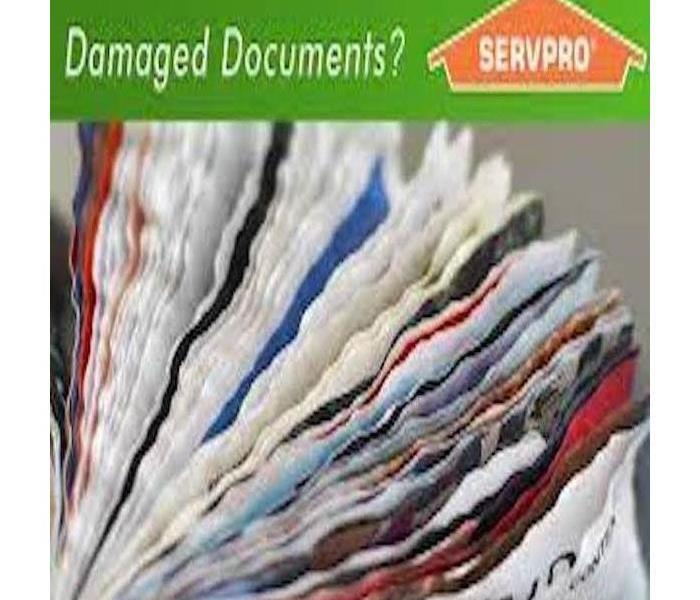 Need document restoration, call SERVPRO of East Honolulu today at 808-395-9545 to see how we can help
Need document restoration, call SERVPRO of East Honolulu today at 808-395-9545 to see how we can help
Hurricanes can be devastating, which is why it’s critical to be prepared, including having a hurricane insurance policy that fits your needs.
If it is hurricane season or you know a hurricane is coming, it is important to store your personal documents in a dry and safe place; always be sure to have electronic copies of your personal items as well as hard copies. Long before a disaster, you should develop a backup plan for making your documents accessible when you need them.
Do I Need Hurricane Insurance and Flood Insurance?
You might be wondering why hurricane insurance and flood insurance are different. To put it simply, hurricane coverage on a homeowner’s insurance policy covers the damage from wind during a “named storm” or hurricane, however, it does not cover water coming into your home from the ground level.
What Documents Should I Protect?
During hurricane prep, people always make sure to put up hurricane shutters, charge electronic devices, and store up enough dry food and water to wait out the storm. The hurricane prep step that often gets forgotten is putting together and safely storing all of your important documents. Taking the time to store your important personal documents (and/or copies) will protect you if the originals are damaged, lost, or destroyed in a hurricane.
Here is a list of important documents that you should make sure to protect during hurricane season:
- Insurance Documents And Policy Numbers.
- Birth Certificates.
- Social Security Cards.
- Driver's Licenses.
- Passports.
- Vehicle Registrations and Titles.
- Property Deeds.
- Medicare or Insurance Cards, Prescription Records, and Contact Information for Your Doctors.
- Financial Records: Tax Records, Bank Statements, Account Numbers.
- Your Will, Estate Planning Paperwork, and Contact Information for Your Executor of Estate.
Where Should I Store My Personal Documents?
Now that you’ve collected your important personal documents, it's time to come up with a plan to keep them safe.
In Your Home Or Business
If you are planning to keep your important documents inside your home or business, there are a few different ways you can store them:
- The best option is to store your personal documents in a portable, fireproof (weatherproof) file system or lockbox that you can take with you in case of evacuation.
- If you do not have access to a weatherproof lockbox, consider storing your documents in a hard, plastic storage container away from any windows.
- Store your documents in a place in your home or business that is likely to be above the potential flood line.
Secure Offsite Storage
If you are planning to store your important documents outside of your home, please note:
- One of the safest ways to assure the integrity of your documents is to store them offsite in a safe deposit box. If you choose the offsite route, make sure to keep adding new documents as you acquire them.
Electronic Storage
One of the best ways to keep records of personal documents is to store them electronically. Of course, there are some documents that cannot solely be stored online, such as birth certificates, passports, and social security cards, but keeping a copy of them can still be beneficial. With your documents in electronic format, you can access them from anywhere. Three ways to electronically store your documents are:
- Saved to your Google Drive or a similar cloud-based document storage platform.
- On a CD or DVD.
- Saved to a Flash Drive.
You can even combine electronic and offsite storage methods by storing electronic copies of your documents on a CD/DVD or flash drive and putting them into a safe deposit box.
How to Make a Hurricane Evacuation Plan for Your Family
1/17/2022 (Permalink)
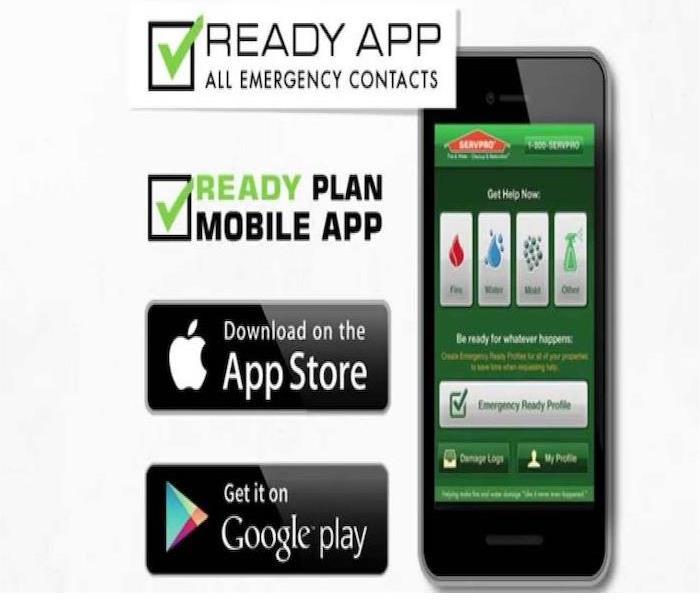 SERVPRO Emergency READY Profile® contains critical facility information to help speed up response time.
SERVPRO Emergency READY Profile® contains critical facility information to help speed up response time.
Prep an Emergency Contacts Sheet
Every family member should have an emergency information sheet that compiles the phone numbers of every other person in the family as well as neighbors and out-of-state friends or relatives who might be the central point of contact.
This list should include:
- Phone numbers and email addresses of every person in the household
- Phone numbers and email addresses of emergency contact friends or family outside of the household
- Contact information for medical providers
- Contact information for veterinary services, should you have pets
- Contact information for where you plan to stay until the storm has passed
The Federal Emergency Management Agency (FEMA) has a handy reference sheet for adding emergency contacts and meeting places in a Family Emergency Communication Plan. Download the PDF from Ready.gov for step-by-step instructions for making one.
Have Your To-Go Bag Ready
When you evacuate, you won’t be leaving empty-handed. You’ll need an emergency bag ready-to-go so you’re not wasting time packing one when time is of the essence.
This should include:
- Enough food and water to last for at least 72 hours
- Clothing for the next 72 hours
- Battery-operated radio, flashlight and lanterns— along with plenty of extra batteries
- Extra keys for your home and car
- Cash to tide you over if banks are closed or ATMs are not working
- Medical supplies, including two weeks' worth of any prescription medication along with over-the-counter remedies you might need
- Important papers and documents like insurance papers, birth certificates, social security cards, etc.
- First aid kit that includes personal hygiene items, plus hand sanitizer and disinfectant
Don't Forget Your Pets
In an emergency, you also want to provide for your four-legged friends. Prepare a pet evacuation kit that contains food, bottled water, food dishes, medications, cat litter and pans, medical records and anything else you might need to keep your pet comfortable for a few days like special medications.
If you evacuate your home, take your pets with you in a carrier or on a leash or harness to prevent them from escaping in fear.
Not all shelters can accommodate pets, so have a backup plan to keep them safe if you cannot care for them.
Establish Emergency Meeting Places
When is imminent, make sure your family can agree on two prime meeting locations:
- Indoors. Choose a small interior, windowless room on the lowest level of your home to congregate with your family. It’s here you can double-check you have all your supplies and evacuate as a unit.
- Outside your neighborhood. Should you or part of your family be out and about when an evacuation order hits and it’s not safe to come home, it’s helpful to agree on one meeting place like a grocery store parking lot, a community center or another friend’s home. The persons who are home should know where everyone’s emergency supplies are and grab preparations for those waiting from a distance.
Why You Should Avoid Driving in a Flood
1/3/2022 (Permalink)
Flooding is prevalent during the winter season in Hawai’i, on virtually all islands have had to combat the incessant raining that has occurred recently. It is easy to get impatient and wish to drive or do more than one’s essential task. But seeing that the East Honolulu like the rest of the island of O’ahu has been hit with hard rains and the omicron strain it might be best to stay inside. Here are a few reasons why you should not drive in the rain:
Danger to You
Flooding is the culmination of storm water that tends to be dangerous and hazardous to society. It is especially dangerous to the driver because it is hard to gauge the depth of flooded roads. Flooded areas are also unpredictable and change with the weather pattern, some floods can rapidly push objects-especially cars. You have no control on the current, therefore your safety.
Damage to the Car
There are certain parts of a car that will not function if they are damp or come in contact with water. Cars are automotive working because of gas, oil, heat, and electricity. Most of these chemicals do not react or like water and manufacturers have to adjust accordingly. Cars are meant to be submerged in water or in water at all. Some vehicles die on the spot if there is too much water in the system. Avoid these realities by staying in.
Lack of Vision, is a danger to everyone
Flooded areas often paint a misleading picture, because it is hard to gauge the depth of puddles. There could be debris floating inside, or other sinister objects that could not only affect your car but also the safety of the organisms within your car.
It is inevitable, because life continues when it rains hard, because flooding happens. Life moves on and we adapt with it. SERVPRO of East Honolulu is here to clean up the pieces after tropical storms, or bad rainy weather for your properties. Keep your ohana safe by practicing diligence and necessity when leaving after heavy rains.
Cleaning Smoke Damaged Electronics
1/3/2022 (Permalink)
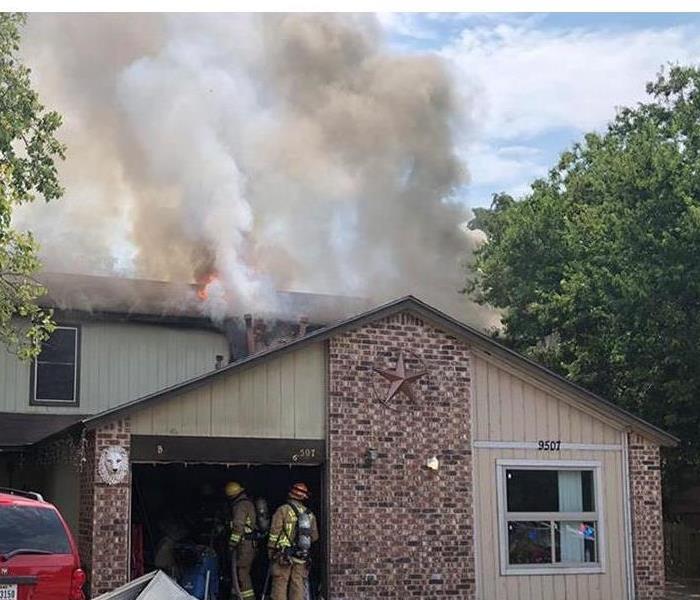 After a fire incident the last thing you want to worry about is cleaning up the tiniest of things. Like phones, earphones, etc.
After a fire incident the last thing you want to worry about is cleaning up the tiniest of things. Like phones, earphones, etc.
SERVPRO of East Honolulu offers premier fire cleaning services, soot and smoke are extremely corrosive and must be combated accordingly. It is important to clean everything that has been in a fire, even if it looks like no inherent damage.
Smoke is acidic, the particulates are suspended within the air causing smoke. There may be little or many components of smoke, depending on the fire cause, fuel sources, and gasses in the air. Some of these compounds are:
- Carbon dioxide
- Carbon monoxide
- Nitrogen oxide
- Volatile organic compounds
- Water vapor
Which is a slew of highly acidic molecules, these molecules will damage surfaces and harm organisms. Especially affecting organisms with lungs and a nervous system. In combination with heat, smoke can be extremely harmful to electronics. The circuit boards within computers, and other electronic innards are sensitive to its environment. Just small overheating from the engine of the electronics itself could cause boards or wires to fry. Thoroughly cleaning all components of an electronic is imperative to your quality of life and your products.
With anything else especially on electronics it creates a thick, black film of smoke that can abrupt the quality of your product. This residue slowly corrodes the metals over time, and also can create malfunctions that inevitably cause your electronics to fail. Leading to short-circuiting, overheating, and electrical fires.
The reason a thin layer of black film occurs is from the soot mixing with the already existing particulates on your electronic goods. Dusts, allergenics, pathogenics, or microbes cling to the soot to create a greasy paste. It is hard to detect the damage within electronics as there are openings, and closings everywhere. It is best left to professionals, like our cleaners here at SERVPRO of East Honolulu.
Our professionals have been taught to handle equipment and understand the materials and mediums they are cleaning. Soot happens to get everywhere after a fire, which is why it leaves a smoky odor on everything. There is no one size fits all to clean goods or your property after a fire. Each item needs to be handled with care as well as disinfected to ensure a safe, clean, environment again. "Like it never even happened." Call us with any questions, comments, or concerns at (808)395-9545.
2022 decors trends in Eastern Honolulu
12/30/2021 (Permalink)
As we are heading into a new year with hopes of a pandemic free future here are some trends that any property owner might take heed to. 2022 will be a near dawn, your property and ohana want to greet another year better than ever. With the trendiest of colors, and the sustained direction of minimalism. 2022 will be another year of open lighting, big spaces with brighter colors, and a comeback for wallpaper.
Wall Colors:
- Pale greens
- Pale browns
- Deep Navy
- Gray-ish White
- Soft Pink
- Buttercream
Furniture Trends:
- Rich Mahogany
- Rattan pieces
- Rounded detailing
Fabrics:
Trends come in and out of fashion, arguably repeating themselves over and over again. This year will be no different, as silk has been an increasingly more popular fabric and so has burlap in the last few years (2017-).
Our customers always have fashionable properties: cleanly commercial buildings and fabulous decorum in their private property. Eastern Honolulu contains the most fashionable cities on the island, including urban Honolulu. Show the best face for a brighter future this 2022.
And if fabrics are ever soiled or furniture destroyed, we industrially clean and do upholstery. Call us with any questions, comments, or concerns at (808)395-9545.
Hoarding- the Unknowing Biohazard and its Reasoning
12/15/2021 (Permalink)
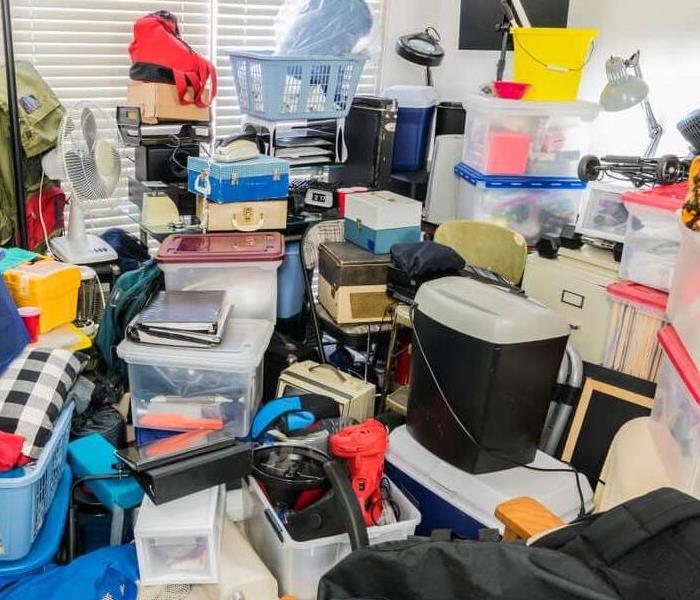 "Like it never even happened." That's the SERVPRO way, an efficient and capable body of technicians carving a path to a greater clean and restoration.
"Like it never even happened." That's the SERVPRO way, an efficient and capable body of technicians carving a path to a greater clean and restoration.
Biohazard is defined from the oxford dictionary, a risk to human health or the environment arising from biological work, especially with microorganisms. These vicarious manifestations of hoarding may contain spoils of hazardous material.
Here at SERVPRO of East Honolulu we have seen these kinds of incidents, and there is an assumption to wearing protective mechanisms if we encounter them. Like clogs with mold underneath them, or feline pee when met with the utmost care the whole situation can be solved.
Here are some common bio-hazard materials found in residential/commercial property:
Bodily Fluids- needles and bloods
There are numerous blood borne pathogens contained in bodily fluids such as AIDS, hepatitis, HIV...etc. These unattended items and fluids attract deadly bacteria that are not safe to be in your home.
Pharmaceuticals and other chemicals
Hoarding has no ends, sitting pharmaceuticals or out-dated chemicals are harmful with rotting molecules. It makes one privy to chemical fires, which behave differently than other fires. Expired drugs become more potent over time, making it toxic and occasionally fatal.
Garbage
Pure trash with its rotting organic materials are an insane threat to life and health. It is one not commonly talked about tending to be talked over yet it has the capabilities to create numerous pathogenic and bacterial colonies. Harmful to digest, touch, or be in the nearby vicinity. Trash also attracts animals of all kinds, curating a play ring for allergies and bacteria.
Animal fecal matter, urine, and vomit
This also attracts myriads of viral, allergenic, bacterial transgressions around the property, this is like bodily fluids. In some cases much worse, such as with urine. Urine contains a type of ammonia who will cause symptoms with breathing, sleeping, attention spans, impaired memory, vomiting and diarrhea. This also negatively affects neighbors and other family members alike.
Understanding the dangers of hoarding is one of the best ways to prevent it. Whether it is met with the gusts of triumph needed to face the anxieties of mess is only one story to tell. And if push comes to shove, worse to the absolute worst; SERVPRO of East Honolulu is here for all cleaning and mitigation services.
We are available 24/7 for questions and emergencies:
(808) 395-9545
SERVPROehonolulu@AOL.com
So It Stormed, What's Next?
12/3/2021 (Permalink)
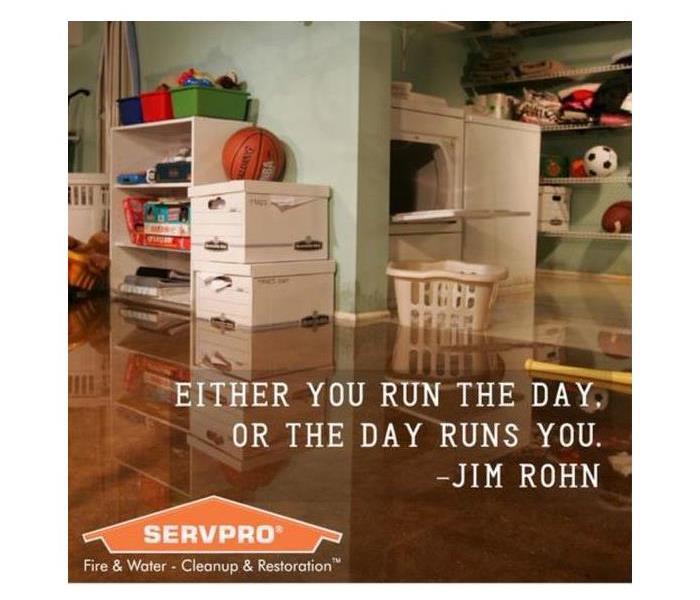 YOU DECIDE!! CALL NOW 808-395-9545
YOU DECIDE!! CALL NOW 808-395-9545
It is not an usual occurrence for it to be raining on Oahu, you may hear: “it is always raining somewhere on the island”.
Tourists and locals alike know that rain and storms make all the difference, our rains go from misting, to plopping buckets of rain in seconds. This is heightened during a storm.
And it is important to us that the East Honolulu community is safe all throughout the duration of a storm. SERVPRO of East Honolulu is always here to help clean up from the aftermath of a storm; here are some tips for you after a storm hits:
- Watch your animals, animals are easily riled after a storm
- Do not drive on flooded roads, highways, and other paved areas for vehicles
- Stray away from inept power lines, and if not marked off, report them to the authorities
- Stay vigilant by keeping up to date through TV newscasts, Radio stations, Twitter...etc. Knowing inaccessible areas helps you navigate through the storm aftermath.
- It is good to help people who need extra help like our kupuna and keikis.
Learning our Eastern Honolulu area is also a great way to be prepared for storms. When natural disasters arise knowing where you fall within the natural terrain helps one plan on which highway to take if others are down. If it is easier to take the Pali or H1 when H3 is down, or flooding happens before your home exit. It is better to be over prepared than under.
Leave us with any comments or concerns at (808)395-9545. We are proud to be apart of the Eastern Honolulu community, serving you all days of the week. And available for any comments or concerns 24/7.
How We Remove Pet Odor and Stains from Carpets in East Honolulu
11/30/2021 (Permalink)
It is never fun as a property owner or pet owner alike to find any kind of animal urine and fecal matter in your home.
The hale is a place of gathering and rest, and pet urine can kind of mess up that vibe and be frustrating to deal with.
Many different kinds of animals have nefarious hormones, enzymes, and other biochemicals that they excrete which often stay in the air and stain. Consequently continuously stinking up your property with urine, usually of a dog or cat sort.
There can be even more to deal with if you feed your animals human food, human food is made, cooked with, and has oils. These oils- although welcome and unforiegn to our diet- our foreign to animals. It is unnecessary for them, on the occasion of salmon oil, or coconut oil…etc it is nutritious.
Alas, these oils secrete out of animal urine, just like ours; and
The main reason for smell issues historically with human discretion, is the food we consume.
It will get increasingly easier to guess where your animal peed outside because of the smell that comes from eating average human foods, like hamburger steak, or meatballs with spaghetti sauce.
As pet owners and technicians alike, SERVPRO of East Honolulu understands the frustrations that can occur when you are a pet owner. Pets are living, breathing organisms that deserve an overall good quality of life like you; but there is a conceptual and linguistic barrier that often creates fecal matter in the living room, or active defecation while petting them. Leaving you miserable and frustrated often impedes our connection with our animals. We clean carpets efficiently and successfully, and are no strangers to bad odors that accrue from pet urine.
Here is our step to step process of odor:
After going through the necessary steps with our wonderful office ladies, we deep clean your carpets and your soft goods affected by the malodorous scent.
The way we deep clean carpets is like anyone with a carpet cleaner but with our secret ingredient a deodorizing agent. When placed on top of organic scent molecules it breaks down the molecule consequently its ability to create scent. This is crucial to our process, as it scientifically gets at the problem of natural odors that occur from pet waste.
After cleansing your carpets- this not only includes odor but dirt, soot, pollutive particles, and stains. Our technicians will finish the job with an ozone machine that will finish our job in the home. This ozone machine is a deodorizer as well, it is an ionizing machine that releases free radical oxygen molecules from ozone compounds- O3. When these free radicals interact with the environment it clings to dirt and pollutants in the air, something we also use after mold remediation or other biohazard. The way the ozone reacts is similar to its reaction with UV rays in the stratosphere. This also chemically breaks down the molecules so your environment is truly clean and everyone in your property can breathe happily.
And if all else fails we know how to replace carpet, and have contractors who know carpentry like the back of their hand. Our crews can expertly haul your old, stinky carpet away and our contractors find the carpet you want and artfully replace your space. "Like it never even happened."
SERVPRO of East Honolulu is a locally owned and operated business that only employs the community of East Honolulu. We are a tight knit community that includes furry companions! We know the home and commercial properties, and we know how to maintain them especially in Hawaii. Where there might be elemental variables not present in other places SERVPRO franchises operate. Call us with any questions, comments, or concerns at (808) 395-9545.
Cooking with Oil in Eastern Honolulu
11/30/2021 (Permalink)
One of the main reasons as to why house fires are so common are because of cooking practices! Cooking or food fires are the biggest contributor to fires within the home. Even if for a few minutes it is crucial to always keep it in eye view. Just one mistake can cost you your food, or even worse your house.
Keeping a lid nearby is also a safety measure that can be employed if the flame becomes unbearable. Oil flames are harder to subdue and if water is used may cause the fire to jump farther than before. When the flame starts to get unmanageable placing a lid over it maintains control over the flame. After a while one can open that lid and it should be fine after two to four minutes.
A sign that danger might be around the corner is the smoking of the oil. Smoking from the oil means that it is at very high temperatures. Oil does not boil unless at very high temperatures, smoking is the closest indication of how hot oil can be. Whenever you put your food in this kind of oil, oil splash is a very inevitable occurrence. If you do see your oil smoking, then take it off the heat source for 15 minutes. That way the heat of the oil can cool down some before one continues to cook.
Using oil with caution produces amazing results for meals and no hassle to clean up afterwards. It is important to make sure that one is always careful when using oil. Using any kind of oil- whether cooking grade or not- always has a possibility of a fire or even more serious problem.
Here at SERVPRO of East Honolulu, we know how to treat oil fires and damages because of how many we have seen- commercially and residentially. So if these tips falter, we are here 24/7 for any natural emergency on your property. Our technicians are “right behind” the Honolulu Fire and Police Department. Call us with any comments, questions, or concerns at (808)395-9545
Preparing your Kids for Natural Emergencies in Eastern Honolulu
11/15/2021 (Permalink)
Many of us grew up with Sparky the firefly, or the Dalmatian pup that has come out in the last few years- regardless if there is information for children on emergencies that can exist in our community.
On top of learning safety measures at school it is just as important for children to learn safety measures at home as well as a safe fire exit in case of an emergency.
Literature of disasters is imperative for their safety and a smooth transition from the emergency to normality again.
Here are a few things to discuss with your children when talking about emergencies:
- Contact information
- If an emergency happens at the school, in Eastern Honolulu it is usually from heavy rains during the hurricane season, it is important for your children to know who to contact. That means your, a legal guardian, partner, relative..etc name, phone number, and address. Make sure that this is information memorized.
- Meeting Spot
- If the family is separated and there is no way to contact them, designating a secure meeting spot for your family will help in the time of crisis. This is a location where everyone would meet if they were to lose contact before deciding on formalities of where the family is to go.
- Practice makes perfect
- Children much like adults will not get it right the first or maybe second time. The only way for everyone to understand their role and what to do in an event of an emergency is practice, practice, practice. Drilling this information into your children’s head will keep them safe during any natural disaster or event to arise.
- https://www.ready.gov/kids/make-a-plan
- This free to the public tool has various simulations for your child to do and ideas on how to make sure that your child is ready.
As always SERVPRO of East Honolulu cares for our community, especially the little ones. It is our job to make sure they stay safe and sound while disaster strikes.
Additionally, logically sound arguments to children make logically sound adults; let’s create a brighter future with educated children. Call us with any questions, comments, or concerns at (808)395-9545.
What to do if a Toilet Overflows in your Eastern Honolulu Home
11/15/2021 (Permalink)
No one can pick and choose when they fall victim to bathroom issues- of any kind. It is inevitable for any bathroom user thus, it must be universally known how to handle such a situation like when the toilet overflows. And if you have not before, let SERVPRO of East Honolulu walk you through it;
Once you flush and there are some signs that an overflow may occur,
- Start to remove the lid of your septic tank, be careful not to break or chip it in any way. Locate the fill valve or the float and keep it lifted up to prevent the toilet from refilling the tank over and over again. Fashion something to make sure that the float stays up.
- Next thing is to turn off the water supply to the toilet, one most often finds these valves at the base of the toilet on either side of the bowl.
- Finally to turn off all water supply to the home and appliances until you or a professional plumber deem it so.
But above all, do not try to flush your toilet, this will result in more overfilling at a quicker rate. If it looks like a more serious problem do not hesitate to call your local plumbing company-in the long run it is cheaper to hire a competent plumber than run to youtube.
And if you have experienced significant water damage from a toilet overflow call us at SERVPRO of East Honolulu (808)395-9545.
We know water damage, especially from toilets, like the back of our hands. SERVPRO of East Honolulu aims to revolutionize the industry with our gentle hands guiding you through the whole remediation process, and perhaps the restoration. We talk to you one on one about where you would like to get your new flooring from. We break that down with your insurance agent- who approves how much they will pay or not pay for your choice. We also match you with similar patterns or the same as before your damaged carpet, flooring...etc.
The remodeling companies we hire, or work in conjunction with are some of the best on the island of Oahu. Just as much as we take pride in our work, we try to partner with companies with this same mindset.
Toilet overflows can happen at any time of the day causing an emergency, we understand that accidents or emergencies wait on no one. That is why our emergency hotline is available 24/7, we are on call to any accident to make it… "Like it never even happened." We take pride in our work to take care of you and our community of Easter Honolulu. Make an ERP with us today!
13 Expert Tips for Dazzling Christmas Lights
11/5/2021 (Permalink)
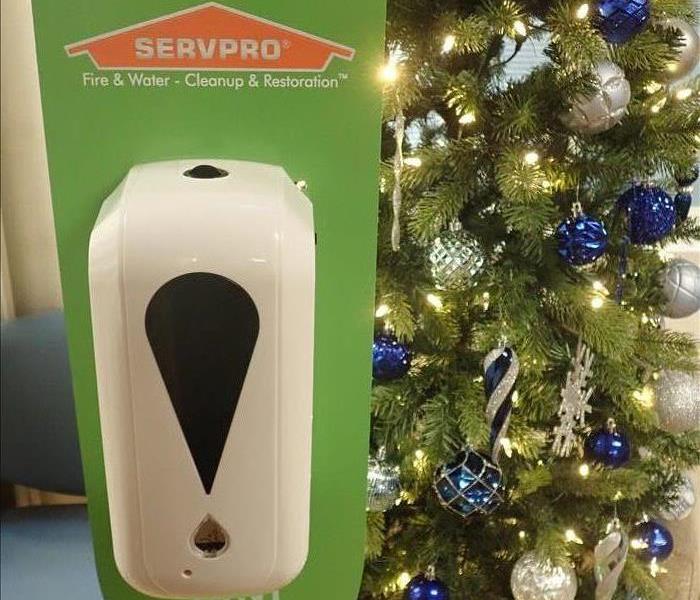 Light up your tree, not your home
Light up your tree, not your home
1. Start out small.
If you're a Christmas lights novice, light just two or three items, such as trees or bushes, to serve as focal points. Add new displays each year.
2. Stay safe.
Only use lights with the UL (Underwriters Laboratories) label and be sure you're using lights designed specifically for outdoor use.
3. Know your lights.
When it comes to holiday lights, there's a type available for every nook and cranny of your house and yard. Whether you want blinking rope lights outlining windows or net lights blanketing bushes, wising up on your holiday light knowledge will help you get the most bang for your buck
4. Check for burned-out lights.
Test light strings and replace any burned-out lights before decking the halls. Burned-out lights drain power from the entire light string, and the other bulbs will grow dimmer.
5. Out with the old, in with the new.
Avoid old-fashioned nails, staples, screws, or hooks when mounting your display. Electrical tape is a quick and easy alternative -- it won't destroy your roof, and it's a good tool for protecting electrical connections. Clips, such as shingle tab or parapet clips, hold lights to surfaces by applying simple, safe pressure.
6. Use a sturdy ladder.
Enlist a helper to keep you steady as you hang lights on very tall tree -- you'll stay safe and you'll be able to reach the branches easily. Attach lights to branches with tree clips or twist ties.
7. Work your way up.
To string trunks of deciduous trees, start at the base and wrap the lights around in a spiral. If you want to illuminate an evergreen, however, start at the top and zigzag lights through the center of the tree, getting wider with the tree's shape.
8. Consider the location.
If your evergreen can only be seen by passersby from the front, save lights and work by decorating the tree front only.
9. Add some dimension.
Consider ground and stake lighting for extra holiday oomph. Multicolored lights work well for outlining walks, paths, and driveways.
10. Avoid bright light overload.
Holiday lights can be dazzling and fun, but be careful not to overload your circuits. Include no more than 1,400 watts on a circuit. If other lights in the house dim when you turn on the holiday lights, your circuit is overloaded.
11. Look around for added sparkle.
Find illuminating inspiration in unexpected places. Perhaps a birdbath or decorative porch columns would look pretty with a little extra light. For hard-to-reach spots, or any place you don't want to use electricity, try battery-operated mini lights.
12. Call in the pros.
If you don't have roofing experience, limit your lights to eaves, gables, and the edge of the roof. Keep lights and cords away from metal. Beware of overheated wires, aluminum gutters, and ironwork decor. If you want more lights on the roof itself, call a professional lighting company.
13. Hit the switch.
Turn off outdoor lights before going to bed, and don't leave them on when you're away from home, unless they're attached to a timer with a photocell.
Appliances Most Likely to Leak in Eastern Honolulu
11/3/2021 (Permalink)
With the ever increasing use of technology the rise of electronics that use water has also increased exponentially. There are now numerous appliances in an average Hawaiian household that use water and conversely are susceptible to leaking. Sometimes these tools of convenience leak because of micro factors within the home, most often it is from wear and tear, as well as consistent use with no general cleaning.
Your water appliances are not meant to consistently function, especially without periodic cleaning. Hard water is another big factor as to why some of these appliances can leak. The consistent buildup of calcium and magnesium in the water causes issues for pipes and other metal fixings if not properly taken care of.
Here are the appliances that are more prone to leaks or accidents comparably to other appliances within an average American home.
The Air Conditioner
It is important to make sure that your air conditioner is operating properly, and optimally. Especially here in Eastern Honolulu there are probably only a handful of houses that do not have any kind of air conditioning unit in their home. On top of that, the filter within these AC units work exponentially harder than other units. As when on it is consistently filtering the air, picking up small particles that aren’t always good for your health. And if these particulates stay inside the AC machine, mold or other sporadic microorganisms can now habitat within your AC. Improper usage- being used 24/7 for 24 hours, can also cause pipe leaks and other issues with the AC fixings. It is important to clean out the AC unit fixtures every 2-3 months to prevent any real damage.
Dishwasher
Another appliance that is prone to water spillage is the electronic dishwasher. Leaks are very common especially with dishwashers that use plastic tubing to deliver water in and out of the machine. These tubes are prone to breaking and are rather thin, most issues with dishwashers come from the piping design. If your dishes are still dirty after usage that is also an indication that there might be a spill.
Washing Machine
Washing machines are notorious for leaking and continuously leaking. Most of these units need to be replaced every 2-5 years, or if anything some part of the infrastructure needs to be replaced. Washing machines use a great deal of water and therefore have a huge influx of water coming in or out at any given time. Hidden deterioration occurs with machines that are used consistently like any of these appliances. Make sure to give your washing machine breaks that it needs. And to replace your machine at least every 10 years, as well as having it inspected every 6months to 2 years.
Hot Water Heater
This appliance is most ardently the machine that breaks down the quickest. Once one sign of dissonance occurs a whole onslaught of more comes. Water heaters have a 10-15 year duration or warranty. But leaks can occur from any point in time, due to the habitual use of water in American homes. The seals- of any design or material- wear over time from the continuous pressure of water. Additionally the natural degradation of such infrastructure naturally occurs with heat; therefore the heating and cooling process does a number on any chemical. These kinds of leaks can also go unnoticed so it is important to inspect it every 6 months to 2 years as well.
Anything can cause home-owners or commercial owners alike issues with an innumerable amount of appliances. And with the ever changing industry of cleaning, electronics, as well as smart systems. The increased use of electronics in the home setting will only continue to grow. Make sure to research the most optimal design or the best fit for your home, there are so many companies innovating and redesigning everyday appliances. It is important as a user of such appliances to be aware of the movements that occur in the industry.
Call us with any questions, comments or concerns at (808)395-9545- we are here to help the Eastern Honolulu area at any time, any place. Our phone number is a 24/7 hotline because disasters, and emergencies don’t wait for anybody so neither do we. Our goal behind any of our jobs is to make sure that your space looks… "Like it never even happened."
Choose the Professionals of East Honolulu: Choose SERVPRO
10/31/2021 (Permalink)
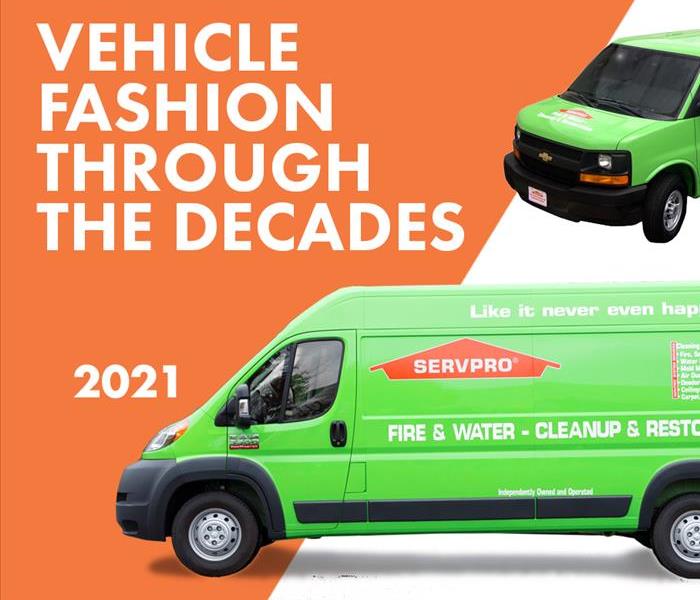 We have been serving the community for the past three decades justly so- gaining noteworthy accolade. We will continue to strive for excellence.
We have been serving the community for the past three decades justly so- gaining noteworthy accolade. We will continue to strive for excellence.
We build back after natural disasters, our goal is to make it… "Like it never even happened." We do more than just replace, our main goal on a site is remediation and restoration. With no intentions to build back better, or to just buy and replace everything. That is the SERVPRO, the SERVPRO promise we offer our community of East Honolulu. We can’t truly bring back the items that have been damaged, but with our expertise we can remodel, clean, and refurbish housing infrastructure.
There is a true difference between restore and replace, we here at SERVPRO of East Honolulu aim to do the first rather than the later. Technicians of all disciplines also have this distincting that splits the good companies from the great ones. Pre-loss condition is our trigger word at SERVPRO of East Honolulu- we want your house to look like any damage happened whatsoever. This also keeps costs low on each end, not fully replacing everything with a scratch keeps your wallet healthy and our prices cheaper.
Another way we keep your wallet healthy is our pretesting methods; these methods are preventative measures to make sure everyone is in check even our buildings! Here in Hawai’i most buildings were renovated in the 60s-80s- those older buildings may have asbestos in them. Asbestos is a building material originally used because of its lack of flammable properties, only later did we find out the adverse health effects to any organism that has lungs. We don’t work with materials that need extra precaution, and leave that to technicians who are qualified to handle such. We know the extent of capabilities, our limitations keep our workers and customers safe.
Just as much as we are efficient we are organized. SERVPRO of East Honolulu uses various methods to keep organized, from our cleaning supplies to the inventory of your goods. One of our methods comes from an app called Pack Out, this enables us to locate virtually everything we ever packed for you. Using QR codes to locate items- goods that were wrapped individually and boxes. It is an extensive system, with pictures, descriptions, and more to hold us accountable with your precious items. This itinerary is also available to you via a pdf we can email, making the whole process more convenient. Making it another reason you can trust us with big or small projects, our organized staff make the temporary move in and out a smooth transition.
We also offer our community of East Honolulu 24/7 call hotlines, for any emergency. We know that natural disasters happen at any hour of the day, SERVPRO of East Honolulu is here to answer that call. We run right behind the local authorities, or we vacuum up water at 2am from Ala Moana. Because well life does life.
Oahu is a small island with many local restoration businesses, we strive to stand out with our work, ethic, efficiency, and organized reproach. SERVPRO of East Honolulu loves our community and responds to any questions, comments or concerns through our website or by phone at (808)395-9545.
How We Clean Smoke Damaged Jewelry in Eastern Honolulu
10/31/2021 (Permalink)
No one likes to clean after a fire takes place, the worst thing about fire damage is the smoke damage that exponentially affects more than the fire itself. Soot and smoke is acidic and corrosive, it is not good on anything especially jewelry.
Our advanced technicians know how to clean any and all goods or materials because we have many IICRC certified individuals. IICRC is the Institute of Cleaning and Restoration Certification; this is a nonprofit organization that works on setting standards for the restoration industry. All SERVPRO franchises use IICRC programs to get certified and it is trusted in the remediation industry. The IICRC continuously works on better techniques and finding more ingenious ways of cleaning for businesses to adopt and lead in the industry.
That being said, there are a few ways for cleaning jewelry after it is affected by a fire- even though it looks like nothing is on goods soot can still be present.
- Dry cleaning- uses microbial dry wipes or also dry sponges that absorb particulates. This is occasionally used for pre-cleaning wet cleaning but only if the case is extreme. If there are particulates flaking off jewelry.
- Wet cleaning- this is the use of towels and cleaning spray, our sprays are always EPA-grade and pet, human friendly. This is when particles are relatively easy to dry and mostly is used when jewelry was in the same area or near the affected damaged area.
- Foam Cleaning- this is a softer treatment that comes from an aerosol canister that dispenses solvent via foam. We exclusively use microbial towels- but for projects that need foam cleaning it is crucial.
- Immersion Cleaning- Uses an ultrasonic cleaner that coagulates dirty molecules, even oxidization regardless of soot issues.
- Immersion cleaning is the best way of cleaning metals, jewelry especially. The cleaner is a big tub of solvent, we leave jewelry in there for a longer amount of time than other things because metal takes a longer time to clean.
We handle precious metals all the time, and can also keep a tally of your goods that you can also keep track of. As always SERVPRO of East Honolulu is here to kokua for our community, commercial, residential- we treat all business the same. Call us with any questions, comments, or concerns at (808)395-9545.
Owning Commercial Property in Eastern Honolulu
10/31/2021 (Permalink)
It is a huge undertaking to own a commercial property, especially to make sure that it is maintained and operating properly. Some hotels and malls use $30,000 worth of electricity a day, and it is not always a given for the businesses to consistently make rent every month. Business owners and commercial property owners share similar anxieties about infrastructural needs or happenings. It is no one's intention to ever create a problem down the line by negligence but it indeed occurs.
This list is important to keep in mind, before you buy a commercial property. Not everyone is an honest business man and there may be future finances after purchasing that you have not known about. This prevents mostly anything like that from happening.
Check to see if the following structures have sustained or any damage to them:
- Roof
- Pipes
- Foundation
- Plumbing
- Drain System
- HVAC
- Ceilings for previous water damage
Issues with these structures can be out of the control of any person’s hands. Making sure that these areas are not already damaged though when looking at properties in the Eastern Honolulu community is important to a great start as a business or property owner!
It is easy to get an appointment with us, SERVPRO of East Honolulu is inspecting your building or property for any damage. We also do a free of cost evaluation for your property- this keeps imperative information on your property in our database, so if anything happens we can run over there and clean it up… "Like it never even happened." Call us with any questions, comments, or concerns at (808)395-9545.
DIY Cleaning in the Urban Eastern Honolulu Area
10/31/2021 (Permalink)
There are always new products coming in and out of the product, chemicals are being taken on and off lists of cleaning approval with the more data present. Some of us with allergies, pets, children, or other sensitivities can not always buy products with bleach in it and hope for the best.
Additionally some of these products are not very effective for the nefarious chores you use it for. Like bleach products- the drying time of chlorine is very short; therefore bleach may not always clean your surfaces. It dries way too quickly for porous surfaces like wood, grout, and other organic materials. This is because the time needed to seep into the surface of the furniture being cleaned is cut in half with some chemicals and their properties.
Bacteria can be killed with UV light, there are so many different ways to properly, effectively disinfect your space whether it is residential or commercial. One of those ways can be naturally, saving you money and also another step to a more sustainable future. Sustainability to the new cornerstone of our everyday life. Here are some common household ingredients that can also be used to clean!
Lemon
Lemons are one of the most effective ways to clean because of the acidic nature of lemons. This is also not a very hard fix as many sprays, chemicals, and solvents often use citrus aromas for a satisfactory clean. Lemons are a great way to add a fresh scent around, cutting lemons in half and placing them around your house is one of the best ways to deodorize. You can polish your furniture, clean your drain, use it for everyday wiping surfaces and more. Lemons are one of the most natural ingredients that is found in chemical sprays for cleaning anyway this is an easy ingredient to incorporate. You could even clean your microwave by using lemon juice with water, heating it up the condensation will clean most of your staining. Another way is by wettering the surface of your cutting board, adding some salt enough for texture on the board, and then going in with half a slice of lemon and scrubbing the salt. This cleans your board, and also deodorizes it.
Coffee Grounds
This is another deodorizer that is not commonly mentioned when one thinks about natural or DIY cleaning products. Coffee grounds have a bigger range of jobs than that of lemons or even the later baking soda. Coffee grounds can be used to re-stain furniture, deodorize fridges, cleaning/deodorizing pipes and sinks and also cleaning your hands or dishes. Another way is to also put coffee grounds on fire ashes, spills or even puke. The coffee grounds soak up the moisture and stop the smell in its tracks.
Baking Soda
Baking soda is one of the oldest natural cleaning solutions since the 1950s, this basic powder is a great product for all kinds of cleaning, sanitizing and deodorizing. It is also pretty reactive with a few ingredients that can be to the advantage of the person cleaning. Because this chemical is from a basic nature it tends to destroy organic molecules that tend to be acidic. This means that baking soda breaks down dirt, malodorous odors, grease, and other alkane molecules. One of the best ways to use baking soda that isn’t with lemon is for your carpet, sprinkling some baking soda on top of your carpet and then waiting for a few hours. Deodorizes and thus cleans all the residue left from foot oil, matter found from your shoe...etc.
There are numerous ways to clean a commercial or residential space, SERVPRO of East Honolulu proudly uses solvents only endorsed by the EPA and are friendly to the health of organisms that use the building. There are a lot of misconceptions when it comes to cleaning, especially naturally. Think about incorporating them into your cleaning routine, for a refreshed scent, and happier lungs.
Call us with any questions, comments, or concerns at (808)395-9545, we are a locally owned franchise. We are here for our community- our customers, be more sustainable and environmentally conscious today! Starting with cleaning your counters with a little bit of lemon water instead of bleach.
20TH ANNIVERSARY AWARDS GALA & CONCERT IN TRIBUTE TO NATIONAL FIRST RESPONDERS DAY
10/29/2021 (Permalink)
 First Responders Children's Foundation presented SERVPRO CEO Rick Isaacson with the Corporate Hero Award
First Responders Children's Foundation presented SERVPRO CEO Rick Isaacson with the Corporate Hero Award
In 2017, the United States House of Representatives designated October 28th as National First Responders Day to honor those who perform selfless acts of bravery every day in their commitment to public service and community safety. Please join First Responders Children’s Foundation on the eve of National First Responders Day as we present a Public Service Hero Award to a member of each first responder category: police officers, firefighters, paramedics / EMTs, nurses, medical personnel, 911 dispatchers.
Last night, the First Responders Children's Foundation presented SERVPRO CEO Rick Isaacson with the Corporate Hero Award during an awards gala and concert held in honor of #NationalFirstRespondersDay.SERVPRO donated $100K to the foundation this summer and has been working on a strategy to localize the relationships among SERVPRO franchises, their communities’ #firstresponder organizations, and FRCF.Another highlight of the special event was meeting Nurse Amy O'Sullivan, who was 1 of 6 women, Mattel honored with their own one-of-a-kind doll for their work during the pandemic. Kristie Isaacson seized her moment for a photo with Amy and the Barbie doll created after her. O'Sullivan was named one of Time Magazine's 100 Most Influential People in 2020.
Tips When Grilling in East Honolulu
10/25/2021 (Permalink)
Now that it is not blazing hot with the heat of the summer, and “cooling” down for fall now is the perfect time to grill in eastern Honolulu. Although, it does not get cold here in Oahu- it does cool it with the low 90s and high 80s in the fall. Barbecuing with family friends and ohana is a great pastime that we do in our community. And although these usually call for fun gatherings, an open flame is a safety hazard. It is better to be safe than sorry, especially when celebrating; here are a few tips when grilling this season:
- Make Sure Children and Pets Keep Their Distance
- Ensuring that children and pets are at least three feet away from the grill is imperative to their health respectively. Both do not understand the gravity of an open flame initially, even pets not next to the grill can still cause an accident with the rope that’s holding them.
- Loose Clothing
- Anyone’s loose clothing three feet or closer to the flame is a potential fire starter. Loose fabric or an abundance of it can cause harm and are not always accounted for on a person. When cooking- especially the chef- but anyone around make sure that the loose clothing is tied back and the farthest away from the flame.
- The Grill is in a Safe Location
- The grill or any cooking tool that uses open flame should be at least 10 feet from a building or anything that could potentially burst into flames. Including items outside that happen to be above or below the grill. Make sure that nothing in a radial distance of 10ft is close.
- The Two-Zone Method
- The two zone method was designed to prevent contagious fires that may cause accidents. This is by creating an intangible division in your grill where half of your grill will continuously stay empty and the other half full. This way if a flare-up occurs the food can be safely moved to the other side of the grill. It also improves the quality of your food as it creates a side to sear and another side for slow cooking off a flame.
- A Chimney Starter
- Lighter fuel is most commonly used for igniting flames on the grill. This may not always be the safest option, lighter fuel tends to aggravate the fire already started and burns bigger and brighter when initially dispensed into the fire. A chimney starter lights the coals more evenly and is also safer.
And finally- the most important tip when grilling at your home or anywhere else is to make sure that a fire extinguisher is nearby. Water will be a futile extinguishing agent as it is a grease fire, which would make the flames get even bigger and hotter if contact ensured. If there ever is a flare up that may be uncontrollable, close the lid and wait until it is operative again. And regardless if something happens, SERVPRO of East Honolulu is here. We have seen our fair and share of charcoal burnt houses. Call us with any questions, comments or concerns at (808)395-9545.
Air Movers: An Asset to SERVPRO of East Honolulu
10/16/2021 (Permalink)
The most integral tool in our drying process is our air movers, these equipment are loaned out to our customers for water damage in properties. We have loaned these out to private homes, hotels, condos, apartment buildings, Ala Moana shops and more. We often pair our air movers with dehumidifiers or “dehus”; the machines have a few tubes and it aims at taking moisture from the air heating up the room which the air mover circulates in the affected area. We utilize four different types of air movers here at SERVPRO of East Honolulu:
- Velo Air Movers
- This type of air movers are low profile thereby great ways to dry hard to reach places. We mostly use this kind of air fan for drying carpet. It is also an amazing tool for baseboards and other smaller infrastructural details. You’ll likely see our technicians put these kinds of smaller fans near the corner of wet areas.
- Sahara Air Movers
- These kinds of air movers are similar to velo air movers in the sense that they are smaller, more concentrated streams of air. This one is a little more versatile than Velo Air Movers; it has the ability to adjust vertically. And when the ceiling is wet it is the best air mover for the job.
- Ace Fan
- These are also amazing air movers that all of our vans are stocked up on. They are versatile, quick on the go, and do just the job for any basic or average water job. These air movers kind of look like snails- the air pressure is adjustable and the movers are stackable.
- Vortex Air Mover
- The air movers utilize negative pressure that dries a space exponentially.
We try to structure coefficients by choosing the right kind of air mover for the job, it is important to make the right fit for you. Here at SERVPRO of East Honolulu we strive for the best… "Like it never even happened." Call us with any questions, comments, or concerns at (808)-796-0443.
Reasons for Commercial Water Damage in Eastern Honolulu
10/15/2021 (Permalink)
Any sort of natural disaster is unaccounted for and a threat to any business owner in the Hawaiian Isle. Here in Eastern Honolulu, tons of offices, businesses, or non-profits organizations are placed in big plazas, skyscrapers, or buildings that tend to be decades old. These types of commercial properties are prone to water damage just statistically by the innate amount of people occupying square feet. SERVPRO of East Honolulu has been serving our community for a while, we have the knowledge and tools to measure, access, quantify, and actualize a new space- unshaped by the water damage. "Like it never even happened."
There are a few reasons as to why water damage could incur, here are the top 4 reasons for why in the Eastern Honolulu area:
- Bad Weather
- During Hurricane Season, rain starts to get harder and faster, and flooding is more likely to occur. Hurricane season happens from June- November of every year. Although nerve wracking, SERVPRO of East Honolulu boasts numerous equipment pieces that can prevent flooding, or stop it while it is happening.
- Pipe Breaks
- With time our knowledge on pipes, and the ability to carry water has increased. Before copper pipes were the norm, then it was steel, and now it is PVC. Like previously aforementioned, the buildings in Eastern Honolulu range in age just as much as they do size. It is important to recognize that some of these buildings have not been renovated since the 1980s or 1970s. Therefore some of these buildings have antiquated pipe systems, or metallic ones that inevitably erode. Although SERVPRO of East Honolulu knows more about water damage than plumbing/irrigation; we partner with many amazing plumbing companies to make sure our customers are satisfied overall.
- Foundational Issues
- Not only are these buildings prone to wear and tear from being old, these buildings also are found in the capital of our state of Hawai’i! Where it is notorious to be hot, uncomfortable in the summer- amazing every season after. These foundations that the buildings find themselves on tends to expand with the daily temperatures. The way cement works it expands and contracts with the temperatures, which is why asphalt roads, cement sidewalks… etc. crack after a few years. These cracks can host water leaks, creating an environment that supports mold. Foundational issues are additionally dangerous as one tends to notice them when it becomes too late.
Any type of water damage can happen especially in the Eastern Honolulu area. Anyone can fall prey to a toilet leak, a pipe burst, or naturally occurring fissures in foundational layers. We kokua our community by being knowledgeable, and economically feasible for any kind of natural disaster. Our first appointment is free if you call us with insurance. Call us with any comments, questions, or concerns at (808)-395-9545.
What To Do When Water Damage Strikes Before SERVPRO of East Honolulu Inspects your Property
10/1/2021 (Permalink)
My, oh my, how the fall rains have been relentless on our moku here in the eastern area of Honolulu. Many of the other islands have also experienced flooding amongst the slew of problems that occur when harsh weather during hurricane season happens in Hawai’i. In recent events there have been areas of the island with power outage experiences, as well as inaccessibility to driving, or the damage of property. Although this is no surprise, and water damage happens frequently around the island from natural and human sources; it is important to be aware and on your toes before the professionals head your way.
Albeit in some instances there is no need for our SERVPRO of East Honolulu technicians to be there, if it is a tiny amount of water damage that has been dried and disinfected. Our professional services create a safety net between you and your damaged property, it is a big issue nonetheless we are working relentlessly with your insurance company to make it… "Like it never even happened."
While it may be daunting when water damage or storm damage occurs, because everything ever constructed has been proven to be finite; find solace in organized, thorough help and consider some of these statements:
The most important aspect at the end of the day is safety, that the organisms using the property are safe, additionally the property is more or less in the process of becoming safe again. There might be some hiccups in insurance claims, policies… etc is it safe to be in the property? Are there any hazards that our technicians need to be aware about, such as wiring, electrical issues, slippery areas, or pollutants amalgamating to an unpleasant situation they need to be aware of. Materials that have been damaged may have bacteria, and diseases that are a biohazard, do not touch wet materials in most instances of water damage. It is equally important to note wet materials tend to be heavier than when dry.
At the end of the day Safety comes from knowing the means you exist in, what means can fix your house in a safe manner, plus what you can do and not do. Such as lifting heavy materials, living in a home that is infested with harmful bacteria, or just performing unsafe acts.
Until our technicians with shiny ribbons of neon green on their shoulders come knocking on your door. Here are some other methods you can use to help us help you. All excess water should be removed, unless it is an uncontrollable amount. It is imperative to remove all concentration of fluids. Removing excess water from all materials, items, objects that have been damaged will actively halt the damaging process of water. Properly drying out “soft goods”- goods that absorb liquid, is key to the preservation of your home. This drying and removing of water can come and we have seen it in all shapes and sizes. With all paintings holstered up, or loose items on the floor piled outside the apartment in the hall. Preventing further damage from the initial accident is our SERVPRO of East Honolulu mission.
You can not prevent water damage from occurring, when these disasters occur from the elements no one is truly orchestrating it. No one wants the sewage pipes to burst on the side of a building, and until they figure out a continuously safe way of transporting elemental materials SERVPRO of East Honolulu is here for our community. The only thing one can do is the means of what they work with, preventing further damage is the only thing a person experiencing damage can do until help arrives. Call us with any questions, comments or concerns at (808) 395-9545.
Safety Tips in the Event of Fire in East Honolulu
9/30/2021 (Permalink)
Fires do not wait for anybody, as they burn on their own accord.
It is imperative for one’s quality of life to know exactly what to do in the event of a fire. With the varying types of fires that occur any one of them can envelope any and all organic material in a matter of minutes.
Here are a Few Tips:
The most important part is preventative methods, these preventative methods enable a safer passage in the event of flames. When a fire does occur it is usually too thick of a smoke to see and much less breath. Ensuring that your smoke detectors work, and that your fire alarms are running smooth and if is a simple way to keep you safe while a fire happens.
This way there is absolutely the best way you can help yourself while an emergency happens and occurs.
Fire is unmanageable and tends to spiral out of control in a short amount of time, especially on properties because of all the flammable materials that go into making the infrastructure of buildings. Fire in a house can be anywhere from 100 to 600 degrees of Fahrenheit. Which is the reason why it is so important to stay low, staying low exposes you to lower temperatures thereby making it a little safer. It is not uncommon for it to be so hot in the fire that the air scorches your lungs and destroys clothes just due to the near vicinity.
Not only the fire is dangerous but the carbon dioxide in the smoke is equally deadly and if not more so. Smoke can be deadly and disorienting, back in the industrial revolution the main reason for lethargy was due to the smog of carbon dioxide. It is disorienting and can cause asphyxiation which is the medical term for suffocating.
It is important to remember that each fire and smoke situation is so different as fire presents variously with different types of materials and other certain aspects that dictate the grandeur and veracity of the fire.
SERVPRO of East Honolulu strives to educate our community about information on natural disasters. The better informed our community is, the safer it is when emergency natural disasters strike. Call us with any questions, comments, or concerns at (808)395-9545.
The Dangers of Lithium Batteries, and the Simple Tricks to Prevent It.
9/15/2021 (Permalink)
Lithium is more than just a metal that you read about in your freshman chemistry class, it is an excellent conductor that enables many of our common household items today.
The lithium battery, and the lithium-ion battery are conventionally used in almost all refillable battery systems or electronics that charge. Lithium charged cells are known for giving ample energy for a good amount of time, powering conventional tools like alarm clocks, toys, and virtually all remotes.
There are a few differences between lithium batteries and lithium ion batteries. The main being the ability to recharge such lithium-ion batteries. These are secondary cells that have the ability to hold a charge and continuously give charge to the devices in which they enable.
Both store energy releasing it in controlled amounts, which is the reason why lithium charged devices are so appeasing and are literally powering everything. Although, they are used due to the simplicity of their nature; there are health concerns that arise with any kind of electrical conventional tool.
What concerns do Lithium Batteries cause to arise?
There are always concerns when it comes to running electricity, the transference of energy or other moderately risky practices that are now our everyday life.
When you wake up you look at your cell-phone, turn on a light, take a shower, which all use some type of electricity, and thus energy.
Because we used battery fueled tools and mechanisms so frequently it is important to understand some of the innate dangers they possess. The most dangerous health possibility is if a battery short circuits or the overheating of the controlled systems within the batteries; which can also cause short circuiting.
This is especially a concern with lithium batteries as they do tend to overheat from copious common realities.
Such as a hot some day, overheating from outside temperatures and even from overcharging- that still exists and is ever more an issue as we increase the energy intake a electronic can handle. When any exposure to heat incurs this causes the battery to create an equilibrium within its system causing it also to release heat.
This heat can result in internal and external damage to your electronic goods. This has been seen in recent years with the Samsung galaxy phone series and various hoverboards that have since gone viral on the internet.
Which is the reason why you can not check them in your bags when flying, or send them in the mail. They are very dangerous and more sensitive to heat than other traditional metals.
As it follows it is important to maintain the battery system when it comes to lithium batteries. Ensuring that they don’t overheat, whether that is over-use of electronics or the innate temperature outside.
Here in east Honolulu it is especially important for consumers of lithium batteries to be aware of where their electronics are. It is consistently hot throughout the year making your batteries more prone to wear and tear.
Make sure to not leave your lithium powered devices in the car for too long, heat stays trapped in a car. Thus, it is important to make sure one does not expose their goods to this kind of heat for a long duration of time. It is also important to be charging your devices with reliable cables, occasionally some cheaper quality charging cables are hazardous. When they are sourced from reputable companies they tend to decrease the chance of catching your device on fire.
Using lithium ran batteries does not have to be a consistent danger. They are generally safe when used properly, this can be done simply by reading the manuals of devices that contain lithium batteries. But, on the off chance that these batteries do catch on fire- because disasters happen when we are least expecting it. SERVPRO of East Honolulu is here for a peace of mind.
Contingent on fire damage happening due to lithium batteries or for any fire source, call (808)395-9545 right after you call 911, and your insurance. We boast numerous qualified technicians who deserve their job and are consistently praised for a job well done.
SERVPRO of East Honolulu also does commercial and private properties alike, we do not discriminate on jobs. Because natural disasters also do not. And when it is all said and done SERVPRO of East Honolulu will make it "Like it never even happened."
What is a Defensible Space /// East Honolulu
9/15/2021 (Permalink)
Defensible space was the buffer commercial and residential property owners didn’t know they needed! O’ahu is a small island, packed with choke people, choke places, and just choke things compared to other regions of the Hawaiian Isle. Because of this, when fires happen it is terrifying for the whole community, and is even more imperative to the safety of all organisms residing in your home.
Defensible space is the buffer zone between the building, and natural terrain, as well as space in respect to properties. This space was curated by Americans who also deal with high volumes of fires, specifically in the Western regions of the United States. This zone enables safety procedures in a harmless, beneficial way for all walks of life to be safe whilst buildings are on fire. Time is of the essence when your home or property is on fire- as fire manifests and is deadly. There are certain symptoms of fire such as flames, extremely hot near and around the fire, or the embers that accrue from organic material burning. This organic material could be anything or everything on your property, there are very limited resources used to construct buildings that are flame retardant. This defensible space also gives the local authorities room to work with, that complies with safety standards they follow; which equally helps this method.
This space is rooted in the idea of zoning your property, to levels of fire hazardous materials, as well as spacing of said materials. This zone is primarily dealing with the outside space of your property, as well as utilization of flora. The most important principle to keep in mind is flammability, consistently removing objects, or plants that can catch your property on fire is crucial for an accurate defensible space.
Even when building/renovating your properties it is critical that you keep fires, water, and other natural disasters in check. Which comes from smart moves, and being overly prepared.
There is technically a Zone Zero that is 0-5 feet away from your property; it is not frequently touched on but arguably the most important. This zone usually contains doors, openings, porches, decks, lounge areas… etc. Usual objects, tools, or location is one would find near a commercial or residential property. Plants in this zone should always be maintained, and hydrated likewise these plants should be relatively low to the ground. It is important to make sure that all dead organic materials, whether that is mulch, fallen leaves- must be immediately taken care of. One should also keep in mind removing combustible materials from this area, whether that is Cars, RVs, Boats, or fences that will explode in fires. Keeping those kinds of materials away will keep your family, residents, and workers safe in case of an emergency. Furthermore, maybe keeping trash, and recyclable materials away from this zone will also create a healthier environment, that means moving your trash bins at least 5 feet away from your property.
Zone 1 is the most frequented zone and talked about, this zone is defined for its emptiness, as well as cleanliness. This zone is arguably an additional 25 more feet of zone 0. This zone virtually has the same principles but, there are more nuanced applications to Zone 0 such as combustible goods. Zone 1 asks its users to maintain healthy plants, with branches, twigs, within 5 feet of the home. Trees should be maintained, trimmed, as well as be well spaced between other combustible materials no closer than 10 feet. If there are piles of wood or other sources used to create contained fires put these materials in Zone 2. Equally so, ensure that the natural environment is not interacting with your purchased goods, swings should not be near trees. Making sure these two elements of your exterior are well maintained as well as not interacting heavily with one another.
The final zone- Zone 2 is the area that is 30 feet to 100 feet away from the property line. This area does not have rigorous standards and regulations it hoists itself to. Rather this is the part of property that if you have the luxury of having needs to be just maintained. Ensuring there is no infringement of plants on each other is a good thing to keep in mind. This area of the exterior asks decorators to keep a radial of 10 feet of plants to be away from another. It also asks the grass to be kept 4 inches, and fallen debris 3 inches, altogether never over 10. As well as any wood pilings, these pilings should be not taller than 10 feet as well as resting on dirt with no plants near for 6 inches of the perimeter of the pilings.
SERVPRO of East Honolulu is here to serve the community and kokua after disasters. Our job as well as the authorities are a lot easier if safety methodology is already in place. With the ever growing innovations of technology of today, we can only imagine how much safer our lives will continue to become. The Defensible Space method is a tool of prevention that any household or office can practice. Although this method may not be applicable to some of our community members of East Honolulu; there are important tips for outside agricultural practices to keep you and yours safe especially during natural disasters. And if disaster still strikes- as it tends to do- SERVPRO of East Honolulu boasts a team full of technicians who can help every step of the way, until your home looks… "Like it never even happened." Call us with any questions, comments, or concerns at (808) 395-9545
When Demolitions are Needed Choose SERVPRO of East Honolulu
9/5/2021 (Permalink)
Disaster Strikes Within the Home, Water Damage Can Compromises the Very Foundation Leading Us to Use Controlled Demolition Tactics
Water loss is no joke, in our East Honolulu homes you can start to see signs of damage hours after water mitigation. SERVPRO of East Honolulu technicians accommodate for any type of water damage. Using various solutions we can fix it, some structural damage- walls, floors, ceilings- need controlled demolitions.
The amount of demolition depends on the amount of compromised goods. When floors are warped or ceilings have depressions them.
Early action in taking these goods out of your house minimizes additional damages that incur leaving them in. Causing issues needing to “demo” even more areas of your house, or reconstruction later on.
These demolitions preserve materials not compromised, while keeping the cleaning and restoring processes to the minimum. Demolitions usually occur after the first few visits, and all water detected is evaporated.
Technician advice determines the amount of building materials are compromised, and our demo team is sent out to take the precise affected areas.
When Do We Use Controlled Demolition?
There are many materials used to build a house, or property, some are more prone to being compromised from water than others. Materials especially affected through overexposure to water and high absorption rates are typically taken out as soon as possible. Hindering the growth of bacteria harmful to the uncompromised parts of the property.
Using our team of professional restoration technicians, who know of the various materials that would need a demo, they can remove these materials in a clean, efficient way. Our SERVPRO team helps all along the way whether it is for mitigation, or restoration we promise excellency.
Some materials directly impacted from water damage:
- Ceiling Tile
- Wood Framing
- Hardwood Flooring
- Cabinets
- Dry Wall
- Carpet
No matter how severe water loss incidents might initially appear, our SERVPRO of East Honolulu team can help with a fast and experienced response. Give us a call anytime at (808) 395-9545
The SERVPRO of East Honolulu Way (pt.2)
8/29/2021 (Permalink)
Sometimes cases need a demolition, whether it is ripping carpet into manageable sizes and gently carrying it to our truck. Or be it that the water logged dry walls need to be removed into controlled measurements to save the rest of your wall in vicinity of the damage.
When you approve this demo- the next step is cleaning and repairs.
We vacuum the last bits of water and wet material, or sweep up the dust accruing from demolitions. It is prepped for the contractors to reconstruct your property. Who are specialized within the realms of reconstruction, flooring, or mechanical needs. SERVPRO of East Honolulu accompanies you whilst reaching this step.
Your house will be prepared for the contractor(s), fixed with a nuanced solution, with no compromised material left in your periphery.
Your information will be in our database, because we are here for our community. When you ever need us again, we can know the pre-conditions and navigate your home with familiarity thus confidence. We may call you asking to write a review- we desperately need those. Or you call for updates and we call for invoices.
It is always a pleasure working with our community of East Honolulu, and pride ourselves in a job well done.
"Like it never even happened." Call us at (808) 395-9545, or via email SERVPROehonolulu@aol.com
Getting Through Power Outages Caused by Storms in East Honolulu
8/28/2021 (Permalink)
It is hurricane season in the beautiful Hawaiian Isle, but what does that mean for its inhabitants? With the ever increasing rise of hurricanes- which will not cease until November; it has been a tumultuous time for some of us in the East Honolulu area.
The power has been faulty, leaving some of our community members with no electricity for hours upon hours. Here on the island of O’ahu we have a little more protection as hurricanes naturally gravitate to the Big Island of Hawai’i sparing us of some of the more dangerous winds. Most recently, this has not been the case as the last two tropical storms stayed clear of our oldest sister’s path: Mauna Kea who resides on the Big Island.
Especially with the ever-changing issue of climate pollution and its effects there may be heightened feelings of anxiety with the cool breezes in the air.
Because it is flash flooding season, where Hawaiian roads become rivers, and the mountains become raucous, understanding your options as a conscious consumer while the electricity is out becomes imperative for a safe space for your workers, ohana, and properties alike.
Electricity is one of the most important common conventions in this modern day, used for virtually every step of our day to day routine. It may be frustrating and nerve racking to experience power outages, as power provides for us with air conditioning, enables us to keep perishable food for a longer period of time, and with the ease of phones halts communication when out.
Here are some tips to follow when power outages do arise:
Tropical storms, depressions, and hurricanes alike do not come unannounced. With the advances in technology we are able to track most activities in the Pacific Ocean; especially those in our near vicinity. It is important to prepare for the event of an emergency when one initially gets the hurricane warnings. One of the ways to preserve communication with the rest of the East Honolulu community is to preserve your battery on one’s cell phone whilst trouble occurs. This way when the power is out, and there is no way to charge your devices. There is “juice” in your phone allowing you to contact who you need to, and get consistent updates from the local authorities.
Another preventative method is to write down the names, addresses, and phone numbers of important services/people when the electricity goes out. That would be the nearest hospital, the nearest police station, the nearest hurricane shelter accessible to the public, or family members who may not be as prepared as you.
Another great preventative practice is to consistently be stocked in the event you can’t leave your house for 48 hours. The government of Hawai’i recommends all of its citizens to be stocked in case of an event for at least 48 hours, non-perishables like spam, crackers, or granola bars are great food to store whilst in hurricane season.
It is equally important to have “back-up” methods in storing perishable food and medications that also must be refrigerated. Consider having a bag of ice consistently in your possessions in case of emergency. Especially for family members who are diabetic on important medication that must be stored in a cool place.
Whilst the power is out it is a great asset to have is a generator that can keep your house running smoothly. Generators are a great way to keep your family safe and your house functional while natural abnormalities occur. Just as important is to understand the science behind generators, because they emit high gases of carbon monoxide it is important to keep the generator in a well ventilated place. Which is not the garage or within the home. Also, it is important to note the preservation of power when using a generator. While the generator is running only keep the most important appliances plugged in so there is no energy being used for unnecessary things.
A lot of our community in the East Honolulu area have solar panels, the same principles of the generator- besides the byproduct of carbon monoxide, can be applied to using the energy stored in the solar battery cells.
If you don’t have a generator or solar panels remember to use the fridge and freezer as minimally as possible, keeping the cool air inside the non-working appliance is imperative. Additionally, gas stoves continue to work while the power is out, but should not be used to heat your home. As it also releases carbon monoxide dangerous to all organic organisms.
And while you are keeping your ohana safe, SERVPRO of East Honolulu is here in the event your house stands wayward after the storm. We kokua for our community, and pride ourselves in the knowledge of restoration as well as remediation especially after natural disasters. Our technicians understand water damage to a property like the back of their hand as it is the biggest issue residents of East Honolulu face. Call us with any questions, comments, or concerns at (808) 796-0443.
How do we Biohazard Clean in East Honolulu?
8/28/2021 (Permalink)
Exposure to biological and chemical contaminants can pose serious health consequences. A failure to properly remove such substances can contribute to unhealthy and dangerous environments. SERVPRO of East Honolulu is trained to safely remove biohazards and dispose of them properly in accordance with OSHA and health regulations.
Equipped with the necessary safety apparatus and cleaning products, we can help transform these unhealthy environments back into clean, safe homes and offices.
Please refer to our Biohazard Emergency Tips - Until Help Arrives Guide and follow these tips to protect yourself and your property.
Need Biohazard Cleanup Services?
Call Us Today – (808) 395-9545
The decontamination of a home or business due to trauma, sewage backups, chemical spills, hoarding or other biohazards can be both dangerous and emotional. Specialized training and experience is key when choosing a cleanup company to resolve these circumstances.
We provide cleanup and recovery services for many biohazard situations. These include the following:
- Sewage backups
- Crime scene residues
- Suicide/death accidents
- Homicide cleanups
- Blood cleanup
- Accident cleanup
- Hoarding scenes
- Animal waste/remains
- Chemical spills
- Tear gas cleanup
- Meth lab cleanup
Common Biohazard Scenarios
Sewage Backups
Sewage backups and dark water intrusions are more than nasty, smelly deposits – these damages also introduce harmful microorganisms into a structure. We remove the sewage, contaminants, and moisture, and help ensure the structure is properly cleaned, disinfected, and deodorized.
Bloodborne Pathogens
We remove and dispose of bodily fluids, tissue and other potentially pathogenic substances resulting from accident, trauma, crime or death. Trained SERVPRO of East Honolulu Professionals clean, disinfect and deodorize the structure.
Illegal Drug Manufacturing Labs / Meth Labs
SERVPRO realizes many of the chemicals used in the production of illegal drugs such as "meth" are volatile and can leave harmful residues throughout a structure. We follow federal and state guidelines to properly clean all surfaces.
24 Hour Emergency Service
We are available 24 hours a day—our highly trained technicians are standing by. We have the qualified trained professionals who are ready to respond to these incidents. We will always treat your property and the people involved with the greatest empathy and respect in the face of trying circumstances.
Why You Call the Professionals
8/15/2021 (Permalink)
SERVPRO of East Honolulu hosts teams of technicians who are IICRC trained, and the latest technology in the restoration industry to combat all concerns.
Whether it is cleaning measures to prevent COVID-19 spreads or leaky refrigerator, we’ll blow your mind with expertise and efficient speed.
When you are experiencing water issues it is not uncommon to dry the water yourself, in circumstances where the water spillage is small it works.
But SERVPRO of East Honolulu understands the dangers of water damage, and diy-ing it might cause more problems for you in the future.
When dried improperly it imposes the start of mold/bacteria growth, whilst also keeping compromised materials in your home. Harming originally kosher materials bordering the damage. SERVPRO of East Honolulu has a thorough process to make sure all anxious thoughts are just that.
Some initial thoughts pestering our minds when ensuring a methodical and clean response look like,
- Where else do I need to check that they may not innately be near the problem?
- Where is the most moisture as per the thermohygrometer?
- Is it possible for this area to have mold growth?
- What kind of water is it categorically?
- What kind of ceilings, flooring does this property possess?
- How old is the property?
We prepare for these important discussions, when the home made solutions of drying go awry.
In our next post, you can expect our process in its glorious entirety. Until then, SERVPRO of East Honolulu is more than happy to answer questions left on FaceBook, Yelp, etc…
Call us 24/7 for any emergency at (808) 395-9545
What to Do if You Smell Natural Gas
8/5/2021 (Permalink)
When natural gas leaks occur due to stoves or other appliances it is very important to make sure the problem is solved as quickly and smoothly as possible.
These leaks can’t tend to create a huge fire hazard due to the extreme flammability of the gas. Once you smell the natural gas, which has an odor to be detected. These are three steps to once smelling the fumes, once done contact your local gas company and/or the fire department and keep a safe distance.
- Keep the Lights and other Electrical Equipment Off
When searching for the source of a gas leak, it is very common for gas explosions to occur. Make sure to turn off and keep off all electrical appliances and lights to ensure that sparks do not generate. Use flashlights to find the gas leak and maneuver your way around the stove.
- Finding the Source and Shutting Off the Gas
Occasionally burners on a gas stove or oven turn on and cause a buildup of natural gas within a home or property even if there is no leak. Make sure to continuously check the condition of connections of gas and gas lines leading to other appliances one might use. If a leak is present and or the source of the gas is not evident you can reduce the risk of a gas fire by simply turning off the valve on the gas meter.
- Thoroughly Ventilate the area and Leave Immediately
Even if you turn off the gas valve or gas meter or have simply found the gas leak, the process of ventilation is a necessary step. High concentrations of natural gas can endanger your family and workers. While you are ventilating and airing out the gas it is important to make sure that everyone in the property leaves. That way no one breezes in the toxic fumes, ensuring that the problem is solved.
Here in East Honolulu, the local gas company is Hawaii gas. After notifying the authorities of a natural gas leak, it is important to contact a gas company in order to thoroughly fix the problem. Their number is (808) 535-5900. And if any accident happens which is beyond your control, SERVPRO of East Honolulu is here for any restoration and damage control issues. Our number is (808) 395-9545.
Checking Your Refrigerator Saves Money in the Long Run
7/31/2021 (Permalink)
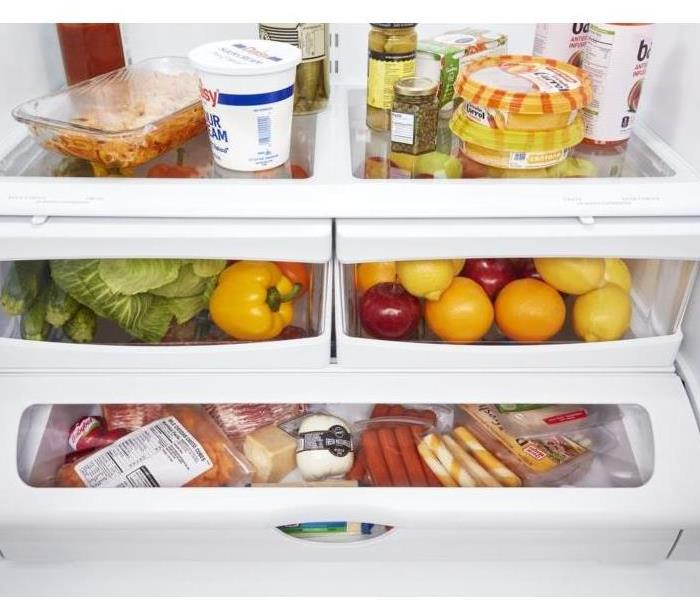 It is integral for an extended life of the refrigerator and for the health of your home.
It is integral for an extended life of the refrigerator and for the health of your home.
A home-owners kitchen houses many integral appliances for good health and a happy home.
Coffee-makers, refrigerator, sinks, dishwashers, and even water coolers may cause water damage.
Maintaining these appliances are integral to ensuring there is no water damage to incur at any point of time. The appliance most prone to causing water damage is the refrigerator; these are also the worst kinds of damage as they tend to start small and progressively get worse with more water leaks.
More so, these leaks tend to start in the back of the refrigerator, out of one’s normal line of view. Common reasons as to why these appliances leak are due to drain blockage, un-leveled flooring and/or the water supply line of the ice maker component.
- Drain Blockage from the Defrosting Component
- The defrosting drain can become blocked after continued use, causing ice or other debris to build up. Not only making your appliance prone to leaking but makes the fridge a little less functional. It is recommended to flush this drain system once every six months or two times a year. To flush the drain simply add one teaspoon of baking soda to hot water. Put this down the drain and the pipe should be good.
- Leveling the Refrigerator Properly
- It is important to make sure that your fridge is slightly higher in the front then in the back, that way the coolant can flow properly within the appliance. This should be checked every time you install new flooring or when once buys a new fridge. The front should be a quarter inch to half an inch higher from the back area of the fridge. When it is not flush the coolant has to work extra hard forcing more fluid in the pipes than need be. This also leads to leaks and stagnant liquid within your fridge causing more issues in the future.
- Watching the Water Line Supply
- It is important to be in tune with your appliance, when ice production is irregular or the flowage on the dispenser this could be there is a bigger underlying issue of a leaking water supply line. To check if it is or not simply pull the refrigerator away from the wall and look at the supply line itself in the back. This line has many different colors for different types of refrigerators, make sure to check the manual before inspecting them. Pulling the fridge too much can cause irreparable damage make sure to check with the utmost care.
Other indicators of water damage is warped flooring or swelling, this swelling when pushed down the water will erupt from it.
Any painted walls near the fridge with swelling, cracking, or bubbling are also good indicators of water damage. Yet the most important step is to find the source of the water damage and to stop it.
And once the source is stopped SERVPRO of East Honolulu can help dry the walls and all areas affected. Even aiding with the restoration process.
Call us at (808) 395-9545
Our Amazing Equipment
7/31/2021 (Permalink)
SERVPRO of East Honolulu is proud to present our Drying tools
Untreated water damage whether it is big or small has the potential to snowball into more serious issues like compromised structures or air quality.
In the mitigation process it is important to make sure every detail is accounted for. Such as dry materials, humidity levels, discoloration, mold growth, or foul order.
Treating each damage as threatening to your commercial or residential property is integral to total restoration of the property.
SERVPRO of East Honolulu has high-grade equipment accompanying our proficient technicians to dry any deposits of water moisture. These tools vary in expertise for any need making a significant impact on our overall quality of the job.
Here are some of our best equipment:
Thermal Foggers - This machine also uses a liquid-gas machine to project thick fog from a smoke deodorizer. Although the solvent works differently than the ULV foggers, the fog attaches itself to the soot, odorous particles deodorizing consequently disinfecting. Cleaning soft goods, vehicles, foundational structures and other hard places to clean.
Moisture Meters - Determines moisture content in baseboards, carpets, and walls. With highly accurate readings SERVPRO of East Honolulu can monitor the drying process.
Thermohygrometers - Which measures humidity in relation to temperatures. Upon knowing these certain statistics we then find the most efficient way to dry your property. With contaminated water damage it is crucial to know the temp/humidity levels to disinfect and deodorize thereafter drying.
Moisture Sensors - Detects moisture in carpets, baseboards, and walls.
Ultra-Low-Volume (ULV) Foggers - a deodorizing which creates gaseous cleaning agents, these fine particles penetrate all sites after a dry odor that may odorize from bacteria. Due to the liquid-gas process within the machine, we also use it to inject disinfectants, fungicides, etc… in hard to reach surfaces.
We help make it “Like it never even happened,” using these special grade equipment and trained technicians.
We are available 24/7 for emergencies at (808) 395-9545
The Reason Insurances Love Us
7/30/2021 (Permalink)
We are the Certified Mold Remediation Technicians Preferred
Mold is a hard to solve issue with dynamic tactics needed, seldom do people absolve mold without professional help. When mold gets really bad, to the point of physical infestations, malodorous smells, and discolored building materials… it is time to call your insurance.
It is integral to go through the insured route- adjusters tend to favor mold remediation done by certified individuals from notable institutions like the Institute of Inspection, Cleaning, and Restoration Certificate.
SERVPRO of East Honolulu is a trusted brand to insurances all over our East Honolulu community. We pride ourselves in having regulated safety procedures, teaching our people the first time, the right time.
Our treatments are from a sound mind with analysis in respect to water moisture, air quality, and conditions of the housing materials.
Mold remediation is seldom covered with the specific peril policies of homeowner policies. Yet, when mold remediation is needed and insurances cover it; due to the inherent issues with mold growth they tend to gravitate to professional services.
Certified mold remediation experts tend to be knowledgeable in disposing/safe handling mold contaminated goods. This involves protective gear and equipment, often gloves, masks, hazmat suits… etc. Also meaning expert information to enclose the affected area to limit exposure for your property and ohanas alike. This is the IICRC standard, the standard SERVPRO of East Honolulu.
The IICRC is the golden standard for the remediation and restorative industry. This entails controlled demolition, water cleanup certificates and a standard for mold remediation's. Our technicians Lorenzo Usam, Mike Usam, and Tracy Kono all have the IICRC information to professionally combat mold.
We make sure to test the mold before we do any work, that way knowing all variables thus all situations are accounted for. This way it is less money for you- our customers- in the long run, and a cleaner finish. Which starts and ends with integrity.
DIY-ing mold removals or trying these homemade remedies may backfire on you. Leaving the mess to us relieves your stress and the problem!! Insurance companies know this, and also know we are more than willing to leave a job well done. That's why after we clean the mold we take two tests back to a lab for air quality. And if it is not kosher for the state of Hawai’i regulations, we will do it again.
Aloha, stay cool under the sun with SERVPRO of East Honolulu on your side.
Call us at (808) 395-9545
Outdoors Lights in Hawaii Kai
7/28/2021 (Permalink)
Here in the East Honolulu area it is beautiful all year long. Especially during the summer time.
Stay Safe by being Aware of When Your Lights are On
It is common for homes to have outside lighting for entertaining guests or the beautiful Hawaiian view. A home in the Hawaii Kai part of eastern Honolulu caught on fire from their industrial outside lights. Outside lights vary using led lights, bulbs, or traditional Christmas lights; regardless of origin these lights can cause fire damage- harm to your home.
Every minute counts before repairs are made, that is damages get worse when left unchecked. SERVPRO of East Honolulu wants you to have fun this summer season whilst being safe practicing mindful tips of the NFPA.
The NFPA- National Fire Protection Association works hard on researching all year about fires occurring in the United States. Here are some of their recommended practices:
- Make sure to check for damage on any of your electronics and wires before plugging them in. Damaged cords are dangerous, one will save money in the long run buying chords every few years rather than the fire damage from an old one.
- Only use lights and cords that are certified for good quality by a test lab, they will specifically mark its purpose. It is always a healthy practice to double check if your purchased lights are meant to be used outside.
And if disaster ever strikes SERVPRO of East Honolulu is there to help. It may not be an easy feat, dealing with damaged materials and soot. But, we work hard to make the process easier on our customers and their insurance adjusters.
"Like it never even happened." The SERVPRO way
Call us at (808) 395-9545
SERVPRO® of East Honolulu is a locally owned business
Bleach is Not a Solution to Mold
7/20/2021 (Permalink)
Bleach has previously been deemed kosher by numerous agencies and self-help gurus online but has recently been discovered to be a trigger to increased mold growth and an improper biocide- chemical solutions that kill organisms.
Occupational Safety and Health Administration (OSHA) and the Environmental Protection Agency (EPA) have stopped recommending bleach as a method for disinfecting mold surfaces.
Due to the innate properties of mold- a living organism and bleach- a chloric solution.
Bleach is a toxic cleaning solution, and to be frank is outdated. By the dozen there are more effective, EPA friendly, cleaning solutions available to the public and businesses alike.
There are affordable solutions that will not break your bank, for a safer clean and a less erosive finish. Bleach is water and chlorine, chlorine evaporates faster than water, the potency diminishes over time.
Justly so, bleach does not thoroughly clean porous materials. It evaporates too quickly before it reaches all parts of these surfaces: namely drywall and wood finishes.
Mold is a living organism, air-borne fungal spores! Unlike other microbial threats this one can adjust accordingly to its known dangers.
Mold spores do not die when there is no host present, they live on organic materials like moss on rocks. So drywall, wood furnishings, plants, mold clings to anything.
Unfortunately, mold does not deactivate or die until humidity is below 30%. Regardless of solutions being sprayed, since it is mostly found in the air, just a chemical solution will not solve your problem.
With bleach, mold can sense that this kills mold colonies. When this is registered to mold bordering where one sprays the solution, it triggers the mold to act defensively. To reproduce more mold at a significantly higher rate than pre-bleach.
Enabling itself to be more entrenched on porous surfaces and more crevices of your home. On materials like wood the mold will find itself deeper within the pores retreating from the surface. Although bleach disinfects the surface-level mold spores, this is only part of the picture.
SERVPRO of East Honolulu knows how to prevent the spread of mold spores, with EPA-friendly cleaners and a dehumidifier deactivating the spores in the space. Consequently vacuuming everything from ceiling to floor.
Call the professionals with any questions or mold concerns at (808) 395-9545
Commercial Businesses Trust SERVPRO of East Honolulu For a Professional Clean
7/13/2021 (Permalink)
SERVPRO of East Honolulu has numerous services to offer to our local retail businesses. Being specialized in all kinds of cleaning and restorative methods; we clean any and all commercial properties like:
- Small coffee shops
- Chain Stores
- Specialty Retailers
- Malls
- Department Stores
- Supermarkets
- Grocery Store
Commercial Properties take an innumerable amount of damage like water or fire loss, vandalism, smoke stains, regardless of the issue you need help quickly. And every hour that you are not open to the masses means an hour of lost revenue. We don’t like that feeling and neither do you, SERVPRO of East Honolulu works hard to ensure you are up and running with our experienced technicians manpower through all jobs. These types of experience include:
- Mold Removal
- Odor Removal
- Document and Record Recovery
- Total Overseeing of Remediation and Restoration
- Facilities Cleaning and Restoration
- Inventory Documentation and Packing
- Vandalism Cleanup
- Equipment Restoration
- Water Drying
You can trust the restoration process when you partner with SERVPRO of East Honolulu and consequently our technicians.
We will help your business get up and running. "Like it never even happened."
Call at any time for all kinds of emergencies at (808)395-9545, and email us with comments or questions at SERVPROehonolulu@aol.com
SERVPRO of East Honolulu Emergency Response
7/13/2021 (Permalink)
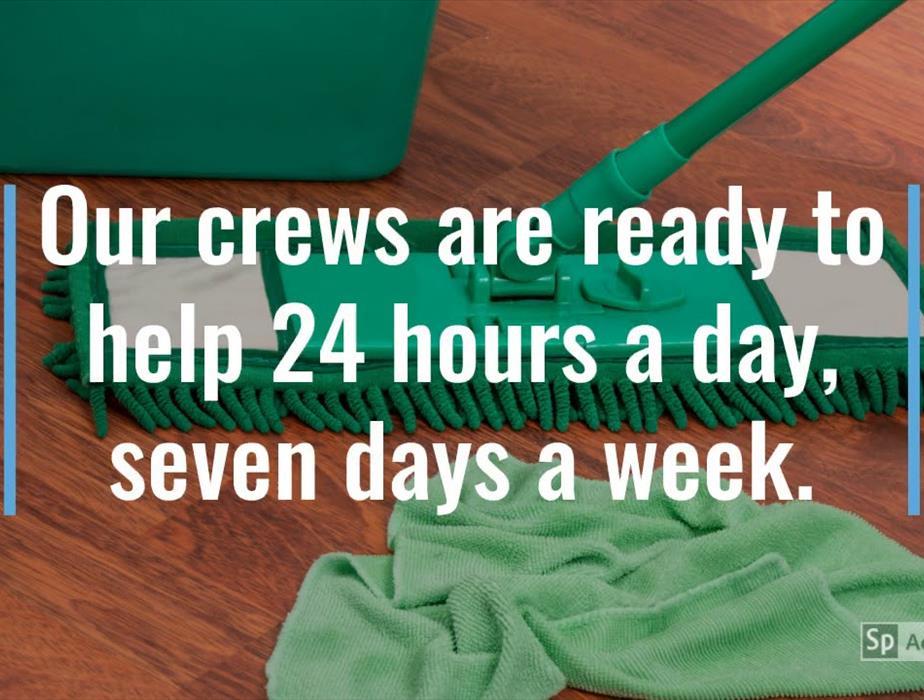 With the hustles and whistles of the city to the quiet Ko'olau mountain range we come to your aide prepared. "Like it never even happened."
With the hustles and whistles of the city to the quiet Ko'olau mountain range we come to your aide prepared. "Like it never even happened."
We of SERVPRO of East Honolulu are available 24/7, 365 for your convenience in case of emergency situations- fire or water alike.
These damages whether on a small or large scale if not treated immediately, water and soot molecules can degrade your building materials. SERVPRO of East Honolulu understands the sensitivities of natural caused damages and the exponential damage that incurs immediately after. Like those of malodorous origins: mold.
You can expect us to pick up the phone for help, any time -(808)395-9545
Water or fire damage can be major stressors for our customers.
It is normal to be stressed, flustered, and left feeling vulnerable.
In some cases we have to quite literally cut into your property building materials. We have expert technicians as well as office help that will guide you through the stress of damage. Having training in specified water and damage being IICRC certified, and our joyous attitude will make your road to repairs a smooth and easy one. We are specialized in water damage, and it is what we are known for. Thanks to our great water team duo!
What you the Customer Can Expect
Once you contact one of our lovely office ladies, they will start asking a few questions. That way we know some important details to have on file, and to gage what we will probably need at the work site. Such as equipment, chemicals, or the amount of technicians needed.
This call will inform us of basic details:
- Contact Information: your name, email, address, and number to contact you/ insured name
- Insurance: The type of insurance, your insurance claim, insurance adjustor. Usually we call you with all that information, many insurances trust us with their insured’s water damage.
- Damage Information: Date of loss, how many rooms are affected, if the customer has popcorn ceilings, the flooring, if there are flooded areas or not.
- Electricity: if electricity is available when we arrive.
Trusting Us, the Professionals
SERVPRO of East Honolulu particularly specializes in clean up and restorations from smoke, fire, or water damage. On residential and commercial property we are well acclaimed. Being IICRC certified with the advanced technology for restoration. We can and will restore your property like the numerous ones we already have. "Like it never even happened."
Call us at (808)395-9545 for any concerns or comments. We are proud to be locally run and operated.
Your Belongings and Water Damage
7/13/2021 (Permalink)
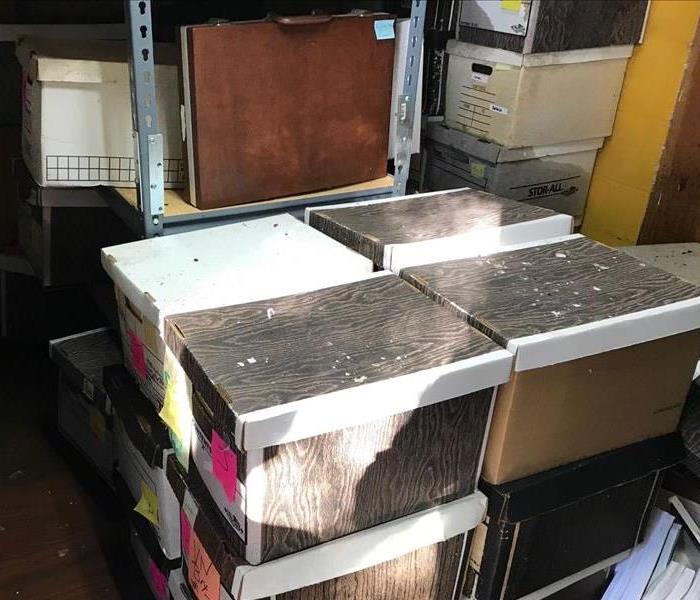 We aim to please, with organized swiftness removing and restoring your contents are no stressor. "Like it never even happened."
We aim to please, with organized swiftness removing and restoring your contents are no stressor. "Like it never even happened."
Water damage from any source affects all aspects of life including your belongings.
SERVPRO of East Honolulu recognizes that your property is so much more than just that. It is a home, work, it holds furniture, keepsakes, clothing, and electronics you and your ohana hold dear.
We help you deal with the aftermath.
Our content restoration process:
SERVPRO of East Honolulu prioritizes restoring your contents that are damaged from natural emergencies. That of fire, water, smoke, or mold. Our expertise helps you all along the way, we firmly believe in restoring your property rather than replacing it. This mindset saves your money and restores all the keepsakes to their condition pre-disaster. There are many ways we clean various contents, done so with;
- Dry Cleaning: a dry sponge used to clean goods that can not be wet cleaned. Removing residue- soot- from surfaces.
- Wet Cleaning: using a disinfectant chemical it is an effective way of removing harsh residue.
- Spraying and Wiping: a good way to thoroughly clean goods that can withstand wet cleaning.
- Foam Cleaning: mainly for fabric that shrink and/or bleed when cleaned any other way.
- Abrasive Cleaning: when we agitate the surface of a material, like sand papering toilets.
- Immersion Cleaning: when contents are cleaned via ultrasonic cleaning baths.
Pack-Outs
You can trust SERVPRO of East Honolulu on a well thought out and organized way of removing contents from affected areas of your property. You can expect a fast remodeling process, with a controlled demolition as soon as goods are away. Your items near the damage will be protected, and all measures needed to prevent further on-site damage are attended to. Although our services of move-outs/pack-outs vary based on your insurance coverage, we guarantee transparency and integrity. Our technicians pack your goods quickly and gently.
Electronics
Water damaged electronics are serious dangers, do not try to turn on any electrical device that could have water damage. SERVPRO of East Honolulu collaborates with many electronic restoration companies for items like,
Assuring that they will be restored by electronic professionals.
Documentation
We document our whole packing process for your assurance. This includes photos before we start any work, the conditions of your goods, and the condition after we have done our treatments. When asked, we also make inventories of items that we are packing. This itemized inventory includes everything that was packed organized by which room they were packed in. Each boxed good or wrapped item is itemized with photos before and after wrapping out the materials. With a barcode.
Call us to learn more about what we do- (808) 395-9545, SERVPRO of East Honolulu is locally owned and operated.
Storm Damage is No Joking Matter in Hawai’i
7/5/2021 (Permalink)
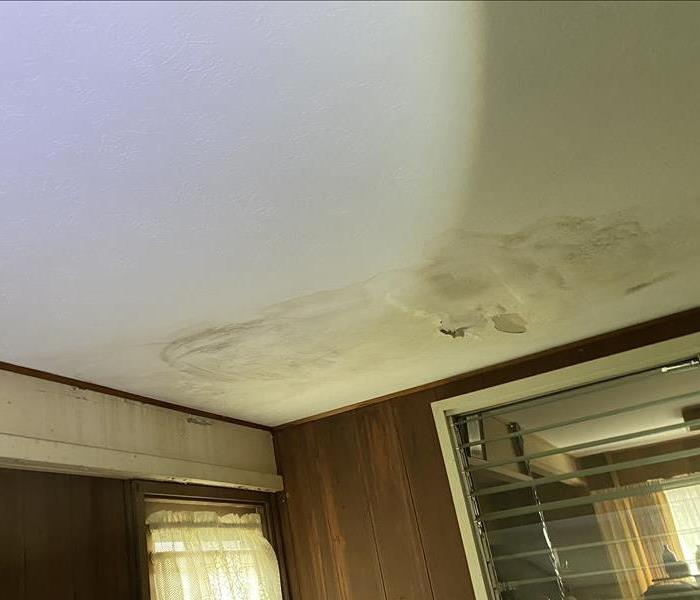 Water damage from storms may not be preventable; keeping your ohana and workers safe is, and after the storm SERVPRO of East Honolulu helps.
Water damage from storms may not be preventable; keeping your ohana and workers safe is, and after the storm SERVPRO of East Honolulu helps.
Tropical cyclones also known as hurricanes are the most deadliest natural disasters to exist. They also cause the most damage, and living on the beautiful island of Oahu it is also more expensive to take care of those damages.
In 2020 alone, the US experienced $22 billion worth of storm damage. That is the six consecutive years in which the US citizens paid 10 or more billion dollars, this number is only expected to increase due to global warming. Here in Hawaii, hurricane season is a very expensive time for those of us who are in areas more prone to hurricanes. Thankfully, East Honolulu is a more dryer terrain nonetheless our customers and community should be prepared for hurricane season.
Our technicians have seen many disasters especially due to storms, most of them damaging the roof.
Americans have to deal with over 10,000 severe thunderstorms each year, which lead to very expensive damages. Because of how long hurricane season is in Hawaii, it is important to know the natural terrain of where you live. Because there are so many different climates located in the many islands; regularly checking the weather forecast, obtaining a NOAA weather radio, and understanding where emergency alerts come from can only make your experience with hurricane damage better. Although, it is very rare for a hurricane to make it on land it is just as important to know where your shelter plan is and have it curtailed to you and your family or business. This should include all types of hazardous scenarios.
We all have aunties, uncles, cousins, friends, and family who live near us. We are so thankful to have a rich community in Hawaii, which means it is very important to share and be an example when it comes to natural disasters and crises. When you create a storm plan, or understand the storm protocols of Hawaii better; share it with your friends and family to make sure everyone you know is also safe and secure.
Although we don’t know when the storm crisis will hit, it is important to be prepared. It is better safe than sorry. And even if disaster strikes, SERVPRO of East Honolulu is here to help and make your property better. "Like it never even happened."
Call us at (808) 395-9545, our line is available 24/7 for an emergency situation.
The SERVPRO of East Honolulu Way (pt.1)
7/2/2021 (Permalink)
When our emails ping, or someone calls our initial response is part of our process.
This is the emergency contact response, say you call since your bathroom flooded from your teenage son. Spilling over into the floor, sinking into the carpet in the hallway, seeping into the apartment unit below you. It is an insurance claim and/or call away for reassurance to SERVPRO of East Honolulu. "Like it never even happened."
Once you call, you’re greeted by one of the lovely clerks- who understands the frustration of the situation. They will help throughout the process of restoration, who will take your information and schedule a time for a technician to look at your property.
This inspection and assessment looks different for everyone, there may be water damage in an apartment tower.
But some carpets and other vinyl flooring- to each their own. Our equipment may look different.
If there is still pooling water we may be bringing water extractors and our water team. If the ceilings are wet, send out a technician who can get the specific measurements of various necessities for your insurance and our documentation.
Whichever route one takes, in your case we are bringing some fans and a technician. We set up treatment for the drying process.
It is crucial to find the problem, solve the problem, and then dry it all up. We can’t fix, replace, or demo damp materials. Thankfully there is no mold growth, but because it was damp for 4 days we put some disinfectant on it. We’ll spray our SERVPROXIDE, an epa friendly, animal friendly, disinfectant. Killing mold in any stage of growth it’s in.
We dry with many different tools, for most cases the situation calls for a dehumidifying machine and some powerful small fans. We place the fan facing the water compromised materials, with the “dehu” machine sucking the water from the air. Which is being sucked into a tube that consequently finds itself in a drain.
This area needs to be zoned off for a bit, the dehu machine mustn’t be disturbed. It is too uncomfortable to be in for the time being…
It takes some time for these structures to be truly dried, with the sheer density of being a property. With a skeleton amassed in drywall, layers of bolts, nuts, wires, it takes some time and care to fully understand what’s needed. The unit below needs an electrician, and mustn't use his lights in his bathroom until further notice.
Once dry and accommodations meet our customers (and their insurance) it is time for more steps for some and for others our time together has ended. When the damage is not bad, no holes, no discoloration. We finish the paperwork up, and are ready to jump to the next person in need.
Hoarding- the unknowing biohazard and its stages
7/2/2021 (Permalink)
Hoarding can be a biohazard due to its very nature which consists of keeping any or all things. Such as trash accruing bacteria or blood from tissues these can be very hazardous to one’s ohana and the community.
In some gravely important biohazard cleanups SERVPRO of East Honolulu has seen animal/human fecal matter, or mounds of trash with rotted food.
The official definition to exist as a compulsive hoarding, as to the International OCD Foundation, possesses these three qualities.
- A person collects and keeps a lot of items, even things that appear useless or of little value to most people,
- These items clutter the living spaces and keep the person from using their rooms as they were intended
- These items cause distress or problems in day-to-day activities.
These qualities are actively in the works whilst living in a cluttered home, or with existing stages of a hoarder. Once stripped to the bone the inner cognition exists in 3 stages; the clutter, the clots, and finally the clogs. They are not isolated incidents, and they’re are probably numerous clogs co-existing with nearby clutter edging a developed clot.
Clutter:
Once clutter exists this is the door to obsessive hoarding. Clutter exists in most homes, the day is over too quickly or too slowly. Life drudges on, and you wake up one day with no access to the kitchen sink. Full of forks, knives, coffee mugs being put off until a newer you has the means to accomplish the task. Indication of clutter in these parameters is when these clusters are disorganized, trash, clothes, and other culminated gewgaw. You can still the floor, but you can not see the method behind the madness.
Clot:
The clot arises when the clutter is not addressed. Amassed during a 6 month period unattended in any notion. This is when hoarders are too anxious about the clutter that transpires to this.
Clog:
This is when the clot rises to be a true menace, blocking rooms or obstructing daily infrastructure. I digress that when this happens it is not an unfixable problem. SERVPRO of East Honolulu has the protective gear, cleaning products, and capable technicians who can get rid of these most troublesome times. This is when bio-hazard is most prevalent.
As always we are available for emergencies 24/7, call us after 911 at (808) 395-9545
Be Careful as to What You Put into Your Microwaves!
6/25/2021 (Permalink)
Over 90% of all American households use microwaves, due to their convenience via modern use of the EMS- electro-magnetic spectrum.
Our beautiful East Honolulu area is no exception from this statistic.
Microwaves also cause 4% of house-fires per year- according to the National Fire Protection Association; conversely other appliances like an oven, stove top, microwave ovens..etc compromise the other 96%.
Equally so, these appliances have numerous built-in safety features designed to minimize electrically caused fires.
Even when one sees sparks in the microwaves they are virtually harmless due to the established mechanisms.
Thus, microwaves are one of the safer appliances in one's home, although there is no guarantee they are 100% accident free.
The simplicity in which microwaves operate rests in the energy waves produced for heating up goods. These sparks are pent up energy waves -microwaves- that bounced off the aluminum walls too much. When these energy waves are generated they coagulate the water molecules resting in the food one is heating up. Consequently this is why putting certain contains, or metal causes fires; there is no water within these molecules: causing the molecules to shake until heat is generated.
Here are a few items that should never go into a microwave:
- PAPER BAGS
- TAKE OUT-CONTAINERS ESPECIALLY ONES THAT ARE CARDBOARD OR STYROFOAM
Styrofoam consists of polystyrene, a type of plastic harmful to the environment and animals alike. When heated it releases smaller chains of plastic which food and the microwave absorbs. These micro-plastics are harmful for consumption. A study came out in 2019 stating globally each person eats about 5 grams of microplastic. Partly because of the heat generated by food in these Styrofoam containers.
It is a good habit to not eat warm/heated foods in these containers all together, due to the composure of polystyrene. Only a slight 20-30 degree change from room temperature can cause the foam to break down actively while you’re still eating take-out.
- ALUMINUM FOIL/METAL GOODS
It may be easy to identify foils, but it is not so easy to recognize if there is metal in other certain household items. An example of this is paper towels, Grandmas all over East Honolulu recommend putting wet paper towels over food one is heating up. For a more even heating process, although this works to get yummy re-heated rice. There are unseen problems with paper towels themselves. Not only are they paper, thus not able to be put in the microwave in the first place; some paper towels have bits of metal woven into the sheets. It is hard to say where these metal particulates come from, but because of the consistent re-occurrence of metal in these goods it is safe to not put them in your appliance at all.
An easy replacement for paper towels are wet face towels made of cotton. Make sure to clean them before use, and designate a certain towel specifically for the microwave. Putting in towels that still have detergent on them are just as dangerous as the metal particulates found in paper towels.
Cookware with metal trimming also can be set ablaze if put into the microwave. Be very careful. Read up on your cooking utensils/pots to see if they are microwavable.
Still an unknown phenomenon, grapes are very combustible for microwaves. They very easily burst and catch a flame. Scientists are still theorizing as to why, some research suggests the water content and size of grapes are the perfect size to be set ablaze.
Plastic containers that say they are microwave safe generally are, but it is a good rule of thumb to not put any plastic containers into the microwave. The plastic industry is severely unregulated, many chemicals that end up inside these containers are not safe to consume. There is evidence to suggest the phytates in these plastic containers are the least scary ingredient.
When there is nothing in your microwave to absorb the energy waves being produced, they continually bounce off the metal walls until a spark is created. This is the surest way of creating a fire hazard within your microwave.
Other lesser known reason for fires in microwaves consists of:
- POWER SUPPLY SHORT
Power supplies are known to burn the wiring components in the microwaves thus shorting your appliance.
- POWER SURGESS
Unregulated power surges in your microwave can also cause fires, microwaves are set up to only hold certain voltages. Too much can over power the machine lessening the safety mechanisms within the machine.
Whether it is a commercial or residential kitchen, learning your appliances- even the least fire prone- can save you money and hassle in the long run.
And if tragedy strikes, SERVPRO of East Honolulu is there to help with the restoration process. "Like it never even happened." Call us for any inquiries about damage from natural causes, or estimates at:
(808) 395-9545
Tell-tale Signs of Water Damage in Your Basement
6/24/2021 (Permalink)
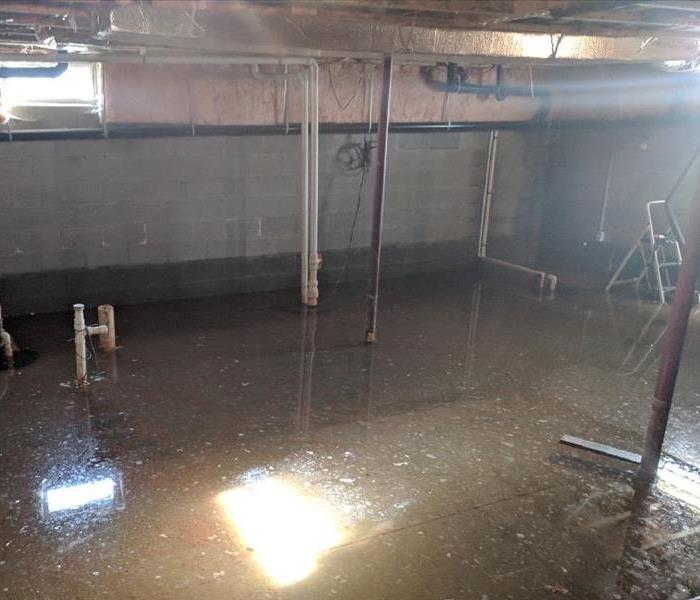 Here are some signs to prevent even greater water damage by being in tune with your commercial or residential building needs.
Here are some signs to prevent even greater water damage by being in tune with your commercial or residential building needs.
Many homeowners in the east Honolulu area have basements. These are an integral part of our homes and our Ohana, being used for many reasons such as storage or another room to hang out in.
Yet basements themselves are inherently a risk to water damage because they are dug into the ground, these risks become even greater when other parts of your home have water damage.
It is easier for water damage to occur at the basement level purely because of their placement within your home.
It may not be your first or second thought to look at your basement after water damage occurs in your home or office.
But it is important to do so because signifiers of water damage in your basement tend to go unnoticed until they are an even greater problem for residential owners and commercial owners alike.
Here are a few signs that your basement has water damage:
It is important to be aware of the tell-tale signs that you are experiencing water damage in your basement, although minute changes. These cataclysmically expound on each other until one is standing in a pool of category 3 water, from a pipe burst that went unnoticed for so long.
- Cracking, Bubbling, or Flaking Wall Paint
Flaking, bubbling, and cracks are strong indicators that water is coming through your drywall or elsewhere. This can also happen in unfinished basement cinder block walls and regular painted walls. These paints whether it is waterproof or not show potential water leaks occurring.
Musky, dank odors occur from a culmination of bacteria growth from still water, incurring a sleuth of other issues such as mold development or air-borne toxins. One may have grown up with an understanding that the basement tends to naturally have such odors, be not mistaken this is an indication of more serious problems and should not be happening. This smell exclusively incurs due to the presence of mildew and/or mold in the area. Mold spores are microscopic and have the ability to stay inactive for years until a hint of moisture is in the air.
Cement, and other foundational materials are not meant to last a lifetime, and experience the wear and tear of life. Cracking can be normal, as cement expands and contracts with warmer and cooler weather. Or even the natural shifting of the Earth creates cracks within your home base. But cracks from the walls, or ceilings may indicate uneven pressure on the house. This pressure could be from water damage, or still water within your walls.
These indicators are major signs of water damage, but alas there is no need to panic. SERVPRO of East Honolulu knows how to assess the damage accordingly, our technicians using advanced technology and trade skills can curtail innovative solutions solving all problems. "Like it never even happened."
Call SERVPRO of East Honolulu at (808)-395-9545
Reasons for Alarm Chirping
6/17/2021 (Permalink)
There are many reasons as to why your fire alarm is beeping here some reasons:
Environmental circumstances
Temperature:
- if the temperature of the room is too high, smoke alarms will go off. Smoke alarms operate within 40° to 95° anything greater than that will make the alarm go off. Carbon monoxide alarms operate within 40° to 100°F as well.
- If the room is too humid, or there is a lot of steam and condensation; that will also make a smoke alarm go off. It is important to make sure that your house or property has a good airflow system. Which can be enabled by opening screen doors, windows, or having an AC unit.
- Although, AC units and fans can help with a good airflow system. If the airflow is in excess right next to your smoke alarm it will also make the smoke alarm go off. Anything within 3 feet of your alarm that regulates airflow can effect the beeping noises and inaccurately set off your smoke detector. Machines that helps with airflow should be removed for your convenience as smoke/carbon monoxide alarms are very sensitive.
Inappropriate battery placement/loosely installed batteries:
- batteries only last up to five years, using old batteries can cause your alarm to beep.
- If the batteries are not properly snapped into place, that can also cause beeping. Since the batteries are easily shaken it is very important to make sure that they are safe and secured within your alarm system. If this is an issue disconnecting and reconnecting the battery a few times will probably fix the beeping
- Loose wires can also cause chirping from units, especially white wires these wires will also notify all units in your house causing an escapade of chirping.
The easiest way to stop incessant beeping is to clean your alarms. Some malfunctions occur due to the dust that settles between the fine lines of your smoking alarm.
Replacing your alarm:
Sometimes smoke detectors alone is just too old, these alarms should be replaced every seven years that is the carbon monoxide and fire/combination alarms. Most alarms have warranty until five years, after that it should be changed. For a simple changing process, make sure to read the data code on the back of your alarm.
Ways to Prevent Lint Fires
6/17/2021 (Permalink)
Fires occurring from dryers are a very preventable accident and usually occur because the dryer has not been cleaned thoroughly nor properly. Although these are very preventable they happen in the thousands each year and injure many people and animals.
More so, due to most placements of washers and dryers they tend to be very costly. Avoiding lint fires means to avoid fire damage altogether in your East Honolulu Home.
The easiest way to avoid a dryer/flint fire is to maintain a clean appliance.
Here are some ways to do so:
- Cleaning the Lint Trap
Every time you use the dryer you should be taking out the lint that is trapped in the lint trap. Although it is a good habit to practice, occasionally there will still be bits and pieces of lint residue. To compensate for these pieces of lint make sure to thoroughly clean the lint trap every two weeks.
This can be done so by gently scrubbing at the metal mesh with dish soap, as well as a thorough rinse. After that it is recommended to dry it before you put it in your appliance again lest you cause a fire.
- Vacuuming the Insides of the Dryer Appliance
Since it is a healthy habit to continuously clean your dryer, it is even more important to clean at the end of the summer and throughout the winter seasons. Although we don’t have much of a winter season due to the slight temperature change it is still an important process.
In order to vacuum the inside of your dryer one should start by unplugging the appliance and removing the panel on the top of the dryer itself.
References to removing the panel come from your personal annual this should be a very simple step. As you vacuum make sure to vacuum all dust and other debris especially if there’s any metal remnants. Avoid contact with any wires.
- Keeping your Exhaust Hose Taunt
Although each person does their laundry differently, the vent and hose itself of the dryer should be cleaned out within 2 to 4 times a year.
This is also a very simple and easy chore that can be done to make sure the dryer never catches on fire. Simply unplug your dryer moving away from the wall, then with your flexible dryer hose clean out all the lint and other debris you see inside. It is a good practice to vacuum and brush out the vent and hose.
Any damages within those pieces should be replaced altogether. When done make sure to extend the hose as much as possible to prevent kinking that keeps debris inside the hose and vent.
Keeping your dryer clean ensures that you can avoid calling us and your local fire department. These tips can also save time and money.
Here are some additional benefits that occur when you continuously have a clean functional dryer:
- It conserve energy, needing less time for your clothes to clean
- Saves money on your electrical bills due to the less energy needed
- Your clothes dry quicker and more efficiently
- The Life Expectancy increases when you maintain your appliance
And if disaster strikes SERVPRO of East Honolulu us here to help, you can call us at (808) 395-9545
SERVPRO of East Honolulu’s Deodorization Tactics For Fire Damaged Homes
6/15/2021 (Permalink)
When malodorous smells waft in after the fire damage it is an essential step to get rid of it through our modern deodorization tactics.
On the account of fires residing within homes, they tend to leave massive amounts of soot, residue, odor, invading rooms that might not have been in flames.
Whether your hale is big or small, by virtue of soot's particle properties it will breach every nook and cranny fathomable.
The deodorizing process is no easy task, requiring the most precise instruments and high grade, EPA friendly cleaners/deodorizers.
What is even worse, is the aftermath harming your air quality doubly so, increasing soot, more over inciting mayhem.
Defective and blemished residential property cause damage through over buildup of soot and/or mar, that makes the deodorizing process difficult additionally delaying the restoration progress.
The first step would be to remove all defective materials, and “soft contents”- carpets, curtains, towels, clothes, stuffed animals...etc. SERVPRO of East Honolulu also has certified tools, industrial washers, and professional cleaners to fully rid all remnants of the fire. Cleaning everything from toothpaste boxes to extravagant dinner sets.
We can do it all, simplifying the clearing process of damaged materials out of the way. Making it easier for our technician team to clear the air, quite literally, as smoke clings to everything.
Removing said materials makes the airing out process quicker with no goods to waft through. We have numerous trained procedures to remove fire odors from any and all households.
Using innovative solutions such as a thermal fogger. The fogger contains a deodorizing solution forming it into a gaseous state, this clings to residual smog, smoke, and soot within airways of your home.
This is a great tool for the structuring of the house as it can also get to every nook and cranny via its gas form, which can also be used with couches and other soft materials that might need a different approach to the cleaning process aforementioned.
Another tool we use are ozone machines, this hydroxyl generator is a heavy duty process needing entrapment procedures. When fires only hit several rooms rather than compromising the whole structure- including floors, it is efficient to “zone-off” this part of your property. Once zoned, usually through artfully crafted plastic walls, it will be sealed to insure that no living organism can enter this area. Ozone has interesting properties that also work like the thermal fogger.
Although innately harmful to lungs of any organism, it does dissipate eventually leaving the zone within hours as if the fire did not happen.
We are available 24/7, through sunshine and rain, at
(808) 395-9545
SERVPROeasthonolulu.com
and, on YELP
FIRE AND WATER DAMAGE RESTORATION SHOULD BE LEFT TO THE PROFESSIONALS
6/11/2021 (Permalink)
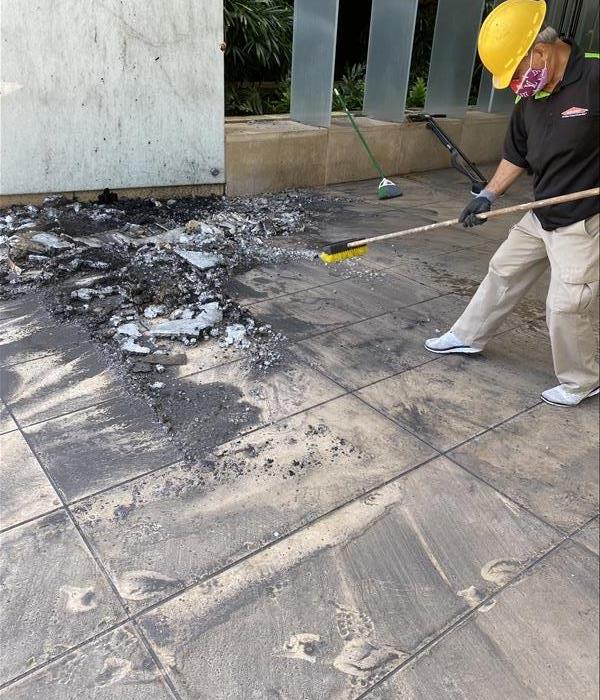 Find a company that provides you with all the tools and options that you need to get your property back "Like it never even happened."
Find a company that provides you with all the tools and options that you need to get your property back "Like it never even happened."
Dealing with a house or business fire can be a very emotional and overwhelming time for anyone. If your property was recently damaged in a fire, you’re presumably wondering whether to tackle the restoration process yourself. Unfortunately, even if you enjoy DIY projects, it’s not a good or recommended idea.
Fire, smoke, and water damage restoration are jobs for professionals. Trying to tackle these issues yourself could be both challenging and problematic.
With a fire, flames cause the most visible damage, but smoke, soot, and water can also cause devastating damage. Even the odors from smoke and soot can cause damage in a short amount of time.
It’s important to act quickly and expertly to prevent further damage to your home or commercial facility. There are few things to understand before even considering whether you will handle the restoration on your own or not:
- Safety: It’s not safe to enter a structure after a fire, even if everything seems fine from the outside. Call the experts to assess safety before entering the property.
- Soot: Inhaling soot, which is the black dust made from burned coal, wood, or oil-based substances, can cause severe lung problems. Allow the professionals to evaluate the soot situation inside your property first.
- Water: After the firefighters are done, you may also have water damage to deal with. Your home or building will need to be dried entirely, or mold and mildew can take growth. Mold colonies can start growing just 48 hours after water damage.
9 ESSENTIAL PRACTICES TO STORM-PROOF YOUR HOME
6/4/2021 (Permalink)
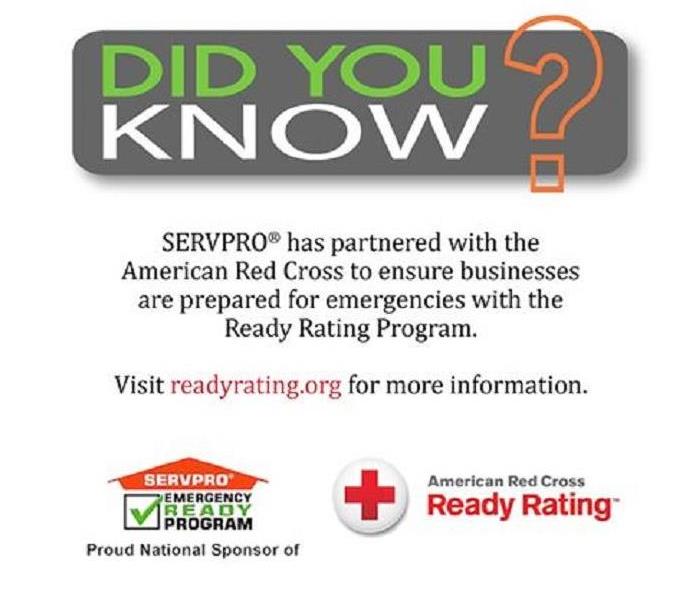 BE PREPARED AND STORMPROOF YOUR HOME
BE PREPARED AND STORMPROOF YOUR HOME
If you live in a place that experiences frequent storms, you understand how destructive they can be for both homes and businesses. There are steps you can take to protect your property from even the harshest weather.
1. SEAL WINDOWS AND DOORS
Sealant on windows and doors can wear due to age and the sun. Before storm season, be sure to check the seals around all windows and doors. Checking your seals is a smart thing to do every season. This is because properly sealed windows and doors are more efficient and will save you money on your energy bill.
2. SEAL AND PROTECT YOUR ROOF
One of the most vital steps to stormproof your home is securing and sealing your roof. Roof damage can lead to a whole array of additional problems such as water damage, mold and pest infestations. The roof deck lies under your roof and above your living space. Waterproofing the roof deck will add security and help ensure that water doesn’t damage inside of your home.
3. STRAP YOUR ROOF
If you live in a place with high winds, tornadoes and/or hurricanes, then you might want to consider roof strapping. Roof strapping is a process that attaches the home’s roof to the walls with metal straps. This keeps your roof connected to your home on all sides, rather than having it simply sit on top of your house.
4. SEAL ANY HOLES
Sometimes homes have cables or furnaces that attach to the exterior of the home. If this is the case, you should check to make sure the areas of connection are securely sealed. You can easily seal the holes with caulk. This will keep water from getting inside your home and foundation.
5. CHECK AND SECURE POSTS
If your home has posts connected to a porch, deck, or carport, then you will want to give them some attention when storm-proofing your home. These extra sections of your home can rip a hole in your house if a strong enough storm decides to sweep through. To prevent this, check all the posts to ensure they are firmly attached to the ground.
6. CLEAR THE YARD
If a storm is coming, one of the best things to do to protect your house is to clear everything from outside. Things like patio furniture, potted plants, and even trampolines can be swept up by strong winds and damage your siding or windows.
7. CHECK YOUR GARAGE DOOR
One thing a lot of homeowners forget to do when storm-proofing is to check the security of their garage doors. This is important because garage doors are lightweight and one of the most common victims of a harsh storm. They can blow in and then rip a hole in your ceiling or front of your garage.
8. CHECK YOUR HOME INSURANCE
Before storm season hits, take time to review your home insurance policy to make sure you’re covered. You’ll want to be sure the policy covers the full cost of rebuilding your home if it is lost in a storm.
9. ADD FLOOD INSURANCE
When reviewing your home insurance policies, we recommend adding flood insurance if you don’t have it already. Many policies only cover damage from the storm, such as a hurricane, but not the flooding that occurs afterward.
BE PREPARED AND STORMPROOF YOUR HOME
The impact of a natural disaster can be devastating. Luckily, taking these nine precautions can help save your home and your life. Whether it’s a tornado, hurricane, or fire, you should also be prepared with knowing who to turn to for recovery and repairs. At SERVPRO of East Honolulu, we offer quality disaster recovery, damage control, reconstruction, and remediation you can trust.
HOW TO FIX A BATHTUB OVERFLOW DRAIN LEAK: 7 SIMPLE STEPS
6/4/2021 (Permalink)
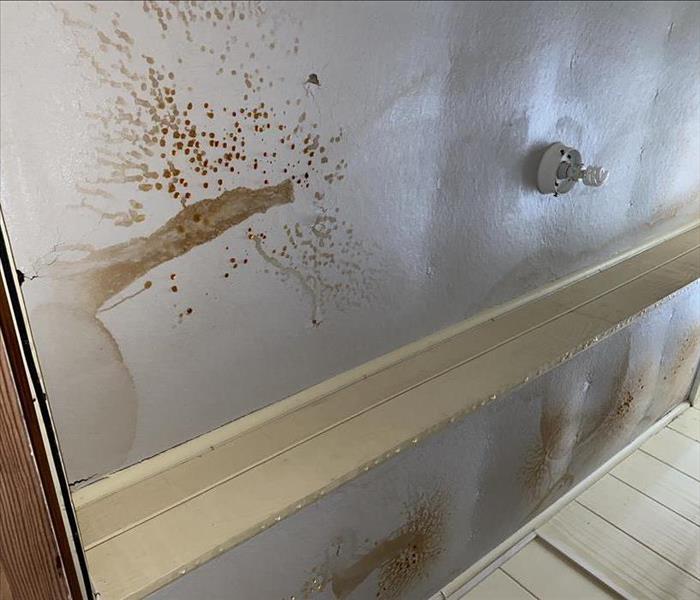 call SERVPRO of East Honolulu to handle your water-damaged ceiling.
call SERVPRO of East Honolulu to handle your water-damaged ceiling.
First, confirm that the overflow drain caused the flooding. Start by removing the bathtub access wall panel, located in the room opposite the tub faucet and shower head. If you don’t see water dripping from the plumbing, look inside for water pooling behind the wall. Small puddles are sure signs of leaks around the drain pipe or supply lines.
If it looks good, go back to the bathroom, and run the shower. Splash water on the tub faucet, and check behind the access panel again. If you still don’t see water dripping inside the access space, you’re dealing with a bad overflow drain.
These steps fix the problem.
1. REMOVE THE COVER PLATEUnscrew and remove the cover plate. Pull out the overflow drain assembly, including the plug. Take a look at the components for signs of damage.
2. INSPECT THE ASSEMBLY AND GASKETIf parts of the overflow drain are loose, clogged or corroded, replace the entire assembly. However, the source of the overflow leak is usually a worn gasket. In that case, continue with step 3.
3. REMOVE THE OLD GASKETUse needle-nose pliers and your fingers to gently remove the damaged overflow gasket from the pipe flange. Clean the exposed flange and surrounding surfaces with rubbing alcohol.
4. INSERT A NEW OVERFLOW GASKETLubricate the new gasket with plumber’s faucet grease, and take a look at its bevel. Position the gasket over the pipe flange with its thickest side on the bottom. Ease it around the opening in the overflow drain pipe.
5. SECURE AND SEAL THE GASKETCarefully work the gasket into place around the overflow assembly opening. Make sure it’s secure against the flange for an even seal. Let the gasket set for a few minutes.
6. REPLACE THE PLATEPosition the cover plate so that its overflow hole is located at the bottom of the installation. Reattach it by tighten each screw a little at a time. Alternating pressure as you work ensures even compression and a snug fit.
7. ADDRESS CEILING WATER DAMAGEIf water damage from the tub overflow isn’t extensive, you may be able to take care of it yourself. However, it’s best to let SERVPRO of East Honolulu handle the water-damaged ceiling. Our technicians know how to safely take care of ceiling repairs. They also restore soaked floors, replace damaged drywall and address mold problems.
Fire Cleanup at the Kaneohe Day Care Center
6/2/2021 (Permalink)
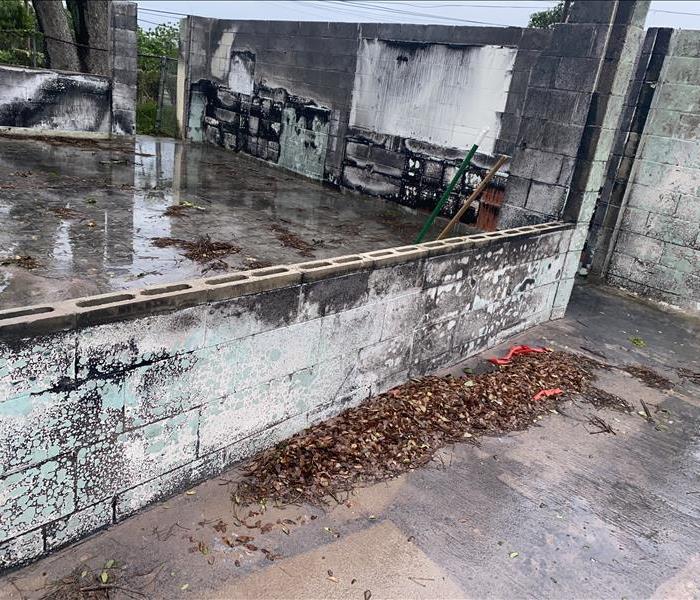 Don't hesitate to call us at (808)395-9545, for any fire or water damage. Choose SERVPRO of East Honolulu, choose quality.
Don't hesitate to call us at (808)395-9545, for any fire or water damage. Choose SERVPRO of East Honolulu, choose quality.
SERVPRO of East Honolulu recently cleaned the remains of an unfortunate fire at a local day care. Thankfully, it occurred after hours damaging 2 rooms, additionally transgressing 2. The cause of the fire was electrical, having extreme damage to the structure of their facility. We removed walls, ceilings, and flooring from the main office room and a classroom.
Because of fire damage, we had to work quickly to start the soot removal process in the other rooms.
The room where the fire happened in, the main office, had the worst damage with a lot of mar and soot on the walls.
Having roomed almost ½ of the sectioned building and all the flooring as it was no longer salvageable. We worked with construction officials as well as restorative businesses to repair the daycare.
During this time we cleaned the aftermath in many creative ways, utilizing our tools, knowledge and occasionally man power. For each of the 4 rooms, they were affected differently and needed specialized niches.
The first room had a generally easy, dirty, cleanup on our part. This room was labor intensive for the construction unit and renovations. Our team first removed all hazardous material, and boxed all the soot damaged items.
All the books needed a dry clean, using a chemical sponge, our technicians had to clean every single page of boxes of books. These chemical sponges are dry, designed to pick up soot, dirty, and occasionally the ink of papers wiped.
Additionally, it needed to be smoked clean with our thermal fogger, and thoroughly cleaned with disinfectant.
All of the rooms needed to be fogged and every surface in the room needed to be cleaned. Whether it was the paper of the children’s paintings, to the yoga mats the toys resided on; all was cleaned through the numerous tools we have.
Including our industrial washer, super sonic cleaner, disinfectant with microfiber cloths, chemical sponges, thermal fogger; and numerous vacuums and brooms.
Soot has an evasive nature accompanied by being innately microscopic, it is truly the invisible killer.
Not only this, soot tends to look harmless but it is very harmful. Which is why this job needed the utmost diligence, as it was a preschool in our community of east Honolulu.
Exactly why for the peace of mind for both you and your insurance alike hire SERVPRO of East Honolulu, water and fire damage require experienced restorative technicians.
Although most schools tend to be built with concrete blocks- that intrinsically is fire retardant, it was painted with lead. Having been built before lead paint was banned by the U.S Government. These blocks can also hold soot, and residuals on the surface.
SERVPRO of East Honolulu is proud to be serving our community and ohanas, we pride ourselves in our job well done. Our cleanup teams are filled with specialists and technicians capable of efficiently whilst quickly making our part get done. So everyone else can do theirs.
We are available 24/7 via phone:
(808)395-9545
Our site:
https://www.SERVPROeasthonolulu.com/
Tell Us How We Helped You:
https://www.yelp.com/biz/SERVPRO-of-east-honolulu-honolulu-2
Why do my walls sweat yellow?
5/28/2021 (Permalink)
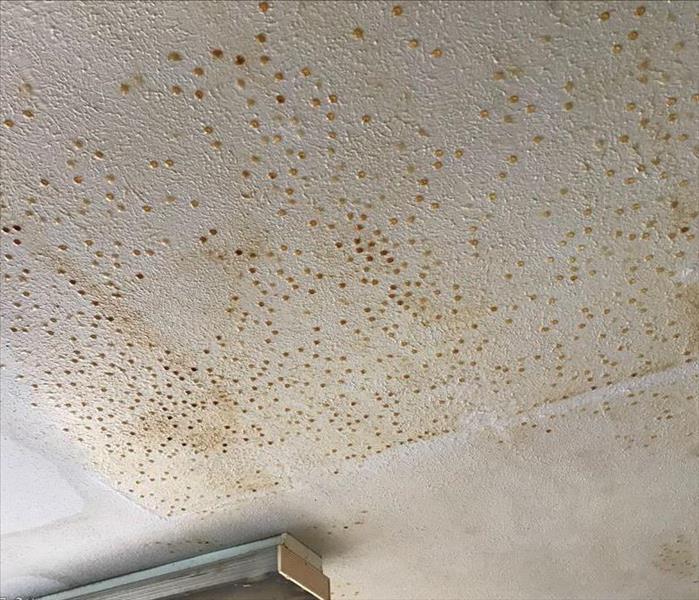 Cigarette smoke and gas heat can leave residues on walls that when wet can run down walls in condensation and look yellowish brown.
Cigarette smoke and gas heat can leave residues on walls that when wet can run down walls in condensation and look yellowish brown.
Bathroom condensation is so annoying, and it's a common problem in most homes. After a shower or bath, water droplets form on the window, walls and mirror when the warm, damp air is cooled by these cold surfaces. Warm air also holds more moisture, which results in heavier condensation.
How do you stop condensation on walls? To stop condensation forming, the bathroom windows should be opened and extractor fans turned on. Try to keep the bathroom door shut as much as possible so the moisture doesn't escape into other parts of your home. Wet surfaces attract moisture, so wipe them down to get rid of the excess damp.
Correspondingly, what causes yellow spots on bathroom walls?
Smoking tar residue shows up on walls and ceilings. If it's just the ceiling, it's likely from using improper paint. That's from smoking on the John. The tar from the smoke deposits on the paint.
How do you fix sweaty walls?
There are a few remedies for high humidity that you can apply to combat this problem.
- Place a dehumidifier in the areas with the most wall condensation.
- Install an exhaust fan in your bathroom.
- Examine the exhaust fan above your stove or range.
- Contact your local professional -
SERVPRO of East Honolulu 808-395-9545
10 Signs of home water damage
5/21/2021 (Permalink)
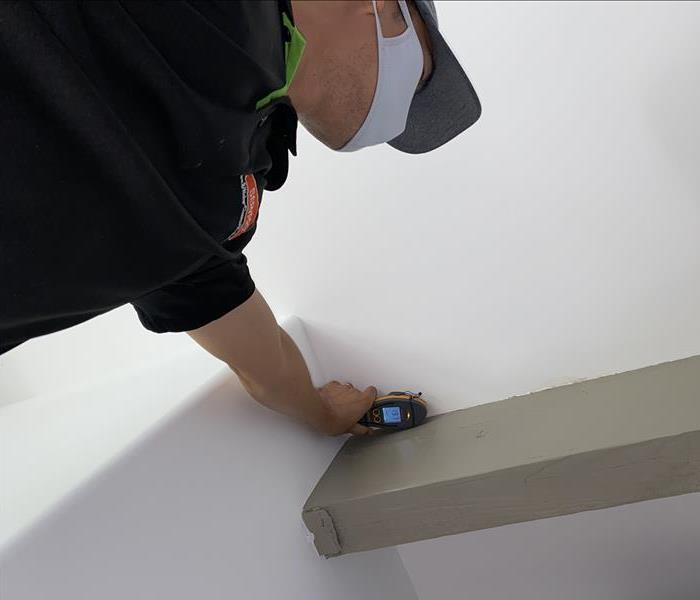 Questionable water damage - call us today at 808-395-9545
Questionable water damage - call us today at 808-395-9545
Sometimes, large water damage problems start out small. Given enough time, a tiny leak can ruin a ceiling or flood a basement. Stay on the lookout for these signs of trouble inside and outside the house.
1. Ring-like stains on ceilings may be caused by loose shingles or flashing problems on the roof.
2. Damp insulation in the attic is another a sign of water leaking through the roof.
3. Blistered paint and peeling paper often indicate water damage in the walls of your home.
4. Warped or loose baseboards are also signs of water damage hiding inside walls.
5. Soft spots in floors, especially around bathtubs, occur when plumbing fixtures fail.
6. Tile or laminated wood floors warp and crack when exposed to moisture for long periods of time.
7. Mold and watermarks under sinks may be the result of faulty supply lines or fixtures.
8. Persistent, musty smells can be signs of hidden water damage in the house.
9. Basement walls can stain and crack due to water accumulation around the foundation.
10. Clogged gutters often spill rain and debris down exterior walls, soaking window and door frames.
WHY A PROFESSIONAL RESTORATION COMPANY IS THE ONLY WAY TO GO AFTER A DISASTER
5/14/2021 (Permalink)
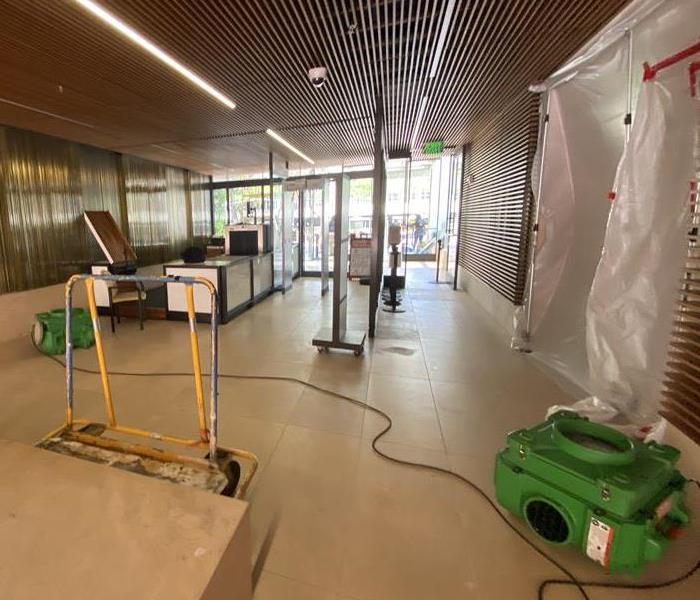 If you have been affected by a disaster, call a professional today to get your home/business restored quickly at SERVPRO of East Honolulu 808-395-9545
If you have been affected by a disaster, call a professional today to get your home/business restored quickly at SERVPRO of East Honolulu 808-395-9545
When a storm, fire, or any other type of disaster strikes your home/business, the aftermath can be devastating. It’s hard to know what to do and where to begin picking up the pieces. If there is significant damage to your home/business, the thought of the cleanup process can be overwhelming. There are many factors that need to be considered and many hidden dangers that can get worse if not handled properly. Here are the reasons why it’s best to hire a professional restoration company after a disaster has struck your home.
SMOKE AND FIRE DAMAGE
On the surface, smoke damage doesn’t seem that bad. Smoke particles are very fine and have a knack for settling into the small crack and crevices. If not removed, the burnt smell can linger for a long period of time, and in some cases permanently.
FLOOD DAMAGE
Floods can cause extensive damage. A professional restoration company is able to accurately assess the damage and create the most efficient mitigation plan. Quickly addressing water damage greatly reduces secondary damage from occurring.
Mold is silent and oftentimes rears its ugly head after flooding. Every inch of the flooded area must be properly dried and sanitized so that mold is not allowed to prosper.
SAFETY
Whether you have experienced damage from fire, flood, or another natural disaster, safety should always be the number one concern. If you have not had a professional assess the damage to your home, there could be a ticking time bomb just waiting to cause havoc in your home.
Having your home damaged by a natural disaster or a fire is upsetting and stressful enough. It can be hard to think of spending money on repairs and restoration when you think that you may be able to do it yourself. However, the money should be considered an investment. You are investing in the health and safety of yourself and your family, the structural integrity of your home/business, and the contents within. If you have been affected by a disaster, call a professional today to get your home/business restored quickly at SERVPRO of East Honolulu 808-395-9545
What is a Restoration Company?
5/14/2021 (Permalink)
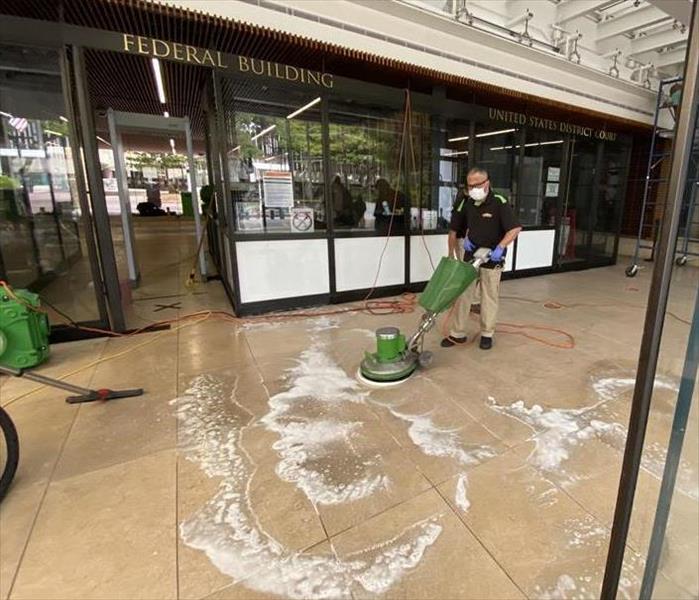 Making "Like it never even happened."
Making "Like it never even happened."
Sometimes you find yourself unlucky, as disaster strikes your home or business. One way or another, you will need professional help in restoring your property to its pre-disaster condition, and as quickly as possible.
What is a Restoration Company?
Well, simply put, a restoration company will restore your property after it has been damaged by a disaster. Disasters can include anything such as storms, hurricanes, biohazards, mold, smoke, and water damage. Many disasters such as these come with hidden problems, and that’s just one of the reasons to hire a professional and reputable emergency restoration company. The company you choose should: take steps to rebuild the damaged parts of your home, address any water damage and mold issues, thoroughly dry the property, clean up heavy soot and smoke, and, lastly, leave your property safe and back to its original state, "Like it never even happened."
How To Choose a Restoration Company
- Get in touch with your insurance agent and ask them to give you some advice on choosing a reputable emergency restoration company.
- You’ll want a local company, as they can arrive swiftly onsite to assess the damage to your property. Find out how many years they have been in business and how many related projects they have completed within the last year.
- Reputable restoration companies have emergency response teams that offer 24-hour service every day of the year, because they understand that disasters can’t be timed. And, fire and water restoration companies know that they need to act quickly because disasters such as these can disrupt property within minutes.
- The restoration field has a set of industry standards that all qualified restoration companies follow. Make sure the company you choose has licensed and trained technicians on their staff. They should also use advanced and professional equipment and techniques when setting about your property’s restoration.
At SERVPRO of East Honolulu, we understand the gravity of the situation. By utilizing the knowledge we have acquired from our decades of experience, highly trained team members, and specialized equipment, we help get your property back on the road towards recovery. Our team of experts grasp the importance of urgency when it comes to protecting an investment like your home or business, and focus on minimizing any further damage from occurring to the structure and the contents inside.
ACT FAST WITH FLOOD DAMAGE
5/1/2021 (Permalink)
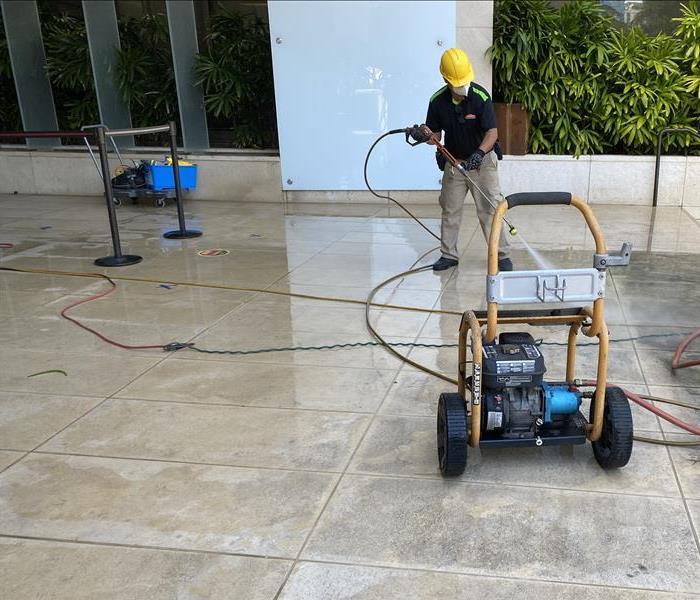 Stop the Water Intrusion & Contact SERVPRO of East Honolulu 808-395-9545
Stop the Water Intrusion & Contact SERVPRO of East Honolulu 808-395-9545
Most people would be surprised at how common water damage is in homes and businesses across the United States. Remember, it’s not always a storm or flood that causes water damage, but more common causes like burst pipes, sewage backup and HVAC leaks.
Water can find its way into the walls, floors, ceilings, furniture, and other belongings, and the degree of damage increases exponentially the longer it is ignored. That is why quickly addressing flood and water damage repair is so important.
So don’t hesitate, instead, have a clear plan in mind if your property faces water damage. Having a reputable restoration company on speed dial is our number one tip.
WHY YOU NEED TO ACT FAST
SECONDARY DAMAGE
The fact is that the longer water damage sits without drying out or repairs being made, the more damage it may cause – known as secondary damage.
COST OF RESTORATION
The longer you wait to deal with flood or water damage restoration, the more expensive the job can become. This is because more of the property will become damaged in the wait, and more extreme restoration services may be needed.
In addition, ignoring water damage for some time may cause problems with your insurance – therefore increasing costs.
MOLD ISSUES
The longer water sits on your carpets, walls, floorboards, ceilings, etc. the higher the chance that your property and contents may be faced with mold and mildew issues.
STEPS TO HANDLE A WATER EMERGENCY
Stop the Water Intrusion & Contact SERVPRO of East Honolulu 808-395-9545
If safe, you want to stop the water damage from escalating by getting to your water valves and shutting them off immediately. Then, contact a professional restoration company to help.
Call Insurance
Insurance companies can help with water damage emergencies. Often they will have the details of reputable restoration companies on hand, and they can help you navigate making a claim. It is also good to call them and find out what steps they require you to take. In the meantime, take photos of the damaged areas and all affected valuables for your records.
Drying Out
If you can, start drying out your home or business within 24 hours. This will help in managing and limiting the growth of mold and mildew. Remove all furniture and rugs and put them out to dry. Bring in fans and dehumidifiers where possible. Call a flood and water damage restoration company for further help, as drywall, insulation, flooring, baseboards, etc. may need to be removed and replaced to prevent mold growth.
Cleanup and Restoration
The truth is that drying out your property after water damage can take a lot of time and effort, as well as specialized equipment. This is another reason why using a reputable flood damage restoration company is a good idea. Calling professionals is the best way to handle any complications and problems that emerge from water damage.
WHY SERVPRO?
5/1/2021 (Permalink)
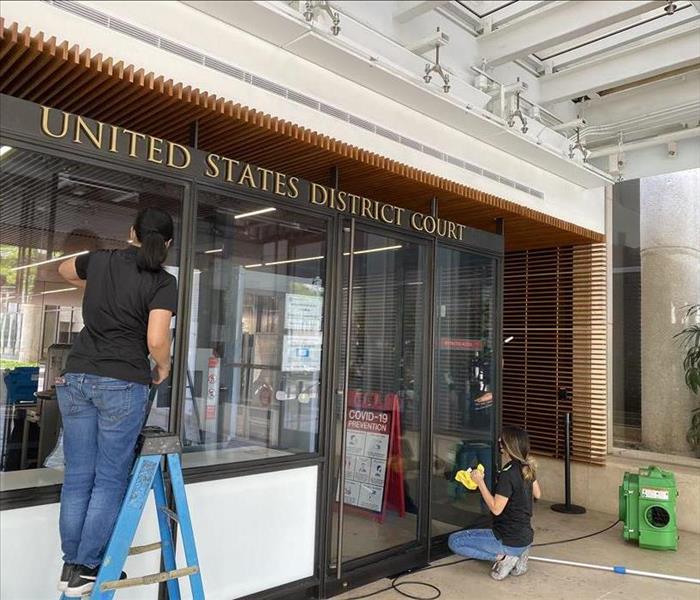 The SERVPRO System is geared to achieve customer satisfaction and mitigation results, adding to your company’s competitive advantage.
The SERVPRO System is geared to achieve customer satisfaction and mitigation results, adding to your company’s competitive advantage.
MISSION STATEMENT
To develop a team of quality people who focus on excellent service, fairness and mutual respect.
VISION STATEMENT
To be the premier cleaning and restoration company in the world.
PURPOSE
To help entrepreneurs succeed.
CORE VALUES
Believe in a Dream Grow Relationships Share the SERVPRO® Story Financially Frugal Follow the System
Effective training is the best way to help ensure your customers receive the service they deserve. Franchises are trained to IICRC standards in Fire and Water Cleanup and Restoration. In addition, continuing education classes are available to franchise professionals and insurance clients at our state-of-the-art IICRC Approved Training Facility.
Vendor Qualification Compliance and Professionalism
If you call SERVPRO, we will use only qualified vendors to service your customer. That commitment resulted in:
- A Customer Care Center to achieve prompt handling of the claim.
- Implementation of best practices and job process programs.
- National Accounts qualification criteria and annual compliance checks.
- Crew and vehicle standards.
- Insurance requirements.
- File documentation requirements.
- Quality assurance program.
Serving Adjusters and Their Clients
A SERVPRO franchise professional's job is to reassure the customer, perform quality service and to report to you quickly. We know your job is to interpret the policy and adjust the claim... and not to deal with problems from vendors! Working together we strive to save you time so you can focus on priority files, while having complete control of every loss you are assigned. 24-hour emergency response, damage mitigation, loss assessment, and an electronic file are available to you within hours. SERVPRO franchise professionals’ documented, measured performance increases value to you and your shareholders, managers and customers.
Hard-earned results have made SERVPRO leaders in the fire and water cleanup and restoration industry. The SERVPRO System is geared to achieve customer satisfaction and mitigation results, adding to your company’s competitive advantage.
7 MOST COMMON CAUSES OF RESIDENTIAL WATER DAMAGE
4/23/2021 (Permalink)
About 40% of all homeowners have experienced a loss from water damage. It can spread contamination, ruin your paint and damage your wood. The good news is that 93% of all water damage could have been prevented with the right knowledge. How can you protect your home from residential water damage? Here are seven ways to prepare.
1. DAMAGED PIPES
Plumbing systems, especially in older homes, are susceptible to stoppages and damage. To prevent plumbing problems before they start, be on the lookout for cracks, bulges, stains and other signs of moisture on your ceiling or floors. If you spot a leak, it could be a sign that there is damage in other areas as well. Spikes in your water bill could mean you have additional damage to your landscaping, flooring and foundation. Look out for pipes in areas prone to collecting water, such as crawl spaces, cabinets and attics. If you see any signs of water damage, call a plumber right away to avoid larger problems in the future. Be sure to check and insulate your pipes every year before winter begins. Pipes can rupture and freeze within a few hours, soaking your entire house.
2. APPLIANCES
As appliances get older, their pipes can rust and their hoses can weaken. Dishwasher leaks can leave an unwelcome puddle on your kitchen floor. Common causes include worn gaskets, broken doors and clogged drains. It can cause damage to your tile, electrical wiring and paint.
Flooding caused by washing machines is usually caused by leaky hoses. The leak can worsen over time and cause damage to your home. A washing machine valve shutoff kit can prevent the six gallons of water per minute from flooding into your home.
Refrigerators produce a lot of access water that can pool on the bottom of them. Drain lines can also become clogged. If there is a leak in the water supply line that feeds your ice machine, you could come home to a lot of standing water. To prevent your refrigerator from flooding, be sure that it is well insulated. Make sure that you do not move it in and out of its normal position too often, and inspect it regularly for leaks.
3. CLOGGED DRAINS
Bathroom and sink drains can become quickly clogged with dirt, grease, hair and other substances. Pipes can break down, and structural damage is common. If drain clogs are not cleared, problems such as disease, sickness and aggravated health conditions could occur. If left unchecked, clogged drains can cause damage to other places in the home. For example, a clogged toilet can back up into your sink. You may even warp the floorboards and wall support. Small screens can help keep unwanted materials from clogging drains. Pouring boiling water down your drain once a month can help dissolve grease, soap scum and other debris before it clogs your pipes.
4. NATURAL DISASTERS
Hurricanes, breaking dams and snowstorms can all bring excessive water into your home, causing it to flood. Large amounts of water can’t be absorbed by the land, and may overflow into your home. A flood alarm and warning system can help you protect your home against a natural disaster. If you live in a coastal area, be sure to purchase additional flood insurance. Some folks living in flood-prone areas raise their homes on stilts to prepare for floods. Others install foundation vents or sump pumps. You can also grade your lawn away from the house. Make sure you know where the water main is and shut it off when you leave for an extended period of time. This way, you will not come home to any unwanted surprises.
5. HVAC UNITS
Heating, ventilation and air-conditioning systems within your home can cause floods. Be sure to have these systems inspected and cleaned regularly. If you know there is an impending storm, shut off your central air conditioning to prevent damage and risk of electrocution.
6. SUMP PUMP PROBLEMS
If your sump pump stops working, you could have a major flood in your basement. You will then have to deal with mold growth, water removal and bacteria. To keep your sump pump working optimally, always make sure that it is standing upright. Be sure that the vent hole in the discharge pipe is clear. Your outlet pipes should be joined tightly together and drained out at least six feet from your location. If you notice any leaks in your sump pump, call a professional immediately.
7. STRUCTURAL DAMAGE
Moisture dripping through your concrete and crawl spaces can lead to mold and rotting. Check your home regularly for these signs. Cleaning your gutters regularly and maintaining your trees and vegetation will keep unwelcome water from damaging your walls and foundation. You can also install flood protection devices, such as an alarm that goes off when it detects moisture. Make sure your home’s water pressure is not too high. If it is, pipes and hoses can fail under the pressure. You can install a water pressure gauge to help you keep it even. A water pressure regulator can help you in homes where the water pressure cannot be controlled.
PREVENTING RESIDENTIAL WATER DAMAGE
Residential water damage can be caused by natural disasters, clogged drains or damaged pipes. With the right precautions, you likely won’t have to worry about water damage for years to come.
Different types of Storm Damage
4/16/2021 (Permalink)
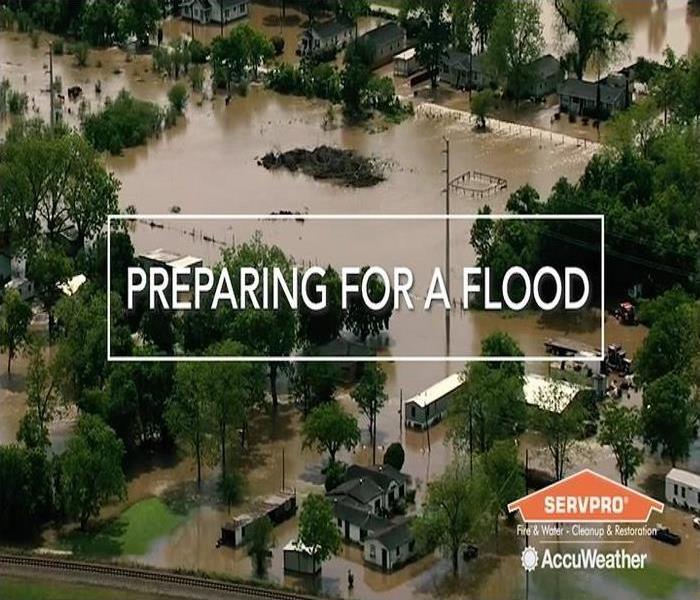 Water or Flood Damage?
Call Today – (808) 395-9545
Water or Flood Damage?
Call Today – (808) 395-9545
When your home or commercial property has water damage from flooding or leaks, we have the expertise and equipment to properly restore your property. Our experience and scientific approach to water removal and water cleanup enable us to properly dry and restore your property.
Water or Flood Damage?
Call Today – (808) 395-9545
Every water damage event is a little different and requires a unique solution, but the general process stays the same. You can click on any of the steps below to learn more about that process.
Restoration Depends on Water Type
Specific steps must be taken to reduce property destruction, depending on the type of water damage. According to the Institute of Inspection Cleaning and Restoration Certification (IICRC), who sets the standards for the cleaning industry and water damage restoration training, there are three levels or types of water involved in damages. They include:
Category 1: Clean water
This water damage is from sanitary sources, such as an overflowing sink or tub, burst water pipes, failed supply lines to appliances, drinking fountains, or vertical falling rainwater.
Category 2: Grey water
This water is from sources that could make you uncomfortable or ill if ingested. Washing machine, dishwasher, or urine-tainted toilet overflows belong in this category.
Category 3: Black water
This is the worst classification of water and could cause severe illness if ingested. Sewer backups, flooded rivers, feces-tainted toilet overflows, or stagnant liquid that has bacterial growth are all examples of black water.
Let SERVPRO of East Honolulu Save Your Home and Belongings
Seeping water damage is progressive, pervasive and can mean valuable objects or keepsakes may become permanently damaged. The professionals you find at SERVPRO are trained on how to handle the various types of water damage. Once they arrive on the scene at a home or business, they quickly assess the situation and start the restoration process in these three areas:
- Aggressive cleaning: Wall cavities and other surfaces are pressure washed with a detergent solution. Salvageable materials are flushed and thoroughly disinfected.
- Moisture detection: Not all water damage is visible to the naked eye. Water trapped in structural cavities may require sophisticated detection equipment to mitigate odors, prevent mold growth and minimize structural damage.
- Rapid structural drying: Mold begins growing on soggy surfaces within only 24 to 48 hours. Rapid drying, all the way down to the building’s substructure, is necessary to restore pre-flood conditions.
After your home floods, you may think your home and its contents are beyond hope, but many of your furnishings and belongings can be restored. With professional restoration help, your flooded home can be cleaned up, dried out, rebuilt, and reoccupied sooner than you think.
Awards & Recognitions
4/9/2021 (Permalink)
 2018 Entrepreneur 500 Franchise Ranked #1
2018 Entrepreneur 500 Franchise Ranked #1
As a national leader in cleanup and restoration, it’s only natural for SERVPRO to receive regular recognition for excellence in a variety of fields. View our latest awards or some of our past awards below for a sampling of SERVPRO’s awarded achievements.
2008
Wall Street Journal
Top 25 Highest Performing Franchises
Top 25 Franchise Brands for financial strength and success
American Society for Training and Development (ASTD)
Golden Torch Award for Innovation in Practice (Franchise Training)
Entrepreneur Magazine
Ranked #1 in the Restoration Services category
Ranked #28 in the Annual Franchise 500
Ranked #66 in fastest growing franchises
Ranked #4 in Top Home-based Franchises
For National Advertising
Gold Addy Award in Television Advertising
2007
Entrepreneur Magazine
Ranked #1 in the Restoration Services category
Ranked #25 in the Annual Franchise 500
Ranked #100 in fastest growing franchises
Ranked #4 in Top Home-based Franchises
2006
Entrepreneur Magazine
Ranked #1 in the Restoration Services category
Ranked #43 in the Annual Franchise 500
Ranked #73 in fastest growing franchises
Ranked #8 in Top Home-based Franchises
2005
Entrepreneur Magazine
Ranked #1 in the Restoration Services category
Ranked #8 in Top Home-based Franchises
Ranked #34 in the Annual Franchise 500
Ranked #75 in fastest growing franchises
For National Advertising
Silver Addy Award in Print Advertising
2004
Entrepreneur Magazine
Ranked #1 in the Franchise Restoration Services
Ranked #33 in the Annual Franchise 500
Ranked #8 in Top Home-based Franchises
For National Advertising
Gold Addy Award in Television Advertising
Silver Addy Award in Radio Advertising
Gold Addy Award in Advertising Elements Advertising
2003
Entrepreneur Magazine
Ranked #33 in the Annual Franchise 500
Ranked #44 in the Fastest Growing Franchises
Ranked #7 in Top Home-based Franchises
2002
Entrepreneur Magazine
Ranked #41 in the Annual Franchise 500
Ranked #2 overall franchise in Upholstery & Drapery
1997
Entrepreneur Magazine
Ranked #9 in the Top 101 Home-based Franchises
Ranked #23 in 100 Fastest Growing Franchises
Franchise Times
Ranked #9 in the Business Service Franchisors
Income Opportunities
Franchise Relations Award*
*One of only 32 franchisors in the country to be given the honor this year
Franchise Times
Ranked #33 overall in 200 Listing
Ranked #2 in the service business category
1996
Franchise Times
Ranked #41 out of all franchise opportunities
Success Magazine
Ranked #27 in Franchise Gold 100
1995
Business Start-Ups
Ranked #11 of Top 150 Low Investment Franchises
Franchise Buyer
Ranked #39 of 200
1994
Success Magazine
Ranked #9 in Franchise Gold 100
1991
Nashville Business Journal and Owen School of Management
Small Business of the Year Award
Dunn and Bradstreet
Ranked #9 Franchise Opportunity overall
Common Issues that Lead to Toilet Leaks
3/30/2021 (Permalink)
Here at SERVPRO of East Honolulu we have seen all toilet leaks under the sun and the water damage that comes along with them
Toilets are one of the most dependable household appliances-justly so- as they are also the most used and built to endure decades.
Although they are reliable, certain parts of a toilet are more prone to wear and tear. These tend to cause toilet leaks more so than other components.
Here are some common parts/places that usually cause toilet leaks:
1. Base issues
- Loosened closet bolts
- These are the bolts nearest to the floor and are almost underneath the water tank.
- One can often denote it is a bolt issue when your toilet is rocking or feels "loosened" to the base of the foundation.
- Although, tightening the closet bolts will fix your issue of a leaking toilet. If you tighten these bolts too much you can damage your porcelain which is irreplaceable. Cracking your porcelain structure requires a whole new toilet.
- Cracks on a toilet bowl
- Cracks on porcelain automatically means to replace the whole toilet or to seal the cracks with epoxy.
- Hairline fissures can be fixed with epoxy, which can be hazardous to any organisms health and must be done with great care and utmost respect for epoxy instructions.
- Multiple hairline cracks mean that the toilet bowl needs to be replaced. And your toilet will be more prone to breaking randomly and releasing its contents.
- Broken Wax Seal
- Wax seals can be often tricky as they are not seen superficially at first. Wax seals maintains that the water going in and out of the toilet every time one flushes stays in the pipes. When they are broken or worn down, they slowly release water and warp your flooring.
- Wax seals can crumble, dry out, or flat out fail, this can happen over time or even prematurely. Also, a wobbly toilet denotes occasionally a broken wax seal/ring.
- This can be replaceable and an easy fix, yet they can be the most dangerous. As they actively participate in facilitating the efficiency of water and waste to the pipelines; they can cause the most damage to one's own property and can even cause rotting because of the frequent leaking water.
2. Continuous Water Running the in the Septic Tank
- There are many reasons as to why there would be running water in a septic tank, more so than needed to be efficient. This can also increase your water bill as there is a continuous flow of water going on in your toilet
- Water level in the tank is created by an adjustable float that produces the strength of the water pressure in flushes. Floats that are set too low make weak flushes, and ones set too high can cause water to spill the overflow tube and will not properly stop the fill valve from shutting off.
- Once the float is set to the proper level for your toilet, make sure that the chain attached is untangled so the flapper can close properly. If water is still running after regulating the float and the chain, one needs to replace the flapper altogether.
3. Shut-Off Valve Leaks
- It is very rare for one to use the shut-off valve, over repeat usage or usually over time the washer inside the valve can harden with the deposit of minerals from water overtime. Changing out the washer can be imperative to the continual usage of your toilet.
- Another way that shut-off valve leaks from a nut that becomes loosened overtime. Tightening the packing nut, usually stops the continual leaks.
It is imperative to understand the toilet parts and the integral usages of them, acknowledging the more frail components will save you money and time.
And if there is water damage, and one hasn't caught it in time- as some of these leaks can exponentially increase in damage as the days pass, and it goes unnoticed...
SERVPRO of East Honolulu is here to help, with water extraction, removal of damaged infrastructure, and the overall repair job.
Ceiling, Floor, and Wall Cleaning
3/26/2021 (Permalink)
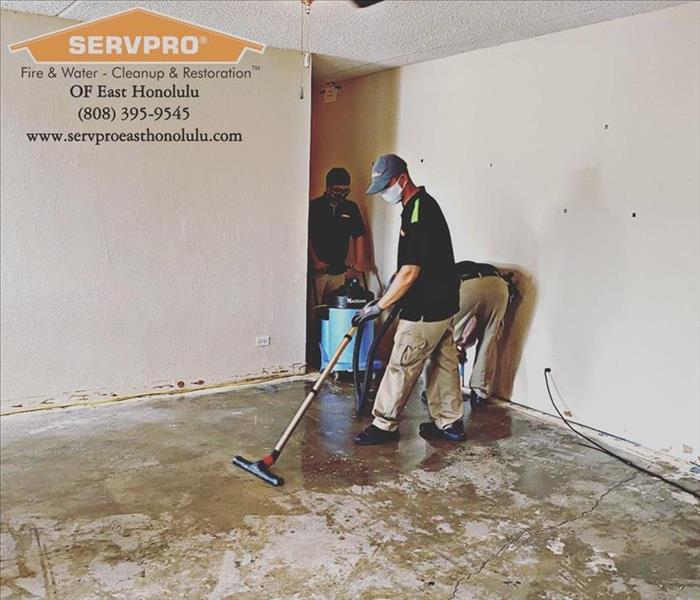 Need Professional Cleaning? Call Today (808) 395-9545
Need Professional Cleaning? Call Today (808) 395-9545
Ceilings and Walls
Ceiling and wall cleaning should be part of the cleaning maintenance of your home or business. You should also clean walls before painting so that the primer and paint can adhere properly. Whether you are preparing to paint or just looking for professional cleaning, SERVPRO of East Honolulu can help.
Ceilings and walls are exposed to dirt and dust, pet dander, cooking oils and grease, cigarette smoke, and other contaminants. Your heating and air conditioning system can distribute these contaminants throughout your property. Learn more about air duct and HVAC cleaning.
Using SERVPRO’s time-tested and industry-approved steps, along with our proprietary cleaning products and methods, we strive to restore your ceilings and walls without the need to repaint or refinish and to help the entire property smell fresh.
Need Professional Cleaning? Call Today (808) 395-9545
Hard Floors
Hard flooring, like hardwood and tile, is often used in today’s homes and commercial properties. At first glance, hard flooring appears to be easy to clean, maintain, and restore. However, these materials tend to have soil accumulate over time, and eventually you’ll need professional cleaning to remove this buildup.
We have specialized training in time-tested and industry-approved cleaning methods. Also, our proprietary cleaning system allows our Professionals to properly clean and restore your floor’s original beauty.
SERVPRO® Named a Top 10 Franchise Amid Coronavirus Pandemic, Active Storm Season
3/10/2021 (Permalink)
 SERVPRO® Named a Top 10 Franchise Amid Coronavirus Pandemic, Active Storm Season
SERVPRO® Named a Top 10 Franchise Amid Coronavirus Pandemic, Active Storm Season
Cleanup and restoration company attains #10 ranking in Entrepreneur Magazine’s 2021 Franchise 500 rankings
Gallatin, TN, February 18, 2021 – For the first time since 2016, SERVPRO, a cleanup and restoration franchise company, has been named a Top 10 overall franchise opportunity in the nation by Entrepreneur Magazine, as well as the #1 position in the cleaning and restoration industry for nearly 20 years in a row.
“In 2020, SERVPRO franchises across the U.S. and Canada responded to numerous natural disasters such as hurricanes along the Gulf Coast and East Coast and wildfires in the West. But it was the launch of SERVPRO’s new disinfecting and COVID-19 cleanup service that tested and proved the company’s resolve,” CEO Rick Isaacson said.
“SERVPRO’s #10 overall ranking is a result of the hard work our franchises, their crews, and our dedicated headquarters team put in while many businesses were not so lucky,” Isaacson said. “So many businesses were negatively impacted, slowed, or closed due to the pandemic. When COVID forced much of the world to slow down or step back, our team stepped up and did what it took, whether that was cleaning businesses so they could reopen safely or disinfecting first responders’ vehicles – many of those at no cost – to give back to those working every day to keep us safe.”
The company’s most common revenue lines come from residential and commercial fire and water cleanup and restoration. Franchises respond to natural disasters such as wildfires and hurricanes, including a record-setting 2020 storm season. “We’re basically a first-response company, so we go in when everyone else is running out,” Isaacson added.
The Franchise 500 list uses objective and quantifiable measures of a franchise operation to help would-be entrepreneurs identify franchise investment opportunities. The evaluation process is based on what the magazine calls “The Five Pillars of the Franchise 500©”: Costs and Fees; Size and Growth; Support; Brand Strength; and Financial Strength and Stability.
“SERVPRO was founded in 1967 as a painting company. Today, we are a mature restoration services organization with more than 1,900 individually owned and operated franchises under a single brand,” Isaacson said. “Our franchisees respond to property damage emergencies ranging from small individual disasters to multi-million dollar large-loss events. Maintaining our position for more than two consecutive decades as the best franchise opportunity in our category on the Entrepreneur Franchise 500 list validates our long-standing strategy for growing our brand: investing in franchisee training and support and doing whatever it takes to help entrepreneurs succeed.”
Expertise | Best Water Damage Restoration Services in Honolulu of 2021
3/5/2021 (Permalink)
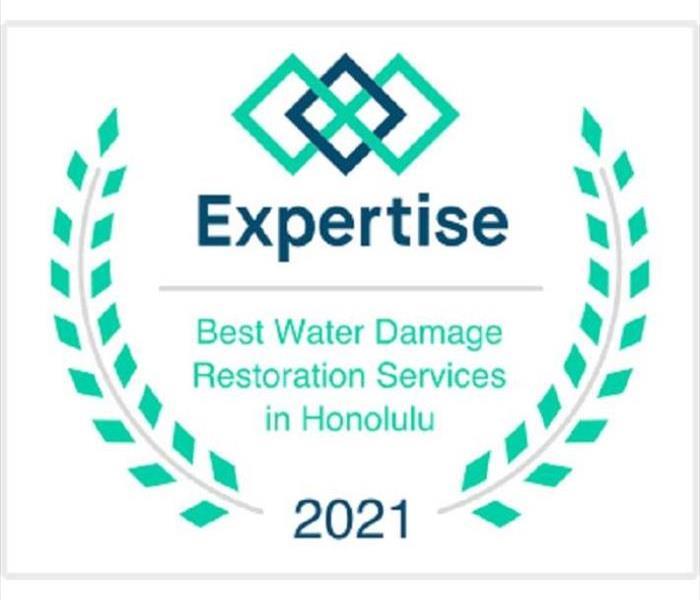 Expertise | Best Water Damage Restoration Services in Honolulu of 2021
Expertise | Best Water Damage Restoration Services in Honolulu of 2021
SERVPRO of East Honolulu
SERVPRO of East Honolulu offers residential and commercial restoration and cleaning services in the greater Honolulu area. Its water damage restoration specialists help individuals and businesses to restore their properties to their pre-damaged condition by extracting water and using state-of-the-art tools to dry the premises. The company handles sewage cleanup, mold remediation, fire and storm damage restoration, and building services.
SERVPRO of East Honolulu is AMRT, ASD, and FSRT certified.
Reduce Your Risk of a Fire Every Time You Fire Up the Grill | SERVPRO® of East Honolulu
3/1/2021 (Permalink)
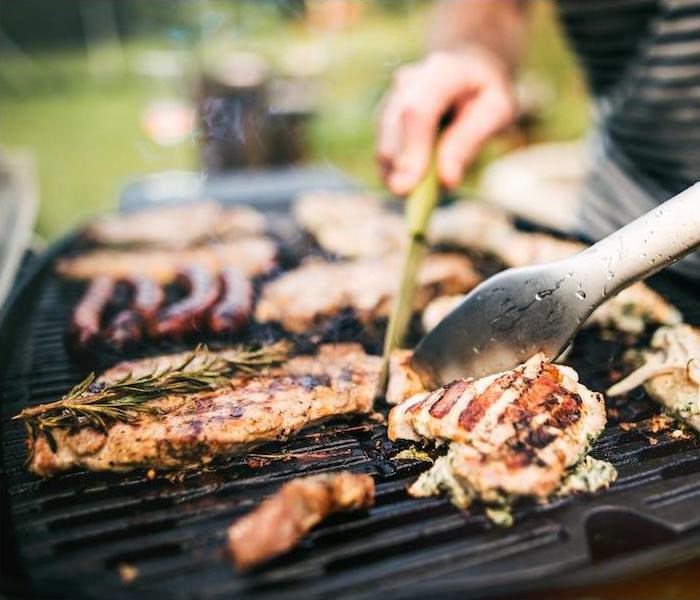 If you have a grill fire that does damage to your home, we are here to help. You can call us any time 24/7 808-395-9545
If you have a grill fire that does damage to your home, we are here to help. You can call us any time 24/7 808-395-9545
One of the most enjoyable things about our gorgeous weather is having ample opportunity to make use of your outdoor space and cook your favorite meals on the grill—but it is important to remember your fire safety skills every time you do. Any time an open flame is introduced, it is wise to be vigilant about preventing fires, even if you have grilled many times before.
The U.S. Fire Administration estimates that over 5,500 fires are a result of accidents with backyard grills every year, leading to property damages in the millions. With these grilling safety tips, you can significantly reduce your chances of ever being included in this statistic.
Grilling Safety Tips to Prevent FiresCreate a safe zone around your grill. You want your grill to be centrally located so you have access to everything you need and are not removed from the fun, but it is important to not be too close to any flammable materials. A three-foot buffer free of pets, children and flammable items around the grill is recommended so that if a flare-up does occur, there is nothing for it to damage nearby.
Clean your grill grates often. The bits of stuck-on food on your grill grates do more than just make the cooking temperatures inconsistent—they can actually lead to a fire that quickly becomes out of control. Grease and other crumbs can ignite if they get hot enough, leading to a sudden flare-up. The good news is that a simple brush after each use of your grill can go a long way in preventing this.
Never leave the grill unattended. Just like you would never walk away from a pot on the stove, you should never turn your back on your grill. Even with the lid closed, it is possible that a fire starts and quickly becomes out of hand, so always keep an eye out and make sure you have a fire extinguisher handy.
Inspect the grill regularly. Because the gas connectors on a propane tank are typically hidden away, it can be easy to forget to take a look at them—but gas leaks can cause serious fires, so you should give them a once-over every time. The connection points and hoses can all fail with age, so a quick check can go a long way to prevent fires.
If you have a grill fire that does damage to your home, we are here to help. You can call us any time, day or night, to have a quick response from our restoration experts.
Choosing SERVPRO of East Honolulu
2/23/2021 (Permalink)
Here at SERVPRO of East Honolulu we offer an array of services, with a vast amount of equipment, cleaning materials, and chemicals, we make the cleaning or restoring process a quick and efficient as possible.
We also specialize in commercial services for our local businesses, we especially take pride in our commercial cleaning services.
What are our commercial cleaning services?
We are not exclusive to whom we offer our services to whether you own a grocery store, commercial property, office space, or restaurant. We commercially clean to increase your spaces appearance and overall its functional use. Our services range from water cleanup, air duct cleaning, mold remover, and overall cleansing with EPA approved chemicals that instantly kills bacteria.
From major to minor water damage, we are here for all those needs. Our water damage restoration aims to appease our customers in the most economically efficient way possible. Damage can occur from the simplest issues of a faulty air conditioner, continuous droplets of water from leaky pipes or bursting pipes.
Cleaning your air ducts helps facilitate healthy air flow and pollutant free breathing. We use HEPA filter that molecularly filter out pollutants, mold spores and decreases water moisture in the air.
Microbial growth of mold and other pollutants can happen anywhere at anytime. With excess water and humid areas in your commercial area left untreated can cause health effects and can spread rampantly. Here at SERVPRO of East Honolulu we specialize in mold remediation and follow thorough guidelines to ensure mold growth is not an issue for you.
Our commercial building restoration services:
Whenever disaster strikes the biggest concern- after safety- is the structural damage from the event of water, storm, or fire damage. Our services offered to repair, and rebuild after natural causing damage ranges from drywall removal, to carpet repairing/replacement, painting, and so much more.
Why Hire us, a Professional Commercial Cleaning Company:
SERVPRO of East Honolulu employs professionals who are knowledgeable in the latest uses of science and technology in the cleaning industry, not to mention also in the restoration business. With years of commercial cleaning under our belt we can say that our team is a well-trusted group of individuals here in the East Honolulu Region.
We know that disaster can strike any time, and for your convenience we are available for any emergency 24/7
For your commercial needs do not hesitate to call us:
(808) 395- 9545
Preventing Mold Growth on your Commercial Property
2/23/2021 (Permalink)
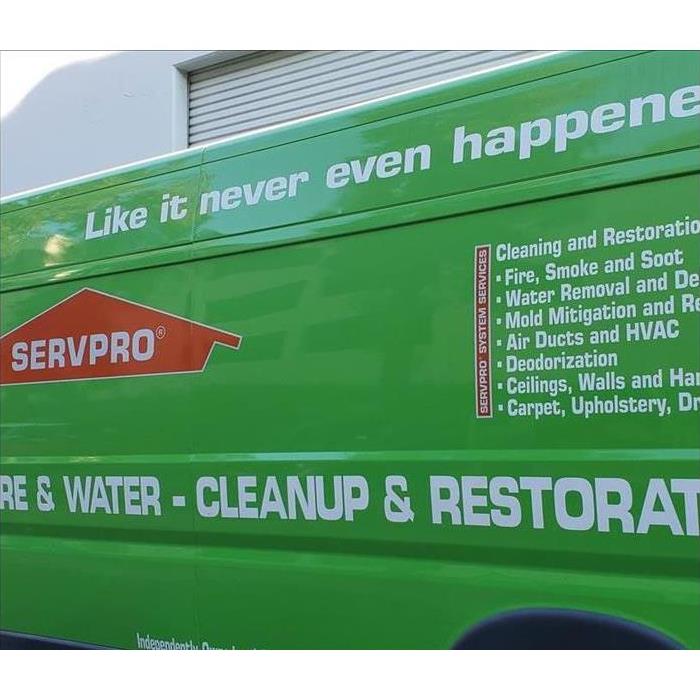 Cleaning carpeted areas on commercial property is a simple and cost-effective way of preventing mold.
Cleaning carpeted areas on commercial property is a simple and cost-effective way of preventing mold.
Preventative Measures are crucial for preventing Mold Growth
Here in East Honolulu it gets pretty humid compared to other regions in the Hawaiian Isle. There are many business and personal properties that have to bear with continuous growth of mold because of how suitable Hawaii's innate climate properties is to allow for growth. Mold tends to float in the air and slowly finds other mold spores. Here are some tips to help prevent mold especially for commercial properties.
- Preventative Tools
Everyday cleanliness really helps minimize the growth of mold, and bacteria spores. Not to mention, that taking preventative actions also leads to more bang for your buck; not only does it save you money but it saves you from issues. Like using floor mats, cleaning water moisture immediately after a spill, or even using a floor mat in one’s office space. Carpet cleaning frequently stops mold growth and the build up of inactive spores which exist for more than a year. Ensuring that your employees clean water access or liquid spills will be imperative to a cleaner commercial property.
- Air Duct Cleaning
Because of the extreme durability of mold spores, they can exist “inactivated” until water moisture, or if it finds a colony of mold. Which can be microscopic and exponentially increasing as the humid Hawaiian day trolls on. Cleaning your air ducts helps circulate the air better and keeps your property’s air healthy. Air ducts tend to have a build up of bacteria, mold spores, and dust… all pollutants. Regularly cleaning air ducts facilitates a lower chance of having a mold issue. Cleaning your air ducts also increases office air health!
- Carpet Sanitation
Here in East Honolulu, having carpet can occasionally get hard. The moisture in the air wicks more the fuzzy material and can cause a rampant breeding ground for mold to exist in. Sanitizing your carpets has numerous benefits such as prevention of mold, dirt removal, and even the removal of feet oils that tends to really bond with the carpet. Cleaning carpets as soon as any liquid spill happens prevents any issue to happen from the spill.
SERVPRO of East Honolulu is full of equipped and licensed individuals who can easily and efficiently clean carpets of mold issues or general cleaning. We also have state of the art technology that allows us to detect any hidden growth of mold behind walls, also finding moisture pockets in ceilings and roofs from I.R scanners.
General Fire Insurance Coverages
2/23/2021 (Permalink)
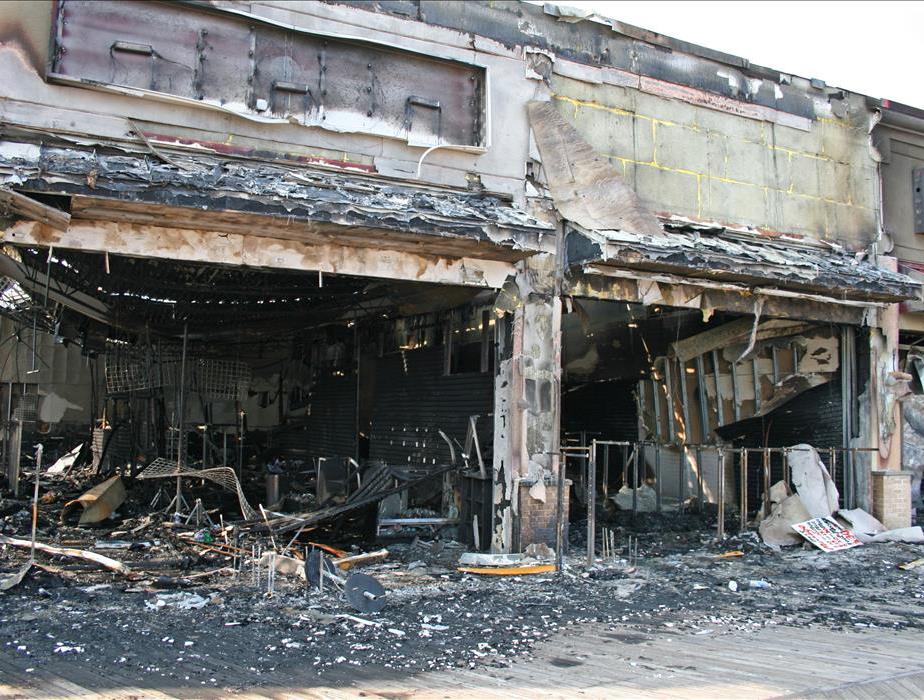 Fire damage and the process of restoration can be a tiring and frustrating experience, understanding your insurance makes the process easier.
Fire damage and the process of restoration can be a tiring and frustrating experience, understanding your insurance makes the process easier.
Tragedy can hit anyone, whether that is in your home or family owned business; especially fires. When tragedy strikes though, one first calls their insurance company. While most companies vary from policy to policy there tends to be a typical guidelines regarding coverage.
Here are the Standard Coverages offered in general insurance companies policies, there are varying coverages for the different types of severities in which fire affects your property:
The special coverage is for the most damaging and expensive types of fire damage, which excludes what they are not willing to cover. Anything deemed part of the agreed areas they previously established will be covered under this certain coverage
The broad coverage includes policy that covers fire expenses and additional issues that come with fire damages. Such as external secondary damages: water or chemical damage from exterminating the fire itself.
The basic coverage is the most minimal in nature, only covering policy explicitly stated from fire damage.
Evaluation of Damage
When a fire occurs the first thing an insurance company will do to assess the damage is sending out an insurance adjuster to scope the damage found on the property. This person generally verifies and conforms the damage and what the insurance companies define the fire to fall under coverage wise. The only fire damage that will not be covered by any insurance company is arson. Most of the damage will be documented, issues like burnt structures, wood damage, tile damage, or water sprinklers. Ironically most fires have more water damage than fire, because of the excess amount of water exerted in certain areas the damage tends to be amplified.
Treatment
Usually here at SERVPRO of East Honolulu this is where we come in, collaborating with your insurance company and contractors to get the job done. Our job as the restoration company is to rebuild your property to its former state, "Like it never even happened." Although this is our job, it is a heavy collaboration of property owners, the insurance company, contractors, and us.
Prevention
Fires are very expensive as they truly destroy organic materials that exist in the structural component of buildings. It is much more economically efficient to be prepared by fire safety. Fire safety can look like numerous preparational activities such as planning or keeping preventative measures like fire extinguishers. Written plans and basic training can help aid in insurance coverage in minor damage as well as major damage. Most insurance companies look rather favorably on efficient and prepared fire plans and the action taken at hand occasionally adjusting the coverage they are offering.
Your home and business relies on good insurance coverage and proactive preventative measures to stop fire damage and decreases financial harm. It is imperative to understand your particular insurance company’s policies and the coverage you have. We are here to make this process as simple and as easy as possible, because it is easier to temporarily close for repairs than an official close.
Restoring Your Commercial Property After A Water Damage Event
2/19/2021 (Permalink)
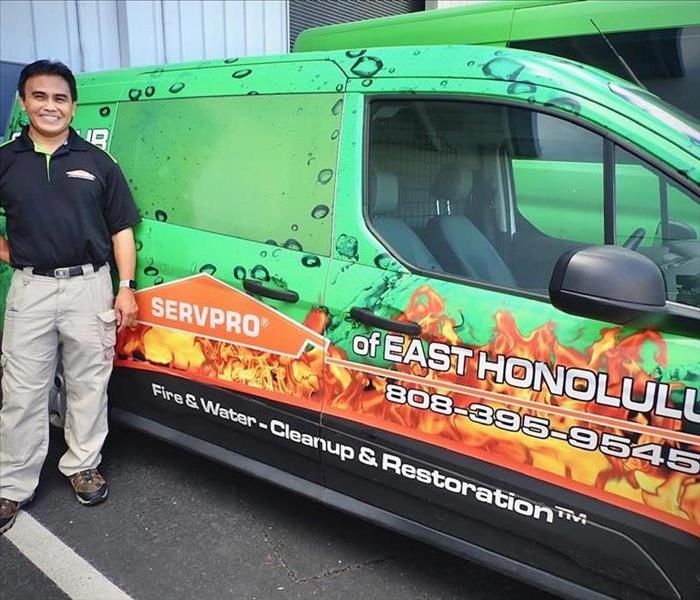 Meet, Lorenzo, owner of SERVPRO of East Honolulu. Call us today at 808-395-9545
Meet, Lorenzo, owner of SERVPRO of East Honolulu. Call us today at 808-395-9545
Flooding and water damage events in Oahu commercial properties are often complex with numerous issues that require a knowledgeable and flexible response. Whether we’re dealing with a relatively small water cleanup scenario or a large scale event, we work quickly to assess each unique situation and isolate the damaged area. In many instances, normal operations can continue in a temporary space while we restore your facility.
Restoring Commercial Properties Presents Unique Challenges
Our professionals are trained to be mindful of legal and environmental concerns and strive to fully restore the damaged area while working within your budgetary constraints. We understand that every hour spent cleaning up is an hour of lost revenue and productivity. So when an emergency situation arises in your business, give us a call and we’ll be there fast with the help you need.
About SERVPRO of East Honolulu
SERVPRO of East Honolulu specializes in the cleanup and restoration of commercial and residential property after a water damage event. Our staff is highly trained in property damage restoration. From initial and ongoing training at SERVPRO’s corporate training facility to regular IICRC-industry certification, rest assured our staff is equipped with the knowledge to restore your property.
For Immediate Service in Oahu, Call SERVPRO of East Honolulu
2/19/2021 (Permalink)
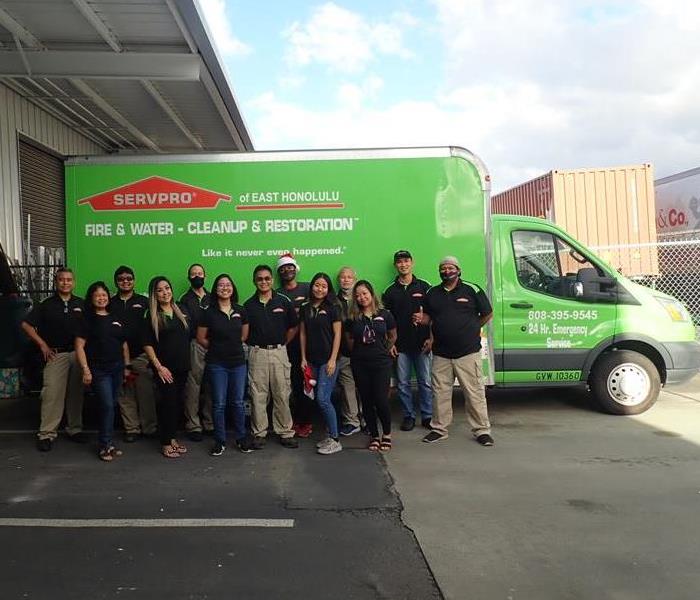 We provide immediate service day or night!
We provide immediate service day or night!
SERVPRO of East Honolulu provides 24-hour emergency service and is dedicated to being faster to any-sized disaster in Oahu. We can respond immediately to your emergency and have the expertise to handle your restoration or cleaning needs.
- 24-Hour Emergency Service
- Faster to Any-Sized Disaster
- Highly Trained Restoration Technicians
- A Trusted Leader in the Restoration Industry
- Locally Owned and Operated
- Advanced Restoration and Cleaning Equipment
Have Questions? Call Us 24/7 – (808) 395-9545
Commercial Services
There's never a convenient time for fire or Water damage to strike your Oahu commercial property. Every hour spent cleaning up is an hour of lost revenue and productivity. So when the need arises for professional cleaning or emergency restoration services we have the training and expertise to respond promptly with highly trained technicians to get your property back to business. Learn more about our commercial services:
Commercial Building Cleaning Services
Every commercial property experiences wear and tear, including dirt and grime that accumulates from ordinary use. You can count on SERVPRO of East Honolulu to make your workspace look its very best. Professional cleaning helps to protect your carpet and upholstery and increase its life-span. Learn more about our commercial cleaning services:
Fire Extinguisher 101
2/15/2021 (Permalink)
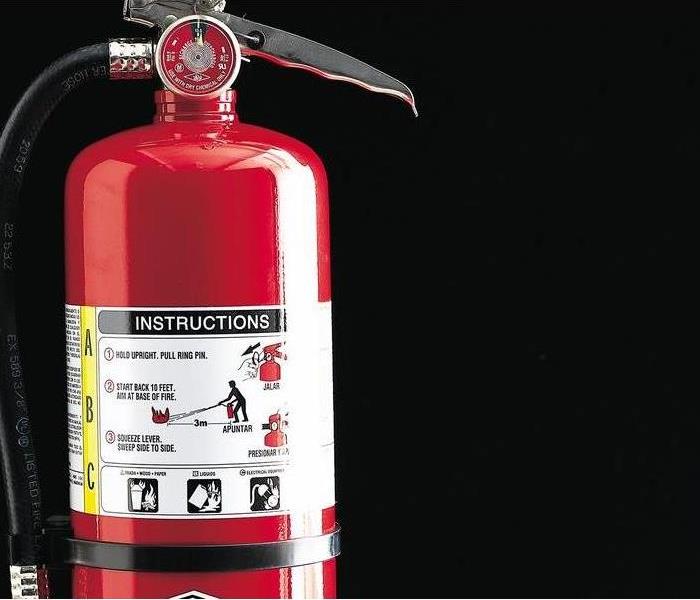 We are here for all your fire damage needs, call SERVPRO of East Honolulu at (808) 395- 9545 anytime anywhere.
We are here for all your fire damage needs, call SERVPRO of East Honolulu at (808) 395- 9545 anytime anywhere.
It is important to note that there are many different types of fire extinguishes and flame-retardant materials. Knowing which type of extinguisher you need for your property can lead to a efficient plan, less material damage, and an assurance that it will extinguish your fire.
There are many variables to take into account when planning for your property's fire extinguisher.
- Products/materials that are flammable
- Materials that catch on fire or aide in creating a fire
- Where your heat sources are located in comparison to flammable goods
- A viable fire exit and plan, placement is crucial for extinguishing a fire quickly
What is a Fire?
Creating a fire is a chemical reaction and goes as follows:
- There needs to be a fuel source, a combustible gas, liquid, or solid that can get hot enough for a spark.
- Oxygen, this will react to the fuel source
- Heat Source, a heat source is imperative to "ignite" or start the chemical reaction. In this aspect it one can treat fire as if it is a chemical itself.
Classifying Fires:
There is no fire extinguisher that will stop all fires, even water can be hazardous to different types of fires. Understanding what will be the most effective in one's most probable cause of fire will create a safe environment.
- There are 4 different types of fires
- Class A
- Common combustibles, like paper or wood.
- Class B
- Combustible liquids, like kerosene or gasoline.
- Class C
- Electrical faulty, like wires or outlets faltering.
- Class D
- Combustible metals, like magnesium or potassium
- Class K
- Oil and fats, like vegetable oil and animal fat (most commonly pig fat).
Different Type of Fire Extinguishers:
Due to extreme variance of fire starting, there are multiple ways to stop fire. The easiest way to extinguish is to take away at least one of the three needs for a fire aforementioned.
- Dry Chemical
- This can be used for classes A,B, and C
- This is a powder substance, usually Sodium Bicarbonate, that one can spray on to a fire. This "smothers" the fire and stops it from receiving oxygen.
- Carbon Dioxide
- Best used for classes B and C
- It works by eliminating the oxygen in the air, and replacing it with carbon dioxide, which in return stops the fire access to oxygen.
- Water
- Best used for class A but can be used for B and C
- This is the easiest way to stop both a heat source and suffocating the fire. Although it is harder to store.
- Wet Chemical
- Can be used for all the classes except C
- Using a chemical like potassium in a foam like substance which instantly coolers the surface and smothers the surface. It can corrode metal surfaces and can be very toxic to living organisms.
Inspect your Fire Extinguishers Annually:
The USFA suggests these steps to ensure the proper care of your fire extinguisher, as each one can expire or be unintentionally released as a gas or liquid.
1. Ensure easy access.
2. Check the pressure, make sure the pressure gauge indicates the proper pressure.
3. Look for physical damage as this may be an indication that the extinguisher is not in usable condition.
4. Clean the extinguisher, check if there is dust or grease around the extinguisher. As the extinguisher can react to its surroundings. Note: potassium is highly reactive and corrodes easily so it is important to consistently check up on wet chemical extinguishers.
Major Causes of Commercial Water Damage
2/12/2021 (Permalink)
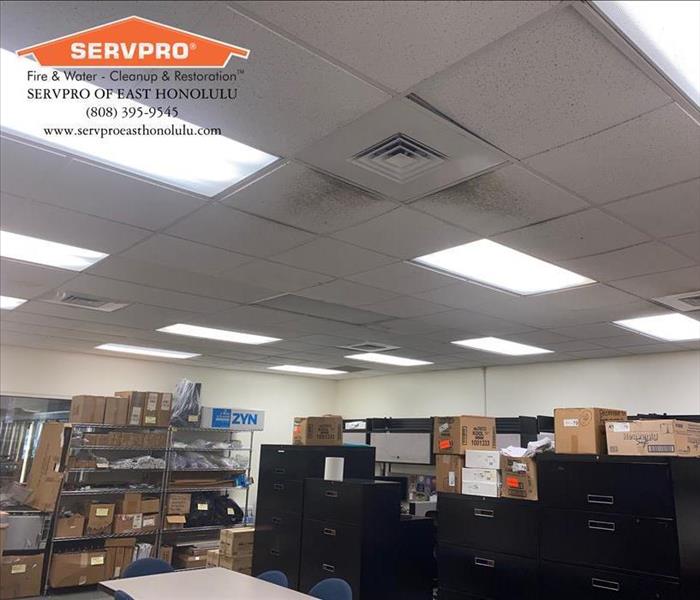 Air condition leak caused mold in the ceiling
Air condition leak caused mold in the ceiling
Major Causes of Water Damage
Did you know that a leaking faucet can cost you more or less 250 gallons of water each month? Below are the 6 most common causes of commercial water damage.
Damaged sprinkler system
The law requires all commercial entities to have a sprinkler system, along with a fire alarm, installed in the building for safety purposes in case of fire. The sprinkler system should only get activated when there is too much heat from fire. However, over time, the sprinkler can get broken and malfunction. When this happens, the sprinkler can get activated even without fire leading to serious flooding within the building.
Roof leaks
The roof should protect the occupants and everything within the building from the external elements such as the heat from the sun and rain. But a leaky roof does otherwise. As the roof gets older, it also becomes more vulnerable to heavy rains, resulting in water damage in your building’s roof.
Broken HVAC system
Your business’ HVAC system is an essential part in maintaining the temperature of your building and to make its occupants comfortable. However, like any other part of your commercial building, your HVAC system can also experience issues such as clogging and leaking. An HVAC system that is not cleaned and maintained regularly can cause water damage from the excess water in the compression tanks.
Broken equipment and appliances
Sometimes, your building may have appliances such as a water heater, AC, washing machine, and others. Apart from that, there are also pipes within the building that can get damage anytime and cause water damage in the commercial space. Major problems happen if these equipment and appliances get broken and no one notices it or during off-hours as it can leak a significant amount of water.
Damaged windows
Another common cause of water damage in commercial buildings are the damaged windows. Rain water and moisture can seep through especially if the windows are not properly maintained and need re-caulking. While it may not cause immediate flooding, it can do great damage on the drywall and can encourage mold growth.
Natural disaster
Apart from the damage in your building’s foundation and roof, water damage in commercial buildings can also be caused by natural disasters like hurricanes, thunderstorms, and heavy rain resulting in flash floods. Clogged gutters can lead rainwater to flow towards the foundation of your building, making it more vulnerable to water damage.
Commercial water damage is a devastating problem that any business owner can experience. While there is no way to totally get rid of the threats of water damage on your building, knowing its most common causes will help you minimize the risk.
Mold - how long does it take to grow?
2/12/2021 (Permalink)
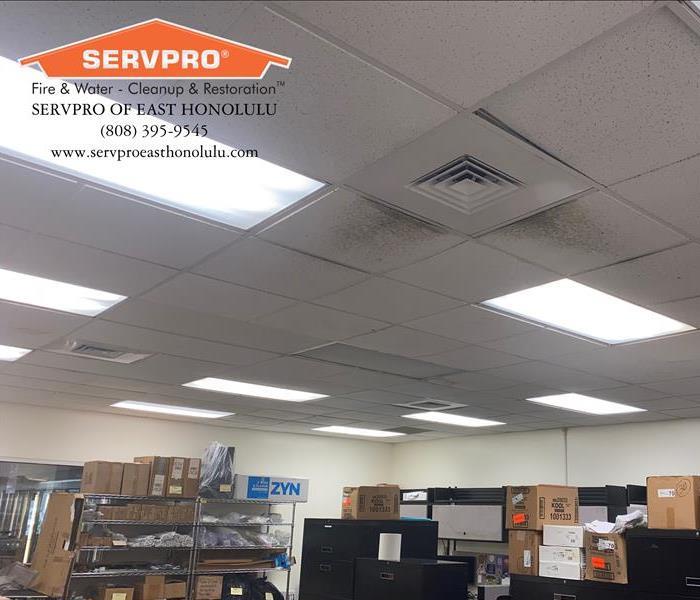 Mold developed from a leak in the air ducts
Mold developed from a leak in the air ducts
A leaking pipe, a damp wall, or even just moist air – all of these can cause mold in your home.
Excess water in your home can be a huge problem. Not only does it ruin furnishings and leave your home smelling musty and stale, but it can also lead to mold.
Mold thrives in damp areas and water can help it to grow. It doesn’t show up straight away though, so how long does it take for mold to grow if you’ve got a damp problem?
How Long Does Black Mold Take to Form?
If you’ve had a leak of water or even a flood in your home, you’ll first be occupied with fixing the problem and clearing the mess. After that’s sorted, you should be asking yourself how long does it take for black mold to form?
This doesn’t mean until it appears on your walls or surfaces, but how long until it takes holds in your home. At first, you won’t actually see the mold latching onto your walls, but it’ll be there. Within just 24-48 hours of damp exposure, mold will start to germinate.
If you think mold is forming, you can wipe over the area with a diluted bleach solution. This won’t always kill 100% of the bacteria, but it’s a good start.
How Long Does it Take for Mold to Grow?
Now you know how long it takes to form, let’s look at how long does it take black mold to grow?
After 24 hours, your mold spores are likely to be germinating on your surfaces, but this can take up to 3 days. By 12 days, the mold should be present on your damp walls, floors, and surfaces, although you still might not be able to see it with your eyes.
It’ll actually take around 18 days for the mold growing in your home to be visible to your eyes. That’s quite shocking! So, even if you think you’ve solved the problem of a burst pipe or leaking roof, you might have some more cleaning up to do weeks down the line.
Once the mold has become visible to the eye, cleaning it properly will be harder. Mold tends to stick heavily to surfaces and, even if it looks like you’ve washed it off, the spores may still be there.
How Fast Does Mold Spread?
Now we’ve answered how long does black mold take to grow? its time to talk about it spreading. Mold is unlikely to stay in one spot if it remains untreated, so catching it early is essential to stop it taking over your walls.
When mold is germinating, it’s quite contained and is unlikely to spread. It’s only around 12 days when the mold colony is more stable that it’ll begin to move and grow. This is something you definitely don’t want, which is why catching mold early is so important.
Get the Right Help
So, how long does it take for mold to grow? That all depends on your situation and we can only estimate, but it’ll be germinate almost instantly after a leak and will appear visibly after around 18 days.
Make Your Own Air Freshener
1/1/2021 (Permalink)
Air Fresheners can be quite lovely for the home, they can hide smells, or make your house smell... "fresher".
But,
These industrial air fresheners may be adversely effecting your health
Some of these store-bought air re-fresheners contain chemicals that inhibit your sense of smell to make the product seem better. Have you ever cleaned your kid's soccer cleats with an air freshener and the next day they day they smell just as bad? The chemical inhibiting smell wore off!
Some even cause an oily film in your nose that stops you from really smelling. This oily coat creates a barrier to your receptors which seems crazy to us here at SERVPRO of East Honolulu.
Even those air-fresheners that claim to deodorize and break down toxins contain harmful chemicals that are not good to breathe in.
Conventional Air Fresheners are actually not made for smelling
In a study done in 2018, there were over 350 chemicals detected in the air after using an unnatural air freshener. Some of these included: benzene, formaldehyde, styrene, and phthalates
Here is a natural tired and true air fresheners we use in the office: The lemon basil spray !
Ingredients:
- 1 Cup of water
- 2 tablespoons of (60% proof) rubbing alcohol or vodka
- 5-6 leaves of basil
- 5 drops of lemon essential oil
The 1 cup water to 2 tablespoons of alcohol is an universal base that can be used to create any air freshener with essential oils of your choice
Start the New Years with Fresh Air?
12/31/2020 (Permalink)
HAPPY NEW YEAR!
From our ohana to yours here at SERVPRO of East Honolulu
We hope that 2021 is a prosperous and healthy year for our community and customers.
As many of you know, here in the Hawaiian isles it is a mixing pot of cultures. One of the most celebrated traditions is osoji or "big cleanup" a tradition brought by Japanese plantation farmers.
Here at SERVPRO of East Honolulu we celebrate this, and to start your new years we thought we could talk about quality air.
Clean air in your home is vital to your health
We offer "air scrubbing" services that literally filters your air of particles, we do this in most jobs for:
- cleaning up soot
- mold remediation or cleaning
- water damage
- odor removal
But,
most homes don't have serious air quality issues rather, they just need a good clean to facilitate a healthier life!
So when trying to assess your air quality, here are some things to keep in mind:
- Chemicals (Cleaning products, Art supplies, Kerosene...etc)
- How do you store your chemicals? Are they in the open? Do you consistently use bleach?
- Dust and other Allergens
- Are there visible areas of dust? How frequently do you clean your soft surfaces?
- CO2 levels
- Do you have a CO2 gas protector? Is your gas odorless?
- Humidity
- Are there any water leaks or moisture traps in your house? Are you aware of your areas prone to water leaks or moisture traps
- Temperature
- Does the temperature in your home affect the chemicals residing in your home?
Some side effects of poor air quality include:
- Hay Fever
- Fatigue
- Allergy-like Symptoms
- Irritability
- Headaches
- Decrease/Increase of Body Sensations
- Congestion
- Hyperventilation/Shortness of Breath
Your air quality in the home can cause adverse health effects
Here are some tips/tricks to improve your air quality:
- Ventilation!
It may sound cliche, or even like a no-brainer but, a good ventilation system is vital to the health of your air. Ventilating allows particles to come and go, stagnant air can harbor more toxins and even create a hospitable zone for mildew and mold. This also rejuvenates your air, we recommend for our city customers to open the windows or ventilate at odd times. Keeping your windows open during traffic or rush hour can be counter productive, try early in the morning or late night for the best results.
- Cleaning your AC frequently
Your AC already has a filter that cleans air impurities and pollutants; cleaning it regularly will stop a build up of these particles and release of them. Make sure you read how to clean your AC properly as some methods can damage the air filter.
- Keeping your Sheets and Clothes Clean
Soft goods are really good at holding in air toxins and other harmful particles. Regularly cleaning your sheets stops dust mites from building up and also helps with your skin health; especially for those who acne prone skin. If you have pets washing sheets and clothes frequently also helps stop hair build-up. Keeping clothes off the floor help prevent easy access for particles as well.
- Beeswax Candles
Beeswax candles actually attract pollutants to it. When burned they actually release negatively-charged particles called electrons. These attract dust and impurities which are positively charged. They also smell good :)
- Household Plants
Plants are one of the easiest ways to maintain a healthy atmosphere in your home. Most of these plants are easy to take care and just need some sun light and water to thrive!
Here are some great indoor plants:
- Bamboo Palm
- English Ivy
- Gerbera Daisy
- Janet Craig Dracaena
- Red Edged Dracaena
- Corn Plant
These are simple tricks, but if you believe your air quality is really bad DO NOT hesitate to call us
(808) 395- 9545
let us know if these tips helped!
Instagram handle: @ SERVPRO_e_honolulu
We are Here to Help 24/7
12/20/2020 (Permalink)
We, at SERVPRO of East Honolulu want to give our deepest mahalo for allowing us to continue to service you this year.
2019 brought an epidemic, turmoil, and fear for the future. SERVPRO of East Honolulu has been here for you and your ohana, even working through COVID-19 following the strict CDC guidelines when working for you.
And as many of you know disasters and messes can come in all shapes and sizes, whether it is in a work environment or in your home; we know how much stress it can be. Especially now during the holiday season.
Here are some important things to keep in mind as you enjoy your holidays.
- If you have been celebrating your holiday with a tree make sure there is always water inside. Just so the tree is receiving some sort of nutrients and is less of a fire hazard
- If you also celebrate with putting lights on the tree make sure that when you go to bed that the lights are turned off and un-plugged. This will ensure that a fire will not occur, it is always good to watch these kinds of lights for fire prevention.
- Inspect the chimney, if there is a build up of soot this could be a fire hazard and an additional hard clean. We at SERVPRO of East Honolulu know how hard it is to clean soot once it affects objects and soft surfaces. The best way to prevent this is by consistently cleaning your chimney
- Remove any items near your furnace, furnaces are handy and scare here in Hawai'i. But if there is a slight chance one has it in our community we want to bring awareness to having flammable items near the furnace.
- Keep combustible products at least 3 feet away from a light source or heat source. This will ensure that these products can not and will not go into flames.
- Stay in the kitchen when you are cooking something. During this holiday season we always enjoy the aunties cooking. The delicious butter mochi, cookies, and other goodies we are all to familiar with. With an increased amount of goodies and cooking, there is a higher risk for one to walk away and a fire to start. Remember even an electrical counter top can set on fire depending on the conditions.
- Menoras and Kinaras should also be placed at least 3 feet away from flammable products. Make sure to also monitor the open flame when in use, we only wish you a safe and healthy holiday.
- If you have a pet make sure that you keep all fragile ornaments out of their reach. We love our furry pals and also wish for their safety.
As always we are here for you this holiday season, and wish you the happiest and safest of all holidays. And to take the time off and enjoy yourselves. So choose us to make sure that
Aloha,
SERVPRO of East Honolulu
Water Damage on Your Ceiling, Now What?
12/20/2020 (Permalink)
Water damage on your ceiling can happen to anyone and everyone, it may be from clogged pipes, faulty toilets, overrun showers or your neighbors upstairs. Whatever the cause, business owners end up facing the mess of sewer damage, an absolute physical, emotional, and financial drain. It's even harder when that break happens on the second story, allowing the polluted fluid to seep down below, ruining not just one floor but two. If this is the case, consider the following to get the building back to normal.
1. Have a Thorough Inspection
First, contact SERVPRO of East Honolulu. Our expert team have specialized equipment and knowledge. When they arrive on scene, our staff should begin to survey the damage, section off the impacted zones, and prepare a plan to sanitize your space or take care of the damage.
2. Take Care of Soaked Material
Unfortunately, most water damaged goods have to be cleaned heavy duty style. It's not something that is simply dried up due to the smell of most water damages. Our crew will begin removing the soaked flooring as well as the affected portions of the ceiling. If the liquid penetrated through, it may have harmed the downstairs. If that is the case, they could begin tearing out items from here as well.
3. Restore the Rooms
The flooded toilet and other fixtures may be replaced with newer items. The spaces are dried with dehumidifiers and then sprayed with antimicrobial spray. At this point, one of our contractors or your insurance's contractors begin construction, patching, painting, and replacing anything lost from the flooding. By the end, both floors should look like they did before.
Sometimes sewer damage is unavoidable. While you can't stop it, you can fix it. Seek the aid of experts who can lead and advise.
We do our part so everyone else can do theirs, and just like that it looks "Like it never even happened."
Do You Have Signs of Mold in Your Honolulu Home?
12/10/2020 (Permalink)
If you're a homeowner in the East Honolulu area, there are a few warning signs of mold/mold spores growing. It is essential that you know how to keep you and your ohana family especially if there is a mold infestation. Here are some indicators that you may have a mold problem:
-One of the first things that indicate that there is a presence of mold in your house is the smell. This presents itself as a musty smell. Do not avoid this smell, make sure you can find the source of the odor.
If one is incapable of finding the source that is OK! Here at SERVPRO of East Honolulu we can find that source for you, but call us as soon as you smell a possible mold smell.
- Often if there is visible mold growth in a home one can mistake it for soot or dirt. Make sure that anything that looks remotely like mold is assessed. Even small patches of mold can grow exponentially and cause an even bigger problem.
When you do find VISIBLE mold that means that the spores can know germinate. This germinating process can cause health effects for your ohana as the spores of mold are airborne and can interrupt healthy organisms such as you or your pets of any kind.
- Taking care of moisture in the home, here in Hawai'i we know how humid it can get. Make sure that you try to do your best in taking care of moisture in the house.
The best way to avoid mold spores or growth in your house is to ensure there is no place it could grow. There aren't any areas with concentrated moisture or show any signs of becoming a mold nursery. For more information on controlling humidity or preventing mold growth refer to our previous blogs on mold growth.
As always SERVPRO of East Honolulu is here for you whenever needed and our experts in cleaning and curing your hale of mold and remediating.
Fire, What's the Next Steps?
12/1/2020 (Permalink)
Fire damage cleanup and restoration are some of the many services we offer here at SERVPRO of East Honolulu.
We know how stressful fire damage can be, and after the fire men are gone we'll be here to clean up the soot and fire damages! Our teams consists of IIRC certified individuals who can assess and properly clean your damaged goods. We can ensure that there are no lingering soot particles or odor, these particles don't get addressed using tried-and-true expert techniques, there is the potential to spread throughout the home. This odor is unpleasant and can be a reminder of the fire.
So, what do we do to fight smoke odors?
When our skilled technicians get called to help with fire damage in East Honolulu, we pay close attention to the entire job. This means assessing the full scope of your loss, including any areas where soot particles and smoke residue settled. Even the smallest bit of residue left behind can cause odors to sprout up weeks or months down the road. This is why we have a series of carefully planned steps we take to execute a full restoration on your property.
What's our fire process?
Once you call us for fire restoration services, a fully equipped crew arrives at your property in as little as 4 hours or less. Our crew chief begins the assessment so that a detailed plan of action can get put into place. Addressing a fire loss with heavy smoke damage includes:
Once your interior is deemed safe to enter, and the plan is formulated, we work to remove items that are too charred to salvage. This helps us to limit the amount of soot spread from one location to another while also lessening odors throughout the interior. Our technicians test the smoke residue, which allows us to select cleaning agents carefully. This ensures more efficient cleaning as well as cuts back on the potential for damage using incorrect cleaning measures.
We see two main types of smoke damage after a fire loss. Dry smoke requires careful cleaning because wet cleaning agents might drive the residue further into the surfaces. We take our time, using care to lift the dry smoke using sponges and soft cloths. With wet smoke, it often binds to surfaces. This calls for solvent-based cleaners to lift it for removal safely. The initial testing done helps ensure no marring happens on any surfaces.
There will be items within your home covered in soot and smoke residue. We handle all of these items on a case by case basis, using a variety of methods to suit each item. Non-porous items can be cleaned using our specialized immersion method. This is when items get immersed in a cleaning solution that helps carefully remove the residue, restoring it to like-new condition. Fabric items and upholstery get tested to ensure no damage comes to the materials, with our technicians often using soft bristle brushes to remove particles.
Here's some reasons you should trust SERVPRO of East Honolulu
Regardless of the nature or scope of the blaze, we have the cleaning technicians equipped to handle the job. Our team is fully accredited in both Odor Control (OCT) and Fire and Smoke Restoration (FSRT). Just a sampling of the tasks we cover throughout the restoration process includes:
- Debris removal
- Pack out services
- Dry vacuuming
- Surface cleaning
- Moisture detection
- Soot removal
- Controlled demolition
We Make Sure No Foul Odors Linger
For any fire damage call, addressing odors is paramount. Deodorization is a critical element of the process, no matter the severity or size of the fire loss. Burning odors and smoke can intensify without professional mitigation such as removal of charred debris and surface cleaning. Our skilled technicians remove all of the noxious odors and neutralize them with a variety of advanced equipment, such as:
- Thermal Fogging Equipment: These are units that heat up a deodorizing compound to put a fine mist on surfaces. This compound penetrates the porous materials to trap the odors in both your contents and structural materials.
- Hydroxyl Generators: These units utilize UV cleaning to help neutralize odors across an open area. The equipment features a HEPA filtration system that works to cut back on harmful particulates in the air.
When Will My Home Be Ready?
Our team does everything we can to provide you with a working timeline of the project from start to finish. The crew works according to a plan that helps us to maintain efficiency without leaving anything unattended to. The job is wrapped up with a full cleaning and deodorization to ensure everything is sanitized and safe for your family to enjoy. We make it, “Like it never even happened.”
Storm Tips for East Honolulu
11/20/2020 (Permalink)
Storms coming,
Here are some quick tips to prevent water damage:
- Repair/replace roof shillings or tiles as needed
- Apply a waterproofing coating to the interior or exterior basement walls
- Create a slope away from the structure to drain runoff properly
- Make sure garden areas have adequate drainage
- Be sure soffit vents are clean and unobstructed
- Check for any cracks or peeling paint
- Fill low spots around building foundation
with clean fill dirt
- Keep downspouts cleat of any blockages
- Clean and inspect gutters regularly
Heavy rains and strong winds can all cause problems with your property. Roofs, gutters, and landscapes are exterior elements that should be checked to guard against water damage. Remember to look in attics, basements or crawl spaces for visible signs of water intrusion. Make sure outside vents are clear of any obstruction to ensure proper airflow.
If you find a problem and need restoration help or want spring cleaning assistance, call your local SERVPRO of East Honolulu professionals. We are on call 24 hours a day, 365 days a year.
(808) 395- 9545
What are Sump Pumps?
11/20/2020 (Permalink)
Sump pumps move water from your basement out of your home. A sump is a naturally constructed pit, usually a hole carved below the main surface of your basement floor. This pit, known as a basin, holds the sump pump. The pump is equipped with valves that sense escalating water levels or pressure. When the water gets too high, sump pumps automatically pump excess water out of the basement and away from your property using a discharge line. This line, called an effluent, connects the sump pump to a designated drainage area.
A sump pump protects your home from heavy rains and rising waters that leave behind enormous repair costs and structural damages. It's important to know which of the different types of sumps pumps best fits your needs.
Sump pumps are typically installed at the lowest point of your home. A properly functioning sump pump will kick on when water levels get too high, sending water out to help keep your basement dry. The typical sump pump runs on electricity, but if you live in an area prone to violent storms that can cause power outages you may want to consider purchasing a battery back up-operated sump pump or a water pressure-activated sump pump. The middle of a storm is a terrible time for you to discover your sump pump has failed.
Cost of a sump pump
Generally, a basement submersible sump will cost anywhere from $100-$400 depending on the horsepower and flow rate, with $500-$1000 prices for sump pumps with commercial uses. Below is a list of considerations for calculating the cost of a sump pump in your home:
1. Type of sump pump
The type of sump pump you choose for your home will determine your cost. Factors such as the material used to make the sump pump, size, horsepower, additional features, including backup battery or a specified switch type can all contribute to the cost.
2. Basement material
The floor of your basement can play a part in the cost of installation. If your basement is made of cement or concrete, then the floor will need to be removed in the lowest point of your basement where you plan to install the pump. The thicker the cement, the higher the cost of labor.
3. Drainage
If your city requires a drainage point a distance from your house, yard drainage lines or extension hoses can increase the cost of installation. Not to mention, they can be hazards to your yard or even freeze in the winter.
4. Permits
The cost of a permit will vary depending on location, so it is best to consider beforehand. The guidelines will also help you factor the cost of the job.
5. Licensed professional
Installing the sump pump yourself can cut costs dramatically if you know what you are doing. But if you are unsure, it is best to go with a licensed professional. Installation cost is cheaper than treating a flooded basement.
Performing a full maintenance check on your sump pump system is a pretty simple process that can potentially help you avoid a costly water loss.
- Before adjusting or moving sump pump, disconnect the sump pump from its electricity source.
- Remove the pump from the well and check the intake grate for any rocks or debris that could have been pulled in.
- Clear well of any debris.
- Put sump pump back in to place and reconnect to power source.
- Fill a 5 gallon bucket with water and pour in to the sump well to make sure the system kicks on and is operating as should.
- Outside your home, check the condition of the pump discharge pipe, making sure it is free of blockage and debris.
If your sump pump appears to not be operating as intended, do not hesitate to call a professional to assess your system.
The Dangers of Flood Water
11/15/2020 (Permalink)
Nature can be unforgiving at times, and when it is, we at SERVPRO of East Honolulu are here to help. We have seen all types of water damage, yet one of the worst types is due to storm damage.
There are a variation of types of water categories in regards to the cleanliness of the water/source. Flood water can be a category 3 which is the worst category. Meaning that it can possess extremely dirty water and harmful foreign objects including but not limited to blood borne pathogens or other diseases.
Here are some commonalities in most flood waters that have been in some we dealt with:
- human and livestock waste
- household, industrial, or medical waste
- ash waste that can contain toxic chemicals
- objects such as debris, or metal
- wild or stray animals
These type of containment can create a foul odor, and are extremely dangerous if not instantly dealt with. Due to the high chance of harmful bacteria inside flood water, letting it stand still without cleaning it can cause an increase of bacteria. This type of bacteria can be harmful and cause adverse side effects.
Make sure that you stay away from the flood water, whether you have to drive through it or it is in your home. You never know what is in flood water as there can also be electrical or chemical problems inside of the water as well.
Some types of flood water can cause health issues if one is exposed to it like,
- wound infections
- skin rash
- tetanus
- stomach problems
If you are touching/ cleaning up flood water, first call professionals like us. Here at SERVPRO of East Honolulu we have an able and equipped team that is frequently tested in case of exposure to health issues and can clean up any natural disaster.
But if you do come into contact with flood water make sure,
- you wash the area that has been touched with soap and CLEAN water. Soap is a tame basic solution which if used correctly can be very effective. That is, by washing for at least 45 seconds. Since soap attracts dirt-like particles the longer you clean the area the safer you're skin becomes.
- if there are wounds or punctures that occurred because of the flood water immediately seek medical attention. No one has any idea what type of concoction that can be within the flood water, and due to the increased risk of illness inside the water. It is best to seek medical emergency as soon as you feel like you have been injured.
- If you are trying to restore your soft goods and materials, make sure that you used an increased amount of laundry detergent, hot water, and a slight amount of bleach. Wash these items more than once, again flood water can be extremely gross.
-prevent wounds and injuries by not attempting to go into the water if you can not see the bottom of the floor. That means there are so many contaminates in the water that you can't see your floor. This is dangerous, you have no idea where you're stepping or what lurks underneath the water. There could be a chance of foreign objects that are harmful and pointy, because of the hindrance of the contaminants in the water you will not know.
If you have any questions, refer to the CDC guidelines and health cautions of flood water. As always we only wish the best for our community in all regards but especially in health and safety. If you or a loved one are experiencing flood water issues please call us at
(808) 395-9545
Candle Free Alternatives
11/6/2020 (Permalink)
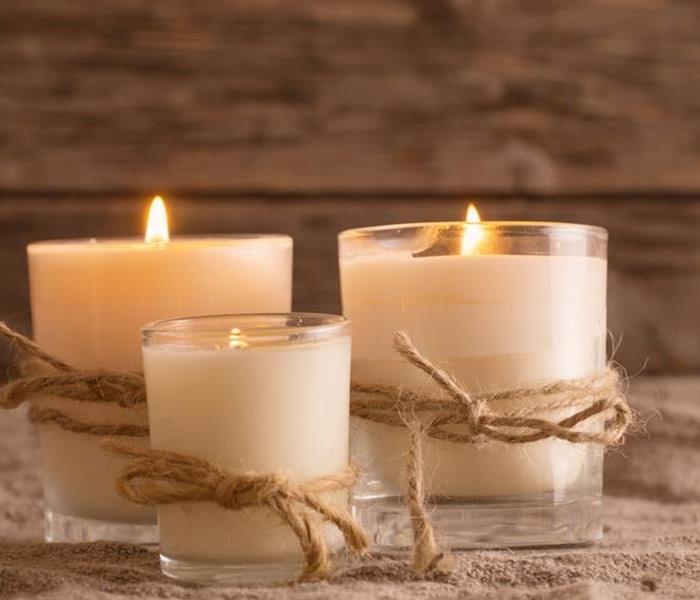 If you are thinking about using alternatives other than candles this holiday, you probably should. Here are 5 different alternatives!
If you are thinking about using alternatives other than candles this holiday, you probably should. Here are 5 different alternatives!
Aloha supporters of SERVPRO of East Honolulu,
We would like to extend a huge mahalo to everyone who reads our blogs and also request our services. We are happy to serve East Honolulu and share these tips with you.
As we are in peak holiday season the use of candles has risen, with candles being used as decorum or mood setters for this time of year.
It is also important to note, the use of candles do not equate to fire starting.
The issue with an increased use of candles is the increased use of negligence with respects to candles themselves. While many of us don't practice proper fire etiquette to sustain a candle flame; here are some great alternatives for a fire-free holiday.
1. Fairy Lights
Because they are usually battery-run or with electricity, these are great alternatives to candles especially if you're just using a candle for mood setting. It will out live a candle, while also being a great way to even spice up one's light theme. With many different types of Fairy Lights some are even 10+ colors.
2. Wax Warmers
If you like candles for the warm scent they bring, wax warmers are a great alternative. Bringing in new aromas in a more controlled setting; they also either use electricity and have no open flame.
3. Essential Oil Diffuser
Essential oils create added scent to a room, with some good health benefits. There are many different diffusers to choose from, so you can easily find one that matches your home. Beware of oil diffusers if you have pets, as some can not handle essential oils nor diffusers creating adverse effects to certain pets.
4. Stick Diffuser
These are both easy and care-free, these simply add scent from the scented oil the sticks reside in. Being a simple gesture to a great-smelling holiday season.
5. Battery-Powered Candles
The easiest change from open-flame candles to safer alternatives is to a battery-powered candle.
Be safe over the holidays, everyone at SERVPRO of East Honolulu wish you the happiest of holidays.
We are here 24/7 365 days of the week, call for any emergencies:
(808) 395-9545
That Drip
11/6/2020 (Permalink)
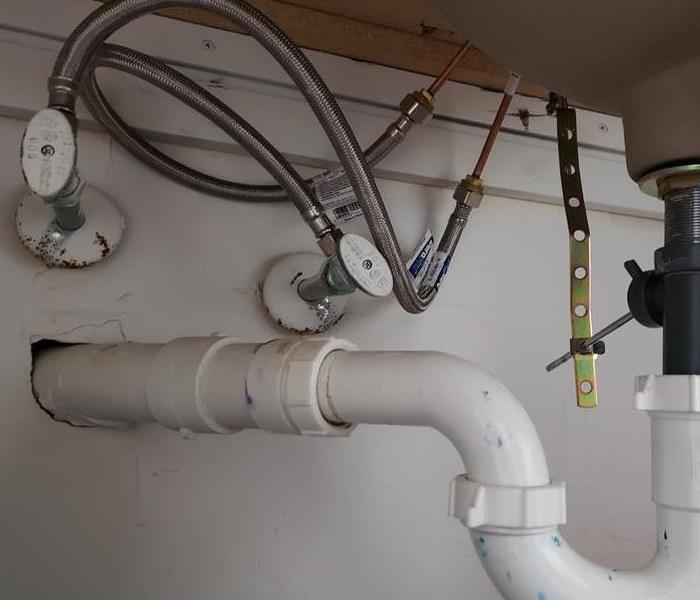 Make sure to check your everyday appliances for wear and tear to ensure that you don't need to call us anytime soon :)
Make sure to check your everyday appliances for wear and tear to ensure that you don't need to call us anytime soon :)
Nowadays, one can hear "drip" as a modern convention to mean something like " gold chains" or "clout"- social power. No, here at SERVPRO of East Honolulu the "drip" has and will always be known as a bad idea, entailing water damage. Our "drips" can happen anywhere, subtle leaking from your toilet or any of your appliances using water.
Drips can happen from storms or natural causes, or the inefficacy of one's machines. Drips can be costly, and lead to most water damage cases we see today.
Look for water damage in the following appliances:
- Behind the tub casing. The caulk that seals tubs slowly wears away through usage, leaving cracks for not just pests and mold to harbor but also water. This is one of the biggest reasons why mold is an issue in restrooms; the cause being water stagnancy from caulk holes.
- At roof intersections. The seals around common roof intersections, exhaust fans, are also not made for surplus amounts of water. Water occasionally deposits at these intersections and once set will cause issues for homeowners and business owners alike.
Under a sink can often hide small drips, which can turn into big water damage aiding to mold.
Behind drywall. Drywall is made to hide the structure of the home, but it can also hide water damage to that structure—especially following floods or burst pipes elsewhere in the home.
At roof intersections. The seals around common roof intersections such as chimneys and exhaust fans are designed to keep out water but are not designed to last forever.
Inside an AC unit. The line that draining the condensation from an air conditioning unit can become backed up that sends water inside of the unit instead causing malfunctions.
Beneath appliances. Washing machines and dishwashers pump a large volume of water into and out of the house and can cause hidden leaks that lead to costly repairs if not thoroughly checked.
Behind exterior faucets. A house can easily hide a leak from an exterior faucet, which can occur when its bond to the water pipe malfunctions ending in water bursts.
Watch Out for Flood Water!
11/5/2020 (Permalink)
Water damage could happen to anyone, us at SERVPRO of East Honolulu have almost seen it all. A running facet, or shower, water damage from the apartment above, leaks and more. But, the most dangerous thing to come out of water damage is the water itself.
Please be careful when assessing your water damage!
And, make sure you know where the water is coming from before delving in to the cleaning up.
If the water is brown or dirty, do not touch it. Wait until professionals come, unclear water means the water is contaminated with something. Although it can be something as simple as dirt, it can be as deadly as pathogens. This type of contaminated water can be from a sewage system, leaky pipes allowing contaminates into the water before bursting...etc.
Here are some things to be mindful of when dealing with said contaminated water, or water in general:
-sewage particles
- viruses
-toxic chemicals
-bacteria
-microbes
We know of the stress and anxiety that occurs when a leak or water enters your home, know that there are ways to prevent in the future, and professionals who are a phone call away.
SERVPRO of East Honolulu is available 24/7, 365 to make the cleaning and restoring process for you simple and efficient.
Our Premier Commercial Cleanings
10/15/2020 (Permalink)
Here at SERVPRO of East Honolulu we know how important it is to have a pristine commercial area. WE should be your first choice for your commercial property because of our extensive knowledge assessing, cleaning, and restoring damages.
Our team consists of qualified professionals who can quickly and efficiently clean and minimize the damage of your property regardless of size.
We use the best technology and the innovative ways of SERVPRO to make the best solution for your issue. We are proud to wear the SERVPRO brand because of their excellence and quality insurance that we uphold.
we have cleaned before:
- large offices
- high rise office buildings
- manufactures
- retail stores
- hospitals
- hotels
- apartment buildings
and so much more
Not only are we more than qualified for any mess in your business; we are available to you 24/7. We clean anytime and anywhere for your convenience and to lessen the damage. Here, at SERVPRO of East Honolulu we ensure that your place looks like a mess; never even happened.
The Three Types of Water Damage
10/1/2020 (Permalink)
There are three types of water damage that we assess certain damages as. To make sure that we get the best profile for your damage, and clean up we categorize where the water is from. This gives us a good idea of how it will affect your walls, floors, or ceiling; this also tells us if there is extra disinfecting needed. Our experts can tell if there is more beneath your damage and if there is an underlying cause before anyone else!
SERVPRO of East Honolulu can guarantee a procedural, and professional process for you. Here are the categories:
1. Category 1, water that does not seem to threaten life such as humans or pets is deemed a category 1 or, "clean water". This can be something like an overflow of a sink or tub, or a faucet failure.
Our experts can clean swiftly and effortlessly. This type of water needs a good drying with our fans and de-humidifier and a sanitize. This type of water is the most simple water because there are not contaminates in it. These type of jobs can take 1-10 days.
2. Category 2, has some type of containment to it, like an in between of category 1 and 3. This is at the experts digression, of a significant degree of containment. This could be physical, biological or chemical of origin that can cause sickness or discomfort if consumed by a life source. This could be from a toilet, or water from a washing machine/ dishwasher.
This type of category takes a little bit longer to clean as there is more of a sanitizing and disinfecting that needs to be done. There also needs to be a demolition if there are surfaces that are damaged and can not be washed or cleaned effectively. Soft goods can be washed or discarded.
3. Category 3 means that the water is grossly contaminated and is extremely unsanitary. This can be sea water, sewage water, a toilet trap, even category 2 still-water can turn into category 3 water. This can also be considered "black water."
Our experts know of the dangers of "cat 3" and need to "demo" as soon as possible. This type of water has extreme after effects and needs to be cleaned to lessen the damage. Affected dry wall, carpeting, flooring besides concrete and heavy wood need to be removed. Dry wall is not privy to cleaning and most porous substances need to be removed, to the exception of heavy duty wood which can withstand the cleaning needed for cat 3 messes. Our team also needs to heavily clean the areas before an owner or insurance can place in new flooring or dry wall. If there are soft substances they can be cleaned in our industrial cleaner or replaced.
When we do an assessment of your damage it is imperative to know what type of category your water is in, to make the job that much easier and for your safety. Here at SERVPRO of East Honolulu your ease is important but even more so if your health and safety. We do our jobs to completion with your health in mind so you can rest easy!
Living with Water Damage and Repairs
10/1/2020 (Permalink)
Here at SERVPRO of East Honolulu we know how stressful water damage can be. It seems like it is an additional load after everything else going on in our customer's lives.
It can even throw you off if you come home to a big water breakage or mess, but here at SERVPRO of East Honolulu we are here to help. We have innovative tools and a qualified team to quickly clean it up.
But, while they are doing their job it can be hard living with the machines and the repairs.
For us, it is our goal to make sure that it looks "Like it never even happened." A SERVPRO promise and a strive for excellency. While we are cleaning we know that it can be a stressor. And we try to accommodate as much as possible. Like cleaning quadrants or making various containments to only interrupt segments of your life.
We also only do demolitions if it is absolutely necessary, we try to do our job to maintain the integrity of the original house for less hassle and money. And when we do a demolition the process is generally very quick and efficient so an a contractor can do their job as quickly as possible.
Here at SERVPRO of East Honolulu we also strive to keep our servicing well within a week, so you can keep your life running smoothly and we can continue our quick and efficient track record.
We try as hard as we can to make sure that we do our job smoothly so you can go on:
"Like it never even happened."
Precautions for Owners of Older Property
9/20/2020 (Permalink)
Older properties have a few advantages such as charm and location, but they can be difficult to maintain, especially for landlords. Plumbing issues can haunt landlords and operators of apartment complexes. Many of the systems are outdated. Obsolete pipes made of polybutylene not only frequently crack and break but they also affect the quality of the drinking water. If the goal is to avoid constant repairs and frequent complaints from tenants.
A landlord should try these solutions.
- Regular Inspections:Regular plumbing inspections can catch small problems before they get big and expensive. They can also prevent expensive problems with water damage that destroys flooring and creates other issues such as mold growth. Plus, an expense that is planned for is often easier to manage than a surprise bill. So you don't have to call us anytime soon :)
- Replacing Antiquated Piping Systems: This product was popular in the 1970s and the 1980s because it was inexpensive and easy to install. Unfortunately, it doesn't belong in a rental unit plumbing system, or anywhere else for that matter, for a number of reasons. Repeated repairs will just result in more repairs. The solution is to replace the pipes with CPVC, copper, or some other suitable material. We recommend copper or plastic pipes because of its durability and inexpensiveness.
- Partnering with a Trusted Mitigation Company: The services of a professional water remediation franchise can come in handy for a number of circumstances. Water restoration experts arrive quickly on the scene and take care of a water problem 24/7 and 365 days a year. SERVPRO of East Honolulu, is Faster to Any Size Disaster. Certified technicians have the training and equipment to handle water leaks, toilet overflows, and broken pipes mitigation services.
- Monitor Sewer Lines: Tree roots and other obstructions can cause sewage overflows and backups. Regular maintenance can clear away dangers to sewer pipes.
Making the Best Musubi!
9/15/2020 (Permalink)
Here at SERVPRO of East Honolulu we are always on the go. Most of our workers stop by the nearest gas station, grab a quick bite whether that is an egg roll, musubi, or sandwich and head right back out to the field. We are constantly starting and finishing jobs and because of that we know what a good musubi tastes like!
We love all kinds of musubis too, there is nothing more satisfying than a katsu chicken musubi or a refreshing fried fish musubi!
For anyone wondering, a musubi is a Japanese food that here in Hawai'i has been incorporated into our culture. It is simply a type of meat on top of a slab of rice and carefully wrapped by nori or seaweed. This can come in all different types of nori and meats, but the classic musubi is a thin slice of seaweed and spam.
Spam is a cult classic in the Hawaiian isle, and it is absolutely delicious!
So here are some ingredients needed for the office favorite: teriyaki spam musubi,
- 1 can of Spam (keep the can, you'll need it for later!)
- 1 square sheet of nori, cut into 2 inch strips (this is for the individual musubi)
- saran wrap ( to wrap the musubi)
- Japanese medium grain sticky rice (this is important because this is the best and ultimate rice to make with musubis as it sticks well)
here are the ingredients for teriyaki sauce:
- 4 tbsp of sugar
- 1 tbsp of mirin (rice wine vinegar)
- 4 tbsp of soysauce
The steps for the teriyaki sauce,
1. mix all the ingredients together in a sauce pan on low heat until all the sugar is dissolved
2. set aside (this is what we will marinate the spam inside)
To make the SPAM:
1. cut the box of spam into about 1/4 inch slices, which is considered the perfect amount of meat. This will make about 5-6 slices per box
there is where you can deviate:
if you're making the musubis for the next day, in a baking pan place the slices of musubi into said pan and pour the teriyaki inside. Place into the refrigerator and place it over night.
1. the next morning, place the teriyaki SPAM slices into a pan with 2 tbsp of oil and cook until brown
2. make sure that your rice is super fresh, so you'll have to make the rice that morning or use a timer to cook the rice accordingly
If it's for today let's continue!
1. so get your cut spam and cook it in 2 tbsp of oil until it is a light brown and crispy, afterwards place the teriyaki sauce on top of the spam and let it simmer until it bubbles and tops the spam
next, put some cling wrap inside your spam container, coating the inside and enough to have remaining saran wrap to pull it out of the tin
1. place some freshly cooked rice inside the container that is coated with saran wrap and this will be about 4-5 tbsp of rice.
2. then place the spam, and firmly press the rice and meat together
3. once firmly set together gather the cling wrap and pull out the rice and meat
4. from there the rice and meat should be firmly together enough that when you remove the wrap it will stay, take on of your seaweed slices and places it on top of the meat and rice in a way that will help the musubi maintain its integrity. When you firmly wrap the seaweed around the rice and meat block place a little bit of water on both ends of the seaweed strip to lock the seaweed into place.
5. repeat this step until there are no more musubis, if there is extra teriyaki sauce you can use it to eat with the excess rice :)
And that's how you make a musubi! Enjoy it with aloha, and make sure you tag us on instagram to share your own rendition of this island favorite!
Our instagram handle is @ SERVPRO_east_honolulu
Saving Money by Being Cautious
9/15/2020 (Permalink)
Most people don't mind a leaky faucet or pipe, as long as it is only a few drops there is nothing to worry about... right?
Actually, a leaky faucet can cause up to 7 gallons of water lost in one day.
Not only this, if there is a significant flow of water there can be at least 30 gallons of lost water. There also many programs that actually calculate how much water could be lost based on your estimations!
The problem with leaky/ faulty water pipes and faucets mean that there are long term problems with your materials!
Once a leak starts, the longer that the problem is not fixed the more the pipe endures water damage, and also your house.
Approximately,
-15,140 drips of water makes one gallon
- 4,000 drips make a whole liter
That is a whole gallon or liter wasted because of a dripping faucet.
It is about $20-60 to fix a leaky pipe or faucet if you call a professional, which seems like a lot money. But, in comparison a leaky pipe or faucet can cost anywhere from $100-$600 a month!
Make sure if you have a leaky pipe, or faucet or anything that is using unnecessary amounts of water you fix it immediately. Not only will this save money, but it will also conserve necessary water for your ohana or business.
But, wait there is more...
running toilets!
Running toilets can also be a huge money sucker! A running toilet on average wastes about 200 gallons in a eight hour time window. This means that a running toilet can cost about:
$75-$150 a month
And if your problems go unchecked, this can cause long term damage...
That's when you'll have to call us
We have seen faulty pipes break because of a simple issue, and from that extensive water damage to your business or home.
This can come in all shapes in sizes like damage to your dry wall, odor because of a water clean up, or even erosion if the problem has been occurring for a long and continuous time.
Not only this, but when you think about it...
Where does this water go? It isn't being consumer by you, or your constitutes.
----------> well it is going to your local water company, the only issue is that if there are enough leakages in the neighborhood, or community; that is a significant amount of water. Being additionally treated that has not been used, this may increase the general price of water. Many water treatment companies have also stated that leakages are one of the main reasons why water is being inflated.
So check on your pipes, take care of your running toilet, and leaky faucets/pipes. At the end of the day it will be easier for you, and you won't have to call us :)
What is Considered Biohazard?
9/10/2020 (Permalink)
Biohazard means that there is an exposure of biological and chemical containment. This can be: sewage backups, blood borne pathogens, illegal substances or illegal substance factories.
Essentially anything that has infectious materials potentially infectious substances. There needs to be even greater caution when there are bio hazardous materials that can inflict pain or puncture the skin. This is extremely dangerous as they can carriers of blood borne pathogens or other harms to the body or any organism.
The most common types of bio hazard that we deal with is as follows: animal waste, human bodily fluids (blood, sweat..etc), pathological waste (such as that of sewer water).
Even when dried biohazardous materials does pose a potential threat, it is a common misconception that they do not. Although it is less likely to effect an organism there is still potential for it to infect and should be avoided and to allow the professionals to handle it.
SERVPRO of East Honolulu knows how to handle biohazard and is well-trained in it. We also frequently test our employees for blood borne pathogens and other harm to make sure that our employees are safe. We take care of you, and make sure that even any biohazard mess looks "Like it never even happened."
August: Sporicidin Fresh
9/1/2020 (Permalink)
For the month of August we want to highlight this awesome cleaner that isn't from us: Sporicidin Fresh! This is a biocide, defined in the European legislation as a chemical substance or microorganism intended to destroy, deter, render harmless, or exert a controlling effect on any harmful organisms. Biocides are often used as cleaners and disinfectants to clean bacteria or other harmful microorganisms for humans.
Sporicidin Fresh is intended to be used in water damages that have the possibility of biological material existing within the water. This can kill the biological material and any of the harmful diseases or infections it may have.
This is an EPA disinfectant, meaning that it has been approved by the United State's Environmental Protective Agency, and it ok to use for mold as well. And because of OSHA which is Occupational Safety and Health Act. This means that Sporicidin Fresh can also be used for bloode-borne pathogens.
Looking for the Right Things From a Storm Restoration Company | SERVPRO® of East Honolulu
9/1/2020 (Permalink)
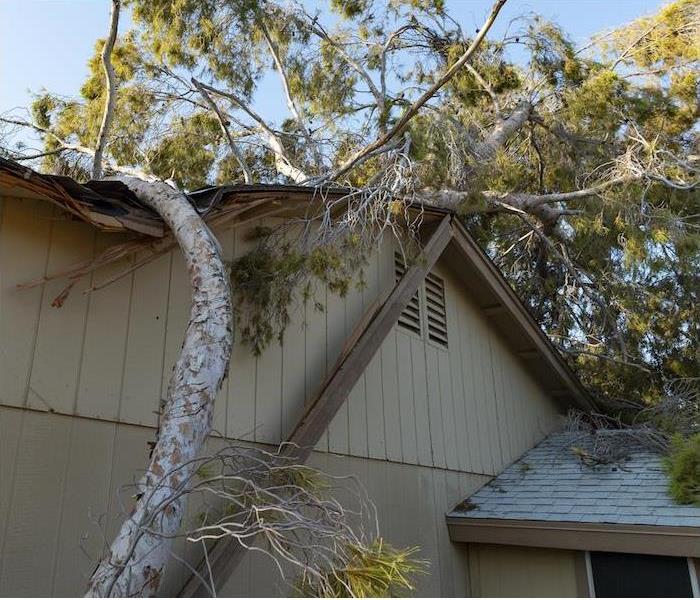 When you have damage from a storm to your home or commercial building, you can always depend on us to handle it. Call us today 808-395-9545
When you have damage from a storm to your home or commercial building, you can always depend on us to handle it. Call us today 808-395-9545
Experiencing a severe weather event is never an enjoyable thing, especially if your property is damaged in the process. Storm damage is becoming more common and more severe as time progresses, so we always advocate for people to think through what they will do before they find themselves needing restoration right away.
One of the most important aspects of the entire process is choosing the right company to handle your storm damage restoration. You will have many options after there is a major storm in the area, but picking correctly can significantly reduce your stress throughout the entire process and ensure your damage is properly handled.
What Should I Look for in a Storm Restoration Company?What is their local and national reputation? When a storm moves through the area, so do many unscrupulous companies looking to take advantage of those affected. Scams after storms are extremely common, so it is best to make sure you are choosing a well-reputed company to handle your work. Checking that your company is both well-renowned in Honolulu and on a national level is advised.
How do they handle a surge in demand? When a major weather event strikes, the requests for restoration can easily overwhelm companies that are not built to handle the sudden influx of business. With us, however, you can be certain you will receive the same quick service regardless of the size of the disaster. Our national SERVPRO® partners can always provide more equipment and technicians when needed, so we will do a superb job after storms of any size.
When can I call them to report my damage? There is no schedule that severe weather abides by, so picking a company that adheres to strict office hours may not provide you with the best possible service. Thanks to our 24⁄7 emergency line, you can call us any time you experience damage so you can be certain we are working on it no matter what time of day a storm rolls through.
When you have damage from a storm to your home or commercial building, you can always depend on us to handle it. Contact us at any hour to see our exceptional service in action.
Are You Sure You Need a Drain Cleaner ?
8/31/2020 (Permalink)
No one likes a clogged drain or plumbing problems, these can be ranging from horrendous to doable.
Some problems require professionals before it is too late and others need a simple fix or an at home DIY (do it yourself). There are many ways to get a drain working again, some better than others. Though reaching right away for a drain cleaner seems like a good idea, a closer look suggests pouring chemicals into your pipes should be approached with caution. These reasons clarify the dangers of resorting to chemicals.
- The chemicals in a drain cleaner can be toxic
Drain cleaners are toxic to humans and to pets. Merely breathing in the chemicals can cause stinging in the eyes and discomfort in the mouth. The chemicals can also burn exposed skin. Putting them into your plumbing system may not be the safest.
- Hazardous for the Environment
Chemicals that go down the drain in your home or business in East Honolulu wind up in streams, groundwater, and the beach. These chemicals are toxic enough to kill fish, marine life, mammals and insects. There are less harmful ways to clear a clogged drain, including mechanical and biological options.
- Erosion on pipes
Chemical drain cleaners work by creating enough heat to burn through substances causing the blockage. Whether the source of the heat is lye, bleach, acid, or some other substance, the chemicals can harm older, weaker pipes and plastic pipes. These chemicals weaken pipes and will lead to more issues in the future.
- There is no 100% guarantee
In situations where the drain is completely blocked, chemicals often just sit in the pipes creating heat and not clearing the drain. Oil and grease buildup in the drain is another occasion not conducive to being cleaned with chemicals.
What are some alternatives to store bought cleaners?
- Vinegar and Baking Soda - The vinegar is an acidic chemical, and baking soda is a natural cleansing product. Mix these two ingredients over the clogged drain. The mixture will fizz. Let the mixture sit overnight. In the morning, flush the drain with hot water.
- Hot Water and Dish Soap - Boil some hot water and mix in a few tablespoons of dish soap. Then slowly pour the mixture down the drain. The hot water will help to liquefy the clog, and the soap will help it to slide down the drain.
Whether your home or business has a clogged drain or a major sewage problem and happened to cause water damage, SERVPRO professionals are Faster to Any Size Disaster and are trained to remediate water damage. They are experienced in sewage cleaning methods that restore a building to excellent condition again. The franchise has been helping people recover from fires, floods, and other disasters for over 50 years.
Do Not Hesitate to Call Us at
(808) 395-9545
COVID-19 Cleaning as Biohazard Experts
8/14/2020 (Permalink)
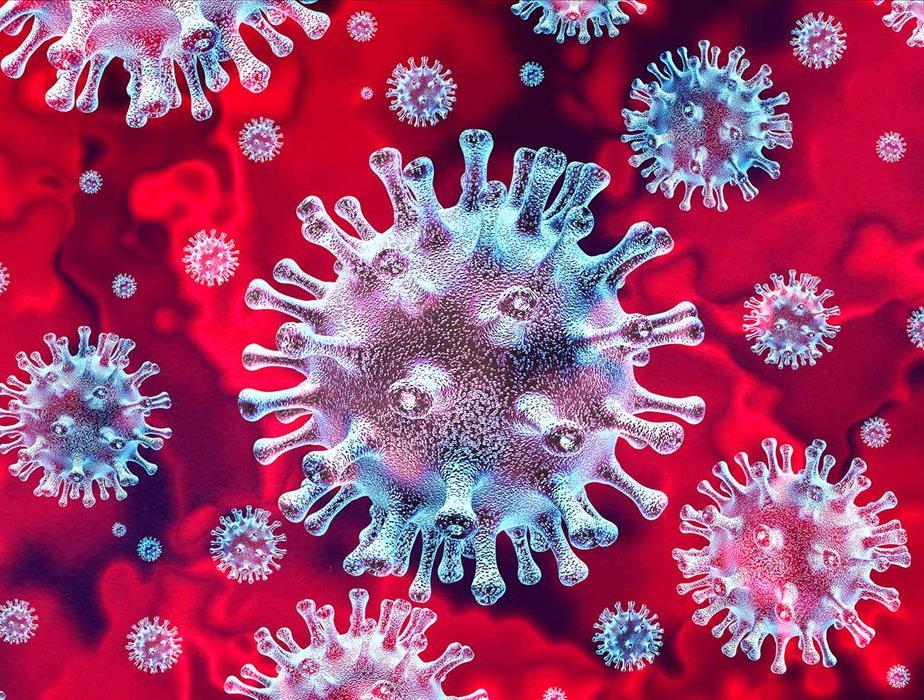 As COVID-19 spreads, know that SERVPRO has your back
As COVID-19 spreads, know that SERVPRO has your back
During this unprecedented time, there have been more than a few changes to everyday life.
Like remembering your mask wherever you go, or temperature checks at work; COVID-19 has changed many Hawai'i residents' lives.
As COVID-19 rates exponentially rise in our state (with the average newly reported cases topping that of March's averages) there is an increased uncertainty for the future.
But if there is one thing SERVPRO of East Honolulu is known for, it's our readiness to serve our community as field experts.
As you are adapting with the community we are adapting to your new issues, including COVID-19 cleanings.
We pride ourselves on repping the SERVPRO brand, and what that means to our customers satisfaction. Our experts have years of experience cleaning biomedical hazards, viral contaminates, and high-touch areas.
With our EPA-grade cleaning solutions that are hospitable-friendly and tough enough to kill 99.99% of germs. We can effectively sanitize an area that has been affected by COVID-19. In addition to using top quality solutions, we also use our HEPA filters to additionally clean the air from airborne particles. These HEPA filters use modern technology to thoroughly clean the air of contaminates unable to be caught by just using sanitizing solutions.
Here at SERVPRO of East Honolulu, we pride ourselves in keeping with accordance to CDC standards and EPA guidelines for the most efficient clean for your home and business.
Using the three C's: consult, clean, and certify we can help disinfect COVID-19 exposed surfaces and general areas.
Do not hesitate to call us at:
(808) 395-9545
"Like it never even happened." Our SERVPRO promise to you.
We are Cleaning Experts
8/14/2020 (Permalink)
SERVPRO is Here to Help during this time of need
During this unprecedented time caused by the global pandemic of coronavirus, this is a reminder to our customers that we are specialists in cleaning services, and we adhere to the highest cleaning and sanitation standards.
Specialized Training
We are prepared to clean and disinfect your home or business, according to protocols set forth by the Centers for Disease Control and Prevention. We have years of experience in dealing with biological contaminants, and we will go beyond the scope of work that regular janitorial staff perform on a daily basis.
The CDC encourages cleaning of high-touch surfaces such as counters, tabletops, doorknobs, light switches, bathroom fixtures, toilets, phones, keyboards, tablets and tables. Other spaces mentioned in the CDC’s guidance for commercial spaces include:
- Kitchen/Food Areas
- Bathrooms
- Schools/Classrooms
- Offices
- Retail Spaces
- Water Fountains
- Shelving/Racks
- Sales Counters
- Carpets and Rugs
- Stair Handrails
- Elevator Cars
- Playground Equipment
- Fitness Equipment
Specialized Products
The CDC recommends usage of a labeled hospital-grade disinfectant with claims against similar pathogens to the coronavirus. Multiple products in the SERVPRO product line carry the EPA-approved emerging pathogens claims. While there is currently no product tested against this particular strain of the coronavirus, we are following all guidelines as provided by the CDC and local authorities.
Call Today for a Proactive Cleaning
If your home or business needs deep cleaning services, call the experts today – SERVPRO of East Honolulu 808-395-9545
Advice for Warm-Weather Thunderstorms | SERVPRO® of East Honolulu
8/12/2020 (Permalink)
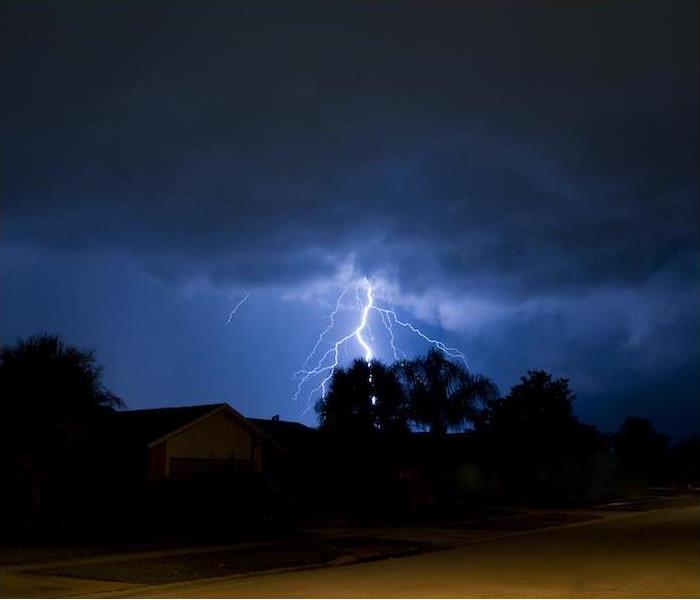 If your home sustains damage due to a storm, you can count on us to help. Contact us at any hour to learn more about our storm restoration process.
If your home sustains damage due to a storm, you can count on us to help. Contact us at any hour to learn more about our storm restoration process.
Because storms need moisture to form, the humidity of summer always gives rise to regular, brief showers. However, these can also turn into more severe thunderstorms rather quickly, which can lead to damage from high winds, lightning and hail.
Since these storms feel routine, they are often ignored, but knowing how to stay safe from a storm anywhere you go can help protect you.
<h3safe-from-summer-storms-anywhere-you-go">Stay Safe From Summer Storms Anywhere You Go
Know your options for shelter. If you are at home and know that a storm is possible for the area, it is best to stay inside and wait it out in case things become severe. However, if a sudden storm catches you out and about, it is also important to know what to do then. Hard-topped cars can be a good shelter, provided you are able to park safely and cut off the engine, as the metal of the car will disburse lightning strikes without doing harm to passengers.
Practice electrical safety. As lightning strikes a building, it routes itself down the path of least resistance in order to reach the balancing charge of the ground—which often means it runs through a home’s electrical wiring system to do so. This can cause a power surge, which is when the charge overwhelms the system and runs through the outlets to anything plugged in. Running everything through your home and office through surge protectors is a great first step, but if you know a storm is coming, you can also unplug everything to be extra safe.
Avoid direct contact with concrete. Did you know that concrete structures have been found to conduct electricity? While concrete itself does not carry a charge, it is often reinforced with metals that can be impacted by a lightning strike and transfer this energy to the surrounding concrete. If a thunderstorm is nearby, avoid touching any concrete walls or floors directly.
Stay indoors for at least 30 minutes. When sudden summer storms interrupt your plans, as soon as the sky clears you will want to get back outside—but since lightning has a 25-mile strike range, going outside prematurely can actually put you in harm’s way. When thunder claps, start a 30-minute timer before heading outdoors, and reset it every time you hear another rumble to be safe.
If your home sustains damage due to a storm, you can count on us to help. Contact us at any hour to learn more about our storm restoration process.
Be Sure Your Staff Knows What to Do in Case of a Fire | SERVPRO® of East Honolulu
8/7/2020 (Permalink)
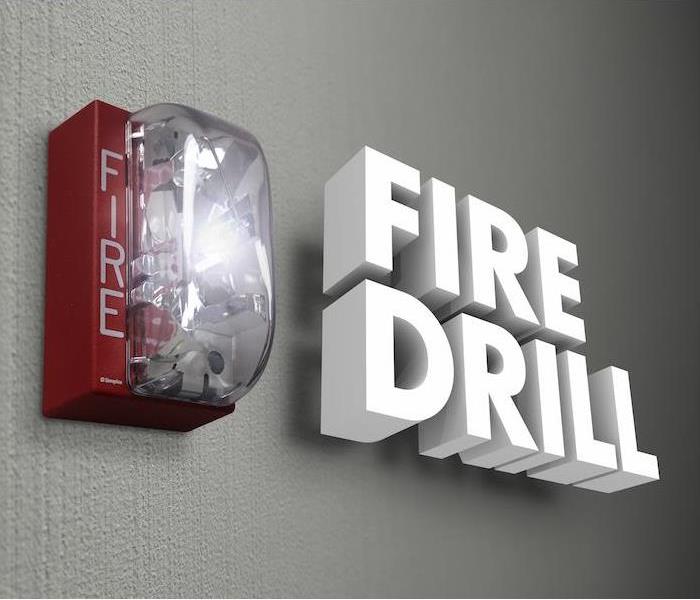 If your business has experienced fire damage, you can count on us. We specialize in commercial fire restoration and will be here for you 24/7
If your business has experienced fire damage, you can count on us. We specialize in commercial fire restoration and will be here for you 24/7
Making boosts to your business’ safety efforts is a great way to ensure you are not surprised by any emergencies and that you are keeping your staff as safe as possible. Fires at businesses happen quite frequently, so anything you can do to plan ahead and reduce your risk is wise.
Being able to get your staff evacuated quickly from a fire is the most important component to plan for so you can be certain you are doing your best to keep everyone safe. Having a plan in place for fire drills is a great way to ensure everyone knows exactly how to react if one starts.
Have a Plan in Place for Workplace Fire DrillsConsult with your local fire officials. Fire officials are an amazing resource when it comes to planning out your fire safety efforts, so definitely get in touch with them and gain their insight into your fire drill strategy. They can often come by and help you identify evacuation routes and other special considerations that might impact your fire drills.
Communicate and mark fire evacuation routes. After mapping out your fire drills, mark them clearly so that they are easy to identify even in a stressful situation. Inform your staff of your fire safety plans, and let them know when and what to expect from your upcoming exercise so they can be prepared.
Have fire drills frequently. The main goal of a fire drill is to help everyone understand exactly what to do and go through the motions so that they are prepared in case a real fire starts. Frequently go through the processes with your staff and host drills at least once each quarter so everyone has a chance to rehearse.
Run different fire scenarios. There are a number of places that a fire could start—the office kitchen is the most likely place, but electrical malfunctions or other incidents could lead to a fire in other areas of the building. Make sure you plan for different scenarios and alter your drills each time so that everyone can prepare for the most amount of situations possible.
If your business has experienced fire damage, you can count on us. We specialize in commercial fire restoration and will be here for you at any hour—contact us today.
Recovering From Mold Growth
7/20/2020 (Permalink)
Recovering from a mold infestation is no easy feat! Mold and mildew are very pesky and hard to completely get rid of. Once we at SERVPRO of East Honolulu have finished our jobs, there are tasks one can do to make sure that we don't have to come back.
- Always dry it up
After remediation there are bound to still be mold spores whether there are dormant or floating in the air. When your basement leaks or there is any spill water/spills immediately clean it up. These spores can be dormant for years and only need the right amount of moisture to be revived. Here in East Honolulu, humidity is inevitable but moisture spots and wetness doesn't have to be!
- Bathroom Humidity
Bathrooms are the best habitat for growing mold! Make sure that there is a good ventilation system in your bathroom. If there is excess pools of water after showering or bathing... clean them up!
- Fabrics!
Again, the best prevention is not activating mold spores, fabrics tend to allow mold spores to cling. Keep your fabrics clean and dry, especially around the area that was your problem area.
- Plan!
Keep a remediation plan if there is an occurring mold problem, or if you got a mold remediation done. This way you'll know the vulnerable spots in your home/business area and how to prevent a mold buildup.
The Life Cycle of Mold, and What You Need to Know
7/15/2020 (Permalink)
One of the biggest problems here in Hawai'i is the increased risk of mold growth. We are so lucky to be servicing you here in East Honolulu, and one of our most requested services is our mold remediation.
We have great information on our mold remediation page, this includes basic information like mold remediation vs mold removal, black mold, our process... etc,
The mold life cycle is crucial for one to understand when dealing with a mold infestation
To start mold growth, there needs to be an increased amount of moisture, nutrients (whether it is from a dead animal, droppings from an animal..etc) and humidity.
Some molds can cause adverse health effects. That is why it is imperative for one to immediately get rid of mold as soon as there are indicators of growth. Some mold can even produce and release harmful toxins.
There are four stages of the mold life cycle: Hyphal Growth, Spore Establishment, Spore Dispersal, and Spore Germination
Hyphal Growth: The Hyphal is the name of the cells that start the whole mold life cycle. These cells start the process when they release enzymes that absorb nutrients in order to growth the visible portion of the mold fungus.The nutrients can be extract from various sources such as dirt, debris, wood, decaying organisms or construction dust. This visible showing of fungus is called a "mycelium".
Spore Establishment: The start of spore growth means the end of the "hyphal" cells. Some are lucky, and the life cycle of the mold can end at the hyphal establishment if needs are not met. The growth of spores depends on many factors including light, temperature, oxygen levels, and nutrients to pull from. If these specific needs of the factors are met then there will be a continuation of mold growth and continual spreading of the mold.
Spore Dispersal: After there is an established presence of spores, the spores are released into the air in order to start the germination process again. Mold spores are really dangerous and can be tough to remove, spores can remain dormant for years even in extreme weather and driest environments. This is when the toxins and respiratory problems occur. Once it is airborne that can cause health effects.
Spore Germination: The mold spores in the air are really hard to remove because of their strength. The germination will eventually occur when a spore lands on a hospitable area ready for more growth. And the whole cycle is repeated.
This growth cycle can happen within weeks or years. That is how strong mold is, and although there is no solution that completely eradicates the possibility of mold growth. There are new innovative ways to curb and eventually prevent the growth of mold that SERVPRO of East Honolulu can provide.
One of our best technological devices we use are our "air scrubbers" that take particles from the air and traps them in our machine. We also completely remove anything that could have been affected by the mold. Whether it is of soft material or your drywall. The disinfectant process occurs after that, and eventually restoration happens.
We are also doing our job to make sure that you are the utmost protected and safe. We know how pesky mold can be, and although there is no 100% of mold eradication. We get pretty darn close because of our strict adherence to procedure and understanding the mold life cycle.
If there is any indication of mold or a high risk of mold growth DO NOT hesitate to call us at
(808) 395-9545
Keeping our Employees Safe from Bio-hazardous Materials
7/1/2020 (Permalink)
Bio-hazard material is one of the most dangerous materials to be cleaned up afterwards, we at SERVPRO East Honolulu take the most precaution when working with bio waste because of its implications. Here are some tips if you need to clean up bio-hazardous material:
-use disposable gloves, make sure that none of the material can touch exposed skin. The fastest way to get rid of the material is through disposable gloves that way it is a quick disposable process afterwards.
- absorbent materials, like sand or kitty litter or baking soda. These type of materials can soak up blood or other bodily fluids quickly for easy disposal.
-cleaning supplies, bleach, disinfecting wipes or spray can help clean up the mess. Although this does not completely clean up everything, it is the best option possible
-a bio-hazard bag, although they are not an everyday tool; they are essential to cleaning bio-hazardous material. They are plastic baggies that are either yellow or red and have a hazardous waste sign. This notifies anyone handling the bag to use the utmost caution.
There are so many reasons as to why you should protect yourself from bio-hazardous material, and one of them is blood-borne pathogens. Blood-borne pathogens are microbes such as viruses or bacteria that are carried in the human blood. These are dangerous, so make sure to use the proper equipment and protect your body from these materials.
July: SERVPRO Orange
7/1/2020 (Permalink)
For the month of July, SERVPRO of East Honolulu wants to highlight SERVPRO Orange, one of the best cleaners for cleaning up protein, oil-based soot, and soiling.
SERVPRO Orange boasts the use of only 6 ingredients to get the job done. This is a multi-purposed cleaner that is oil-based.
Oil-based cleaners are efficient in cleaning oily things, this is because of a chemical phenomena. Water does not mix with oil because of the polarity of the water molecule. Oily substances tend to be non-polar, this has to do with their charge. They have no charge, this makes it hard to attract oil with anything besides... oil!
The SERVPRO Orange cleaner does just that, it attracts oil from substances to the liquid and with one swipe, the oily mess if gone! That means the SERVPRO Orange cleaner is an excellent tool in the kitchen, cleaning up any greasy, meat mess and more. It is also good at cleaning light soot from a fire place or candles.
Not to mention SERVPRO Orange also has the delectable smell of freshly-peeled oranges, so after it cleans your mess it leaves a beautiful smell!
Get Your Grilling On!
7/1/2020 (Permalink)
Here in Hawai'i it is not uncommon to see smoke coming from the barbeque or grillers every weekend. And here at SERVPRO of East Honolulu we are all for it! (We even have a few prolific chefs on our team)
July is actually the peak of grilling fires! There is an 18% increased risk of a grill fire, because of the increased usage of them especially in time for Fourth of July !
But, like most open fires grilling or "BBQ-ing" can present as a fire danger. Here are some tips to make sure that your summer runs smoothly, and your grilling is even better!
In the fires from grills, more than 1/4 of the fires accounted for are due to an unclean grill. Many people don't think to clean the grill but it is imperative to a safe grill "sesh".
When you don't clean a grill after you use, there could be over cooked particles still on the grill. This makes it easier for it to catch on fire.
Home depot has awesome videos on cleaning your grill while also keeping the charring flavor! There are also multiple cleaning products that do the same thing.
Make sure that you only use your grill outside and in an open area, this may seem redundant but the lack of these measures facilitates most grill fires. Make sure that your porch or balcony is clear of items that are flammable.
Also when you are cooking on these types of outdoor areas ALWAYS watch the fire. Many of the fires are caused because of the grill structure catching on fire, in return catching the porch or balcony on fire.
Make sure that your gas grill is functioning properly, many of the grill fires were due to leaks and breaks inside of a gas grill. Although, gas grill give a nice burn they can also have serve repercussions if not used correctly.
Although other grills including charcoals cover a menial amount of fires in comparison to gas grills there is still an increased risk with them. Make sure you know the ins and outs of your grill so you can have a fun and safe time grilling!
But, just in case disaster still strikes, we are always on call. To clean the fire damage and make sure that it looks like nothing even happened.
24/7
for you convenience,
for your safety,
and for a piece of mind.
Reasons Why Your Pipes Burst
6/30/2020 (Permalink)
Our team of SERVPRO of East Honolulu have seen multiple types of problems that cause pipes to burst. Here are so reasons as to why your pipes burst, but don't worry! We are on call 24/7 for your convenience and safety.
- tree root encroachment
If you have trees growing near your house it could be a problem later on for your water pipes. Over time tree roots continue to grow and reach out. Sometimes this can cause issues to your foundation and pipes. Most pipes are not strong enough to withstand the pressure and power of strong tree roots.
-corrosion
Over the years, especially with steel, your pipes undergo a lot of water damage due to heavy usages. Copper and plastic pipes can stop this water corrosion, but for those pipes that aren't can burst from this type of damage. This starts by simple corrosion which in turn makes the pipes narrower and narrower until the pressure of the water is greater than that of the pipes. This in turn causes pipes to burst.
-soil shifting
When one is doing construction work near a water pipe this can cause the soil to shift. When one displaces the soil that the pipe rests on this causes strain on the pipe. Also putting strenuous amounts of soil on top of the pipe can cause a strain, the pressure of the water with the addition of the soil may cause your pipes to burst.
-high water pressure
When a water pipe exceeds a certain degree of pressure it can cause a pipe to burst. Make sure you know what type of pipe you have and that the pressure is at the appropriate setting to not have bursting pipes.
-clogs
There are many reasons to have clogs in your water pipes; this can be bathroom products, food, oil buildup, hair... etc. When there is a clog there is a buildup of pressure within the pipe. This can cause an extreme strain on the pipe that it can't withstand therefore cracking. The pressure will be too great and in return the pipe bursts. So make sure you are aware of what you are throwing down your drains.
-rusty pipes
The best pipes for the lack of corrosion are plastic and copper pipes, which can withstand water corrosion. When metal pipes are not frequently replaced the rust growth can cause pipes to burst.
What is Odor Removal?
6/30/2020 (Permalink)
Odor removal is one of our cleaning services we offer, this includes removing the source, cleaning the surrounding areas affected and air scrubbing.
Sometimes odor removal is essential to a demolition or project. This is the case for some water, storm, or biohazard damage. The odor removal is very simple which is removing the substance that is causing an odor. This could also be biological waste, cigarettes, mold, or bathtub drain.
After the odor removal then there is a cleaning process, that is cleaning all the surfaces suspected to smell due to the odor substance. This can be the flooring, walls, and soft substances. Luckily, the soft substances can be cleaned from the odorous substance and get back to smelling brand new.
The final process that we do for odor removal is the air scrubbing. To many this may sound weird, why wold you scrub the air? Well, air scrubbing is a HEPA filtration and you are running it inside a room and it scrubs the air. Any air borne particulate: dust, mold spores, soot, odor are taken away from due to the filtration and your air is clean as ever!
Most of the odor jobs don't need a demolition process, SERVPRO of East Honolulu has the top technology in the cleaning and restoration business!
Helpful Guidelines for House Fire Recovery | SERVPRO® of East Honolulu
6/19/2020 (Permalink)
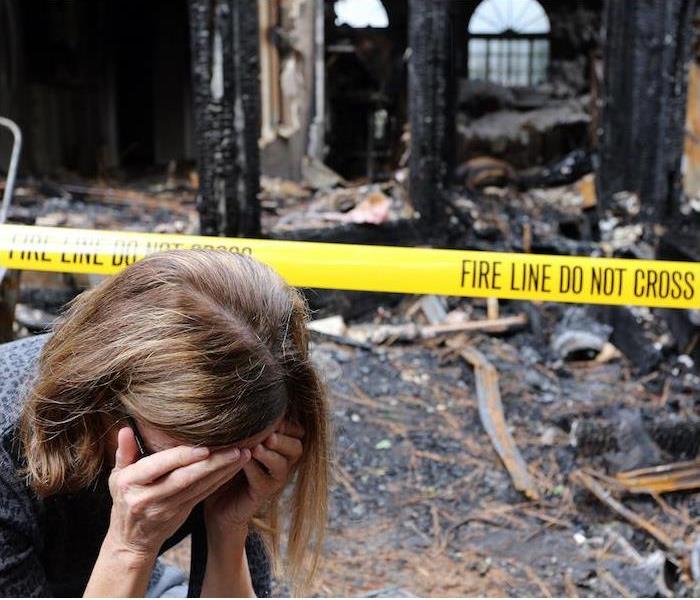 If your home is damaged in a house fire, you can count on us to help you. Get in touch at any hour for a quick response 808-395-9545
If your home is damaged in a house fire, you can count on us to help you. Get in touch at any hour for a quick response 808-395-9545
If you have experienced a fire in your home, it is normal to experience a variety of emotions regarding the trauma of the event and the process of recovery. Reestablishing normalcy after a fire is a long process, but by making sure you are following a few guidelines, you can make the process less stressful on your household.
Here are some of our most helpful tips for the aftermath of a fire.
Helpful Tips for the Aftermath of a Fire
Prepare yourself for what to expect. While the damage done to a home does depend on the size and severity of a fire, even small fires can cause far more damage than people may realize. Between charring, far-reaching smoke and soot, and the possibility of moisture damage as well, it can be alarming to see your home in such disarray. Preparing yourself mentally is an important aspect of lessening the shock and stress that comes with a house fire.
Wait to enter your home. While the damage you can see can be overwhelming, the damage you can’t see can pose severe risk of injury to anyone in the home. Be sure to check with firefighters before reentering the building—even if the fire is extinguished, there can still be lurking dangers that officials will need to address before letting people back in.
Contact your insurance company. Homeowners’ insurance policies vary wildly regarding coverage, as well as the process of filing a claim. It is important to get in touch with your insurance provider early on to get an overview of the process so you can follow the right steps regarding filing and maximizing your claim.
Document the damages. Though dealing with the details regarding damaged belongings is unpleasant, documenting everything thoroughly will be helpful to you and to your insurance company as you file a claim. Make an inventory list of everything that has been impacted by the fire and be sure to take plenty of photos as well.
Contact your restoration company. Experiencing a house fire is a traumatic event for the whole family, which is why recovery is so important. Having a restoration company that you can count on is an important aspect of this—the company you work with should help you simplify the process instead of making it more complicated.
If your home is damaged in a house fire, you can count on us to help you. Get in touch at any hour for a quick response.
Be Sure Your Staff Knows What to Do in Case of a Fire | SERVPRO® of East Honolulu
6/19/2020 (Permalink)
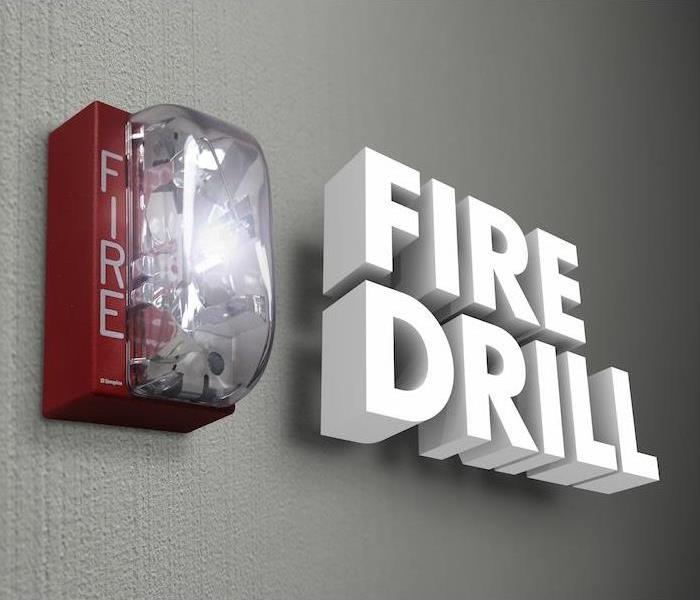 We specialize in commercial fire restoration and will be here for you at any hour—contact us today 808-395-9545.
We specialize in commercial fire restoration and will be here for you at any hour—contact us today 808-395-9545.
Making boosts to your business’ safety efforts is a great way to ensure you are not surprised by any emergencies and that you are keeping your staff as safe as possible. Fires at businesses happen quite frequently, so anything you can do to plan ahead and reduce your risk is wise.
Being able to get your staff evacuated quickly from a fire is the most important component to plan for so you can be certain you are doing your best to keep everyone safe. Having a plan in place for fire drills is a great way to ensure everyone knows exactly how to react if one starts.
Have a Plan in Place for Workplace Fire Drills
Consult with your local fire officials. Fire officials are an amazing resource when it comes to planning out your fire safety efforts, so definitely get in touch with them and gain their insight into your fire drill strategy. They can often come by and help you identify evacuation routes and other special considerations that might impact your fire drills.
Communicate and mark fire evacuation routes. After mapping out your fire drills, mark them clearly so that they are easy to identify even in a stressful situation. Inform your staff of your fire safety plans, and let them know when and what to expect from your upcoming exercise so they can be prepared.
Have fire drills frequently. The main goal of a fire drill is to help everyone understand exactly what to do and go through the motions so that they are prepared in case a real fire starts. Frequently go through the processes with your staff and host drills at least once each quarter so everyone has a chance to rehearse.
Run different fire scenarios. There are a number of places that a fire could start—the office kitchen is the most likely place, but electrical malfunctions or other incidents could lead to a fire in other areas of the building. Make sure you plan for different scenarios and alter your drills each time so that everyone can prepare for the most amount of situations possible.
If your business has experienced fire damage, you can count on us. We specialize in commercial fire restoration and will be here for you at any hour—contact us today.
You Want Us on Your Job: Here's Why
6/18/2020 (Permalink)
If your East Honolulu, Hawaii business has experienced natural disaster damage, then you may be looking for a local restoration service to help with cleanup and repairs. However, knowing what to look for in the best company to help your business can seem daunting at first.
Here are three reasons SERVPRO of East Honolulu should be your chosen restoration team:
- We work with your insurance
- SERVPRO of East Honolulu works closely with insurance adjusters. Our crews offer services such as damage documentation, electronic inventory databases, and regular progress updates. All of these services can help your insurance stay on top of the information they may need for your claim.
- We've seen it all, we can do it all
- A fire damage service should also be able to clean up the various types of damage that may result from a fire. Not only does this include repairs to any burned areas along with smoke and soot repairs, but water damage as well. Water damage can result from fire suppression efforts, so choosing a company that can make these types of repairs as well means you can work with a single team, and your business repairs may be completed faster. We are very versatile and there is no natural disaster we can't help fix.
- We can help with Remediation
- Here at SERVPRO of East Honolulu we ensure the property is up to fire code and address other mitigation concerns you may be worried about. Once repairs are completed we can walk you through any recommendations they have for further protective measures your company can take.
Consider working with us on your next job, when looking for a restoration service to help with natural damages at your place of business or home. Work with your insurance provider, clean up different types of damage, help with future mitigation needs. Our company that can do all three can help ensure you find all the services you need after any disaster in one, reliable place.
We are available 24/7, 365 days out of the year for your convenience and to prove our competency. Trust us, SERVPRO of East Honolulu
Call us:
(808) 395- 9545
Fire Can Cause Water Damage
6/18/2020 (Permalink)
SERVPRO of East Honolulu can help with water damage caused originally from a fire.
In some fires, damage from the actual flames ends up being the least of your concerns. Fires often trigger damage in a way homeowners do not expect: significant water damage. Whether during the efforts to put the fire out or leaks caused by the heat, fire can directly or indirectly cause your home to take on large amounts of water unexpectedly. If the fire started during a storm, rain or flood water might also deal some damage. Listed are some common ways we encounter water damage after a fire.
- Hoses and Extinguishers: Care is not often taken to controlling the water flow, with as much being used as necessary to stop the flames. This can lead to a heavy dousing of any surface in your home and some mild flooding as a result of fire hoses. Excess water is common after a fire, and perhaps more often than not you'll be dealing with this type of damage.
- Bursting/Leaking Water Pipes: Fire can melt and break metal faucets and plumbing due to its extreme temperature, causing profuse leaks and ruptures wherever it crosses a water fixture. Although these do not often release enormous amounts of water, they can cause considerable damage to floors and walls in their vicinity.
- Storm Damage: Fires can start as the result of a storm, from a lightning strike or otherwise. The fire may work in tandem with torrential rains, as these are often not enough to put out the blaze but enough to pour through any burned openings into your house
SERVPRO of East Honolulu is a locally owned and operated business that has experience with all sorts of water and fire damage, often at the same time. Should you require emergency restoration services following a disaster, call us 24/7: We're Faster To Any Size Disaster.
Storm Watches vs. Warnings
6/18/2020 (Permalink)
It’s a good time to review the difference between tornado and severe thunderstorm watches and warnings.
A WATCH means that the potential exists for severe thunderstorms to develop. A storm watch does not mean that one has been seen, it just means that conditions are favorable for one to develop.
Conditions are conducive for the development of severe weather. When watches are issued there is no immediate action for you to take, but do keep up to date on the current weather situation.
WARNINGS on the other hand need to be taken seriously and demand action. A severe thunderstorm warning indicated that severe weather is imminent in your area or already happening. Severe refers to wind gusts exceeding 58 mph and hail greater than 1” in diameter.
With this knowledge of watches and warnings, you will be better prepared the next time severe weather threatens your area.
Water Damage on Your Ceiling, Now What?
6/18/2020 (Permalink)
Water damage on your ceiling can happen to anyone and everyone, it may be from clogged pipes, faulty toilets, overrun showers or your neighbors upstairs. Whatever the cause, business owners end up facing the mess of sewer damage, an absolute physical, emotional, and financial drain. It's even harder when that break happens on the second story, allowing the polluted fluid to seep down below, ruining not just one floor but two. If this is the case, consider the following to get the building back to normal.
1. Have a Thorough Inspection
First, contact SERVPRO of East Honolulu. Our expert team have specialized equipment and knowledge. When they arrive on scene, our staff should begin to survey the damage, section off the impacted zones, and prepare a plan to sanitize your space or take care of the damage.
2. Take Care of Soaked Material
Unfortunately, most water damaged goods have to be cleaned heavy duty style. It's not something that is simply dried up due to the smell of most water damages. Our crew will begin removing the soaked flooring as well as the affected portions of the ceiling. If the liquid penetrated through, it may have harmed the downstairs. If that is the case, they could begin tearing out items from here as well.
3. Restore the Rooms
The flooded toilet and other fixtures may be replaced with newer items. The spaces are dried with dehumidifiers and then sprayed with antimicrobial spray. At this point, one of our contractors or your insurance's contractors begin construction, patching, painting, and replacing anything lost from the flooding. By the end, both floors should look like they did before.
Sometimes sewer damage is unavoidable. While you can't stop it, you can fix it. Seek the aid of experts who can lead and advise.
We do our part so everyone else can do theirs, and just like that it looks "Like it never even happened."
What is the Class of Your Water Damage?
6/18/2020 (Permalink)
Not only does SERVPRO of East Honolulu use categories to define the water quality, we also you a class for classification of water absorption and evaporation load.
Before understanding the class themselves there are a few definitions to knock out.
Definitions:
Porous Materials- carpet, gypsum board, fiber-fill insulation, concrete masonry unit, textiles
Low Evaporation Materials- Plaster, Wood, Concrete, Masonry
Low Evaporation Assemblies- Multi-layer wallboard, multi-layer sub-floors, gym floors, or
other complex built-up assemblies
The Water Classes:
Class 1: The least amount of water absorption and evaporation load
- water intrusion (where it's wet) area contains less than 5% of porous materials. And low evaporation materials/assemblies have absorbed minimal moisture.
- meaning, Only part if a room or area is wet or larger areas containing materials that have absorbed minimal moisture. Little or no wet carpet and/or pad is present.
Class 2: Significant amount of water absorption and evaporation load
- water intrusion area contains 5%-40% of porous material (this is encompassing the floor, wall, and ceiling surface). And low evaporation materials/assemblies have absorbed minimal moisture.
- meaning, An entire room or more is affected. Carpet and pad may be wet. Water has wicked up walls less than 24 inches. There is significant moisture remaining in structural materials.
Class 3: Greatest amount of water absorption and evaporation load
- Water intrusion area is made of more than 40% of porous materials. And low evaporation materials/assemblies have absorbed minimal moisture.
- meaning, Fully involved. Water may have come from overhead. Ceilings, walls, insulation, carpet, pad, and sub floor in virtually the entire area are saturated.
Class 4: Deeply held or bound water
- Water intrusion area is most of low evaporation materials/assemblies. This means that there will be a need for heavy duty drying equipment that will vary for each humidity level
- meaning, Specialty drying situations - Wet materials with very low permanence/porosity i.e hardwood, concrete, brick. Typically, there are deep pockets of saturation, which require very low specific humidity.
Keep Calm, School Almost Starts
6/17/2020 (Permalink)
COVID-19 has drastically changed what anybody thought this year would be like
Our keiki have been out of school a lot longer than anyone would have projected...
Everyone is under a lot of stress which has brought fine lines and tight backs!
Although our job here at SERVPRO of East Honolulu is curtailed to your home's or business building's health; we care about our community's mental health!
We know you've been stressing and your kids probably are also driving you crazy (in the best way possible though!)
So keep calm, social distance, and hope for the best!
Here is a DIY egg skin mask that you don't have to wear outside and is for anyone regardless of age and gender:
Directions:
- Take an egg white and mix it with 1 tbsp. of plain yogurt and 1/8 tsp. of honey
- Then, apply this mixture onto your facial skin and wait until it dries out.
- Rinse it off with warm water.
- Apply this face mask once per week within a few weeks.
Keep Calm and we'll get through this together :)
Esporta Machine: the dream
6/17/2020 (Permalink)
The Esporta Wash System is the disaster restoration industry’s only wet-wash machine designed exclusively to recover “soft contents” damaged in fire and water disasters and even mold. Soft contents include items such as footwear, linens, outerwear, bedding, outdoor items, athletic equipment, stuffed toys, and almost all of your personal clothing. Practically anything that would be found in your home, that industrial cleaning products cannot clean.
The patented system breaks down unwanted organic materials and kills bacteria, viruses, and mold spores on contact. The system also removes organic and inorganic contaminants without degrading or damaging the materials. It is five times more effective than traditional front-loading washing machines. This makes it easier for us at SERVPRO of East Honolulu to restore your property! This machine also makes it plausible for less materials and home goods to be thrown away.
If you have favorite items of clothing that have been affected by any natural disaster or mold/mildew infestation, ask our SERVPRO of East Honolulu qualified team and experts about your options for salvaging soft goods!
STOP, DROP, and ROLL, a 2020 for fire prevention
6/15/2020 (Permalink)
Growing up in Hawaii we all know Sparky, the fire department's mascot to teach our keiki how to handle and prevent fire. He always emphasized Stop, Drop, and Roll--this is to prevent any type of bodily harm when you are on fire. But how to we prevent fires from starting?
Avoiding careless open fires, this could be an unattended stove or candle. Regardless of size if a open flame is unattended it can cause havoc for everybody. Make sure to keep an eye on any flame in your business or household to prevent a fire.
Do not disable smoke alarms, smoke alarms are crucial for fire prevention. These alarms go off when they detect a heavy amount of smoke in the air then create extreme noise, this can wake one up to the danger of smoke or a nearby fire. This has saved so many lives, and it can save yours too if there is ever a fire.
Try not to smoke inside, besides the adverse health effects of smoking on you and those around you, smoking inside can lead to a fire inside your business area or household.
Practice safe habits, teach your family or employees what your specific fire plan is. Where is your exit? Do you have a fire extinguisher accessible to everyone? Does everyone know where the gas and power shut offs are? And so many more questions, when everyone is prepared it is a safe environment.
Using electrical safety, one of the easiest fire prevention methods is practicing electrical safety. This is not overloading your sockets and learning your electronics. Heavy electronics every year lead to fire because the lack of knowledge on these electronics. Familiarize yourself and know your electrical limits for the best type of fire prevention in the workplace.
Regular Maintenance, make sure that your household or business is always in tip top shape. It is better to be over-prepared than under-prepared. At SERVPRO of East Honolulu we have seen fire damage and its aftermath. We don't wish this upon anyone, using regular maintenance will keep your equipment up to date and your employees or family feeling safer.
National Preparedness Month!
6/11/2020 (Permalink)
Happy National Preparedness Month! Here at SERVPRO of East Honolulu we celebrate this month for it's awareness and the adherence to safety measures we encourage for all of our customers.
Last year's theme was: Prepared Not Scared
The government had hosted an individual theme each week in accordance to the theme and essentials for National Preparedness. Preparedness can be more than national disasters! There are always so many resources for the public, and each individual week assess how to reach certain people.
Like week 3 was about educating the youth about being prepared and aware.
Each year the EFFAK toolkit is also updated in order for the American public to be the safest as possible.
EFFAK stands for Emergency Financial First Aid Kit, and has tools and steps to be financially prepared for disaster and all information under the sun about money in relations to preparing and saving for a rainy day.
When you go to the ready.gov website which is where the National Preparedness Month is hosted, there are options to look at different disasters.
Spread awareness about National Preparedness Month by participating on social media and using the appropriate hastags
#BeReady
Flash Floods in Hawai'i: How to Prepare For Them
6/6/2020 (Permalink)
Residents of Hawai'i are all too familiar to the flash flood warnings on the television or radio. It starts with the loud beeping and the calming voice of a government official and ends with warnings for the road or the beach. Most even experience the heavy rainfall when they are driving, but although we are use to flash floods there still needs to be caution.
We at SERVPRO of East Honolulu have seen the damages of a heavy rainfall or flash flood. Hawai'i averages about 11 flash floods per year and they mostly happen between April and October. Here are some things to keep in mind, when we have flash flood warnings:
- Flash Flood Advisories mean that it is a precursor to Floods, meaning, flooding is possible but not imminent.
- make sure your gutters are clean! When gutters are clogged it backs up your system. Make sure you clear out debris so your excess water can flow smoothly and help prevent water damage. This should be done at least two times a year to ensure the clearest way for water to vacate properly.
- check on your roof! Many homeowners don't even know they will fall victim to a flash flood until it happens if they aren't checking their roof. Check on the life of your roof, if there is a worn shingle, a missing one, or peeled sealants this can tear up your whole roof. Serious water damage can occur from simple fixes if not carefully watched. You should check your roof once a year, make sure that everything is ready to go for your Ohana's safety.
- do you have a proper drainage system for your house? Even if the foundation of your house is of cinder block or concrete it can still fall victim to water damage if there is no drainage system. Down spout and gutters are only half the equation of your house drainage system, the other is the subsurface system. This entails your foundation area and leaking or a high amount of water buildup can be mitigated by landscaping and drainage systems curtailed to your home and terrain.
- low risk does not mean no risk, homeowners and business owners alike should be careful regardless of a low risk. Make sure you know what you are privy to whether it be soil erosion, high surf, dam failure, or excess water. We recommend that our customers and community find insurance that covers these types of damage for your convenience during an emergency.
As we are heading out of our flooding season, we just want to make our customers aware of the possibility for a safer tomorrow and prepare for the next one!
What is Air Scrubbing?
6/6/2020 (Permalink)
To us professionals here at SERVPRO of East Honolulu, air scrubbing is actually due to an air filtration device. This is a machine that cleans the air of particles that may be in your home. This could be something as simple as dust or clothing particles and as deadly as black mold.
Because air is such a vital source for all life sources, an air filtration device is crucial for most jobs. This is also important for cleaning and disinfecting for COVID-19, and soot particles in the air.
How does it work?
Our air filtration device simply takes in the air surrounding and traps the particles from various sources into the filter. From there it releases the air back, this is the same concept of a Brita filter or other water filtering devices.
We also call it a HEPA machine... why?
Well in order to make this process most effective with a track record of 97.99% we use a HEPA filter. A HEPA filter, when air drawn through the back of the machine it is run through the HEPA filter. That is the very reason why there is no returning particulates when the air is released from the machine. The filter is extremely efficient and catches almost anything.
These types of cleaning are great for hospitals and doctors who believe there are contaminants in the air. We also use air scrubbing after fire damages and mold remediation. But, it can also be used if one has respiratory issues.
Here at SERVPRO of East Honolulu with the state of the art machine, we can "clean" the air so to speak for easier cleaning.
You want an ERP: Emergency Ready Profile
6/5/2020 (Permalink)
Here at SERVPRO of East Honolulu, we want to prevent time and hassle for our customers. An ERP gives us this luxury, but what is an ERP?
An ERP is an Emergency Ready Profile, this is a tool we use to assess your property quicker.
This is a free tool that we offer to our community to be more prepared for any emergency. To make a profile, we use basic location information to better our service. This can be information like where we can park, where your maintenance room is, or the insurance on your building/home.
When you call us for a cleanup we will have your property on file and will know all the parameters as to how to assess your damage. We also can create appointments to come in and take pictures of your location. These pictures will show us what your property looks like, where we can enter, where the electrical routing is... etc.
There is no hassle when it comes to an ERP, we come in and consult you. We also walk you through the ERP process and/or can create it for you and send you the access code later on. So why wait until an emergency hits, call us today. We are available 24/7, make an appointment and be prepared for the future.
Lucky We Have SERVPRO East Honolulu
6/3/2020 (Permalink)
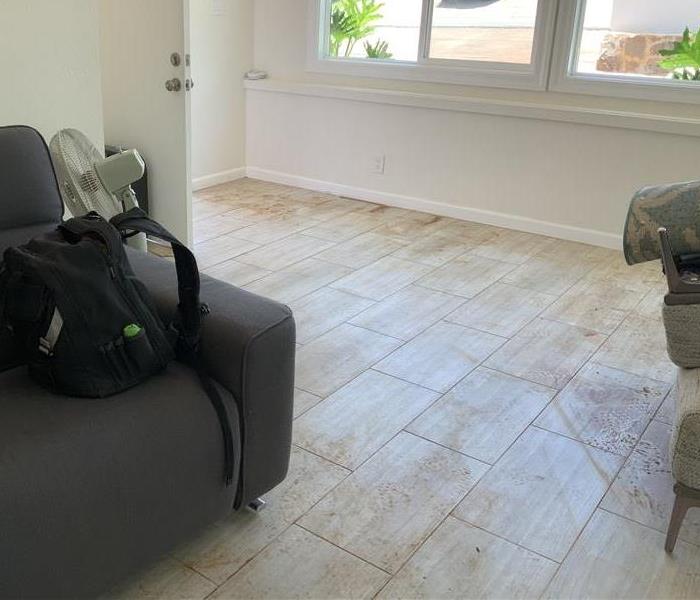 Images of the red dirt disaster
Images of the red dirt disaster
One of the most common sayings in Hawaii: "Lucky We Live in Hawaii", is true.
But, sometimes it does rain in paradise. Just like what happened in the beautiful area of Kaimuki.
Before the state of Hawaii offered $50 to anyone who would move to Kaimuki, it was a huge hill of red dirt. Just like today, it was hot and hilly; there is beauty in Kaimuki. Yet, sometimes the breath is taken out of you literally! Because when it rains it pours!
A resident of the beautiful Kaimuki experienced heavy flooding due to a storm. This caused red dirt to rush into her property affecting not only the floors but also the dry wall. The living room, washer room, and kitchen were heavily affected and extremely dirty from the natural red dirt of Kaimuki.
It took our team of SERVPRO East Honolulu a total of three days from initial profiling to drying and repairing the house back to new.
Using our tried and true 6-Step Process to clean up water damage, we were able to swiftly access the damage and re-create the standards before the storm.
Although, there is calm after the storm... there is also dirt! We of SERVPRO East Honolulu take care of it so you don't have to worry. Because, yes there will sometimes be mess in paradise but we'll be there to take care of it.
DIY Cleaner!
5/31/2020 (Permalink)
We are facing unprecedented times during this COVID-19 season, people in the community have lost their job, or have had a significant wage cut. We at SERVPRO East Honolulu are thinking of you, and have you in our hearts. Here is a simple recipe for a spray that can be used as a general disinfectant:
you're going to need:
- a spray bottle, cleaned
-1/2 cup of white vinegar
-1/2 cup of 70% Rubbing Alcohol
-1 cup of distilled water
- 5 drops of citrus/orange essential oil (optional)
To make this spray it is simple and effective, you mix all the ingredients besides the essential oil into the spray bottle. After this is thoroughly mixed, which can be done by vigorously shaking the bottle, add in the essential oil for smell.
You can use orange peels as well this also creates a lovely aroma if you don't have access to an orange essential oil.
And don't be afraid to experiment! Not everyone likes the smell of oranges, and that is OK; one can use also the same of amount of eucalyptus, lavender, mint, or any other essential oil lying around. The most important ingredient is the 70% rubbing alcohol, that concentration will kill most bacteria and keep you and your ohana safe.
This is an easy way to clean your household on a tighter budget, the orange also creates a lovely smell perfect for any nose!
Water Saving Tips for the Hot Summer Ahead
5/27/2020 (Permalink)
Last year we saw 45 record-breaking days in regard to temperature here in Honolulu. There has been a gradual increase in temperature for the last few year in the Hawai'i chain, and it is projected to be another hot summer in the coming weeks.
There is also an increase usage of water, since 2013 an average person in Hawai'i uses 164 gallons per day. In projection of the future, the county of Hawai'i wants us to kokua and try to lower our water usage down to 130 gallons per day. That is a total of 34 gallons that are needed to be cut from our daily lives. Here are some ways to cut down our water usage but also keeping in mind the upcoming warm weather:
- maintain your garden, be mindful of your weeds. Weeds are really pesky and it takes years for weeds to be eradicated from one's garden. Although it takes a long time it is in your utmost interest to take care of weeds. Start spot treating your garden by plucking weeds when they arise. Weeds grow at an exponential rate compared to other plants, although they have some good properties; they are unpleasant and hurt the aesthetics of your garden. They also use a lot of water taking from your plants, when you get rid of weeds you need less water to keep your yard space healthy.
- on topic of gardening or anything greenery, make sure you water your plants during the morning or evening. When you water your plants with the sun beaming on them the water will be more likely to evaporate. This is a waste of water and is not the most effective
-make sure that you water your plants when they need it, like us they are mostly water. With a whopping 90% of their body mass being water, water is crucial for their livelihood. They need water to photosynthesize, to stay hydrated, and to perform regular functions. It isn't necessary to keep a schedule for plants rather, when they look parched or it is due time. Learn more about your plants and the average weekly water intake.
- take short showers! One of the most re-iterated and easiest ways to reduce your water intake is by showering less. The average american uses about 17.1 gallons of water per shower that lasts about 8 mins. This is one of the main reasons why the Hawaiian average is so high. Taking this long of a shower actually can have adverse side effects. Some being the drying out of skin, skin aggravation from towel drying or over exfoliating (it is a thing!) and getting rid of the healthy bacteria before the overgrowth of bad bacteria.
- make sure that your house is in tiptop shape! a singular drip can make one lose about 5 gallons a day. When there are leaks in your house the drips will continual expound upon each other. If there are leaks, try to stop them as soon as possible. Or call professionals like us here at SERVPRO of East Honolulu. If you want to be extra cautious, flush some food coloring down your toilet tank, if it seeps into the bowl you have a leak.
- be a conscious member of your community. Be proactive and learn how to conserve your water sources as a community. Find your own average use of water, USGS has a free estimator to see how much water you use.
- find ingenious ways to replace water for conventional cleaning. This can be anything you do that uses water, try to cut down that water usage or replace it all together! This can be using a broom to clean your patio or garage instead of a hose or leaving out your food to defrost instead of using water.
- only run your dishwasher and washing machines only when it is full. This isn't only a water saver and most efficient it will save you a lot of money in the long run.
Here in Hawai'i the county expect at least 100 million more gallons to be used a day in the oncoming years. This can only happen if we are more cautious about our water usage. Look at your local websites, and city data for more information.
Let's Kokua Together
5/25/2020 (Permalink)
We at SERVPRO of East Honolulu know the adverse effects of this pandemic, no one knew that COVID-19 would effects us to the degree we see today. But, there is hope and with following the CDC Guidelines will make a brighter future for Hawai'i.
Many of us are asking how do we help prevent COVID-19 from our business and homes? Well SERVPRO of East Honolulu has the chemicals and equipment needed to clean and disinfect surfaces and to keep ahead of the curve.
We offer many services of heavy duty disinfecting, one of them is air-scrubbing. Although it sounds weird at first, cleaning the air is a very important component to a clean home. And the products we use are friendly enough for people to be back in the house in a matter of hours and strong enough to combat most viruses.
Our products are to the standards of hospitals, and EPA-grade so they are safe for even pets and the environment.
With a mind at ease you can trust SERVPRO of East Honolulu in these unprecedented times. From our ohana to yours we wish for the best.
Let us help you by helping the community, by practicing social distancing procedures and being conscious of others.
As always we will be here for anybody suffering from messes, 24/7 available for you.
Using the Best for the Best
5/20/2020 (Permalink)
We of SERVPRO of East Honolulu are known to use the best procedures, standards, cleaning equipment and more for your convenience. A standard that we uphold for water damage is the IICRC S500 Water Damage Guide. The IICRC is the Institute of Inspection Cleaning and Restoration Certification, a certification program "to provide the highest quality concepts, terminology, and procedures recognized in the cleaning and restoration industry."
This is a guide that was made to be a extensive standardizing tool that aides in creating the best solution for your situation! This includes principles, procedural standards, and an emphasis on consultations and sources to create the best plan of action for you.
We use IICRC S500 for its high quality standards that we wish to always uphold; we are especially proud to use IICRC's value-area method. Which essentially gauges the air mover size needed for a job to "achieve appropriate airflow on water damage restoration projects".
We partner with IICRC to ensure that we have the highest standards, and to show that we are the most capable to handle any situation that appears. SERVPRO East Honolulu knows what it is like to appear in sticky situations, and we are here to get you out of them, the safe and proper way.
Servicing in East Honolulu
5/20/2020 (Permalink)
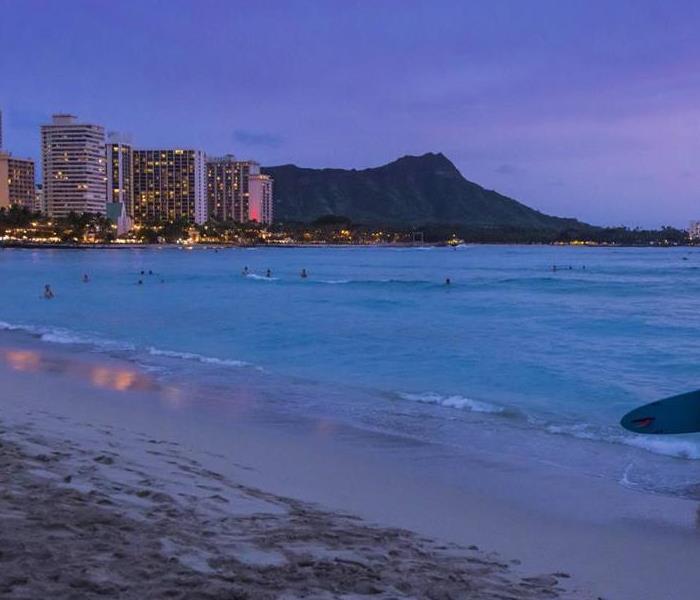 The beautiful Waikiki strip beach
The beautiful Waikiki strip beach
We all know that there will be "trouble in paradise" occasionally, and when there is, SERVPRO of East Honolulu is here to help.
We are so thankful to be servicing the beautiful island of O'ahu and more specifically the Honolulu/Waikiki areas. We are a little biased, but we think this area is the best on the island of O'ahu. Here are some of our favorite things about East Honolulu:
1. We can't start a list about East Honolulu without acknowledging Ala Moana, the biggest mall in the Hawaiian Isle. This houses more than 250 stores and is so versatile for the whole ohana.
2. Our ohana at SERVPRO of East Honolulu love ramen, and the best ramen in the Waikiki area is Tenkaippin Hawaii. Regardless of what you choose on the menu, it is tasty and affordable!
3. The beaches! East Honolulu is known to have the most beautiful beaches on the island with gorgeous views. It is an all time favorite to hit the beach after work!
Thank you East Honolulu for allowing us to help clean up and restore your property to the best shape possible! Mahalo for the beautiful views and the awesome food.
Chemical of the Month: SERVPROXIDE
5/20/2020 (Permalink)
Here at SERVPRO East Honolulu we use all types of chemicals to clean and re-store anything. To show our extensive knowledge on the chemicals that WE use, and how they are the BEST we are doing a chemical of the month.
For the month of June, the chemical we are highlighting is SERVPROXIDE.
SERVPROXIDE kills harmful bacteria on hard and soft surfaces, it controls, prevents, and inhibits mold and mildew from re-growth.
This is 100% bio degradable, and is efficient as it does not need a wipe down after being sprayed.
There is a cool component of SERVPROXIDE, the longer the chemical is on a surface, the more potent it becomes. After 5 minutes of contact time, SERVPROXIDE kills hepatitis A.
SERVPROXIDE is extremely versatile and with proper instructions it can be used: to sanitize, deodorize, disinfect, pre-cleaner or post-cleaner, and can be used on both porous and non-porous surfaces.
Also, SERVPROXIDE carries the EPA's lowest toxicity rating meaning that this can be used for everyday use and industrial. This is great for any need, we use SERVPROXIDE for mold remediation, water damage, and cleaning services we offer.
So... Why Green?
5/20/2020 (Permalink)
SERVPRO of East Honolulu is known for a few things, like their superior cleaning skills and their quick restoration processes. There is ease with everything they do, but they also are known for the bright green logos. When you see a big van or car driving around with a bright green exterior one usually knows that this is a SERVPRO car.
SERVPRO originally chose this color in the 1970s because of how it popped when surveyed people were asked what color was most memorable. The color green is now almost brand recognition for SERVPRO.
Interestingly enough, there is now a shade called SERVPRO green! But, this green is more than just a marketing tactic or brand recognition.
For us at SERVPRO East Honolulu, this green is a sense of pride. When we wear our SERVPRO uniforms we give our customers assurance of excellence.
As long as we are wearing this green we will continue to give you the SERVPRO quality of restoration, and amazing customer service. We are prideful when we ride in the bright green vans as we are assuring you that we do everything with efficiency and legitimacy. And to us, that is why the SERVPRO green is important.
Using the Technology of the Future
5/20/2020 (Permalink)
We are using the best technology to really assess your problem. By using thermal imaging we can see what is really going on beneath the surface.
Thermal imaging can show us a few things:
-can see the overview of the problem
-see the heat loss easily
-quick access to moisture intrusion
these types of problems can sometimes be overlooked, when using the thermal imaging we are able to really refine these problems and locate the affected areas.
Our thermal imaging also aims to instantly identify the issue, this saves time and money for you.
Sometimes to the naked eye a wall doesn't seem to have water damage, with thermal imaging one can see if there are areas of excess moisture. This excess moisture can be seen clearly through thermal imaging as an absence of heat. This is a problem because water damage can lead to the growth of mold/mildew spores or bacteria. This makes it easier to remove the affected areas for a safer space.
Especially in Hawaii, since our humidity is so high there is an even higher possibility of more damage in the future; if these areas are not taken care of or removed.
We use thermal imaging to also prevent problems, thermal imaging makes it easier to see if there are electrical issues. When you look at a circuit unit through thermal imaging you can see if there is excess heat, if there is a buildup of heat that is a possible heat hazard. We have seen many cases of this happening, so rather than waiting for a fire we fix this immediately.
Here at SERVPRO of East Honolulu we are always striving for excellence and a through job well done. We can do this even better through the use of thermal imaging.
There is a reason why we say SERVPRO clean
5/16/2020 (Permalink)
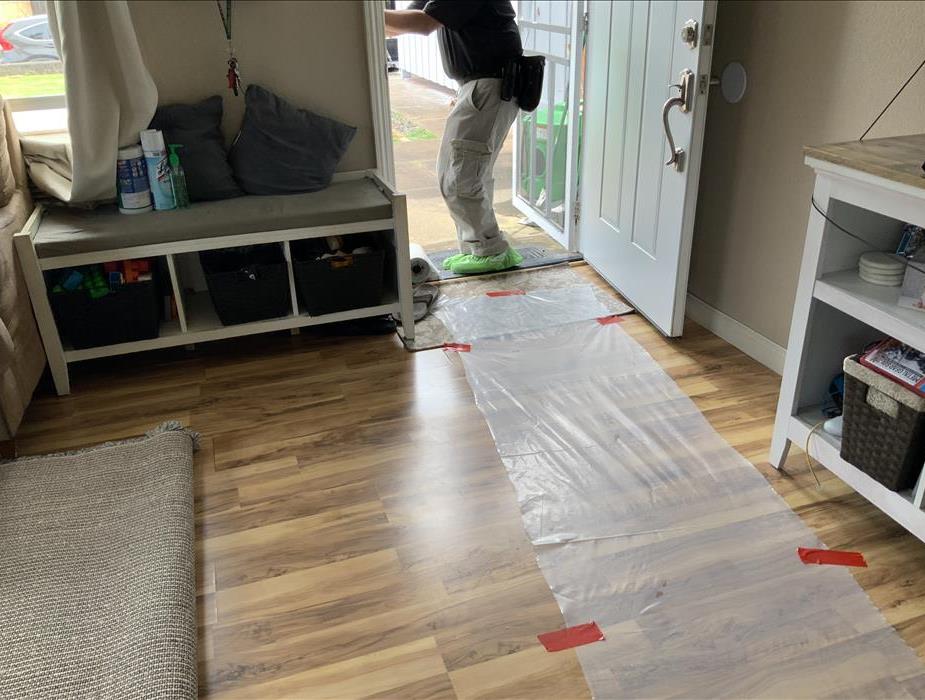 Our employee ensuring the highest standards through innovative measures.
Our employee ensuring the highest standards through innovative measures.
SERVPRO has been known to be clean and efficient in their jobs by using our unique 3 C’s:
Consult: As SERVPRO of East Honolulu, we know that each cleanup is unique, just like you. When we consult, we are consulting you, no one knows your issue like you do. We keep that in mind as we curtail solutions to you.
Clean: SERVPRO of East Honolulu knows what clean is, we house more than 20 certified equipment to handle various situations we come across. Not only this, we have multiple chemicals in house to help clean up any mess whether it be of biochemical origins or of natural causes. We will be here for you.
Not only do we clean, we also make sure we don’t create bigger messes. SERVPRO of East Honolulu does this by making sure that nothing else will be damaged in your household because of us. We take extra precaution dealing inside of your home, office, or your place of business, we will take care of you and your home.
Certify: Our community knows our name for a reason. We, SERVPRO of East Honolulu boast a 4.2 rate on Yelp. Because of our quality guarantee, our customers know of our success, do you?
We keep these C’s in mind every time we go in for a job, this ensures the SERVPRO clean. We are the #1 choice in cleanup because of our standards, choose us because no one knows how to clean a mess better than we do!
Are you ready for the 2020 Hurricane Season? Our guide to prevent hurricane damage
5/16/2020 (Permalink)
The Pacific Hurricane Season started yesterday and runs through until November 30. We of SERVPRO of East Honolulu know the repercussions of hurricane-related issues and recommend a few things for this coming season:
- Preparedness
- Make sure you know your insurance policy, this will be with your homeowners insurance. Know how you are covered from windstorm damage.
- Spam! The first thing that runs out during a hurricane warning is Spam and toilet paper. Make sure, before there is even a storm warning, you have enough food, house supplies, and hygienic materials for your household for at least 48 hours.
- Strengthening your home
- Learn what types of water damage you can have, also know where your least secure areas of the house are.
- This is your garage doors, windows, doors, and roof.
These 2 simple tips can keep you prepared, and are simple enough to uphold throughout the season! On behalf of the SERVPRO of East Honolulu we hope you stay safe!
SERVPRO for the community
5/16/2020 (Permalink)
During these unprecedented times, we of SERVPRO East Honolulu are here for our community. We are STILL working to protect you. We are doing this by upholding the 2020 COVID-19 CDC Guidelines of social distancing and virus prevention.
Recently, a doctor's office in our community was affected by water damage. Using our 6 step process to repair forms of water damage, we helped ensure that his doors would be opened as soon as possible. From Emergency Contact to Restoration we helped open his doors in a matter of 10 days.
On top of opening his doors for our community during this tough time, we also gave him a free air cleanse.
Our air cleanses are certified to treat even the toughest of viruses-including COVID-19. This will ensure the quality and protection for the doctors and patients alike. We care for our community's health as well as their safety and protection.
When you choose SERVPRO East Honolulu you are choosing safety and protection. We ensure quality just as much as we ensure safety. We are #1 for restoration and cleaning because of our standards, and our employees who carry out our excellence. We focus on your safety so you don't have to.
As always we will be here for the community we serve, and only hope the best for all affected by COVID-19. Keep being informed and help us flatten the curve.
Stay Safe and Aloha,
SERVPRO of East Honolulu
Cleaning the messes you can't
5/16/2020 (Permalink)
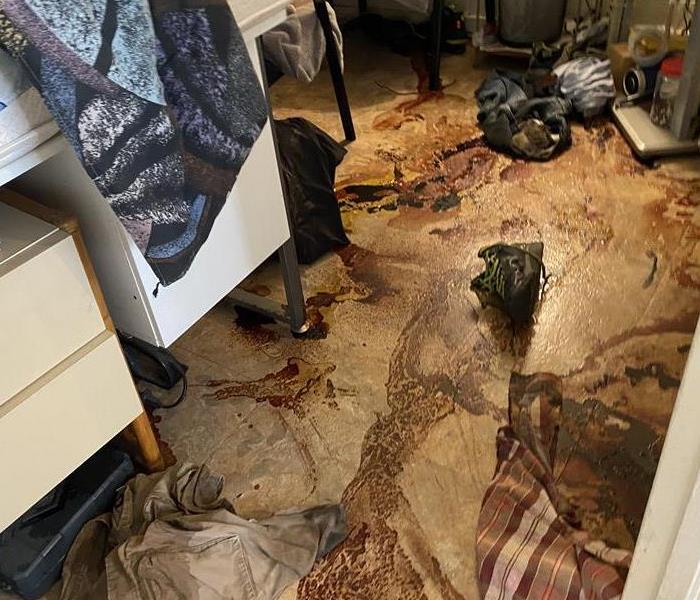 Exposed bio-hazard material
Exposed bio-hazard material
Biohazard has so many complications to the average human. There can be blood-borne pathogens that can effect anyone, there is also the fact that bleach leaves residue even after it looks like it's gone.
SERVPRO of East Honolulu has the chemical products needed to accurately and effectively clean up any bio hazard. We use specific procedures to protect our customers and our employees alike when dealing with bio hazards.
We also take the utmost care when handling bio hazard situations, as complications can arise. We do this being discreet and efficient in cleaning any problem that may come.
Unfortunately, a person passed away and we needed to clean the house for the family. We did this with respect and diligence that is needed for these cases. We always treat these situations wit aloha, and it shows with our final products.
Mold in Hawaii
5/16/2020 (Permalink)
Mold is a rampant problem in the state of Hawaii, and we at SERVPRO of East Honolulu know what can happen if not handled properly.
Mold generally does not grow when the humidity is over 60%. This is near impossible to do in Hawaii without expensive tools.
This can be an extreme issue, as even one Mililani resident had to re-locate due to extreme black mold growth.
Here are some simple tips to stop the mold growth before we step in:
1. Assess why your mold is growing. There is one thing that we cannot control, and it is the temperature and the humidity. These are the biggest factors in growing mold, but we can control how it affects our homes. If it is on the surface one can simply paint over it or use a half ammonia and half water solution. Leave it on for 5-10 mins and then clean, if that does not work. Repeat with just a vinegar solution. If neither of these solutions work it is time to call us, meaning the mold is deeper inside your house than it appears.
2. Prevent the mold before it even comes, whenever you have water damage or water inside your home; dry everything and anything as quickly as possible! We can't help our climate but we can control the water amount inside our house. Make sure you clean up excess water to stop any type of growth from bacteria and mold spores.
Mold is messy but we can ensure our safety using these simple cleaning/prevention methods!
Heavy Rainfall Can Also Cause Water Damage
5/9/2020 (Permalink)
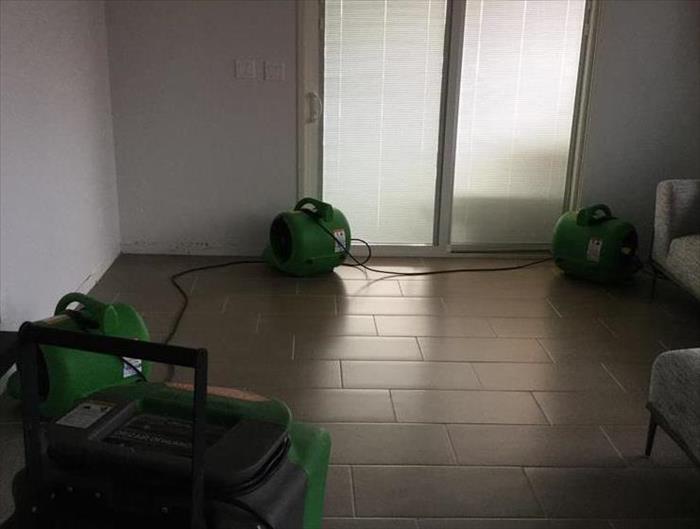 If you’ve experienced water damage to your home, we are here to help. You can call us 24/7 to have our trained technicians respond quickly
If you’ve experienced water damage to your home, we are here to help. You can call us 24/7 to have our trained technicians respond quickly
What comes to mind when people think of water damage is typically dramatic occurrences of floods or plumbing problems, but everyday events such as heavy, consistent rainfall can also cause issues.
Heavy rains can quickly exploit any vulnerabilities in a home’s weatherproofing and lead to water damage. Here is where we often see damage when we respond to water calls:
Problems That Can Be Caused by Heavy RainfallBackup of clogged gutters. Debris can build up in gutters quickly, which is why they are recommended to be cleaned at least twice a year. If they are not, the water can quickly begin to build up in the gutters during heavy rainfall and can seep into the roofline and cause damages.
Leaks around windows and doors. Microscopic cracks around doors and windows can easily let heavy rains in to start causing damage. Adding weatherstripping measures is an easy, effective way to prevent this from occurring around your home’s external openings.
Poor drainage around the foundation. If heavy rain leads to water building up around your foundation, it is wise to install landscaping or other drainage systems that can help to move this water away. Standing water can seep into the home’s foundation and cause serious damages otherwise.
Leaks in and around the roof. Roof leaks can be sneaky, so it is best to look for signs of them and treat them before they cause issues. Missing shingles or other vulnerabilities can give heavy rains the in they need to cause damages, so doing repairs early is recommended.
Malfunctioning of a sump pump system. A sump pump system is a fantastic tool for preventing water damage to basements and crawl spaces, but they can develop issues that allow damages. Regular sump pump maintenance is the best preventive treatment for this, so it is what we advise.
Leaks around chimneys and skylights. As homes age, their seals can begin to fail, and the seals around chimneys and skylights are no exception. Have your roof regularly checked for vulnerabilities with these seals to prevent heavy rains from seeping in around these features.
If you’ve experienced water damage to your home, we are here to help. You can call us 24⁄7 to have our trained technicians respond quickly and begin your restoration.
Our 6-Step Water Damage Restoration Routine
4/25/2020 (Permalink)
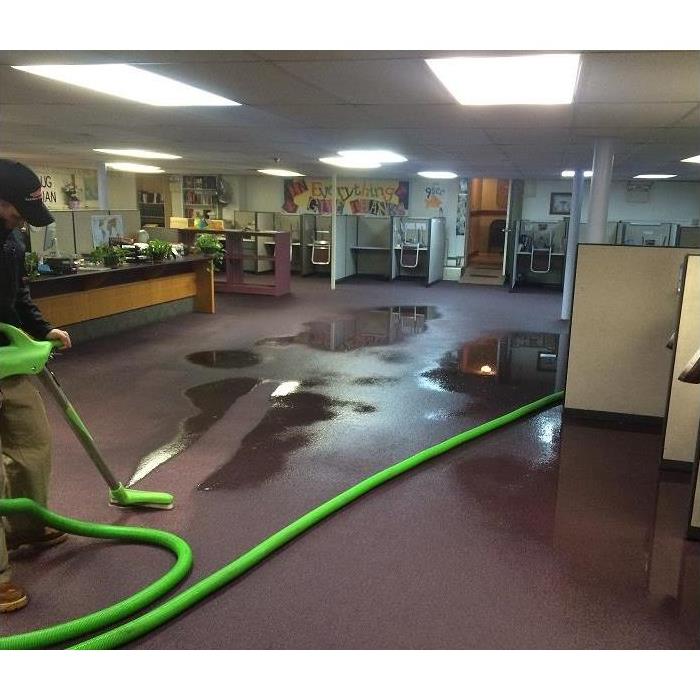 Finding out that water damage has impacted your home may be overwhelming, but quickly taking action is recommended when you do.
Finding out that water damage has impacted your home may be overwhelming, but quickly taking action is recommended when you do.
Finding out that water damage has impacted your home may be overwhelming, but quickly taking action is recommended when you do. For this reason, we are here 24⁄7 to answer your call for help and set our six-step water damage restoration routine in motion.
Here’s how it works:
6 Steps to Water Damage Restoration
1. Initial Emergency Contact
With our emergency contact line, you can reach us no matter when you discover water damage to your home or office. We will gather information regarding the severity of the damage so we can determine how to facilitate our response and get to you as quickly as we are able to.
2. Inspection and Damage Assessment
After we get to your location, our trained technicians will check for any safety issues that are present and stop the flow of water, if applicable. They will then do a complete inspection in order to make a restoration plan to review with you before the work begins.
3. Moisture Extraction
Quickly moving to the moisture extraction is an integral part of preventing further damage, so we will begin pumping out gallons of water as fast as we are able to. We can also help you remove your belongings from the area if you will be staying elsewhere during the restoration process.
4. Dehumidifying and Drying
Following the extraction of the standing water, we will bring in dehumidifiers and industrial-grade drying equipment to remove moisture from the pores of impacted surfaces. Not only will this prevent them from deteriorating, but it will also guard against future problems with mold growth, which can occur after improper restoration.
5. Cleaning and Repair
For any object that has been exposed to water damage, cleaning is vital. Cleaning will ensure that these items do not become contaminated after water damage is allowed to fester on their surfaces, and will keep them from developing odors as well.
6. Restoration
We proudly offer a full and complete restoration service, which means we can even handle construction issues that may arise due to water damage. We can repair and replace structural elements of your home and lay new carpet or make other cosmetic updates to truly restore your building to its pre-damage condition.
If your home has been water-damaged, you can count on us to help. Call us 24⁄7 to get the process started.
Prioritizing Your Safety Following a Flood
4/11/2020 (Permalink)
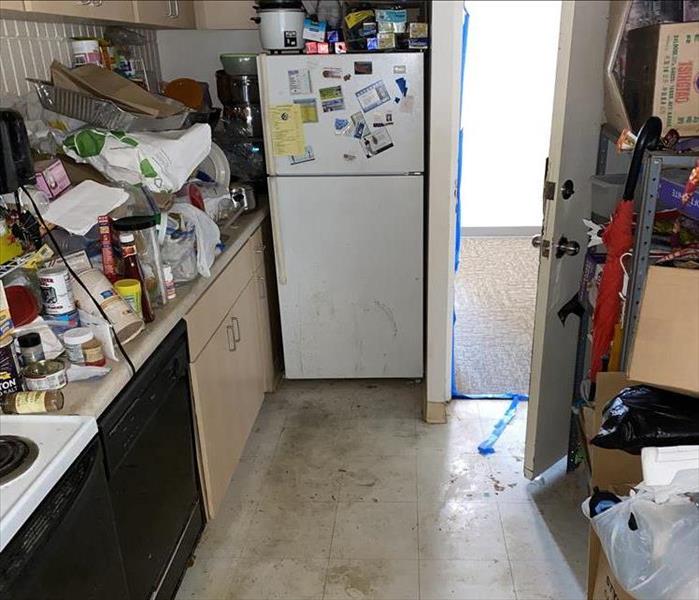 If your home has been damaged in a flood, we are here for you 24/7. Call us to receive a quick response and set the restoration process in motion
If your home has been damaged in a flood, we are here for you 24/7. Call us to receive a quick response and set the restoration process in motion
Having your household damaged during a flood can be a frightening experience, and for many homeowners, one that makes them want to take action immediately.
While dealing with flood damage quickly is generally advised, it is only best practice if it is safe to do so. There are many dangers afoot after a flood comes through an area, and it is important to prioritize your own safety as you work to recover.
Ways That You Can Prioritize Your Safety Following a FloodAvoid further safety hazards. It is understandable that homeowners will be ready to return home as quickly as possible to start handling the damage, but it is vital to wait for emergency officials to declare it safe to do so.. Floodwaters can allow many dangers to lurk out of sight, including contaminants and electrical hazards that officials will need to address before residents can return.
Air out the home. If all the severe weather has dissipated from the area, opening your doors and windows can help your home air out following a flood. While mold will begin to grow rapidly after water damage is introduced to the home, introducing air flow can stunt its growth and prevent further issues from arising. If the floodwaters have been trapped in the home for several days without airflow, it may be wise to open windows and return later to begin the cleanup to avoid breathing in any dangerous fumes.
Document the damages. It is a common reaction to walk in and begin cleaning up your household right away, but it is always advised to take thorough photographs before you do so. Flood coverage is generally an extra policy that homeowners must purchase, but even if you do not have coverage, there may be a possibility that you can file for some of the damages in the aftermath with evidence.
Contact your restoration and insurance companies right away. Getting in touch with relevant parties after a flood can expedite the recovery process dramatically. Contacting your insurance will help you determine if you are eligible to file a claim for any of the damages, and getting in touch with your restoration company will allow your recovery process to begin in earnest. The longer water damage is untreated, the worse it can become, so acting quickly is imperative.
An Assessment of Your Business’ Disaster Preparedness
4/9/2020 (Permalink)
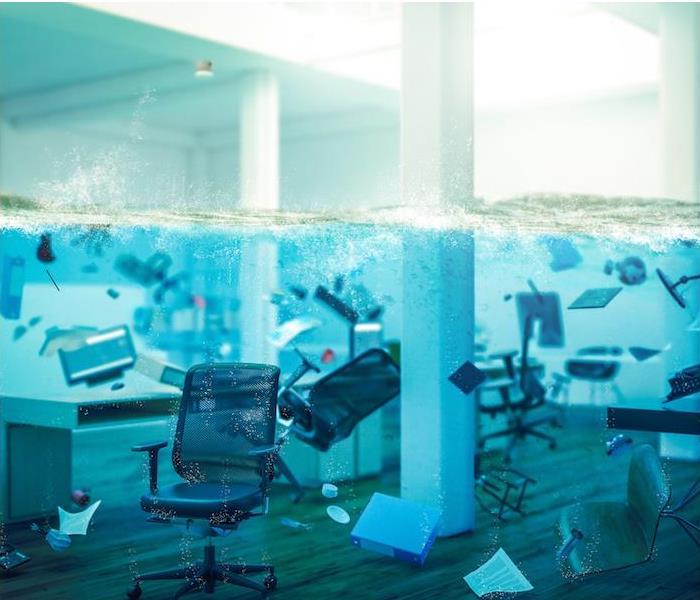 If your business has been impacted by a disaster, you can contact us 24/7 for guidance on how to begin the commercial restoration process.
If your business has been impacted by a disaster, you can contact us 24/7 for guidance on how to begin the commercial restoration process.
There is a lot of risk management that business owners must be responsible for, especially when considering the risk that natural disasters and emergencies pose. While it can be an intimidating thing to consider, assessing how prepared you are will allow you to determine where there are gaps in your knowledge that you can fill in, ensuring you are both protecting your investment and keeping yourself safe from disaster-related harm.
Understanding how the pieces of preparedness work together to help you recover faster provides a great foundation for preparedness. Understanding your insurance coverage, your emergency planning and your restoration considerations from the get-go will help you have valuable peace of mind.
Your Commercial Insurance CoverageNo two commercial insurance policies are created equal, but many of them are surprisingly lacking in coverage when it comes to disaster scenarios. Many business owners choose to add flood insurance to their policy, but it may be wise to consider other extras such as umbrella coverage and interruption insurance to be sure you are totally covered from whatever damage-related expenses you are faced with.
Your Emergency Plan and Supply KitHaving a plan in place in case of an emergency is vital for the safety of you and your staff. Whether the issue is sudden, severe weather or something else such as a burst pipe, it is likely that you will only have a short span of time to react. Planning ahead for a variety of scenarios, such as if evacuation orders are given or if you must stay put and subsist off an office emergency kit will make sure you are prepared for a variety of scenarios.
Your Plan for Restoration and RecoveryHaving to pause operations due to disaster-related damages can be devastating for a business, which is why reopening quickly is the main focus for most business owners. You can speed up this process by picking a commercial restoration company in advance and knowing how to apply for recovery loans from the Small Business Administration. This will allow you to make the call as soon as restoration can be started and receive low-interest funding right away.
How Weatherproofing a Home Can Reduce Storm Damage | SERVPRO® of East Honolulu
4/4/2020 (Permalink)
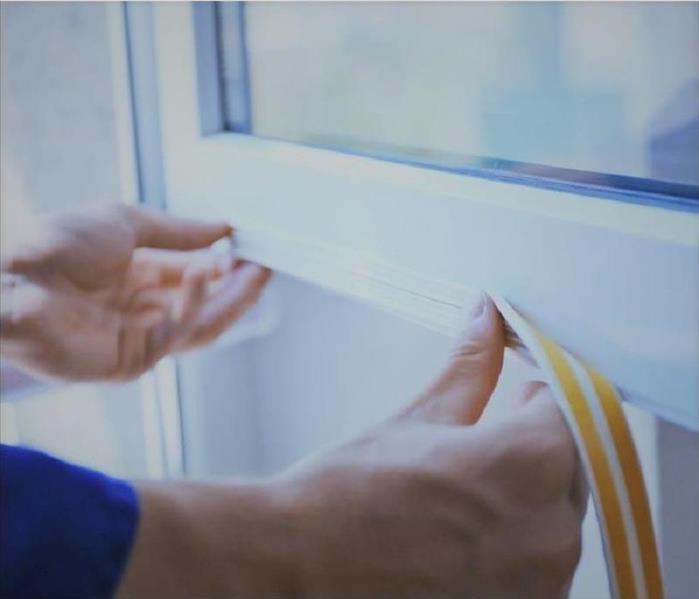 Weather proofing your home
Weather proofing your home
Houses are designed to be fortresses against weather, but in cases of severe storms, their protections often falter. Nearly half of all home insurance claims involve damage related to weather, so it is common for homeowners to wonder what they can do to prevent damage from happening to them.
While any storm carries the potential for damage regardless of how prepared a person is, by taking measures to weatherproof your home, you will be much less likely to sustain any damages during severe weather.
How to Weatherproof Your Home From Storm DamageKeep Your Shingles in Shape
Leaky roofs can happen due to a variety of things, but severe weather almost certainly will worsen one. By doing regular check-ins with your roof, you can inspect it for any signs of leaks and stop the problem before it becomes severe. Look for missing or peeling shingles and other signs of wear that might point to a weak point where water can enter.
Beat the Weather With Weatherstripping
Weatherstripping is such an effective measure that even Energy.gov suggests it for homeowners due to how much it can save on electricity costs and cut down on leaks inside the home. Buying inexpensive weatherstripping and installing it around your home’s openings is a simple weekend project that can do wonders toward sealing your home from the outside elements.
Gut Debris From Your Gutters
A clogged gutter is more than just a nuisance—it can cause serious damage to your home, especially when heavy rains come along. It is recommended to clean gutters at least every six months to prevent debris buildup. In between, watch for signs the gutter is clogged, such as water spilling over the sides during rain, downspouts that do not deposit water and any pools of water around the house.
Pick the Right Paint
Choosing your home’s paint is about more than just color with all the new product developments now on the market. Paints feature extra protections such as waterproofing and UV resistance now to help your home withstand severe weather for longer before needing to be repainted. If your paint is peeling or bubbling, a fresh coat with a more resistant paint might be wise.
If you have issues with storm damage to your home, we are always here to help. Contact us 24 hours a day for a rapid response.
The Importance of Fire Preparedness as a Business Owner | SERVPRO® of East Honolulu
2/17/2020 (Permalink)
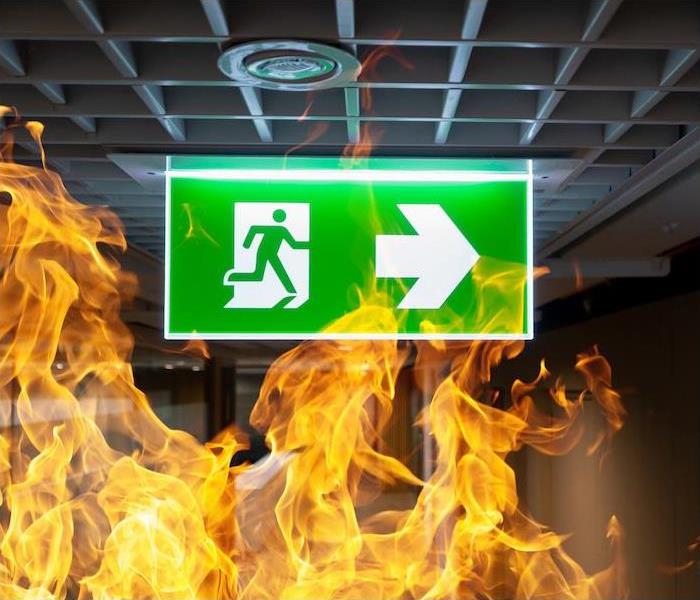 If your business has experienced a fire, we’re here 24/7 to respond and begin restoration. Call us 808-395-9545 today to learn how we can help you
If your business has experienced a fire, we’re here 24/7 to respond and begin restoration. Call us 808-395-9545 today to learn how we can help you
For those who own their own businesses, you are likely well aware of the industry risks you face. However, there are other risks, too—namely, emergencies such as fires—that should be prepared for in order to keep your investment and staff safe. Planning ahead can not only decrease your liability, but it can also dramatically reduce the recovery time required to reopen your business’ doors.
Because business owners are busy, we have put together some of the top tips for increasing fire preparedness in the workplace in one convenient spot for your reference. By doing a little bit of planning on the front end, you can experience less stress should you find yourself dealing with a fire in the future.
A Reference Guide for Business Fire Preparedness TipsFollow code guidelines and inspection schedules. Making sure your business adheres to codes put in place by the National Fire Protection Association is the first step to fire preparedness. Your local fire department can help you make sure everything is up to standard and set up a schedule for inspecting equipment and alarms to ensure operation.
Identify your specific risks. There are many things that could lead to a sudden fire, but you should also identify risks that are specific to your line of work. Restaurant cooking equipment, heavy machinery and even a high number of electronics can all impact your fire risk, so doing a custom assessment to determine where your business may be vulnerable is wise.
Create (and practice) a fire evacuation plan. Having prepared employees greatly reduces the chance that panic will ensue if a fire begins. Make sure to designate multiple exits out of the building and rehearse escape routes with staff regularly to help everyone stay calm in a real-life scenario.
Have regular fire safety seminars with staff. You should draft a fire safety tip list for your business, make sure all of your employees have access to it and schedule group training on it frequently. Go over cooking safety, fire extinguisher use and any other relevant tips so everyone is aware of their role in the fire safety process.
Recover With Our Help | SERVPRO® of East Honolulu
2/8/2020 (Permalink)
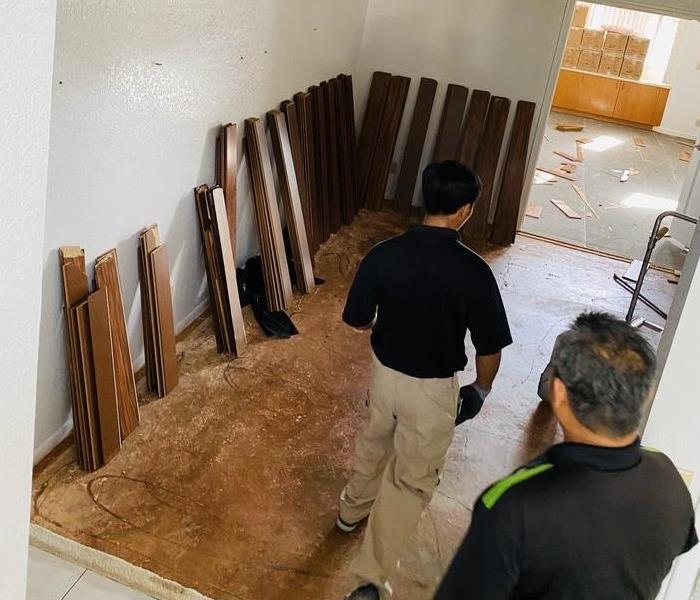 If you have experienced storm damage or want to learn more, you can call us 24/7 for more details.
If you have experienced storm damage or want to learn more, you can call us 24/7 for more details.
The frequency with which storms occur can sometimes cause individuals to forget about how much danger they pose to life and property. Storms were responsible for around $2 billion in damages in 2018, and are something homeowners should prepare for and take seriously.
Putting a plan in place for storm damage restoration in advance is wise—there are many post-storm restoration scams, and it is important to choose a company you can trust. With our upstanding reputation and highly trained professionals, when storms strike, we can help you.
How We Can Help After Storm Damage StrikesBy Handling All Types of Damage
Because of high winds that blow objects, fallen branches and high volumes of rain, storm damage can be a severe and multifaceted problem. That is why we make sure we are fully certified and prepared for all types of damage, including structure and water-related issues, so we can provide you with a full restoration after a storm.
By Sending Our Highly Trained Technicians
Because of the complications of storm damage, it is important that you work with a company that is fully aware of the intricacies. That is why we keep our technicians up-to-date with the Institute of Inspection Cleaning and Restoration Certification guidelines and provide continuing education opportunities throughout their careers.
By Bringing in Assistance From All Over the Nation
As a member of the local community, we are proud to be a small business in Honolulu, but we also have the benefit of a national name behind us when large-scale issues arise. We are able to call for backup from other SERVPRO® owners across the nation, which means that no storm front or disaster is too large for us to take care of.
By Upholding Our Positive Reputation
Communities are vulnerable after destructive storms move through, giving rise to unscrupulous restoration scams designed to take advantage of the victims. Because we have a long-standing reputation as leaders in the restoration industry, you can rest assured that we are a legitimate business that is here to work for you and the entire community.
If you have experienced storm damage or want to learn more, you can call us 24⁄7 for more details.
Disasters Happen- How to Prepare Your Business and Recover
2/8/2020 (Permalink)
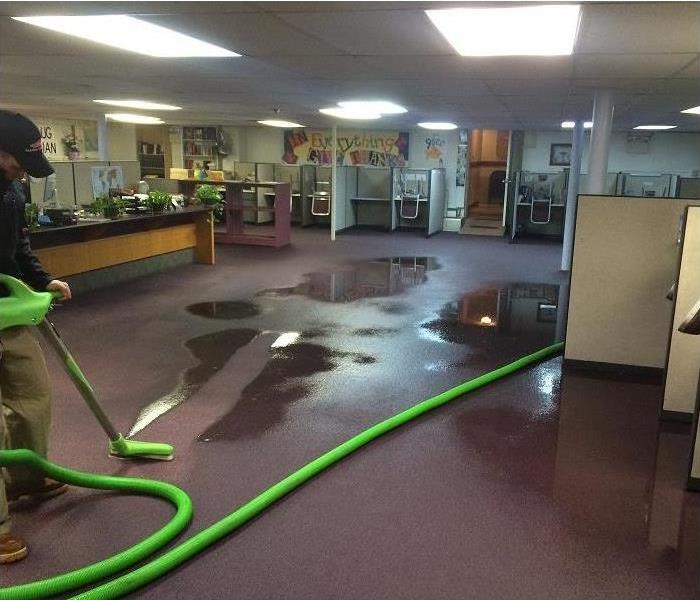 An estimated 25% of companies are unable to resume operations after a major disaster, according to the Insurance Institute for Business and Home Safe
An estimated 25% of companies are unable to resume operations after a major disaster, according to the Insurance Institute for Business and Home Safe
A natural disaster can often catch small businesses off-guard. In fact, it's estimated that 25 percent of companies are unable to resume operations after a major disaster, according to the Insurance Institute for Business and Home Safety.
How quickly a company is able to recover after a disaster usually determines how succesful they are in the future. Adequate preparation creates trust among your clients and will allow your business to continue without too much damaging effects.
Here are the six ways small businesses should prepare for a natural disaster.
1. Make a reliable emergency response plan
To protect your employees and clients, business owners should know all the proper evaucation routes and make sure everyone else is informed as well. It is recommended to post escape routes and plans throughout the building and keep emergency phone numbers readily available.
2. Create a survival kit
Every business in operation should have a survival kit with disaster-ready items, such as a flashlight, plastic sheeting, garbage bags, etc. Consider storing a digital camera as well to take photos of the property damage for your insurance company.
3. Ensure that you have enough insurance coverage
Before a natural disaster is given the opportunity to blow your business away, make sure to review your insurance policies. What kind of coverage do you have on your facilities and properties? Are they enough to insure your recovery if a disaster does physically destroy your business? Small business owners should also consider business interrruption insurance in case you have to close your doors for a substantial amount of time.
4. Back-up all your electronic data
With most business transactions conducted electronically, it is crucial that files and data are backed up and saved. A company may not be able to reestablish itself without important financial and client databases. It is recommended to save all your files—including the last few years of taxes—at least two times and store one in a waterproof container at the office, and the other in an offsite facility. Anything that you are currently working on should be mailed to yourself on a Web service that can be accessed from any computer.
5. Determine a communication strategy
Plan a strategic and efficient way to communicate with employees and clients while your business operations are down. Also, make sure everyone understands their communication responsibilities. For example, who is going to be responsible for contacting the insurance company? Or who will contact clients to update them? Or who will be the spokesperson in case information needs to be relayed immediately?
6. Consider temporary relocation if needed
If you can't get into your office, how do you continue business operations? Think about another location that you may work at if disaster strikes.
Would your business be prepared in the case of a fire?
2/8/2020 (Permalink)
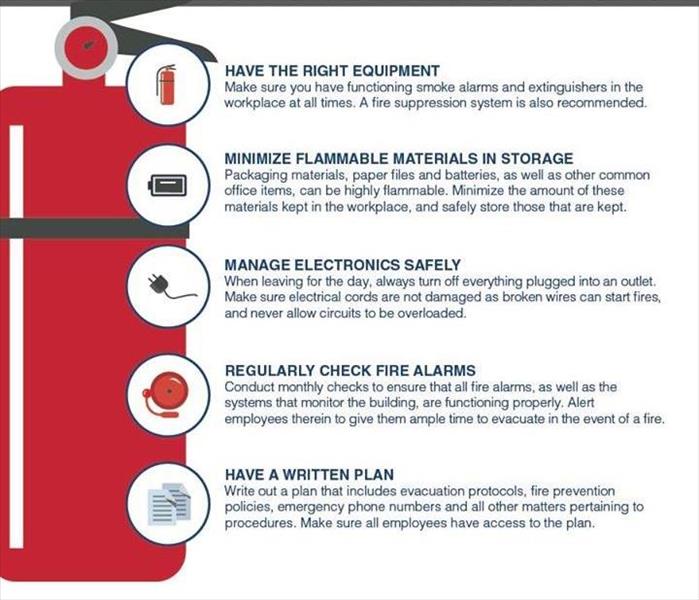 Whether you’re a small business owner or are in charge of a large corporation, commercial fire protection is not a step you can afford to skip.
Whether you’re a small business owner or are in charge of a large corporation, commercial fire protection is not a step you can afford to skip.
If you’re a small business owner, your very livelihood depends on your company’s ability to function. A workplace fire can have disastrous consequences on your business — which is just one of the many, many reasons it’s important to prevent a fire before it ever starts. Not every fire can be prevented, but by following this safety checklist, you’ll be able to eliminate the majority of fire risks from the get-go. Here are some fire safety rules you should be sure to follow for your small business:
- Occupancy rating
Buildings have specific occupancy ratings that specify how it can be used and how many people can be inside at one time. In order to reduce the chances of a fire and to be able to follow proper safety procedures in the event of one, you must comply with these rules. The occupancy rating will also outline the types of fire-resistant construction and fire protection systems that are required for that location. These are not merely suggestions; these are rules that you must implement and maintain in order to ensure safety and lawful compliance.
- Fire protection systems
Your business and area will determine the requirements for fire extinguishers and protection systems. Typically, every 3,000 square feet of area requires one fire extinguisher. Extinguishers also have specific ratings that need to be met. In addition, your business will need a commercial fire sprinkler system and fire alarm systems. Many restaurant owners or hoteliers may also want a fire suppression and detection system, as non-chemical suppression systems operate effectively 96% of the time in commercial areas with large oven ranges. This can have a huge impact on the amount of damage a kitchen fire can do.
- Regular inspections
Fire inspectors will typically conduct examinations for commercial buildings every two years in order to identify fire safety code violations and to educate owners on fire safety. Routine inspections have been proven to reduce fires and the losses they create. In addition, you should have your fire protection systems examined on a routine basis, especially in the event they have been recently used. Fire extinguishers need to be replaced after use and should be examined monthly.
- Evacuation plan
The amount of businesses that have a solid plan for evacuation in the event of an emergency is inexcusably low. Out of 119 businesses surveyed, only 35% had any sort of fire evacuation plan. At a minimum, your plan needs to include a preferred method for reporting emergencies, evacuation policy and procedure, a floor plan and emergency escape route, and safety procedures during an emergency. Having a clear plan that’s accessible to all employers and employees is vital during an emergency.
Recover From Storm Damage With Our Help | SERVPRO® of East Honolulu
2/1/2020 (Permalink)
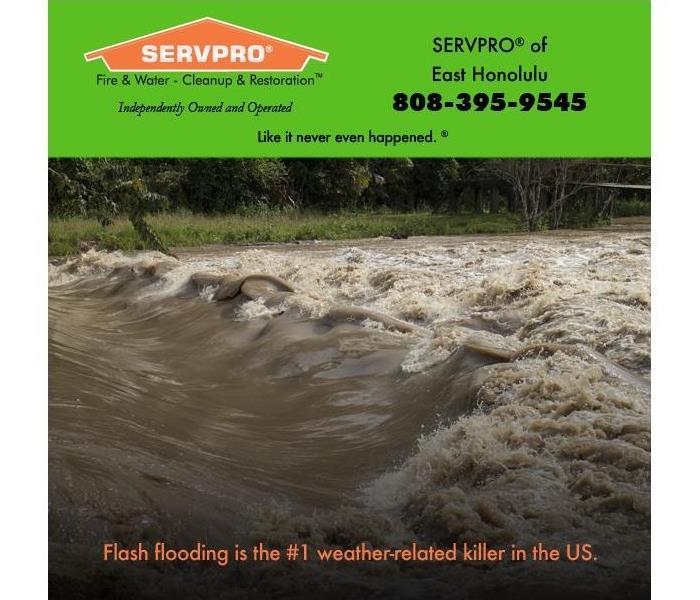 When flood warnings are issued, take them seriously.
When flood warnings are issued, take them seriously.
The frequency with which storms occur can sometimes cause individuals to forget about how much danger they pose to life and property. Storms were responsible for around $2 billion in damages in 2018, and are something homeowners should prepare for and take seriously.
Putting a plan in place for storm damage restoration in advance is wise—there are many post-storm restoration scams, and it is important to choose a company you can trust. With our upstanding reputation and highly trained professionals, when storms strike, we can help you.
How We Can Help After Storm Damage StrikesBy Handling All Types of Damage
Because of high winds that blow objects, fallen branches and high volumes of rain, storm damage can be a severe and multifaceted problem. That is why we make sure we are fully certified and prepared for all types of damage, including structure and water-related issues, so we can provide you with a full restoration after a storm.
By Sending Our Highly Trained Technicians
Because of the complications of storm damage, it is important that you work with a company that is fully aware of the intricacies. That is why we keep our technicians up-to-date with the Institute of Inspection Cleaning and Restoration Certification guidelines and provide continuing education opportunities throughout their careers.
By Bringing in Assistance From All Over the Nation
As a member of the local community, we are proud to be a small business in Honolulu, but we also have the benefit of a national name behind us when large-scale issues arise. We are able to call for backup from other SERVPRO® owners across the nation, which means that no storm front or disaster is too large for us to take care of.
By Upholding Our Positive Reputation
Communities are vulnerable after destructive storms move through, giving rise to unscrupulous restoration scams designed to take advantage of the victims. Because we have a long-standing reputation as leaders in the restoration industry, you can rest assured that we are a legitimate business that is here to work for you and the entire community.
If you have experienced storm damage or want to learn more, you can call us 24⁄7 for more details.
A Reference Guide for Fire Safety Tips
2/1/2020 (Permalink)
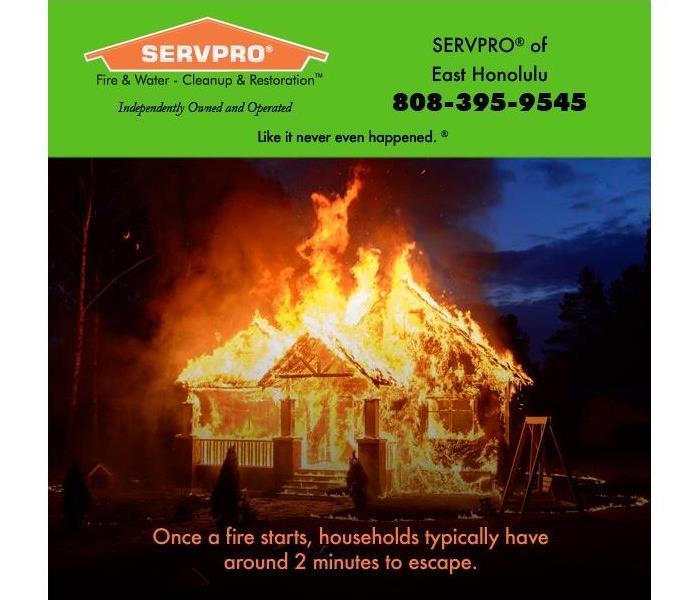 Being able to escape quickly is much easier with a fire evacuation plan.
Being able to escape quickly is much easier with a fire evacuation plan.
House fires are a leading concern amongst homeowners, and considering how frequently they occur, this concern is a valid one. House fires can quickly get out of hand and cause damage to property, belongings and livelihood.
Because house fires are such a universal worry, there is a plethora of information about how to prevent them and protect yourself. To make these safety tips easier to find, we have compiled a quick reference guide that has all the most pertinent house fire tips you should note.
Fire Safety Tips for Your ReferenceFrequently Check Smoke Detectors. Smoke alarms are recommended again and again as the top measure for fire safety. Install them in every room of the house, check them every 30 days and consider getting a model that utilizes an interconnected alarm system for peak effectiveness.
Have a Fire Escape Plan. Designing a fire escape plan that is customized to your home is the best way to ensure you will be able to escape once a fire begins. It is advised to have two exits out of each room and to designate a meeting place outside of the home for everyone to go to.
Know How to Operate a Fire Extinguisher. There are several different types of fire extinguishers that can be purchased, so it is important to select the model most pertinent to your needs and be aware of how to operate it.
Never Leave Flames Unattended. Open flames are a part of everyday life, but it is important to not minimize the risk they pose just because they are common. Whether using fire for cooking, heating or candle-lighting, never leave a flame unattended and always be cautious that it does not spread.
Keep a Closed-Door Policy. It is not uncommon for fires to start in the middle of the night, so taking precautions in your nighttime routine is recommended. Shutting bedroom doors at night can significantly slow a fire’s spread, allowing everyone to have an extended reaction time and execute the escape plan.
If you’d like to learn more about protecting yourself from a house fire and how our restoration services can help you recover, get in touch today to learn more.
Appliances That Commonly Cause Water Leaks
1/4/2020 (Permalink)
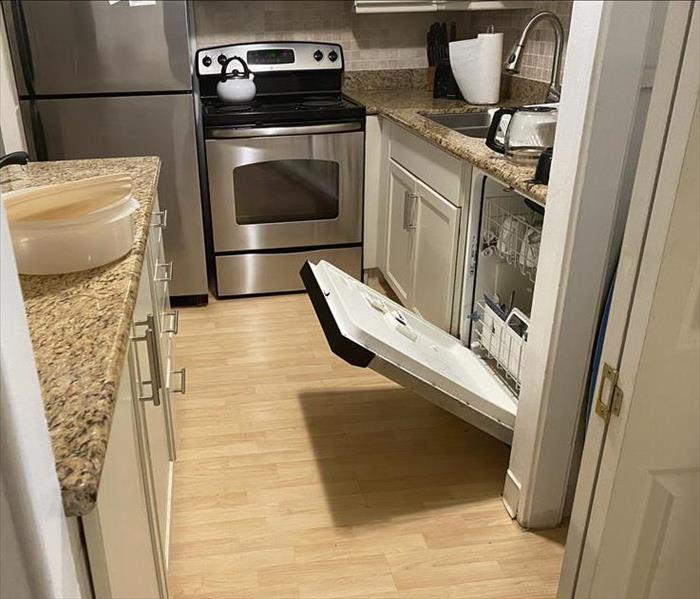 Water damage caused by an overflowed dishwasher
Water damage caused by an overflowed dishwasher
There are an alarming number of situations that can cause water damage to homes—weather incidents, flooding and burst pipes often come to mind.
However, the source can also be from things we utilize every day, such as appliances that require water to operate. Prevention is key to stopping small, sneaky leaks from becoming a big problem, which is why we put together a guide of what appliances to watch out for and how to check them for drips.
What Appliances to Check for Water Damage
Hot Water Heater
Though hot water heaters can typically last as many as 15 years, they can begin leaking water much sooner due to faulty pipes and seals. Check regularly to avoid this from catching you by surprise, and be sure you replace it based on the manufacturer’s recommended time frame.
Refrigerator
The ice maker inside of the refrigerator pulls water in to manufacture the ice, but the tubing it uses to do so can often falter. Add that to the fact that refrigerators are seldom moved, and you have a recipe for water damage to get out of hand before you even realize it has begun. Simply pulling the fridge away from the wall and checking for drips regularly is enough to prevent this from becoming an issue that gets out of hand.
Dishwasher
A dishwasher can be another common culprit for secluded damage because of how they are typically built into cabinets. Pulling them out of their cubby often is wise, especially if you have an older model. It is not uncommon for homeowners’ insurance policies to not cover water damage from older appliances, so this is extra important to note.
Washing Machine
Washing machine leaks are such a common problem that it is recommended to check their hoses as frequently as once a month to guard against wear and tear. Even with regular checks, exercise caution by replacing these hoses every five years regardless of if they appear worn.
Air Conditioner
All air conditioning units manufacture condensation as part of their operations, but if there is an issue with their draining capabilities, issues can arise. The best way to prevent this is by following your manufacturer’s instructions regarding inspections and maintenance, as well as doing your own visual checks to ensure there is no water out of place in and around the unit.
If your home has been impacted by water damage or you’d like to put a plan in place in case it happens to you, contact us to learn how we can help.
Small Business Fire Safety Tips
12/28/2019 (Permalink)
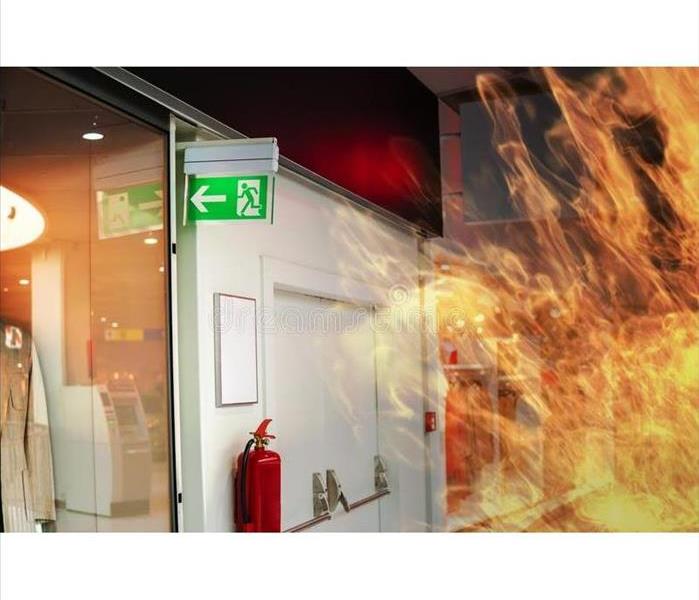 Are you a small business? Is your fire evacuation plan compliant?
Are you a small business? Is your fire evacuation plan compliant?
One fire can completely destroy a company's finances and productivity. In severe instances, the risk can lead to a closure. In addition to ensuring you are compliant with all the fire safety codes, here are some tips to mitigate the threat fire poses to you business:
- Have the right equipment - make sure you have functioning smoke alarms and extinguishers in the workplace at all times. A fire suppression system is also recommended.
- Minimize flammable material in storage - packaging materials, paper files amd batteries, as well as other common office items, can be highly flammable. Minimize the amonth of these materials kept in the workplace, and safely store those that are kept.
- Manage electronics safely - when leaving for the day, always turn off everyting plugged into an outlet. Make sure electrical cords are not damaged as broken wires can start fired, and never allow circuits to be overloaded.
- Regularly check fire alarms - conduct monthly checks to ensure that all fire alarms, as well as the systems that monitor the building, are functioning properly. Alert employees therein to give them ample time to evacuate in the event of a fire.
- Have a written plan - write out a plan that includes evacuation protocols, fire prevention policies, emergency phone numbers and all other matters pertaining to procedures. Make sure all employees have access to the plan.
Emergency Preparedness 101: What to keep in your emergency kit
12/28/2019 (Permalink)
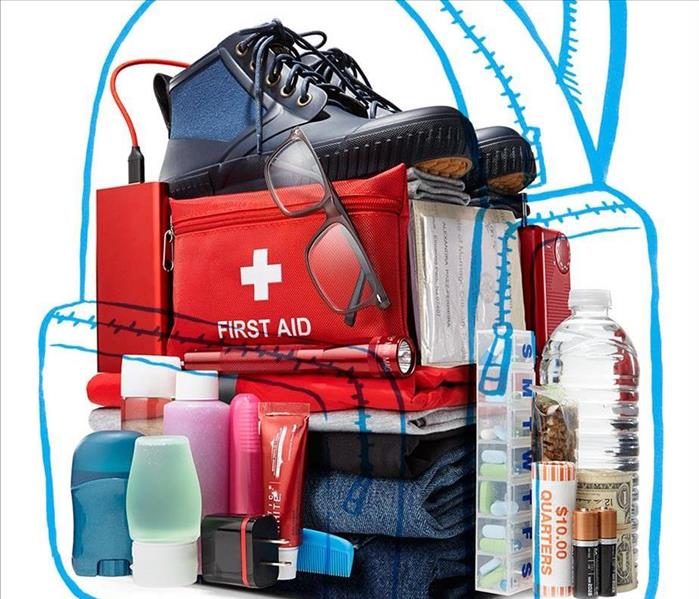 For more information on emergency preparedness, visit Ready.gov or the American Red Cross.
For more information on emergency preparedness, visit Ready.gov or the American Red Cross.
When it comes to family safety and home security, top-of-mind concerns usually involve crime or household accidents. However, environmental factors force millions of people to evacuate their homes or shelter in place every year. An emergency kit, also known as a survival kit, is the cornerstone of emergency preparedness for these situations. Assemble a well-thought out emergency kit, either in your home or in a travel-friendly “go bag”, to help you stay safe and sound.
While some locations face greater environmental risks than others, dangerous weather can strike anywhere. In 2018, the Federal Emergency Management Agency (FEMA) recorded 124 emergency declarations, which included fires, storms, flooding, high winds, mudslides, tornadoes, earthquakes and even volcanic eruptions. These events and related emergencies often result in the loss of electricity, water, heat, phone lines or other utilities. They may also prevent you from traveling, so plan accordingly using this list.
Emergency kit basics
Your basic preparedness kit should include everyday staples like water, food, essential toiletries, batteries and backup communication devices. The following recommendations are intended to last through relatively minor emergencies until your power can be restored or emergency personnel can reach you.
- Water: The Department of Homeland Security recommends at least one gallon of water per person per day for at least three days, for drinking and sanitation.
- Food: Assemble a three-day supply (or more) of nonperishable food items. Keep food in a cool, dry place with basic cutlery, including a can opener, easily accessible. If you’re sticking to the basics, choose food items that don’t need much preparation or heating. Some suggestions: granola or protein bars, peanut butter, jerky, nuts, cereal, dried fruit and canned items like legumes, fruit and tuna.
- Family first aid kit: At minimum, your first aid kit should include treatments for minor injuries (bumps, scrapes, cuts, burns, etc.) as well as general purpose over-the-counter medications like pain relievers, cold medicine, anti-diarrheal medicines (Immodium, Pepto-Bismol) and hydrocortisone cream. Create your own from scratch or opt for a preassembled kit. This all-purpose first aid kit represents a good value and includes plenty of kid-friendly items like junior band-aids and topical pain relief. No matter which kit you choose, you should always review its contents and supplement it with items that are relevant for your family. For instance, you might need allergy medicine like Benadryl or epinephrine pens or additional NSAIDs for chronic aches and pains.
- Medical items & prescriptions: The first aid kit prepares you to respond to new injuries and conditions, but anyone in your household with pre-existing conditions should also have a 7-day emergency supply of prescriptions and/or medical devices.
- Toiletries and sanitation items: Prioritize toiletries that you can use without water, especially if you rely on an electric water pump. Moist towelettes/wet wipes with plenty of sealable trash bags are good all-around use items. If you have an infant, baby supplies (diapers, rash cream, etc.) are of utmost importance. Also consider hand sanitizer, feminine hygiene products and toilet paper.
- Glasses and/or additional contact lenses with solution: Coping with an emergency is particularly difficult if your vision is compromised. Make sure to have backup glasses, contacts and contact solution if you have issues with your eyesight.
- Lighting: flashlight, lanterns, candles: Flashlights and camping lanterns are excellent options, as long as you include an ample supply of batteries. Hand-crank flashlights are an even better choice because they don’t require batteries at all. Energizer makes some of the best rated mini versions; this Thorfire flashlight is another great option, with features like solar power, waterproofing and various light settings.
If you stock up on candles, be sure to include matches or lighters, and use them extremely judiciously. Open flames present safety issues of their own. Use tip-proof, heat-proof candle holders and never burn a candle unattended. - Backup cell phone chargers/battery: Cellular networks often remain up and running even when electricity is spotty. If you can keep your device charged, you can preserve a connection to the outside world. Car chargers can be useful in a pinch, as long as you have the resources to start and run your car. Backup battery packs are reliable, but keep in mind that they usually recharge your device only 1-3 times, depending on the pack size and the type of phone you have.
- Battery-powered or hand-crank radio: Though radios might seem old-fashioned, they’re the best tool for staying up-to-date on emergency broadcasts during a time of need. AM/FM radios are better than nothing, but they may not provide the best information during hazardous weather. Look for an emergency radio that supports NOAA weather radio. These types of receivers tune into specific public safety radio frequencies that broadcast comprehensive governmental weather news and alerts.
- Multipurpose tool or tool kit: A multi-tool or a small toolkit will help you respond to the environment. At the very least, keep a wrench and/or pliers on hand to turn off natural gas and damaged water valves. Hammer, nails, plywood, tarps and rope may be necessary to re-secure doors and windows. Plastic sheeting and duct tape are also handy reinforcements if the structure of your home is compromised.
- Pet supplies: Don’t forget your furry family members in your planning. Stock up on extra food, bedding and important medications.
- Whistle, maps and compass: Many security authorities recommend packing a high-decibel whistle into your emergency kit in case you need to signal for help. Local maps and a compass can also be lifesavers if you need to travel without your go-to GPS device.
- Emergency blankets or sleeping bags: During an emergency, you or your family members may need to recover from dangerous weather exposure. Heat-retaining household safe or in a waterproof bag or portfolio within your emergency kit.
Advanced survival kit items
There are several possible reasons to increase your level of emergency preparedness, many of them personal. Some people prefer to keep an elevated level of independence and preparation because they live in an isolated setting. Others just want maximum peace of mind. To increase your preparedness level from covering basic needs for a few days to enhancing your comfort and readiness for an extended period of time, start with the items listed above and expand on them as your priorities and resources allow. In some cases, “more” is simply better – more food, more water, more tools. In other cases, consider additional strategic investments in the following items.
- Water filtration: Disease-causing bacteria and other organisms may lurk in seemingly innocuous water, and natural disasters can cause these pathogens to multiply. If you don’t have a way to boil water to sanitize it, emergency water filtration can make non-potable water safe to drink. Make sure to use filters specifically designed for untreated water. Most kitchen water filters are simply meant to make already-drinkable water taste better, not to sanitize it. Water filtration systems meant for the outdoors are more appropriate for emergency prep.
- Generator and fuel: Backup electric generators are available in a variety of sizes, price points and run times. Many people consider quiet, low-capacity inverter generators sufficient for emergency prep in smaller households. Larger portable generators have greater wattage loads and run time, while standby generators are the type that automatically kick on when you lose power, keeping your home (or a significant portion of it) up and running without disruption. All generators require fuel (propane or natural gas) and the greater its size, the more installation and safety concerns it presents. Do your research carefully, matching your wattage needs with your requisite appliances. Amazon has a great guide to get you started.
- Cooking supplies: In an emergency, a hot meal goes a long way. Look for a survival cooking kit that includes a safe heating element or fuel. Many of these emergency stoves work well with either solid emergency kindling or canned liquid fuel. Butane camping stoves and self-heating cooking bags are also an option. Proceed cautiously: cooking flames are dangerous, especially in enclosed spaces. A fire extinguisher makes an excellent addition to your emergency kitchen.
- Comforts (clothing, towels, games, activities): Pleasant diversions can be hard to come by during long-lasting emergencies. Paper, pencils, books, crosswords, puzzles and other games go a long way in keeping spirits up. Cozy clothing, towels and additional bedding are other comfort measures that may make the difference between feeling hopeless and staying positive.
How Planning Helps Reduce Risks for Your Business | SERVPRO® of East Honolulu
12/21/2019 (Permalink)
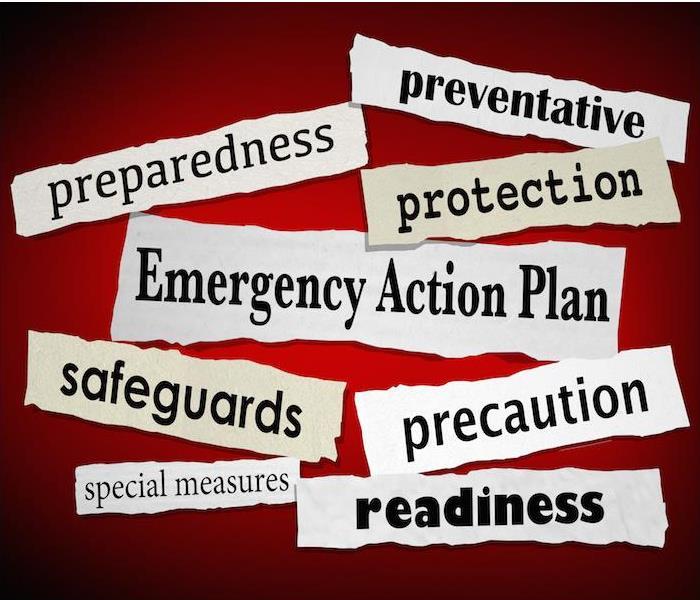 Choose SERVPRO of East Honolulu for your restoration needs
Choose SERVPRO of East Honolulu for your restoration needs
Managing your time investments properly is one of the most important aspects of strategic business ownership, but one area where most business owners could stand to invest more time is in their disaster preparedness efforts.
Natural disasters are happening more often than ever before, and while some areas of the country might be more vulnerable, they can occur anywhere and it is important for business owners to have a plan.
Preparing for a natural disaster involves planning both for the occurrence of the event and what to do in the aftermath to resume operations as quickly as possible. By knowing the details about your insurance coverage, creating an emergency plan and understanding how to get your property restored, you can ensure you are prepared for whatever nature sends your way.
Planning for Disasters as a Small Business Owner1. Double-Check Your Insurance
While business insurance is a must for small business owners, not all insurances will cover the same amount of damages after a disaster. Extremely damaging events such as flooding are often not provisioned for in standard insurance policies and require supplemental commercial coverage in order for businesses to be protected.
2. Create Your Action Plan
When a disaster is imminent, those affected often have only minutes in order to evacuate and get to a safer area. For this reason, having an emergency action plan for how you will respond if your business is in immediate danger is quite helpful, as you will not be wasting time deciding what needs to be done. Make sure you determine evacuation procedures, what emergency supplies to take and make copies of all important documents that might need to be salvaged.
3. Rehearse Drills and Prepare Staff
Preparing your employees for a disaster scenario will help everyone stay safe and limit your liability when an emergency occurs. Come up with different, likely scenarios to practice workplace safety drills so it is clear how to proceed when a natural disaster is on the way.
4. Choose a Restoration Company to Work With
In the aftermath of a natural disaster, recovering quickly is one of the most important things for businesses, as a lapse in operations can be devastating for financial security. For this reason, choosing your preferred restoration company well in advance is advised. By doing this, you can call immediately to have your restoration begun and work to reopen as quickly as possible.
If you need to pick a commercial restoration company that’s right for you, call us today! We can tell you all about what sets our process apart.
How Fires Peak in the Winter | SERVPRO® of East Honolulu
12/14/2019 (Permalink)
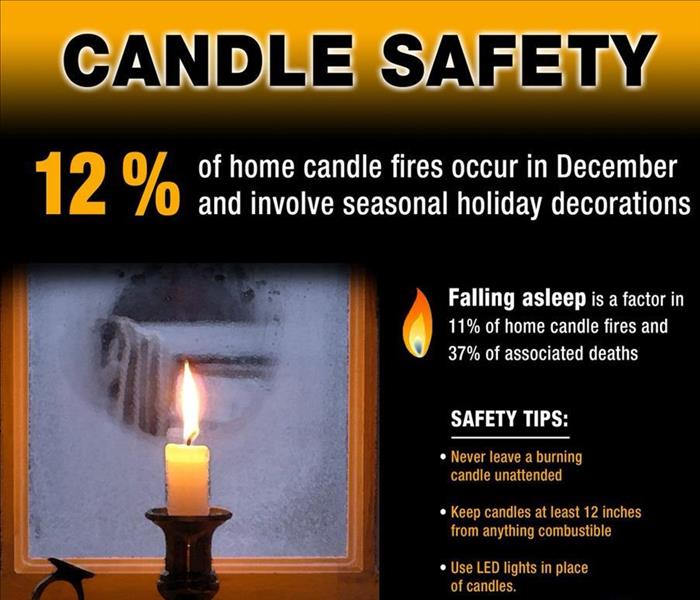 Candle fire statistics
Candle fire statistics
While house fires are always a big risk, winter is the most common time that house fires are likely to occur. This is due to a variety of factors that come into play, including an increase in celebrations, a lowering of temperatures and the dangers of an open flame. In order to help you be aware of these factors and remain safe, we have compiled the most common cause of these fires and prevention tips to help.
Household Fire Causes in WintertimeAn Increase in Cooking
Regardless of the time of year, cooking is always the leading cause of household fires. In winter, this is compounded with the likelihood that people are cooking more meals and possibly baking unfamiliar dishes, creating more of an opportunity for a fire to occur.
The Risk of Heaters
The way we heat our homes has a lot to do with our overall fire risk, as heaters are often a cause. Using portable heaters with subpar safety features or letting the fireplace run without a screen in place are both common causes of fires that can easily be prevented.
Candles and Decorations
Candles experience a surge in popularity during winter, both for the pleasant smell as well as for holiday celebrations. Any time there is an open flame—even a small one from a candle—there is an increase in the risk of a fire. Additionally, holiday decorations that rely on electricity can pose a fire risk as well, as they can deteriorate in storage and cause sparks or shorts.
Fire Prevention Best PracticesBeing diligent about preventing fires is a great way to ensure your likelihood of being present for one is lowered. It is important to practice this prevention at any time of year, but these tips are tailored especially to the common instances of wintertime fires:
- Check smoke alarms once every 30 days and replace every 10 years.
- Always monitor open flames.
- Select space heaters with automatic shut-offs in case they tip over.
- Utilize a screen every time you use a fireplace.
- Draft and practice an emergency escape plan with your household.
If your home has been impacted by a fire, call us right away. We are leaders in restoration and can help you recover quickly after a fire occurs.
Damages Flooding Can Cause | SERVPRO® of East Honolulu
11/30/2019 (Permalink)
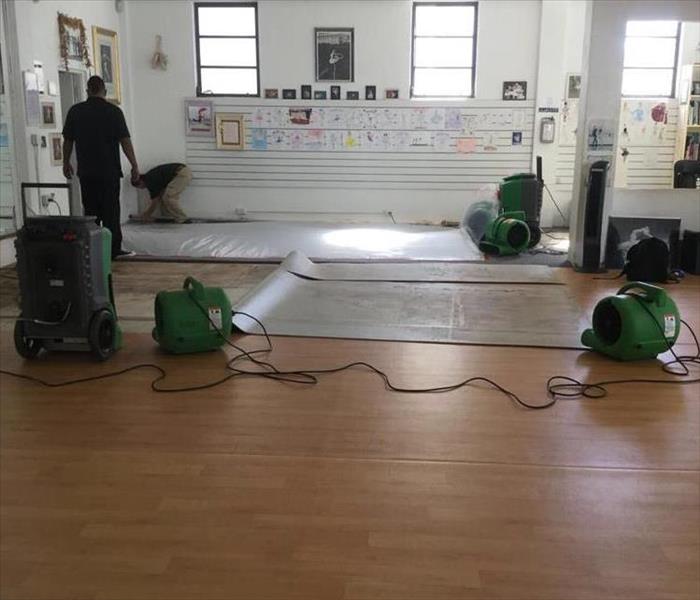 Drying of business dance studio after a storm caused water to burst through its doors
Drying of business dance studio after a storm caused water to burst through its doors
While thinking of flooding is not pleasant, it is something that all homeowners should consider due to how common it has become in recent years.
There are many causes of flooding as well as many damages a flood can cause. To give you an idea of the most common damages to be aware of, we have put together this guide so you can be better prepared.
Flooding and Its Damage to HomesFoundational Damage. The ground underneath a home can become waterlogged during a flood, causing unnatural and unprecedented shifting and swelling. This can alter a home’s foundational stability, resulting in structural issues such as cracked walls or ceilings.
Drywall Damage and Mold. While some drywall is in clear need of replacing, not all drywall impacted by a flood will be crumbling and clearly damaged. However, because drywall is such a hotspot for mold after it becomes soaked, it may still have to be replaced even if it looks physically sound.
Insulation Saturation. While some specialty insulations will not be affected by water damage, the majority of the types in today’s houses can become extremely saturated with water and must be replaced after a flood.
Temporary Frame Swelling. The framing of a home is traditionally made out of lumber, meaning it will not always have to be replaced following a flood. While the wood may swell initially, it will usually settle after it dries and remains structurally stable. However, always work with a professional to ensure it is treated for mold.
Appliance Ruining. The appliances that contain insulation such as ovens and refrigerators will generally have to be replaced after a flood, as this insulation can absorb flood water. However, other appliances that are not insulated may be OK to use—just check with a professional to ensure the electrical safety first.
Furniture Damage. Because of how much water upholstered furniture can absorb, it often requires replacement following a flood because of contamination and mold. However, furniture made of other materials may be salvageable after a thorough cleaning, such as metal and wood pieces.
If your home has been affected by a flood, we’ll be here to help you! Give us a call 24⁄7 to learn about our certified flood restoration process.
Water Damage Restoration: What to Do When Your House is Flooded
11/16/2019 (Permalink)
Flood Preparedness: How to Prepare for a Flood Disaster
If you haven't been affected by storm damage, you should still prepare in case of future disasters. Here are some simple steps that businesses and homeowners can take to reduce the impact of natural disasters:
- Check your insurance policy – Flood damage is not covered by standard homeowners or renters insurance policies. In some high-risk flood areas, home and business owners may be required by law to carry flood insurance. To learn more about your state's requirements check with your Insurance Commissioner.
- Take pictures/video of your business or home as a point of reference in the event of an emergency.
- Back up critical digital files on a portable external hard drive and store it away from the office.
- Properly anchor fuel and propane tanks, so they don't float away in case of flooding. Also, ensure you keep your fuel levels full ahead of storms.
- Have copies of your insurance policies on hand and have an electronic version available.
- Collect family photos and other mementos in a centralized and easily accessible area, preferably in a watertight container.
- Keep medicines together in a waterproof container.
- Prepare an emergency kit with a change of clothes, weather appropriate footwear, flashlight, water, and battery or crank operated radio to monitor the weather without electricity.
- Discuss your emergency plan with your family. Designate a "safe place" inside if you have to take shelter and a meeting place outside in case you have to evacuate.
The Quality of Your Restoration Company Matters | SERVPRO® of East Honolulu
11/9/2019 (Permalink)
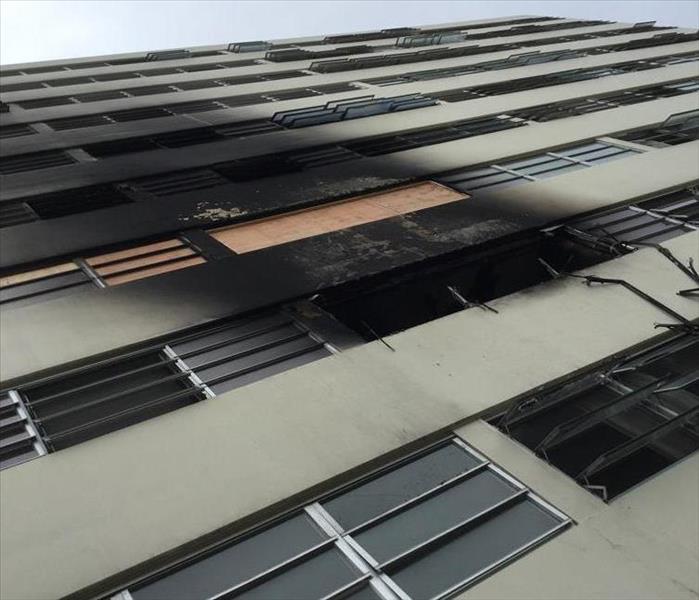 Fire caused by one unit affected multiple residents at this Oahu apartment complex
Fire caused by one unit affected multiple residents at this Oahu apartment complex
As winter approaches, it is important for homeowners to be sure they are fully prepared for a fire. The winter months are when the most home fires occur according to the Red Cross.
It is wise for every household to develop their own emergency fire escape plan to prepare for the moment a fire breaks out—but preparing for the aftermath is also important. By deciding in advance what restoration company to work with after a fire, you can get the restoration process in motion immediately in order to have your home back to its pre-fire condition.
Fire Cleanup in 3 PartsWorking with an experienced fire restoration company is the best way to get peace of mind after a fire. Not only will you have a guarantee that your restoration will be done right, but they will also be able to handle the majority of your belongings instead of only being able to salvage bits and pieces. After a fire, here are the three types of cleanups we can perform:
Structural Cleaning
Fires can not only damage paint and drywall, but they can also cause harm to the structural elements of your home. By performing testing, we can determine the exact extent of this damage so that we can ensure every damaged element is restored. Then our technicians will bring in their equipment to begin the cleaning and restoration process.
Content Cleaning
With the contents of your home, it is often far more cost-effective to have them restored rather than to replace them, which is why we ensure we have the ability to do this. We have both wet and dry cleaning machines to handle a variety of object types. We can often restore most of a home’s contents, from electronics to paintings to wooden furniture. This ensures your favorite items are safe to use and that you do not have to go through the stressful replacement process.
Deodorization Services
Lingering smoke and soot after a fire might cause unpleasant odors, but they can also cause negative health effects. For this reason, air quality cleanup is a very important part of the restoration process. By bringing in foggers and air scrubbers, we are able to fully remove these particles in lieu of simply covering up the scent.
If you’ve been affected by a fire, reach out to us right away! We are here 24⁄7 to help you recover.
Ways for Business Owners to Prepare for Floods | SERVPRO® of East Honolulu
10/26/2019 (Permalink)
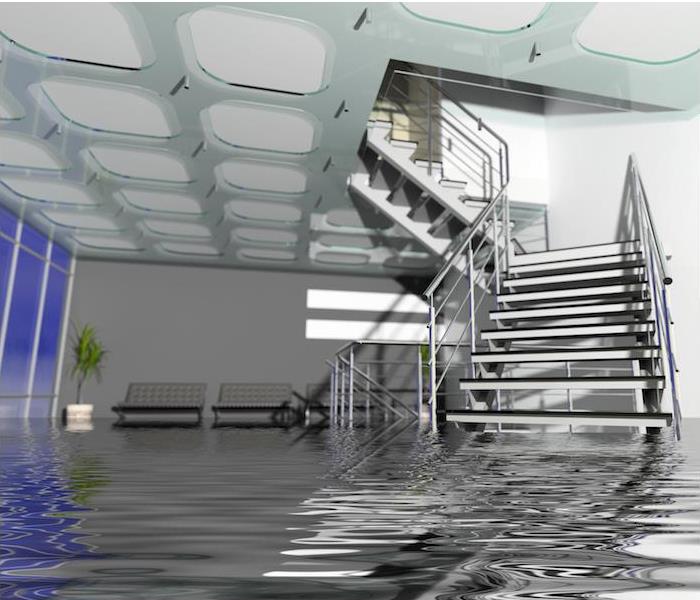 If you've experienced a flood, we are always here to help. Call us 24/7 to get our team of professionals to your business quickly so you can get back
If you've experienced a flood, we are always here to help. Call us 24/7 to get our team of professionals to your business quickly so you can get back
There are many things that business owners must plan for regarding their livelihood, but all too often, floods are left off that list. For those outside of a known floodplain, planning for one can seem like a waste of time—but with 90% of natural disasters involving floods, it is not unheard of for areas not historically prone to flooding to be affected.
Because business owners also have a degree of liability, planning for a flood is a great way to keep your employees safe and ensure your business is well-poised to reopen after the waters retreat. Practicing preparedness provides valuable peace of mind and can have a big impact on the future of your business.
<h3to-do-to-prepare">What to Do to Prepare
There are many ways to practice flood preparedness, but some of the most important are:
- Locating your business on the FEMA Flood Map to determine your risk levels
- Keeping copies of important documents stored away from the business in a secure, waterproof place
- Training employees on your emergency plan in order to educate them on what to do
- Creating evacuation routes that are well thought out and making sure everyone is aware of them
- Inquiring about your insurance coverage and whether adding flood insurance might be a wise choice
- Storing emergency rations and first-aid supplies in case a situation arises where you are stuck
- Elevating valuables so they are not ruined by low-height floods
<h3the-right-documents">Preserving the Right Documents
By having copies of important documents on hand, business owners can ensure they are set up to reopen even if the originals were destroyed. Some of the best ones to preserve are:
- The continuity plan for the business
- Details on how to contact parties essential to the business, such as staff and vendors
- Details on how to file an insurance claim and contact your agent
- Instructions for accessing backed-up digital files
- Banking history, deed or lease information and any financial documents that might be helpful
If your business has experienced a flood, we are always here to help. Call us 24⁄7 to get our team of professionals to your business quickly so you can get back on track.
Questions You Need to Ask Your Restoration Company | SERVPRO® of East Honolulu
10/21/2019 (Permalink)
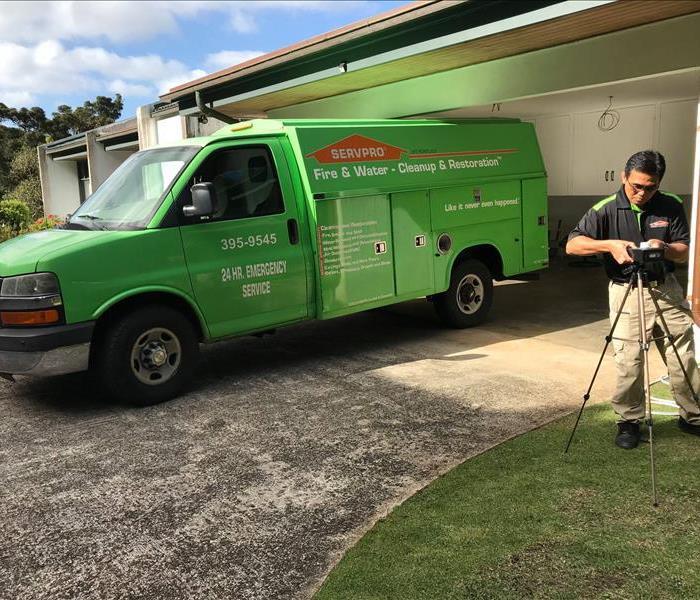 Lorenzo air sampling for mold
Lorenzo air sampling for mold
Any time a property sustains damage, there are many logistical hoops to jump through. For small businesses, there are a few more hoops than normal due to the fact that a business owner’s livelihood could be in jeopardy. It is a dismal yet important statistic: 40 to 60% of small businesses cannot reopen following a disaster.
Because of the high stakes of commercial restoration, asking your potential company some important questions will go a long way in picking someone reputable to work with.
1. What Is the Emergency Process?
Many cases of property damage will continue to worsen as long as they are left untreated. A company with a solid emergency response time, 24-hour emergency line and a team of professionals trained to respond quickly is your best bet for not letting things get out of hand.
We are ready and prepared to respond at all hours of the day thanks to our own 24-hour emergency line that allows us to respond to damage rapidly. This allows us to begin the work of cleaning up so that business owners can focus more on their own tasks.
2. What Is the Employee Training Process?
The technicians who are working to restore your business are the ultimate determining factor in the quality of work. A company that employs and thoroughly trains professional technicians will be happy to share with you a bit about their education process.
The Institute of Inspection, Cleaning and Restoration Certification (IICRC) sets forth industry training standards, which are what we use for our own teams. Additionally, certifications and online learning courses are supplied and encouraged so everyone can expand their knowledge.
3. What Is the Equipment Selection Process?
The quality of restoration equipment is essential to the quality of work, and technological advancements have made many pieces of machinery obsolete. That is why choosing a company who carefully selects its equipment is essential.
Our own machinery is chosen based on the guidelines from the IICRC to guarantee we use the best technology to perform the best commercial restoration work.
If you’re in need of commercial restoration, do not hesitate to make the call so you can get your business back faster. Our trained experts are here to help 24/7—contact us today.
October is Fire Prevention Month!
10/10/2019 (Permalink)
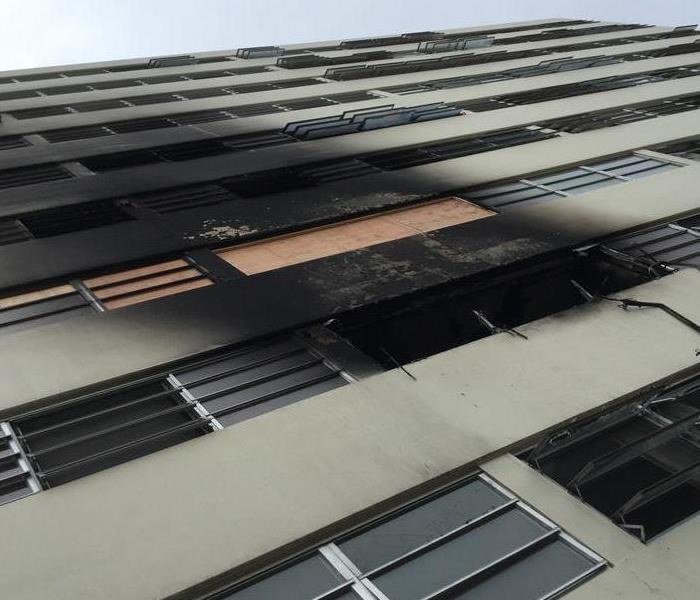 Aftermath of Honolulu apartment complex showing fire damage due to negligence
Aftermath of Honolulu apartment complex showing fire damage due to negligence
As we enter the middle of October, it is important for everyone to be aware of what they can do to protect their home and family in a time of emergency. October is Fire Prevention Month!
The goal of fire prevention is to educate the public to take precautions to prevent potentially harmful fires and become educated about surviving them.
Below are a few tips and reminders:
Stop, drop and roll...
If one's clothing catches on fire, the most effective method of extinguishing the fire is to stop, drop to the ground, and roll back and forth to smother the flame. Running around will simply fan the flames.
Smoke detectors save lives!!!
- Working smoke detectors reduce the chances of death in a fire by half.
- Nearly 900 lives could be saved annually if every home had working smoke detectors.
- Even just one smoke detector reduces the chances of death by almost half.
- Nearly half of all fire survivors remember hearing their smoke alarm.
- Deaths due to fire have decreased by half since the invention of the smoke detector.
- Most deaths due to fire occur at night when people are sleeping.
Smoke detector maintenance!!!
- The most common cause of smoke detector failure is missing or disconnected batteries.
- Nuisance alarms are the most common reason for deliberately disconnecting batteries.
- Missing, disconnected, or dead batteries account for 73% of smoke detector failures.
- There are more homes with no working smoke detectors than there are homes without any smoke detectors at all. There are millions of homes in each category.
- Smoke detectors should be installed on every level of your home.
- Change your batteries twice a year.
- Clean your detectors also.
- Replace the entire unit every ten years.
- Disconnecting your batteries, for any reason, is dangerous and illegal.
Don't just leave to do something else...
One of the most common reasons for fires is how people often leave stoves, ovens, toasters, clothing irons, barbecues, and candles unattended.
Now, we've covered some important facts about fire safety for the home, don't forget about your business...
Oh, and DON'T forget about fire extinguishers!!
Fire extinguishers are active fire protection devices used to extinguish or control small fires, often in emergency situations. It is not intended for use on an out-of-control fire, such as one which has reached the ceiling, endangers the user (i.e., no escape route, smoke, explosion hazard, etc.), or otherwise requires the expertise of a fire department.
Things to Check for if Lightning Strikes Your Home
10/5/2019 (Permalink)
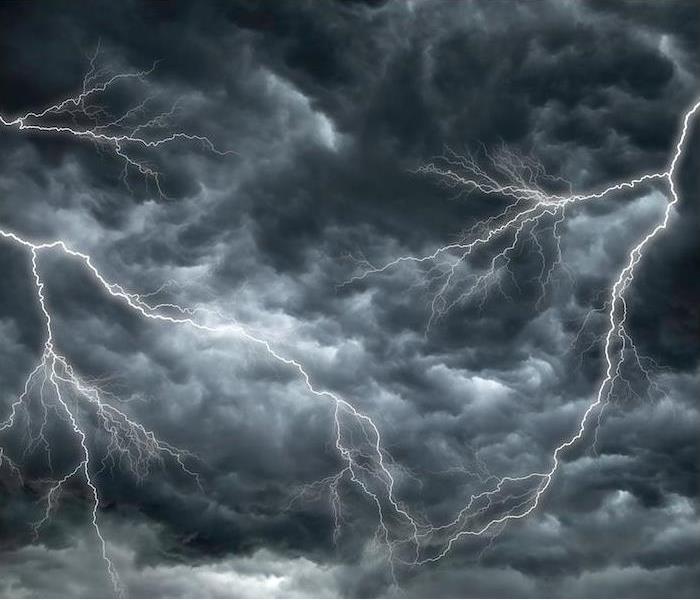 Lightning is a dramatic display from a thunderstorm, but it can also cause serious complications. Fires, damage to structures and damage to electrical
Lightning is a dramatic display from a thunderstorm, but it can also cause serious complications. Fires, damage to structures and damage to electrical
How Lightning Is Made
All thunderstorms are electrically charged, and this is what serves as a catalyst for every clap of thunder and bolt of lightning. When we see lightning, it is actually the thunderstorm offloading some of its energy, either through the clouds creating thunder or in the direction of the Earth.
Air is not an ideal conductor, which is why lightning often strikes through an object as it heads toward the ground. This is what makes homes so vulnerable and easily damaged by lightning strikes.
Things to Check if Lightning Strikes Your HomeBecause a home is full of wiring and water, lightning can travel easily through these things and cause extensive damage along the way. If your home has been struck, here’s what to check for:
1. Hot spots within walls. At around 500,000 degrees, lightning is often hot enough to ignite a house immediately upon striking. Additionally, it can cause damage to wiring so severe that it makes a fire likely to occur within the walls in the future. An electrician can perform an inspection to check for hotspots and make recommendations for repairs.
2. Damaged electronics. The voltage produced by a lightning strike is far more than what household electronics are designed to handle, and they can be severely damaged if they are plugged in when lightning strikes. Surge protectors can prevent damage from occurring, and you should always thoroughly check electronics after a strike.
3. Structure damage. The powerful shock waves that produce thunder can also produce damage when lightning strikes the ground. Because shock waves have been known to crack foundations and shatter windows, it is wise to inspect the home after a storm dissipates.
If your home has been affected by storm damages or lightning-related fires, give us a call today! We are experts in damage cleanup and can restore your damage quickly.
Choose SERVPRO of East Honolulu, your local restoration experts
10/5/2019 (Permalink)
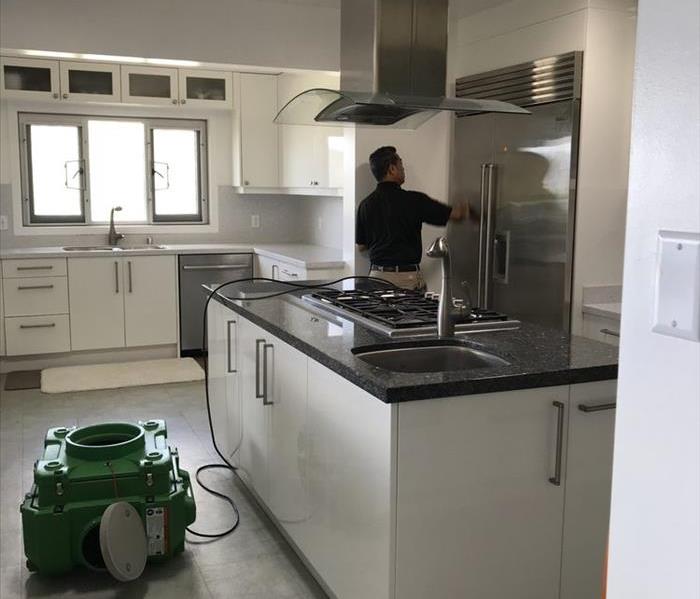 Homeowners are wise to choose the right company,. This alone can make or break your experience and the quality of your repairs.
Homeowners are wise to choose the right company,. This alone can make or break your experience and the quality of your repairs.
One important thing to note when making your selection is what the company has experience in. There are many damages that are related, such as fire leading to hazardous air quality or water damage from sprinklers. A well-rounded company will be able to handle all of these issues, whereas a specialized company might not.
What to Look for in a Restoration Company
In addition to general levels of service and scope of expertise, there are some other qualities that can help you make the best decision in restoration. Here are some of the most important qualities to look for:
A 24-Hour Response Time
Disasters tend to always happen at the most inconvenient hour, which is why our business hours are 24⁄7. No matter what time you discover damages, you can get in touch with us and have our technicians spring into action right away.
A Well-Trained Staff
Our restoration technicians’ training is something we take very seriously, which is why we use industry leader The IICRC to set our standards. Every one of our technicians is fully educated on the most up-to-date methods and equipment on the market, ensuring they perform top-notch service every time.
An Extensive Network
Though we pride ourselves on being a local business, we also have a network of other franchise locations that we can rely on when more resources are needed. Because our network is dispersed across the country, we are able to access a wide range of industry experts if necessary, enabling us to treat localized fires and large-scale storm damage incidents with the same level of service and care.
If you have experienced storm damage, we are always here to help! Call our restoration experts 24⁄7 so we can address your damages quickly.
Tub Causes Flood Damage in Your Home
9/6/2019 (Permalink)
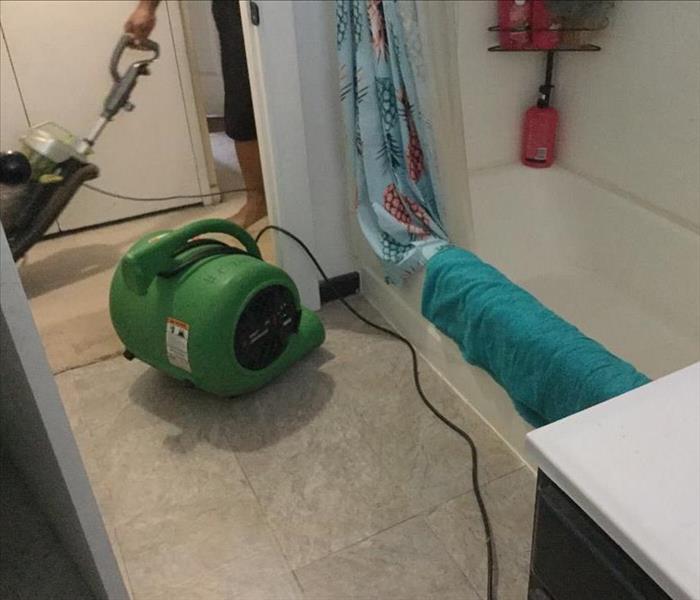 Faulty leak caused water damaged a honolulu home
Faulty leak caused water damaged a honolulu home
Accidents can happen to anyone, although some create more problems and have higher financial costs than other accidents. A forgotten and soon overflowing tub is one of the more expensive problems that happen in life. Left for hours, flooding can become extensive. Total costs increase the longer a homeowner waits before calling for restorative experts like SERVPRO to begin mitigation work. Waiting to call for experts to restore a home after flood damage first happens can not only become more expensive but also become much more damaging to areas that were originally untouched by the water. These places that suffer later are a result of the increased moisture within the home. Even though it may not seem possible, moisture easily travels from one vicinity inside a home to another in a search for equilibrium. Dryer areas experience an increase in humidity, and this can affect stored photo albums, clothing, and other fragile items, belongings, and accessories in closets, and so many other locations inside a home.
Our goal is to restore the humidity level inside your home after a flooding event. We begin by removing as much of the water as we can extract with different pieces of equipment. When things feel dry, we start with the removal of the extra moisture. Dehumidifiers, vast and powerful air blowers, and even heaters when conditions warrant their usefulness help remove moisture from materials inside your home quickly, minimizing damage. Carpets and flooring such as hardwood and parquet can suffer greatly when there is a delay in these efforts. The implementation of heating mats increases the rate of evaporation from these horizontal surfaces so that the dehumidifiers easily remove the moisture. This process can help save carpets and floors that were damaged by clean water. Even with structural damage halted and kept at a low level, any flooding can create a stagnant odor that is present in almost every area of the home. Whenever this occurs, we use special deodorization techniques that effectively eliminate the scent.
For catastrophes that occur inside your home, do not hesitate to call us. We are SERVPRO of East Honolulu and answer our phone at any hour and every day of the year. Our number is 808-395-9545. We want to assist you and your family by restoring your home so that it is “Like it never even happened.”
Guide to Mold Colors
9/6/2019 (Permalink)
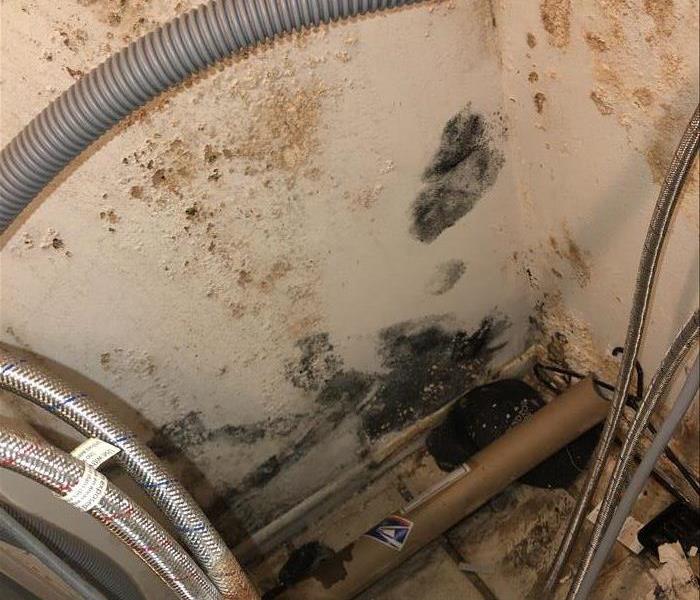 Mold produced by moisture behind home's washer unit
Mold produced by moisture behind home's washer unit
Like most fungi, molds grow best in damp conditions — think bathrooms and basements. If the spores find a moist surface to land on, they grow.
Here, a color guide to molds commonly found in the house.
Green
If you see green mold, it could be just about any type of unwelcome fungus. There are more than a hundred thousand types of mold — and thousands of species of green mold. So what does the color green tell you? Not much.
Olive-green, brown, grey or black
These are common molds. Outdoors, they lurk on plant leaves. Indoors, they're often found on walls and insulation and can grow on damp carpet, too.
Blue, green, or white
These molds are also common. It’s usually found on food and walls.
Yellow, green or black
According to the CDC, people breathe in these molds every day, usually without getting sick. It’s a very common household mold and can found virtually everywhere you’ve experienced water damage.
Black or grey
These is most common as an outdoor mold, growing around damp, dusty areas, soil and plants. But it has made its way indoors.
Pink
The pink “mold” often seen in the bathroom in the form of a slimy, pinkish discoloration on sinks and tubs is actually bacteria, not mold. It thrives on soap and shampoo residues.
Greenish-black
This mold is the infamous “black mold." It's less common than the molds described above. It prefers to live on high-cellulose, low-nitrogen surfaces, which include drywall, gypsum board, paper, dust and lint that is regularly exposed to moisture. The CDC notes, "Growth occurs when there is moisture from water damage, excessive humidity, water leaks, condensation, water infiltration, or flooding. Constant moisture is required for its growth."
If there is any indication or question if there is mold in your area, do not wait and call SERVPRO of East Honolulu any day, any time at 808-395-9545
Levels of Water damage caused by storm
7/26/2019 (Permalink)
When we receive a call to help with flood damage, we can never be sure how severe the damage is until we arrive on-scene to evaluate the situation. Different levels and volumes of flood waters can turn into drastically different damage cleanup and restoration processes, so we must be flexible and able to accommodate any scenario in a timely manner. We look for these following signs of damage to determine how extensive the problem is.
Standing Water
A consistent indicator of some of the most severe flood damage is the presence of standing water. When water remains in your home at a measurable depth, it can begin to cause expensive and permanent damages to the structure of the building. Alert us if any standing water remains in the building so that our primary response teams can bring water extraction pumps and respond Faster To Any Size Disaster.
Soaked Walls
We expect flooring materials to be soaked as a result of flood damage, but when the walls of your home have sustained significant damage, this may be a sign of additional problems that require a more thorough investigation to identify. Sometimes, when water reaches a substantial depth and later recedes, it can still create pockets of moisture in the walls of your home that degrade materials and can cause mold issues later on. SERVPRO technicians use advanced moisture detection tools such as infrared imaging devices and hygrometers to identify these wet areas and treat them accordingly.
Exterior Damages
Although the exterior of your home may be much more resistant to the effects of flood damage than interior areas, it can still sustain significant damage during a storm. We can help with repairs and restorations that may be necessary to leave the exterior of your home looking "Like it never even happened."
SERVPRO of East Honolulu can help you recover from flood damage. Call us 24/7 at 808-395-9545.
Facts about Smoke and Soot
7/26/2019 (Permalink)
Smoke and soot is very invasive and can penetrate various cavities within your home, causing hidden damage and odor. Our smoke damage expertise and experience allows us to inspect and accurately assess the extent of the damage to develop a comprehensive plan of action.
Smoke and soot facts:
- Hot smoke migrates to cooler areas and upper levels of a structure.
- Smoke flows around plumbing systems, seeping through the holes used by pipes to go from floor to floor.
- The type of smoke may greatly affect the restoration process.
Different Types of Smoke
There are two different types of smoke–wet and dry. As a result, there are different types of soot residue after a fire. Before restoration begins, we will test the soot to determine which type of smoke damage occurred. The cleaning procedures will then be based on the information identified during pretesting. Here is some additional information:
Wet Smoke – Plastic and Rubber
- Low heat, smoldering, pungent odor, sticky, smeary. Smoke webs are more difficult to clean.
Dry Smoke – Paper and Wood
- Fast burning, high temperatures, heat rises therefore smoke rises.
Our Fire Damage Restoration Services
Since each smoke and fire damage situation is a little different, each one requires a unique solution tailored for the specific conditions. We have the equipment, expertise, and experience to restore your fire and smoke damage. We will also treat your family with empathy and respect and your property with care.
ACT QUICKLY DURING A STORM
7/19/2019 (Permalink)
Watching the news can fill you with dread as the weather threatens the integrity of your home. As you prepare for a possible emergency, knowing who to call when extensive areas are being affected is extremely important. Experience and technical knowledge are your greatest assets in combating the effects of flooding in your home.
When there is the threat of flood damage to our home make sure to contact SERVPRO of East Honolulu as soon as possible. Our crew is ready 24 hours a day, 7 days a week and trained to work when disaster strikes. Being among the first to contact our technicians helps mitigate your losses as well as the disruption to your daily life. Making a call to our team is the first crucial step in restoring your home.
Flood waters bring debris and unwanted organisms into the sanctity of your home. Our SERVPRO team is IICRC-certified to handle the toughest emergencies.. For tough jobs, we use both submersible and truck-mounted pumps to extract unwanted water from your home. Our field experience and preparation allow us to dispose of wastewater while respecting local ordinances appropriately. Local regulations also play a role in the removal and disposal of contents that cannot be salvaged.
Once we can extract all the water from your home, we proceed with drying and disinfecting. Keeping in mind the nature of each surface, we can tailor each cleaning agent to address its specific needs. Our SERVPRO technicians closely monitor all aspects of the process to ensure no further threat of bacteria remains in your home.
Do not let flood damage overwhelm you. Call SERVPRO of East Honolulu 808-395-9545 as soon as possible to help restore your property. With our help, your home will look “Like it never even happened.”
Does Bleach Kill Mold?
4/5/2019 (Permalink)
Bleach is probably the most well known mold killer. In fact many commercial mold killing products contain bleach.
Does Bleach Kill Mold
Bleach kills bacteria and viruses and sanitizes the surfaces it's used on. Bleach also kills mold if it comes into contact with it. The spores and allergens from mold are neutralized as well.
Bleach will kill mold growing on non-porous surfaces like glass, tiles, bathtubs and counter tops. However bleach cannot completely kill mold growing in non-porous materials like drywall and wood. Bleach does not penetrate into these non-porous substances and so only the mold growing above the surface is killed.
Should You Use Bleach to Kill Mold?
The EPA does not recommend you use bleach for killing and removing mold. Bleach is a chemical, and it is better to use natural mold killing products instead. Some good alternative mold killing products are borax and vinegar. Bleach also loses its power with time. Even if bleach is not opened, in 90 days it loses 50% of its killing effectiveness.
Another disadvantage is that bleach is corrosive. Bleach deteriorates materials and the fibers of porous substances. The gas from bleach can even damage your lungs. If bleach touches your skin it can also give you chemical burns.
There is also concern about whether bleach leaves dioxins. Dioxins are highly toxic and carcinogenic substances. They are also teratogenic and animal tests have shown dioxins can cause birth defects.
Bleach can create dioxins in processes like bleaching of wood pulp. Fortunately though, studies have found that bleach cannot form dioxins when it's just used for household cleaning. The materials which are needed for bleach to form dioxins are not usually present when cleaning the home.
Bleach is ineffective at killing mold on many materials, including carpet and upholstery. Bleach won't kill mold on dirty, metallic or porous substances either.
PLEASE CALL SERVPRO of East Honolulu 808-395-9545 IF YOU ARE EXPERIENCING MOLD PROBLEM IN YOUR AREA
Hiring a Professional for Mold Removal
4/5/2019 (Permalink)
If the size of the mold growth in your home is greater than 10 square feet (about 3 feet x 3 feet) the EPA says you should hire a professional mold removal service - SERVPRO of East Honolulu 808-395-9545
Even if the area of mold growth is smaller it's still best to hire a professional. This way you can be certain that the mold will be completely removed without contaminating the rest of your home. Hiring a professional will also ensure that the mold will not come back and that your symptoms will disappear.
A mold professional can also inspect and test for mold in your entire home. This way you can be sure that all mold growth will be found and removed, even if it is hidden.
If you have toxic mold in your home then it's important to hire a professional, even if the mold growth is small. If toxic mold is not removed in the right way it can spread dangerous mycotoxins throughout your home.
How to Prevent Mold
4/5/2019 (Permalink)
The key to mold growth is moisture. Mold can grow on a food source in 24 to 48 hours if the material remains wet. So the best way to prevent mold is by keeping your home dry.
- Inspecting Your Home For Water Leaks
Check your home for any water leaks. Especially look for leaks in water pipes in hidden areas such as in the basement or below the sink. If you find a water leak, you should fix it as soon as possible.
- Ventilate Your Home to Prevent Mold
Exhaust fans help to reduce moisture in areas where water is often used such as the bathroom and kitchen. You can also open the windows for a while when the weather is dry. Outdoor air might bring in moisture when it is raining or during the night, however, so it's a good idea to shut your windows during these times.
- Minimizing Humidity Helps Prevent Mold
It also helps to check the moisture level of your home. The ideal humidity level is between 30% and 50%. A humidity level of 60% or higher can put your home at risk of mold growth.
Decrease the number of things stored in places like the basement. These materials can grow mold, especially if they are made of paper or fabric. Consider throwing away furniture, papers, clothes, and other items if they haven't been used in the last two years. A lot of the time these stored materials are in a bad condition anyway because of their age, so there is often no point in keeping them inside and risking mold.
Indoor plants in pots of soil can also lead to mold. The soil can provide mold with the moisture and nutrients it needs to grow.
- Maintain Air Conditioners
Properly maintaining air conditioners helps reduce the moisture in a home. Air conditioner drip pans should be cleaned regularly. The drain lines should flow unobstructed.
- How to Prevent Mold in the Basement and Storage Areas
Avoid cluttering the basement and other storage areas. Less clutter can increase the air circulation in these areas. If possible, throw out old or damaged materials to create more space. It's also best to keep mainly washable items in the basement, since these can easily be kept clean.
During warm months, install a dehumidifier to make sure the humidity stays relatively low. Replace furnace filters regularly. The basement floor drain should also be regularly cleaned using bleach and water.
- How to Prevent Mold in the Bathroom
Turn on the exhaust fan when you take a bath or shower. Let it continue to run for a few minutes afterwards as well. You should also check the exhaust fan regularly to make sure it is exhausting the air out of the bathroom properly.
If you don't have an exhaust fan then open the windows instead while you bath or shower. Inspect the bathroom for any water leaks too. And wipe dry any surfaces that often get wet.
- How to Prevent Mold in the Kitchen
Make sure the stove exhaust fan works properly and removes steam from the kitchen. Keep the lid on pots that are boiling, if possible, to prevent the kitchen becoming steamy. You should also clean and dry the drip pan of the refrigerator regularly. Make sure to empty the garbage every day and look out for any leaks around the sink.
- How to Prevent Mold in Bedrooms
You spend much of your life in your bedroom so it's important that you keep it mold free. Make sure to keep your bedroom clean and tidy. If possible, discard any clothes, papers and other things that you no longer use. You can also install a dehumidifier in bedrooms to help prevent mold growing from humidity.
Things You Should Know About Mold
4/5/2019 (Permalink)
What are ten things I need to know about mold?
- The key to mold control is moisture control.
- If mold is a problem in your home, you should clean up the mold promptly and fix the water problem.
- It is important to dry water-damaged areas and items within 24-48 hours to prevent mold growth.
- There is no practical way to eliminate all mold and mold spores in the indoor environment; the way to control indoor mold growth is to control moisture.
- If mold is a problem in your home or school, you must clean up the mold and eliminate sources of moisture.
- Fix the source of the water problem or leak to prevent mold growth.
- Reduce indoor humidity (to 30-60% ) to decrease mold growth by: venting bathrooms, dryers, and other moisture-generating sources to the outside; using air conditioners and de-humidifiers; increasing ventilation; and using exhaust fans whenever cooking, dishwashing, and cleaning.
- Clean and dry any damp or wet building materials and furnishings within 24-48 hours to prevent mold growth.
- Clean mold off hard surfaces with water and detergent, and dry completely. Absorbent materials such as ceiling tiles, that are moldy, may need to be replaced.
- Prevent condensation: Reduce the potential for condensation on cold surfaces (i.e., windows, piping, exterior walls, roof, or floors) by adding insulation.
- In areas where there is a perpetual moisture problem, do not install carpeting (i.e., by drinking fountains, by classroom sinks, or on concrete floors with leaks or frequent condensation).
- Molds can be found almost anywhere; they can grow on virtually any substance, providing moisture is present. There are molds that can grow on wood, paper, carpet, and foods.
Call SERVPRO of East Honolulu 808-395-9545 for any questions or concerns about mold in your home/business
Cleaning up after a flood
9/7/2018 (Permalink)
When your house floods, the water can wreak havoc on the structure of the house, your personal belongings, and the health of the inside environment. Flood waters contain many contaminants and lots of mud. High dollar items can get ruined all at once, even with just an inch of water, for example: carpeting, wallboard, appliances, and furniture. A more severe storm or deeper flood may add damage to even more expensive systems, like: ducts, the heater and air conditioner, roofing, private sewage and well systems, utilities, and the foundation.
After a flood, cleaning up is a long and hard process. Here is a list of common techniques for sanitizing and cleaning flooded items:
- First things first: call your insurance agent. If your insurance covers the damage, your agent will tell you when an adjuster will contact you. List damage and take photos.
CALL SERVPRO OF EAST HONOLULU 808-395-9545. Our staff is highly trained in property damage restoration.
- Take furniture, rugs, bedding and clothing outside to dry as soon as possible. Use an air conditioner or dehumidifier to remove moisture or open at least two windows to ventilate with outdoor air. Use fans to circulate air in the house. If mold and mildew have already developed, brush off items outdoors to prevent scattering spores in the house. Vacuum floors, ceilings and walls to remove mildew, then wash with disinfectant. Wear a two-strap protective mask to prevent breathing mold spores.
- Mattresses should be thrown away.
- Upholstered furniture soaks up contaminants from floodwaters and should be cleaned only by a professional.
- Wood veneered furniture is usually not worth the cost and effort of repair.
Solid wood furniture can usually be restored, unless damage is severe. - Toys and stuffed animals may have to be thrown away if they've been contaminated by floodwaters.
- Photographs, books and important papers can be frozen and cleaned later. They should be dried carefully and slowly. Wash the mud off and store the articles in plastic bags and put them in a frost-free freezer to protect from mildew and further damage until you have time to thaw and clean them or take them to a professional.
You can avoid the hassle of the clean up by calling SERVPRO OF EAST HONOLULU. We will get the job done like it never even happened.
Hurricane Season in Procress
9/3/2018 (Permalink)
Hurricanes are massive storm systems that form over warm ocean waters and move toward land. Potential threats from hurricanes include powerful winds, heavy rainfall, storm surges, coastal and inland flooding, rip currents, tornadoes, and landslides. The Atlantic hurricane season runs from June 1 to November 30. The Pacific hurricane season runs May 15 to November 30. Hurricanes:
- Can happen along any U.S. coast or in any territory in the Atlantic or Pacific oceans.
- Can affect areas more than 100 miles inland.
- Are most active in September.
IF YOU ARE UNDER A HURRICANE WARNING, FIND SAFE SHELTER RIGHT AWAY
- Determine how best to protect yourself from high winds and flooding.
- Evacuate if told to do so.
- Take refuge in a designated storm shelter, or an interior room for high winds.
- Listen for emergency information and alerts.
- Only use generators outdoors and away from windows.
- Turn Around, Don’t Drown! Do not walk, swim, or drive through flood waters.
Prepare NOW
- Know your area’s risk of hurricanes.
- Sign up for your community’s warning system. The Emergency Alert System (EAS) and National Oceanic and Atmospheric Administration (NOAA) Weather Radio also provide emergency alerts.
- If you are at risk for flash flooding, watch for warning signs such as heavy rain.
- Practice going to a safe shelter for high winds, such as a FEMA safe room or ICC 500 storm shelter. The next best protection is a small, interior, windowless room in a sturdy building on the lowest level that is not subject to flooding.
- Based on your location and community plans, make your own plans for evacuation or sheltering in place.
- Become familiar with your evacuation zone, the evacuation route, and shelter locations.
- Gather needed supplies for at least three days. Keep in mind each person’s specific needs, including medication. Don’t forget the needs of pets.
- Keep important documents in a safe place or create password-protected digital copies.
- Protect your property. Declutter drains and gutters. Install check valves in plumbing to prevent backups. Consider hurricane shutters. Review insurance policies.
What to do 6-36 hours before a hurricane hits
9/3/2018 (Permalink)
When a hurricane is 36 hours from arriving
- Turn on your TV or radio in order to get the latest weather updates and emergency instructions.
- Restock your emergency preparedness kit. Include food and water sufficient for at least three days, medications, a flashlight, batteries, cash, and first aid supplies.
- Plan how to communicate with family members if you lose power. For example, you can call, text, email or use social media. Remember that during disasters, sending text messages is usually reliable and faster than making phone calls because phone lines are often overloaded.
- Review your evacuation zone, evacuation route and shelter locations. Plan with your family. You may have to leave quickly so plan ahead.
- Keep your car in good working condition, and keep the gas tank full; stock your vehicle with emergency supplies and a change of clothes.
When a hurricane is 18-36 hours from arriving
- Bookmark your city or county website for quick access to storm updates and emergency instructions.
- Bring loose, lightweight objects inside that could become projectiles in high winds (e.g., patio furniture, garbage cans); anchor objects that would be unsafe to bring inside (e.g., propane tanks); and trim or remove trees close enough to fall on the building.
- Cover all of your home’s windows. Permanent storm shutters offer the best protection for windows. A second option is to board up windows with 5/8” exterior grade or marine plywood, cut to fit and ready to install.
When a hurricane is 6-18 hours from arriving
- Turn on your TV/radio, or check your city/county website every 30 minutes in order to get the latest weather updates and emergency instructions.
- Charge your cell phone now so you will have a full battery in case you lose power.
When a hurricane is 6 hours from arriving
- If you’re not in an area that is recommended for evacuation, plan to stay at home or where you are and let friends and family know where you are.
- Close storm shutters, and stay away from windows. Flying glass from broken windows could injure you.
- Turn your refrigerator or freezer to the coldest setting and open only when necessary. If you lose power, food will last longer. Keep a thermometer in the refrigerator to be able to check the food temperature when the power is restored.
- Turn on your TV/radio, or check your city/county website every 30 minutes in order to get the latest weather updates and emergency instructions.
Air Conidition MOLD
5/21/2018 (Permalink)
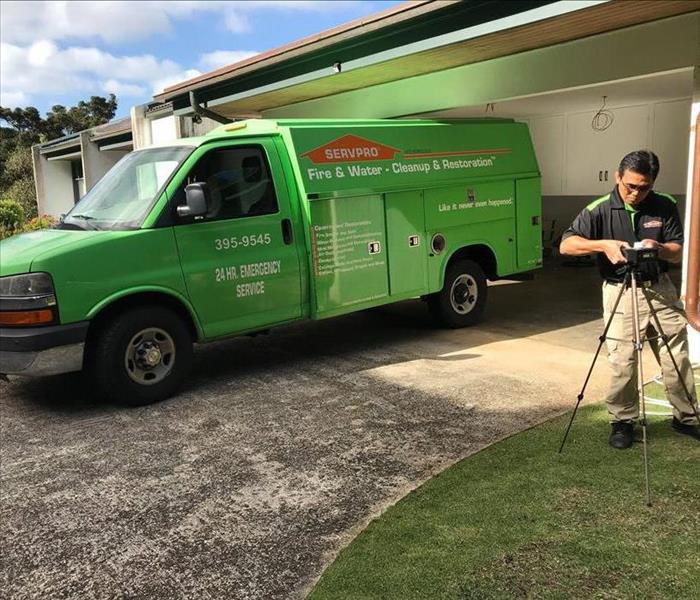 General Manager, Lorenzo, testing the air for mold in a Honolulu home and it's surrounding area
General Manager, Lorenzo, testing the air for mold in a Honolulu home and it's surrounding area
Air conditioner mold can spread throughout the house every time you turn your air conditioner on and exposure to mold can lead to numerous health problems, including respiratory disorders and allergic reactions. Air conditioning mold needs to be removed as soon as possible, to protect your health and the health of your loved ones.
The Air Conditioning Contractors of America (AACA) explains that keeping your air conditioning ducts free of dirt and other debris can reduce the likelihood of mold growth by making sure there is no organic matter in the ducts on which mold can feed. Mold also needs water in order to grow and condensation inside air conditioning ducts often provides just enough moisture for mold to thrive. There should not be standing water inside your air conditioning ducts, though, and if there is, you need to have your system serviced by an air condition specialist
You should check your air conditioning ducts for mold if you have mold growing in other areas of your home or if you smell a musty odor in a room but don’t see mold anywhere. If you’re not sure if there is mold in your air conditioning ducts or not, you can have a certified mold tester come in and test for mold. He or she can check for mold in other areas of the home, too, since mold in your air conditioning system is easily spread to other areas of the home when you turn on your air conditioner.
How to Help Prevent Water Damage
4/13/2018 (Permalink)
It's important to check household appliances regularly. The simple steps below can help you protect your home from the most common causes of water damage:
- First, know where the main water supply is located in case of emergency.
- If you will be away from home for an extended period, shut off the water supply and drain the pipes. If your home is protected by a fire sprinkler system, do not turn off the water to this system.
- Check the drain lines annually and clean them if they are clogged.
- Inspect water heaters, showers, tubs, toilets, sinks and dishwashers annually, and have them repaired if there are any signs of leaks or corrosion. When possible, install water heaters in areas with floor drains to minimize damage if leaks should occur.
- Check caulking around showers, bathtubs, sinks and toilet bases, and make repairs as needed.
- If your refrigerator has an ice machine or water dispenser, the hose between the wall and the refrigerator should be made of braided copper, which has greater cracking and corrosion resistance.
- Check pipes for cracks and leaks. Have pipe damage fixed immediately to prevent more costly repairs in the future.
- Check appliance hoses and plumbing fittings for breakage, crimping or bending.
Smoke Alarms
4/13/2018 (Permalink)
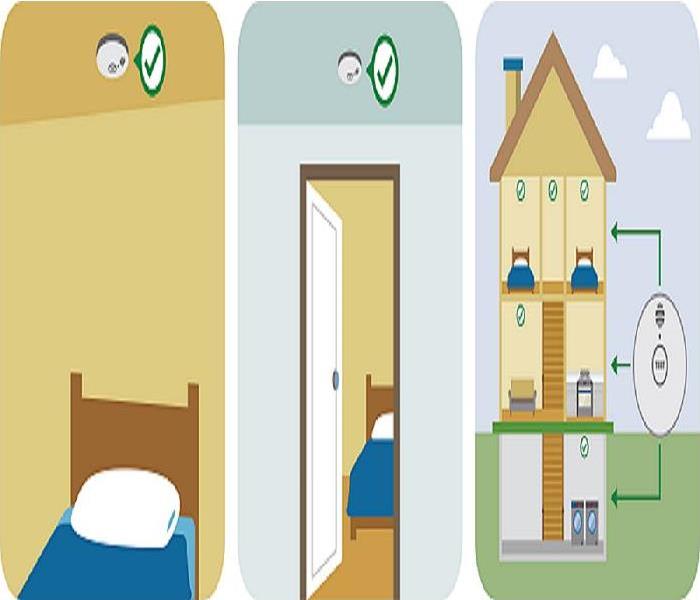 Have smoke alarms in every sleeping room, outside each separate sleeping area, and on every level of the home, including the basement.
Have smoke alarms in every sleeping room, outside each separate sleeping area, and on every level of the home, including the basement.
Smoke alarms are a key part of a home fire escape plan. When there is a fire, smoke spreads fast. Working smoke alarms give you early warning so you can get outside quickly.
- A closed door may slow the spread of smoke, heat and fire. Install smoke alarms in every sleeping room and outside each separate sleeping area. Install alarms on every level of the home. Install alarms in the basement. Smoke alarms should be interconnected. When one sounds, they all sound.
- Large homes may need extra smoke alarms.
- Test all smoke alarms at least once a month. Press the test button to be sure the alarm is working.
- Today’s smoke alarms will be more technologically advanced to respond to a multitude of fire conditions, yet mitigate false alarms.
- A smoke alarm should be on the ceiling or high on a wall. Keep smoke alarms away from the kitchen to reduce false alarms. They should be at least 10 feet (3 meters) from the stove.
- People who are hard-of-hearing or deaf can use special alarms. These alarms have strobe lights and bed shakers.
- Replace all smoke alarms when they are 10 years old.
- Smoke alarms are an important part of a home fire escape plan.
According to National Fire Protection Association (NFPA), 96% of American homes have at least one smoke alarm, no smoke alarms were present or none operated in two out of five (41%) of the reported home fires between 2003-2006. Almost two-thirds of home fire deaths resulted from fires in homes with no smoke alarms or no working smoke alarms.
Tens Things You Should Know About MOLD
4/13/2018 (Permalink)
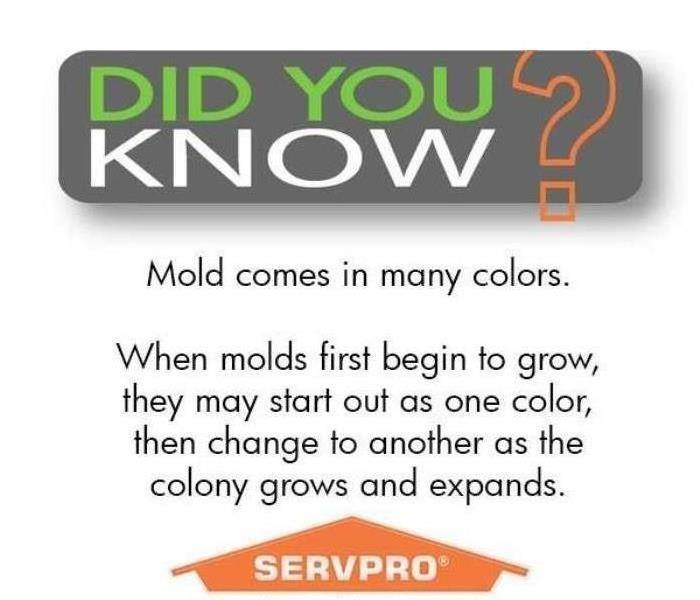
- Potential health effects and symptoms associated with mold exposures include allergic reactions, asthma and other respiratory complaints.
- There is no practical way to eliminate all mold and mold spores in the indoor environment; the way to control indoor mold growth is to control moisture.
- If mold is a problem in your home or school, you must clean up the mold and eliminate sources of moisture.
- Fix the source of the water problem or leak to prevent mold growth.
- Reduce indoor humidity (to 30-60%) to decrease mold growth by:
- Venting bathrooms, dryers and other moisture-generating sources to the outside
- Using air conditioners and de-humidifiers
- Increasing ventilation
- Using exhaust fans whenever cooking, dishwashing and cleaning
- Clean and dry any damp or wet building materials and furnishings within 24-48 hours to prevent mold growth.
- Clean mold off hard surfaces with water and detergent, and dry completely. Absorbent materials such as ceiling tiles, that are moldy, may need to be replaced.
- Prevent condensation: Reduce the potential for condensation on cold surfaces (i.e., windows, piping, exterior walls, roof, or floors) by adding insulation.
- In areas where there is a perpetual moisture problem, do not install carpeting (i.e., by drinking fountains, by classroom sinks, or on concrete floors with leaks or frequent condensation).
- Molds can be found almost anywhere; they can grow on virtually any substance, providing moisture is present. There are molds that can grow on wood, paper, carpet, and foods.
Mold Prevention
4/13/2018 (Permalink)
The most effective way to manage mold in a building is to eliminate or limit the conditions that foster its establishment and growth. Mold should not be allowed to colonize materials and furnishings in buildings. The underlying moisture condition supporting mold growth should be identified and eliminated. To remediate problematic mold growth, mold should be removed from materials that can be effectively cleaned and materials that cannot be cleaned or are physically damaged beyond use should be discarded. Occupants and workers must be protected from contaminants during remediation. After emergency situations (such as flooding due to hurricanes), to avoid fungal growth on susceptible materials, it is important to dry them quickly.
- Take emergency actions to stop water intrusion if needed.
- Identify vulnerable populations, extent of contamination and water source.
- Plan and implement remediation activities.
The key to prevention in the design and operation of buildings is to limit water and nutrients. The two basic methods for accomplishing that are keeping moisture-sensitive materials dry and, when wetting is likely or unavoidable, using materials that offer a poor substrate for growth. Specifically, design and maintenance strategies must be implemented to manage:
- Rainwater and groundwater, preventing liquid-water entry and accidental humidification of buildings.
- The distribution, use, and disposal of drinking, process, and wash water, making equipment and associated utilities easily accessible for maintenance and repair.
- Water vapor and surface temperatures to avoid accidental condensation.
- The wetting and drying of materials in the building and of soil in crawlspaces during construction.
Tens Things You Should Know To Prevent Kitchen Fires
4/13/2018 (Permalink)
Did you know the kitchen is where more home fires occur than anywhere else in the house and that cooking is the number one cause of home fires? The American Red Cross has steps everyone can follow to avoid a cooking fire:
1. Never leave cooking food unattended – stay in the kitchen when frying, grilling or broiling food. If you have to leave the kitchen, even for a second, turn off the stove.
2. Check your food regularly while cooking and remain in the home while cooking.
3. Use a timer so you’ll remember that the stove or oven is on.
4. Don’t wear loose clothing or dangling sleeves while cooking.
5. Keep the kids away from the cooking area. Enforce a “kid-free zone” and make them stay at least three feet away from the stove.
6. Keep anything that can catch fire - pot holders, oven mitts, wooden utensils, paper or plastic bags, food packaging, and towels or curtains—away from your stove, oven or any other appliance in the kitchen that generates heat.
7. Clean cooking surfaces on a regular basis to prevent grease buildup.
8. Consider purchasing a fire extinguisher to keep in your kitchen. Contact your local fire department to take training on the proper use of extinguishers.
9. Always check the kitchen before going to bed or leaving the home to make sure all stoves, ovens, and small appliances are turned off.
10. Install a smoke alarm near your kitchen, on each level of your home, near sleeping areas, and inside and outside bedrooms if you sleep with doors closed. Use the test button to check it each month. Replace all batteries at least once a year.
Storm Prevention Tips
4/13/2018 (Permalink)
Prior to a storm
Remove trees or branches dry during a storm that could fall and cause casualties or damage.
Stay inside the building another 30 minutes after you last hear thunder.
Rules to follow if a storm is imminent
Stop all outdoor activities.
Enter the building or a car. Close windows and doors.
Pipelines can produce electricity. Use wireless phones only in emergency situations. Cordless phones or cell phones are safe to use.
Unplug appliances and other electrical equipment such as computers and air condition. When you feel your hair stand up, is an indication that there is a lightning danger. Sit you squat down. Put your hands on your ears and your head between your knees.
Avoid high objects such as a high tree isolated area open fields, beaches or a boat on the water, any metal objects such as agricultural machinery, farm equipment, motorcycles, bicycles, etc.
If you're in the woods, look for shelter in an area with less tall trees.
If you are in an open area, go to a low area such as a valley.
Difference between WARNING & WATCH
4/13/2018 (Permalink)
A WATCH means that the potential exists for the development of severe thunderstorms or tornadoes, depending upon the specific type of watch issued. In the case of a tornado watch, this DOES NOT mean that a tornado has been seen or even indicated on radar...it just means that conditions are favorable for the formation of tornadoes in thunderstorms. Similarly, a severe thunderstorm watch means that conditions are just conducive for the development of severe weather, and DOES NOT indicate that severe weather has been reported. While no immediate action on the part of the general public is required for the issuance of a watch, citizens should keep up to date on the current weather situation and be prepared to seek shelter if necessary.
A WARNING, on the other hand, requires more immediate action and should be taken seriously. A severe thunderstorm warning indicates that severe weather is imminent in your area or is already occurring (based on either human observation or doppler radar). The term severe refers to hail greater than or equal to 1.00" in diameter and/or wind gusts that meet or exceed 58 mph. Although these storms can also be associated with dangerous cloud to ground lightning or heavy rainfall that is capable of causing flash flooding, neither of these two items serve as criteria for a severe thunderstorm warning being issued.
Smoking is a leading cause of home fire deaths.
4/6/2018 (Permalink)
Don't let your world go up in smoke. Home fires ARE preventable and here are a few helpful tips:
- Smoke outside. Many things in your home can catch on fire if they touch something hot like a cigarette or ashes. It is always safer to smoke outside.
- Put cigarettes out all the way. Do this every time. Don’t walk away from lit cigarettes and other smoking materials. Put water on the ashes and butts to make sure they are really out before you put them in the trash.
- Be alert. Do not smoke after taking medicine that makes you tired. You may not be able to prevent or escape from a fire if you are sleepy or have taken medicine that makes you tired.
- Never smoke around medical oxygen. Medical oxygen can explode if a flame or spark is near. Even if the oxygen is turned off, it can still catch on fire.
- Never smoke in bed. Mattresses and bedding can catch on fire easily. Do not smoke in bed because you might fall asleep with a lit cigarette.
- Put your cigarette out in an ashtray or bucket with sand. Use ashtrays with a wide base so they won’t tip over and start a fire.
About half of all home electrical fires involve home electrical wiring
4/6/2018 (Permalink)
Electrical fires in our homes claim the lives of some 280 Americans each year and injure 1,000 more. Some of these fires are caused by electrical system failures, but many more are caused by incorrectly installed wiring and overloaded circuits and extension cords. FEMA and the U.S. Fire Administration would like you to know that there are simple steps you can take to prevent the loss of life and property resulting from electrical fires.
- Plug only one heat-producing appliance (such as a coffee maker, space heater, or microwave) directly into a wall outlet at a time.
- Extension cords should only be used temporarily. Have an electrician install additional wall outlets where you need them.
- Never use an extension cord with a heat-producing appliance.
- Don’t overload extension cords or wall outlets.
- Check your electrical cords. If they are cracked or damaged, replace them. Don’t try to repair them.
- Use light bulbs that match the recommended wattage on the lamp or fixture.
- Electrical work should only be done by a qualified electrician.
Overflowed Toilet
6/26/2017 (Permalink)
An overflowing toilet presents an immediate problem that you must resolve before the toilet can be used again. You will first need to stop the toilet from overflowing, and address the obstruction in the toilet's drainpipe to prevent it from overflowing again.
Turn off the Water
You will first need to stop the toilet from overflowing by shutting off the toilet's water supply. You will need to locate the toilet's shutoff valve, which normally is located low to the floor behind or next to the toilet. Once you find the valve, turn the handle clockwise as far as you can using your hand. Do not use a wrench or other tool to tighten the handle, or you could damage the handle or valve. If the water continues to flow, you will need to close the house's main water valve, which will shut off all of the water in the house, until you can repair the toilet. Clean up the water on the floor since leaving it can lead to water damage or mold growth.
CALL SERVPRO OF EAST HONOLULU 808-395-9545
We are here 24/7 working to make "Like it never even happened." - to get the job done fast and job done right!!!!
Overflowed Toilet
6/26/2017 (Permalink)
An overflowing toilet presents an immediate problem that you must resolve before the toilet can be used again. You will first need to stop the toilet from overflowing, and address the obstruction in the toilet's drainpipe to prevent it from overflowing again.
Turn off the Water
You will first need to stop the toilet from overflowing by shutting off the toilet's water supply. You will need to locate the toilet's shutoff valve, which normally is located low to the floor behind or next to the toilet. Once you find the valve, turn the handle clockwise as far as you can using your hand. Do not use a wrench or other tool to tighten the handle, or you could damage the handle or valve. If the water continues to flow, you will need to close the house's main water valve, which will shut off all of the water in the house, until you can repair the toilet. Clean up the water on the floor since leaving it can lead to water damage or mold growth.
Restoring damaged cargo
6/19/2017 (Permalink)
 High-speed air movers create airflow across walls, carpets, pads, furniture, and clothing, which accelerates the evaporation of moisture.
High-speed air movers create airflow across walls, carpets, pads, furniture, and clothing, which accelerates the evaporation of moisture.
Water can damage more then just homes or buildings.
High end designer clothing and shoes were damaged while being transported through a major American airline company. Rain and moisture kept the boxes saturated for hours. Once landed and in a panic when the cargo was seen clearly wet, the first and only company that came to mind to react as soon as possible was SERVPRO OF EAST HONOLULU.
SERVPRO of East Honolulu can respond immediately and has the expertise and equipment to properly restore your property. SERVPRO of East Honolulu uses advanced water damage inspection and extraction equipment to remove/restore it as quickly as possible. Our highly trained technicians will monitor and document the drying process so that you know your property is back to normal.
Hurricane Season in Hawaii
6/1/2017 (Permalink)
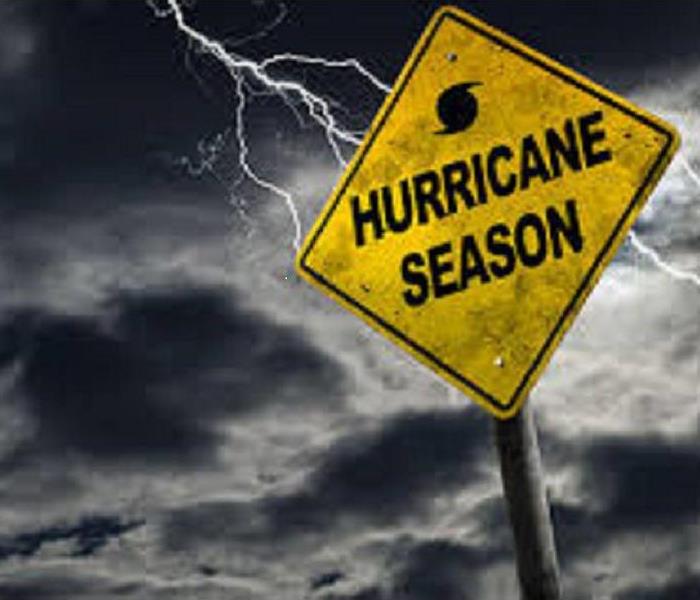 Hawaii Hurricane Season 6/1/17 - 11/30/2017
Hawaii Hurricane Season 6/1/17 - 11/30/2017
Hurricanes
Hurricanes are part of a family of storms known as Tropical Cyclones that are very large and produce three life-threatening effects:
- High winds in excess of 74 mph
- Storm surges that can exceed 40 feet
- Heavy rains that will exceed flash flood conditions
The National Weather Service Central Pacific Hurricane Center will issue watches and warnings for tropical cyclones.
- Watch: Prepare your disaster supply kit & prepare to evacuate
- Warning: Evacuate and take protective shelter; take your disaster supply kit
Should I evacuate? Where should I go?
Each person should decide whether to evacuate or not. You can either stay at home and shelter in place, or go to a hurricane evacuation shelter.
How to determine if you should shelter-in-place (at home) or evacuate (to a hurricane evacuation shelter):
- If you live near the coastline, near rivers and streambeds, or on the mountain ridgeline, YOU SHOULD EVACUATE.
- If your house was built before 1993 and is constructed of wood, YOU SHOULD EVACUATE
- If you live in a house constructed after 1993 and have an interior room on a lower floor, with no windows (closet, bathroom) you should shelter-in-place
Shelter-in-place:
- If you meet the above criteria you should consider sheltering-in-place from the storm
- Stay on the lowest floor possible, and look for a closet, bathroom, or other room with no windows on the interior of your house or apartment
- Bring your food, pets, family, and preparedness supplies into the room and remain in there
- Take your radio with you so you know when conditions have improved enough for you to leave your sheltering room
Click on the link below for a list of hurricane evacuation shelters, including special health needs shelters and pet friendly shelters.
https://www.honolulu.gov/rep/site/dem/dem_docs/hurricane_list/2013_Hurr_Evac_Shelters.pdf
HURRICANE SEASON also mean possible storm damage to your home or business. Be sure to call SERVPRO OF EAST HONOLULU 808-395-9545 in case of any type of damage. We are here at your convenience Working to make it "Like it never even happened."
Hard wood floor drying mat system
6/1/2017 (Permalink)
 SERVPRO OF EAST HONOLULU using the drying mat system to save the hard wood floor of a high rise Waikiki condominium
SERVPRO OF EAST HONOLULU using the drying mat system to save the hard wood floor of a high rise Waikiki condominium
On top of the regular drying units SERVPRO OF EAST HONOLULU is readily equipped with, we also provide hardwood floor mat drying system. This is the most efficient way to extract water vapor from hard wood floors. With just a single hose connection to each mat, you can cover large areas with just a single recovery unit.
The drying floor mat system draw out trapped water vapor from your hardwood floors; not meant to be used on laminate flooring. The gasket sides of each mat create a powerful seal for the greatest possible suction. Each mat is made from strong PVC plastic and must be cleaned with hot water and soap after each use to avoid cross contamination between jobs.
GOT HARDWOOD FLOORING? SUFFERING FROM WATER DAMAGE? NEED SAVING? CALL SERVPRO OF EAST HONOLULU 808-395-9545, we are here 24/7 Working to make it "Like it never even happened."
"Killing 2 birds with 1 stone"
6/1/2017 (Permalink)
Other than and in conjunction with water, fire, and mold remediation, SERVPRO OF EAST HONOLULU also provides cleaning services.
SERVPRO OF EAST HONOLULU has worked closely with Hawaiian Airlines for a number of years in conjunction with water damage repair, as well as mold remediation. So, when their building maintenance company contract expired, it made sense to call SERVPRO to replace them. It is because SERVPRO operates 24/7, nightly cleaning service was ideal. It’s less disruptive and gives us a chance to thoroughly clean the area(s) without interrupting day to day business.
SERVPRO OF EAST HONOLULU provides ease and efficiency by being a well-round restoration company. Call us 808-395-9545 24/7 because no job is too small nor too big for our level of expertise.
Water damage and what you should do
5/15/2017 (Permalink)
Exposure to mold can cause health problems for some people by irritating the nose, eyes throat or lungs. The best way to keep mold from spreading is to act fast when you know water damage is present.
Let us do the work and reduce your stress, the best decision you can make is call SERVPRO OF EAST HONOLULU 808-395-9545 or follow the following steps
Use a wet/dry vacuum to clean up as much water as soon as possible.
It can take several days for fans to completely dry a water-damaged area.
These machines remove excessive moisture, which makes the air feel cooler and limits mold and mildew growth.
Steam clean all carpets to properly sanitize and deodorize.
Anything touched by storm water should be sanitized. Clean all walls, hard-surface floors and other household surfaces with soap and water. Remember to wear rubber gloves during cleanup.
Look for water damage and remove furniture from wet flooring. Water damage can easily be hidden underneath rugs or carpet, so be sure to give your home a thorough inspection if you suspect water damage.
Family Disaster Plan
4/26/2017 (Permalink)
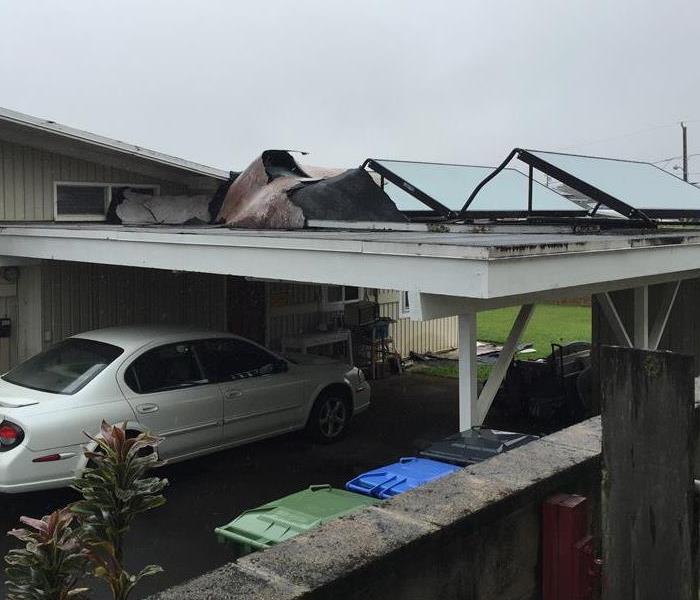 SERVPRO of East Honolulu rushed to restore a nearly dismembered roof after heavy rain and wind made its way through a home in Honolulu, HI
SERVPRO of East Honolulu rushed to restore a nearly dismembered roof after heavy rain and wind made its way through a home in Honolulu, HI
Every family should have a plan for disaster situations. Sit down before the storm and be prepared when it's time.
Family Disaster Plan
Discuss the type of hazards that could affect your family. Know your home's vulnerability to storm surge, flooding and wind.
Locate a safe room or the safest areas in your home for each hurricane hazard. In certain circumstances the safest areas may not be your home but within your community.
Determine escape routes from your home and places to meet.
If possible, have an out-of-state or neighbor island friend as a family contact, so all your family members have a single point of contact.
Make a plan now for what to do with your pets if you need to evacuate.
Post emergency telephone numbers by your phones and make sure your children know how and when to call 911.
Check your insurance coverage - flood damage is not usually covered by homeowners insurance.
Stock non-perishable emergency supplies and a Disaster Supply Kit.
Use a NOAA weather radio. Remember to replace its battery every 6 months, as you do with your smoke detectors.
Take First Aid, CPR and disaster preparedness classes.
Educating your child about Fire
4/26/2017 (Permalink)
Make an escape plan
It is important to have a plan when there are children in the home. Children sometimes need help getting out of the house, and they may not know how to escape or what to do unless an adult shows them.
- Have a plan for young children who cannot get outside by themselves. You will need to wake babies and very young children and help them get out. In your plan, talk about who will help each child get out safely.
- Know two ways out of every room. It is important to find two ways out of every room in the house, in case one exit is blocked or dangerous to use.
- Choose a meeting place outside the home. Children should know what to do when they hear a smoke alarm and there is no adult around. Help them practice going to the outside meeting place. Teach them to never go back inside a building that is on fire.
Keep children safe from fire and burns
Some children are curious about fire. There are simple steps you can take to keep you and the people you love safer from fire and burns.
- Keep children 3 feet away from anything that can get hot. Space heaters and stove-tops can cause terrible burns. Keep children at least 3 feet away from stoves, heaters or anything that gets hot.
- Keep smoking materials locked up in a high place. Never leave cigarette lighters or matches where children can reach them.
- Never play with lighters or matches when you are with your children. Children may try to do the same things they see you do.
Moisture Control is key to Mold Control
4/19/2017 (Permalink)
- When water leaks or spills occur indoors - ACT QUICKLY. If wet or damp materials or areas are dried 24-48 hours after a leak or spill happens, in most cases mold will not grow.
- Clean and repair roof gutters regularly.
- Keep air conditioning drip pans clean and the drain lines unobstructed and flowing properly.
- Keep indoor humidity low. If possible, keep indoor humidity below 60% (ideally between 30% - 50%) relative humidity. Relative humidity can be measured with a moisture or humidity meter, a small, inexpensive ($10 - $50) instrument available at many hardware stores.
- If you see condensation or moisture collecting on windows, walls or pipes - ACT QUICKLY to dry the wet surface and reduce the moisture/water source. Condensation can be a sign of high humidity.
IF YOU SEE MOLD DEVELOPING, CALL US TODAY AT 808-395-9545
LIMIT YOUR EXPOSURE TO MOLD & MOLD SPORES
4/19/2017 (Permalink)
- Avoid breathing in mold or mold spores. In order to limit your exposure to airborne mold, you may want to wear an N-95 respirator, available at many hardware stores and on the internet. In order to be effective, the respirator or mask must fit properly, so carefully follow the instructions supplied with the respirator. Occupational Safety and Health Administration (OSHA) requires that respirators fit properly
- Wear gloves. Long gloves that extend to the middle of the forearm are recommended. When working with water and a mild detergent, ordinary household rubber gloves may be used. If you are using a disinfectant, a biocide such as chlorine bleach, or a strong cleaning solution, you should select gloves made from natural rubber, neoprene, nitrile, polyurethane, or PVC. Avoid touching mold or moldy items with your bare hands.
- Wear goggles. Goggles that do not have ventilation holes are recommended. Avoid getting mold or mold spores near or in your eyes.
SERVPRO Expands PGA Sponsership with PGA Fantasy Golf
4/14/2017 (Permalink)
 http://fantasygolf.pgatour.com/#/one-and-done
http://fantasygolf.pgatour.com/#/one-and-done
Local cleanup and restoration specialist says the season's first major golf tournament is a great time to "master" Fantasy Golf skills.
Honolulu, HI (Grassroots Newswire) March 22, 2017 - There is an old adage: "It never rains on a golf course." As the official cleanup and restoration company of the PGA TOUR, SERVPRO® knows this isn't true, but rain or shine, fans follow their favorite players' performance at PGA golf tournaments throughout the season. Recognizing the ever-growing popularity of the game, SERVPRO has expanded its relationship with the PGA TOUR by becoming the presenting sponsor of the PGA Fantasy Gold games. available at pgatour.com/fantasy
"We know people don't associate SERVPRO® with the wide-open spaces and fair weather feeling of a golf course. After all, SERVPRO® is the company you turn to when the unexpected, even the unthinkable, happens to your home or business," says Raul Natividad, owner of SERVPRO® of EAST HONOLULU. "But each SERVPRO business is also a local business, there to support the community in good times and bad. Teaming up with the PGA TOUR as the sponsor of their Fantasy Gold Suite helps us build connections within our local community. We want local home and business owners to know that we are there for them ready to respond at a moment's notice if things go wrong."
The new "One & Done" games were launched on January 3, 2017*, but the game structure allows players to join in on the fun at any point during the current season. Each week, game players select one player to earn points for them in that week's tournament. The PGA TOUR Fantasy game is based on accumulated FedEx Cup points and the PGA Tour Champions game is based on accumulated Charles Schwab Cup points . A player may select a given golfer for a tournament in each of the One & Done games only once in each season. Since some tournaments earn a pro golfer more points than others, game strategy is based on selecting the right golfers for the right tournaments.
"With the first major tournament of the season-The Masters-just around the corner, now is a great time to start our One & Done game for this year's tour," says Natividad. "If you 'master' the trick of choosing the right golfers in the right tournaments, you could jump to the top of your Fantasy league." The top finisher in the PGA TOUR game will win a new set of gold clubs, while the top prize for the PGA TOUR Champions game is a trip for two to the Charles Schwab Cup Championship at Phoenix Country Club in Phoenix, Arizona, November 6-12.
SERVPRO® OF EAST HONOLULU specializes in disaster restoration, cleanup and repair services, helping to remediate damage, making it "Like it never even happened," for both commercial and residential customers. For more information on SERVPRO® OF EAST HONOLULU, please contact Raul Natividad at 808-395-9545 or servnat@aol.com
*http://www.pgatour.com/company/2017/01/03/pga-tour-fantasy-one-and-done-SERVPRO-debuts.html
Basic Mold Cleanup
4/3/2017 (Permalink)
Best thing to do is call SERVPRO of East Honolulu 808-395-9545, a professional in mold remediation.
The key to mold control is moisture control.
- It is important to dry water damaged areas and items within 24-48 hours to prevent mold growth.
- If mold is a problem in your home, clean up the mold and get rid of the excess water or moisture.
- Scrub mold off hard surfaces with detergent and water, and dry completely.
- Fix leaky plumbing or other sources of water.
- Wash mold off hard surfaces with detergent and water, and dry completely. Absorbent materials (such as ceiling tiles & carpet) that become moldy may have to be replaced.
- Do not paint or caulk moldy surfaces. Clean up the mold and dry the surfaces before painting. Paint applied over moldy surfaces is likely to peel.
Fire 101
4/1/2017 (Permalink)
Every day Americans experience the horror of fire but most people don't understand fire.
Fire is FAST!
There is little time! In less than 30 seconds a small flame can get completely out of control and turn into a major fire. It only takes minutes for thick black smoke to fill a house or for it to be engulfed in flames. Most deadly fires occur in the home when people are asleep. If you wake up to a fire, you won't have time to grab valuables because fire spreads too quickly and the smoke is too thick. There is only time to escape.
Fire is HOT!
Heat is more threatening than flames. A fire's heat alone can kill. Room temperatures in a fire can be 100 degrees at floor level and rise to 600 degrees at eye level. Inhaling this super-hot air will scorch your lungs. This heat can melt clothes to your skin. In five minutes, a room can get so hot that everything in it ignites at once: this is called flashover.
Fire is DARK!
Fire isn't bright, it's pitch black. Fire starts bright, but quickly produces black smoke and complete darkness. If you wake up to a fire you may be blinded, disoriented and unable to find your way around the home you've lived in for years.
Fire is DEADLY!
Smoke and toxic gases kill more people than flames do. Fire uses up the oxygen you need and produces smoke and poisonous gases that kill. Breathing even small amounts of smoke and toxic gases can make you drowsy, disoriented and short of breath. The odorless, colorless fumes can lull you into a deep sleep before the flames reach your door. You may not wake up in time to escape.
Only when we know the true nature of fire can we prepare our families and ourselves
https://www.ready.gov/home-fires.
HELP DO YOUR PART BY PREVENTING WILDFIRE
4/1/2017 (Permalink)
Each year, about 0.5% of Hawaii's total land area burns each year, equal to or greater than the proportion burned of any other US state. Over 98% of wildfires are human caused. Human ignitions coupled with an increasing amount of nonnative, fire-prone grasses and shrubs and a warming, drying climate have greatly increased the wildfire problem.
BE ALERT AND PREPARED!
- Clear leaves & debris from gutters and roof
- Maintain 6 inches in between siding and ground
- Cover combustible materials next to and under home
- Protect windows - clear vegetation, close them when the fire comes
- Create defensible space within 100 feet of home or up to boundary line
- Keep grass short
- Keep tree branches high off ground
- Clear brush & leaf piles
- Create & practice a family evacuation plan
- Include assisting neighbors w/ special needs in your evacuation plans
- Make sure fire vehicles and personnel can defend your home from all sides
- Make sure hydrants, pools, & water tanks are accessible
MOST IMPORTANTLY CALL 911 THEN SERVPRO OF EAST HONOLULU 808-395-9545 FOR ALL YOUR RESTORING NEEDS
Bloodborne Pathogens
3/13/2017 (Permalink)
 Fully suited up in Personal Protective Equipment (PPE)
Fully suited up in Personal Protective Equipment (PPE)
Cleaning up after a dead body is removed isn't something that anyone wants to deal with, esp. the family members of the individual. Because bloodborne pathogens, such as HIV, Hepatitis B and C, and MRSA could be lurking, calling a professional crime scene cleanup company such as SERVPRO of East Honolulu is recommended because they know how to clean, disinfect, and restore the affected area, MAKING LIKE IT NEVER EVEN HAPPENED.
Chemicals, blood, and other body fluids from a decomposing body can seep into the subflooring and other porous materials. Even if an area appears to be clean after a dead body is removed, it might not actually be "clean." A dead body can affect a site within minutes of death. The most damaging component of a scene after a dead body is removed is the potential presence of bloodborne pathogens, which are infectious microorganisms in human blood that can cause disease in humans.
SEVERE WEATHER ALERTS
3/4/2017 (Permalink)
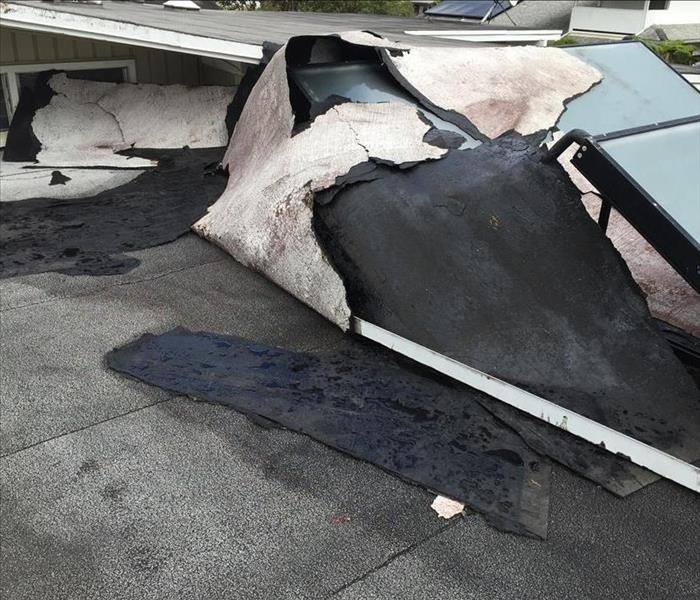 Roof damage in the Honolulu area caused by heavy showers and thunderstorms
Roof damage in the Honolulu area caused by heavy showers and thunderstorms
What is a Severe Thunderstorm? A thunderstorm that produces a tornado, winds of at least 58 mph (50 knots), and/or hail at least ¾" in diameter. Structural wind damage may imply the occurrence of a severe thunderstorm. A thunderstorm wind equal to or greater than 40 mph (35 knots) and/or hail of at least ½" is defined as approaching severe.
Severe Thunderstorm Watch This is issued by the National Weather Service when conditions are favorable for the development of severe thunderstorms in and close to the watch area. The size of the watch can vary depending on the weather situation. They are usually issued for a duration of 4 to 8 hours. They are normally issued well in advance of the actual occurrence of severe weather. During the watch, people should review safety rules and be prepared to move a place of safety if threatening weather approaches.
Severe Thunderstorm Warning This is issued when either a severe thunderstorm is indicated by the WSR-88D radar or a spotter reports a thunderstorm producing hail 3/4 inch or larger in diameter and/or winds equal or exceed 58 miles an hour; therefore, people in the affected area should seek safe shelter immediately. Severe thunderstorms can produce tornadoes with little or no advance warning. Lightning frequency is not a criteria for issuing a severe thunderstorm warning. They are usually issued for a duration of one hour. They can be issued without a Severe Thunderstorm Watch being already in effect.
Severe Weather Potential Statement This statement is designed to alert the public and state/local agencies to the potential for severe weather up to 24 hours in advance. It is issued by the local National Weather Service office.
Severe Weather Statement A National Weather Service product which provides follow up information on severe weather conditions (severe thunderstorm or tornadoes) which have occurred or are currently occurring
Flash Flood Warning
2/11/2017 (Permalink)
BE PREPARED!
Flooding happens during heavy rains, when rivers overflow, when ocean waves come onshore, when snow melts too fast, or when dams or levees break. This is the most common natural-weather event. Flooding may be only a few inches of water or it may cover a house to the rooftop. Floods that happen very quickly are called flash floods.
Some disasters strike without any warning. Have you thought about those supplies you’ll need the most? They will usually be the hardest to come by. Enlist your children to help gather supplies for your family’s emergency kit. It’ll bring you a sense of relief, and your kids a feeling of empowerment. Make sure you have enough supplies to last for at least three days. Think about where you live and your needs. Consider having a large kit at home, and smaller portable kit in the car or your workplace.
Click here for an emergency kit checklist file:///L:/FEMA_checklist_parent_508_071513.pdf
Fighting Sewage, Mold, and Soot
1/30/2017 (Permalink)
Imagine wading into the ocean. Living in Hawaii, it is easy to do. Feel the force of the waves pushing against your body? Now imagine that same force pushing through items inside of a washing machine.
This is exactly what happens inside of the ESPORTA WASH SYSTEM that uses a completely different technology from a regular machine called the hydraulic water action.
SERVPRO of East Honolulu, a local cleaning and restoration company has brought this new technology to Oahu. Now items contaminated with sewage, mold, smoke, and soot can be disinfected to food grade clean, "like it never even happened," which is in fact SERVPRO's slogan.
"We can wash anything from teddy bears and dolls to leather boots, purses, jackets, pillows and blackets, taking out odor, as well as killing potentially harmful bacteria." -Raul Natividad, SERVPRO of East Honolulu owner who's been in the business for over 25 years.
What To Do If a Pipe Bursts or a Flood Happens in Your Home
1/25/2017 (Permalink)
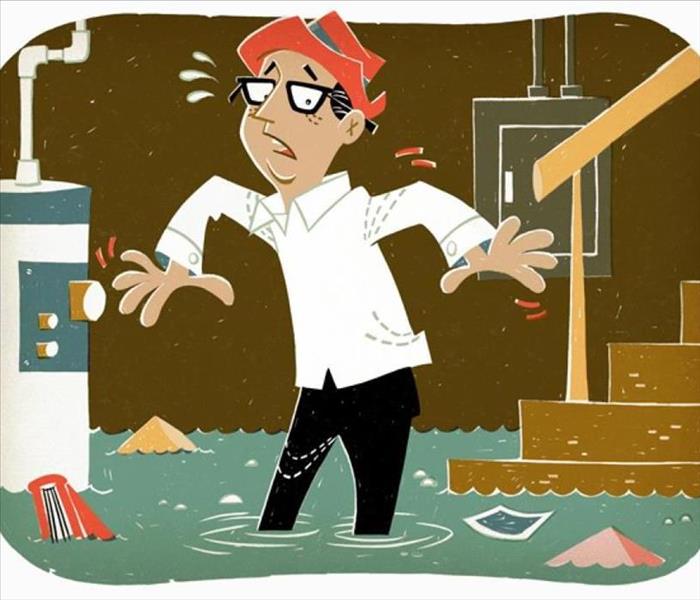
A flooded basement is not the best way to get that indoor swimming pool you've dreamed about. Burst water heaters cause a lot of damage because the tank will constantly try to refill.
With busted pipes, shut off the water immediately and repair the pipes. Remove water-damaged furniture and personal items to dry and salvage. Use a sump pump, wet-dry vacuum, dehumidifier and fans to drain the water and dry out the basement. Remove damaged sections of wall coverings (drywall, paneling) and insulation, and be sure to dry and ventilate wall cavities to limit mold and mildew growth. Track down the source if it's not busted pipes. You may need to excavate around the basement and apply a barrier to the exterior walls to prevent water from leaching through.
Contact your insurance company. Your water heater won't be covered (it may be under warranty, however), but any damaged items may be.
Sounds like a nightmare, so be sure to call SERVPRO OF EAST HONOLULU to reduce your stress and restore your home. Our goal is Working to make it "Like it never even happened."
5 Common Causes of Electrical Fire
1/25/2017 (Permalink)
According to the U.S. Fire Administration, in 2014, electrical fires accounted for 6.3 percent, nearly 24,000 fires, of all residential fires, 11 percent of the fires where someone died and 7 percent of the fires where someone was injured.
The months with the most electrical fires are December and January due to increased use of heating appliances and lights. Most electrical fires start in the bedroom, but the highest number of fatalities occur with fires located in the living room, family room and den.
Some electrical fires happen because of problems in house wiring or appliance failure, but many occur due to mistakes that homeowners make like overloading electrical outlets or extension cords.
Here are the 5 most common causes of electrical fires.
1. Faulty outlets, appliances
Most electrical fires are caused by faulty electrical outlets and old, outdated appliances. Other fires are started by faults in appliance cords, receptacles and switches. Never use an appliance with a worn or frayed cord which can send heat onto combustible surfaces like floors, curtains, and rugs that can start a fire.
Running cords under rugs is another cause of electrical fires. Removing the grounding plug from a cord so it can be used in a two-prong electrical outlet can also cause a fire. The reason appliances have the extra prong is so they can be only used in outlets that can handle the extra amount of electricity that these appliances draw.
2. Light fixtures
Light fixtures, lamps and light bulbs are another common reason for electrical fires. Installing a bulb with a wattage that is too high for the lamps and light fixtures is a leading cause of electrical fires. Always check the maximum recommended bulb wattage on any lighting fixture or lamp and never go over the recommended amount.
Another cause of fire is placing materials like cloth or paper over a lampshade. The material heats up and ignites, causing a fire. Faulty lamps and light fixtures also frequently result in fires.
3. Extension cords
Misuse of extension cords is another electrical fire cause. Appliances should be plugged directly into outlet and not plugged into an extension cord for any length of time. Only use extension cords as a temporary measure. If you do not have the appropriate type of outlets for your appliances, hire an electrician to install new ones.
4. Space heaters
Because these types of heaters are portable, many times people put them too close to combustible surfaces such as curtains, beds, clothing, chairs, couches and rugs. Coil space heaters are especially dangerous in this regard because the coils become so hot they will almost instantaneously ignite any nearby flammable surface.
If you do use space heaters, use the radiator-type that diffuse heat over the entire surface of the appliance. These are less likely to ignite flammable items, but should still be kept away from them.
5. Wiring
Outdated wiring often causes electrical fires. If a home is over 20 years old, it may not have the wiring capacity to handle the increased amounts of electrical appliances in today’s average home, such as computers, wide-screen televisions, video and gaming players, microwaves and air conditioners.
Breakers should be triggered when circuits get overloaded by too much electricity, but outdated breaker boxes often have worn connectors that do not work, causing the system to overload and start an electrical fire.
5 Extremely Common Workplace Disasters That You Didn’t See Coming
1/16/2017 (Permalink)
Workplace disasters come in a variety of forms, from slips and falls to fires and flooding. The scariest part? Disasters like these aren’t exactly rare — in fact, they’re relatively common. That means if you’re in business, chances are you’ll be dealing with a workplace disaster, in some shape or form, at some point. The only thing you can really do to stop it is to be aware of the risks and be ready to respond to them.
So, what should you be ready and waiting for, as a business owner? Here are five relatively common business disasters that are waiting in the wings, and which you can save your business gobs of time and money by adequately preparing for.
1. Fires
Fires can and do happen, it’s just hard to imagine that it could happen to you or your business. But businesses do experience fires, and the costs associated with them can be staggering. Even if you don’t lose any assets — equipment or buildings, for example — the time spent cleaning up and restoring your business to proper working order can take a huge toll.
And fire danger can be sneaky. Make sure your smoke and fire detectors are in working order, you have the necessary prevention and suppression systems in place, and a sound evacuation plan. Even a small fire can be cripplingly expensive for a small business. As of 2014, average losses due to a fire in the U.S. were almost $20,000 per structure.
2. Flooding
You don’t need heavy rain or precipitation for your business to experience flood or water damage — it may only take some leaky pipes, a busted water main, or even a winter freeze to knock your business operations out of commission. Flood and water damage can be extremely expensive to restore and clean up, particularly if you don’t immediately take care of the issue. Water can and will find its way into your business structures, threatening your electronics, inventory, and assets. The best and most cost-effective way to counter it is by having a professional take stock of any threats your building may have, and by knowing what to do in the immediate aftermath of a flood or busted pipe.
3. Mold
Do you know what often goes hand-in-hand with water and flooding damage? Mold — and that’s why it’s so important to have a professional cleaning and restoration team take care of water issues as soon as possible. Mold is sneaky and destructive, and can grow in places you’d never even think to look. It can also make you and your staff or customers sick, which may warrant some action from local building code regulators. Mold is fairly common too, depending on what part of the country your business is located in.
4. Weather damage
Severe weather is unpredictable and relatively rare, all things considered. For that reason, it’s easy for business owners to filter the threat of storm and severe weather damage from their minds. It can be hard to justify spending time and money planning for something that may never happen, right? Well, it’ll happen eventually — and if you don’t plan for it, you’ll end up dealing with broken windows, damage from falling trees, flooding, and a host of other potential issues.
If your business is in a hurricane, tornado, or blizzard-prone area, the potential for storm damage should be something you’re taking seriously.
5. Loss of power and water
We take a lot of things for granted living in modern America, and one of those things is the availability of electricity and clean water. But what happens if, for one reason or another, our electricity or water is cut off? We’re essentially sent back to the Stone Age — and if you’re a business owner, it means that your whole operation grinds to a screeching halt.
Be prepared for utility shutdowns as best you can. Have backup generators and water storage on hand, to ensure that critical systems can remain online until utilities are restored. If you’re not prepared, you could lose inventory (perhaps you require refrigeration or steady water flow?) or create the potential for a fire or flooding. Be prepared for the worst, and invest in contingency systems to keep your business afloat.
MOLD: Facts you should know
1/16/2017 (Permalink)
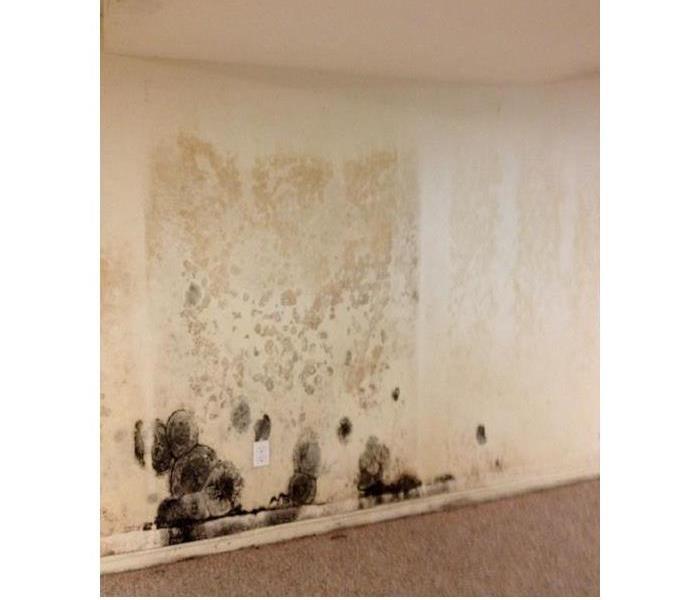
Not all mold is toxic but it can cause allergy problems.
Stachybotrys, a form of toxic mold, is usually found only in homes that have prolonged water damage.
Mold spores occur in the indoor and outdoor environments. Mold spores may enter your house from the outside through open doorways, windows, and heating, ventilation, and air conditioning systems with outdoor air intakes. Spores in the air outside also attach themselves to people and animals, making clothing, shoes, bags, and pets convenient vehicles for carrying mold indoors.
Mold spores can't be eliminated from indoor environments; BUT they will only germinate into mold if there is moisture.
When mold spores drop on places where there is excessive moisture, such as where leakage may have occurred in roofs, pipes, walls, plant pots, or where there has been flooding, they will grow. Many building materials provide suitable nutrients that encourage mold to grow. Wet cellulose materials, including paper and paper products, cardboard, ceiling tiles, wood, and wood products, are particularly conducive for the growth of some molds. Other materials such as dust, paints, wallpaper, insulation materials, drywall, carpet, fabric, and upholstery, commonly support mold growth.
DO NOT PUT BLEACH ON MOLD. THIS WILL FEED IT INSTEAD OF KILLING IT!
Flood Safety Tips
1/14/2017 (Permalink)
Sometimes floods develop slowly and forecasters can anticipate where a flood will happen days or weeks before it occurs. Oftentimes flash floods can occur within minutes and sometimes without any sign of rain. Being prepared can save your life and give you peace of mind.
During a flood, water levels and the rate the water is flowing can quickly change. Remain aware and monitor local radio and television outlets. Avoid flood waters at all costs and evacuate immediately when water starts to rise. Don't wait until it's too late!
When flood waters recede, the damage left behind can be devastating and present many dangers. Images of flood destruction depict destroyed homes and buildings, damaged possessions, and decimated roadways. However, what you can't see can be just as dangerous. Floodwaters often become contaminated with sewage or chemicals. Gas leaks and live power lines can be deadly, but are not obvious at first glance.
What to do AFTER flooding:
- Remove excess water by mopping and blotting
- Wipe excess water from wood furniture after removal of lamps and tabletop items
- Remove and prop wet upholstery and cushions
- Place aluminum foils and wood blocks between furniture legs and carpet
- Remove colored rugs from wet carpeting
- Remove art objects to a safe and dry place
- Gather loose items from floors
What NOT to do AFTER flooding:
- Do not leave books, magazines or other colored items on wet carpeting or floors
- Do not use televisions or other household appliances
- Do not turn on ceiling fixtures if ceiling is wet, and keep out of rooms where ceilings are sagging
Ultrasonic Cleaning
1/14/2017 (Permalink)
 Restored porcelain Buddha through ultrasonic cleaning
Restored porcelain Buddha through ultrasonic cleaning
What picture comes to mind when you think of the word "ultrasonic"? Well, one of the things ultrasound waves can do is....clean your belongings from various contaminants, including mold and soot. In fact, the items can be anything from jewelry, glass, and ceramic materials to even electronics - computers and TV's.
The high-frequency waves can be used with just water, but use of a solvent along with the soiling enhances the effect. Cleaning normally last between 3 - 6 minutes, but can also exceed 20 minutes, depending on the object.
OK, but what exactly goes on inside of the ultrasonic cleaner??? In a process called cavitation, bubbles form and grow. Prior to the bubble implosion, there is a tremendous amount of energy stored inside of them. When the implosion occurs near a hard surface, it changes the bubbles into a jet, which travels at extremely high speeds towards the hard surface. With the combination of pressure, temperature, and velocity, the jet frees contaminants from their bonds with the substrate. Because of the small size of the jet and the large energy, ultrasonic cleaning reaches into the small crevices and removes entrapped soils very efficiently.
What a storm is and is not
1/6/2017 (Permalink)
What Storm is:
A controlled response managed by one or more SERVPRO® Storm Sites which are operated by one of four Franchise owned teams. These Storm Sites are committed to being in a constant state of readiness. Always answering the call and mobilizing to service National Accounts clients’ customers. Always willing to assist the Local Franchises in servicing spikes in volume for which they have difficulty getting to all customers in a timely fashion.
What Storm is not:
Storm is not a severity initiative, so it is not LLRT or ERT response. However, commercial or large losses often occur in a Storm affected area. When they do the Storm Leaders work with CLLD and the LLRT or ERT Franchises to respond to opportunities and manage the work produced.
Storm Response is managed in six phases:
- Promote and Plan
- Monitor the Potential Event
- Activate the Event
- Execute the Event
- Exit the Event
- Post Event
Service Response Guidelines
1/2/2017 (Permalink)
- Within 1 hour from notice of loss, SERVPRO of East Honolulu will contact your Insured to arrange for service.
- Within 4 Hours of loss notification, SERVPRO of East Honolulu will be on-site to start mitigation services (if necessary).
- Within 8 business hours, a verbal briefing of the scope will be communicated to the adjuster by SERVPRO of East Honolulu
*Exceptions may apply under certain conditions, such as a local catastrophic event or storm situation.
As a leader in fire and water cleanup and restoration, our number one goal is returning damage to its preloss condition, doing all we can to make it "Like it never even happened." Every SERVPRO Franchise Professional who steps onto a job site has a goal in mind. It is about total restoration of the damage and about the life of the customer being helped.
Like it was never dirty, like it never overflowed, like it never caught fire, like it never spilled, like it never smoldered--whatever the case, with SERVPRO our goal is to make it "Like it never even happened."
The Pentagon: A case study
1/2/2017 (Permalink)
When water pipes located in the basement of the Pentagon burst early one morning, pouring 1.8 million gallons of water over 565,000 square feet - or roughly 17 miles of hallway - SERVPRO Franchise Professionals completed the enormous task of drying the structure in just 7 days.
Following the events of September 11, 2001, SERVPRO Franchise Professionals were once more called upon to assist with the cleanup & restoration of the Pentagon. In spite of the emotions & difficulties involved in the restoration effort, SERVPRO Franchise Professionals dried nearly 300,000 square feet in addition to providing fire, soot, and smoke cleanup and restoration services. Upon completion of the drying assignment, SERVPRO Franchise Professionals provided mold remediation services in other sections of the facility. SERVPRO Franchise Professionals met the challenge and completed the process in just 90 days.
Water Damage from CONTAMINATED WATER
7/18/2016 (Permalink)
What to do when you have Water Damage from Contaminated Water:
- Avoid all contact with sewage and items contaminated by sewage.
- Wash your hands thoroughly after contact with contaminated items.
What NOT to do when you have Water Damage from Contaminated Water:
- Spread contaminated water by walking unnecessarily on damaged or wet areas.
- Turn on the HVAC system if there is a possibility of spreading contaminated air.
- Use household fans to dry the structure and spread contamination.
- Use products for personal hygiene and cleanliness if exposed to the contaminated areas.
Note: If exposed to harmful waste, OHSA recommends a post-exposure medical evaluation. Consult your local health department or physiciann.
How to minimize damage after a fire
1/26/2016 (Permalink)
What To Do After A Fire
- Limit movement in the home to prevent soot particles from being embedded into upholstery and carpets.
- Keep hands clean so as not to further soil upholstery, walls and woodwork.
- Place clean towels or old linens on rugs, upholstery and carpet traffic areas.
- If electricity is off, empty freezer and refrigerator and prop doors open.
- Clean and protect chrome with light coating of petroleum jelly or oil.
- Wash houseplants on both sides of leaves.
- Change HVAC filter.
- Tape double layers of cheesecloth over air registers.
What NOT To Do After A Fire
- Don't attempt to wash any walls or painted surfaces or shampoo carpet or upholstery without contacting your SERVPRO Franchise Professional.
- Don't attempt to clean any electrical appliances that may have been close to fire, heat or water without consulting an authorized repair service.
- Don't use any canned or packaged food or beverages that may have been stored near the fire, heat or water.
- Don't turn on ceiling fixtures if ceiling is wet. The wiring may be damaged.
- Don't send garments to an ordinary dry cleaner. Improper cleaning may set smoke odor.
Principles of drying a structure, #2, #3 and #4
12/31/2015 (Permalink)
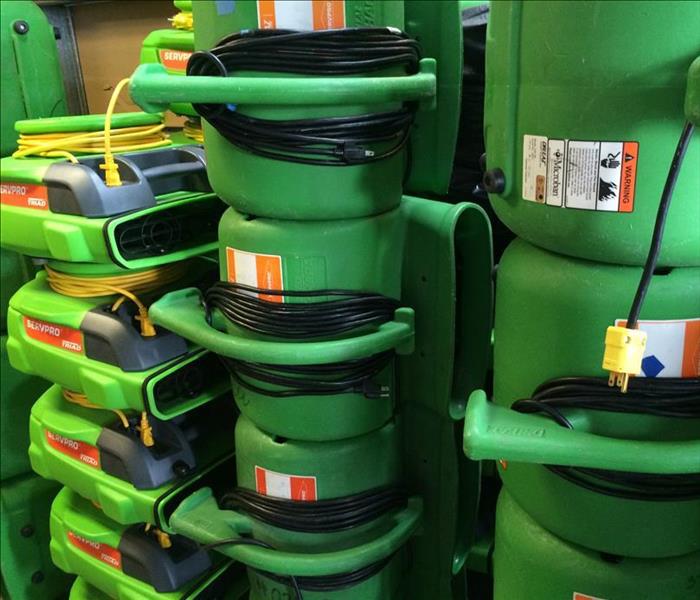 These are our air movers. They speed up evaporation (see principle #2).
These are our air movers. They speed up evaporation (see principle #2).
Continued.
The second principle of drying a structure is evaporation that occurs when water is moved from a liquid state to a vapor state in the air. Evaporation does not remove the moisture, it just moves it from the materials to the surrounding air. Once evaporation is occurring, the moisture can now be removed through dehumidification.
The third principle is dehumidification, or the removal of moisture from the air. This is achieved by using dehumidifiers—refrigerant or desiccant. The refrigerant ones are most effective in 70-90 F, and work by condensation. In simple words, the warm and moist air is drawn over cooled coils, causing the moisture to condensate on the coils and drain off via a tube connected to a sink or a toilet. Desiccant dehumidifiers are completely different technology, and work by adsorption or absorption. They remain efficient down to 32 F and even below.
The fourth principle is temperature control, which directly impacts evaporation and dehumidification efforts. Understanding of the correct temperature for each specific type of loss is extremely important.
This is all we wanted to share about the science of drying today. We will cover more on this topic soon. Stay tuned!
Four principles of drying a structure, #1
9/18/2015 (Permalink)
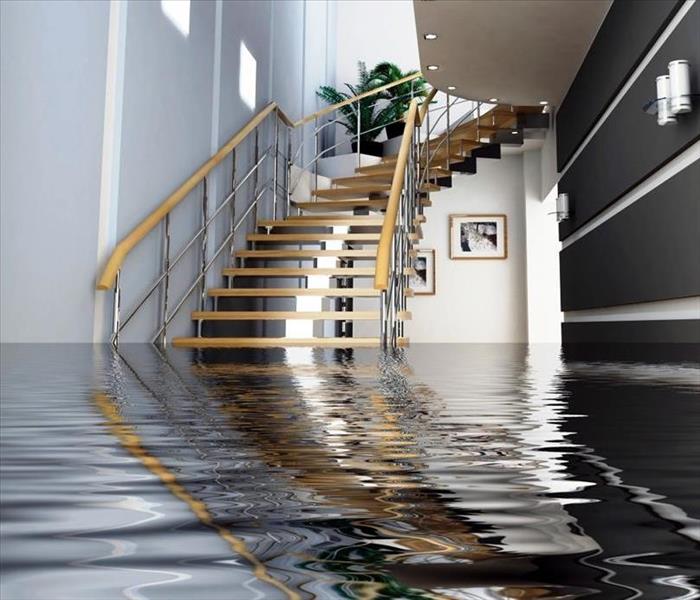 Do you know why you cool down when you sweat?
Do you know why you cool down when you sweat?
SERVPRO's drying methodology is how we are able to fully dry structure in most cases without demolition. We use a basic understanding of thermal dynamics and psychometrics to successfully dry structures by the least intrusive means possible. Our drying methodology is comprised of four principles. Today we will explain one.
The first principle of drying a structure is the removal of excess water. Using a machine called an extractor typically does this. The more water that is removed, the faster the structure will dry. It is far easier to physically remove water than it is to remove it through evaporation and dehumidification. So if you don’t have an extractor, call a professional who does.
As moisture evaporates from a wet surface, its surface becomes cooler. This is called "evaporative cooling". This is exactly why you cool down when you sweat!
We will continue covering the four methods of drying a structure in the next blog post.
Hurricane season is here: necessary steps to restore your property
8/25/2015 (Permalink)
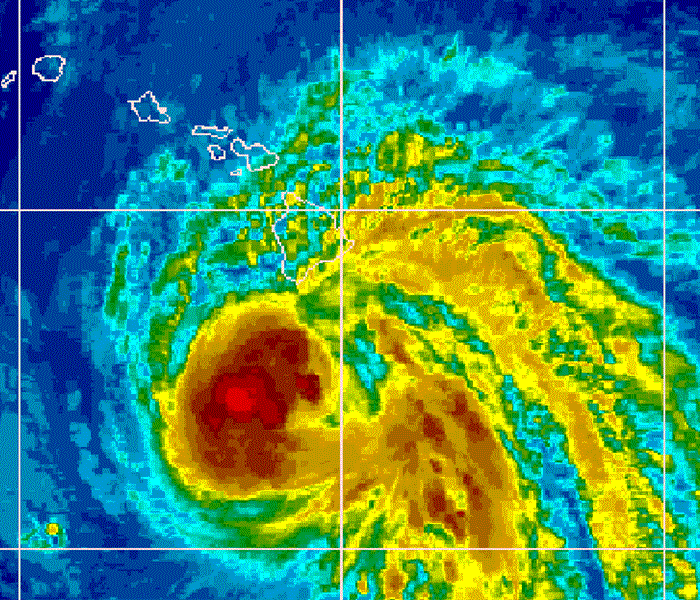 Hawaii is experiencing an especially active hurricane season. These steps will help you address your water damage. Call 808-395-9545 for help.
Hawaii is experiencing an especially active hurricane season. These steps will help you address your water damage. Call 808-395-9545 for help.
Every water damage event is a little different, and requires a unique solution, but the general process stays the same.
Step 1 - Emergency Contact
When you call, our representative will guide you through several questions that will help us respond to your water emergency more quickly and efficiently. This initial contact is an important part of a fast, effective restoration.
Step 2 - Inspection and Water Damage Assessment
We will carefully inspect your property’s water damage, determining the type of water damage and the areas affected. This is a crucial step to creating an effective plan of action that will result in a successful restoration.
Step 3 - Water Removal / Water Extraction
Typically, hundreds or thousands of gallons of water are removed using our powerful pumps and vacuums during the water removal process. We start this process as soon as possible to minimize further damage and to help prevent mold growth.
Step 4 - Drying and Dehumidification
After the bulk of the water has been removed, we use specialized equipment to target the water that’s harder to access. They use scientific drying methods to draw the remaining water and moisture from your property with air movers and dehumidifiers.
Step 5 - Cleaning and Sanitizing
Water damage also affects your belongings, like furniture, clothing, and personal items. We can clean restorable items using a number of specialized cleaning techniques. We also sanitize with antimicrobial treatments and remove odors using industrial air scrubbers and fogging equipment.
Step 6 - Restoration
The last step is restoring your home or business back to its pre-water damage condition. The restoration step can be relatively minor, such as replacing a few drywall panels, or could include major reconstruction, such as rebuilding entire rooms of a home or business.
How to deal with Black Mold?
8/11/2015 (Permalink)
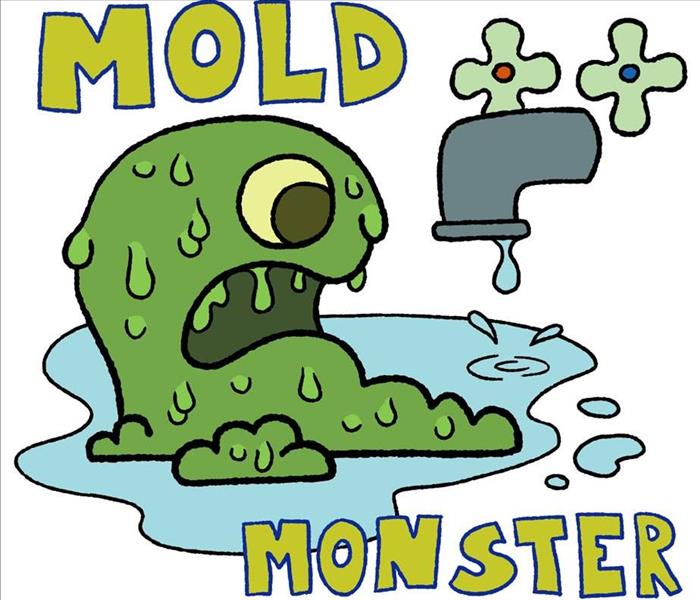 We will help you get your mold level under control. Call SERVPRO of East Honolulu at 808-395-9545.
We will help you get your mold level under control. Call SERVPRO of East Honolulu at 808-395-9545.
What Is Black Mold?
Stachybotrys chartarum is the type of mold often called “black mold” or “toxic mold”. Sensational news reports warn about the dangers of black mold and these stories can be alarming and confusing. Any mold in your home should be treated with caution.
What to Do:
Stay out of affected areas.Turn off the HVAC system and fans.Contact a SERVPRO Franchise Professional for mold remediation services.What NOT to Do:
Don’t touch or disturb the mold.Don’t blow air across any surfaces with visible or suspected mold growth.Don’t attempt to dry the area yourself.Don’t spray bleach or other disinfectants on the mold.How Do I Tell If It’s Black Mold?
Since many types of mold can produce allergens and irritants, you should contact a qualified mold remediation company regardless of the color or type of mold. In many instances, multiple types of mold can exist in the same house or structure.
If you suspect that you have a mold problem, contact SERVPRO of East Honolulu at 808-395-9545.
Revolutionized technology in soft contents cleaning has reached Hawaii
7/22/2015 (Permalink)
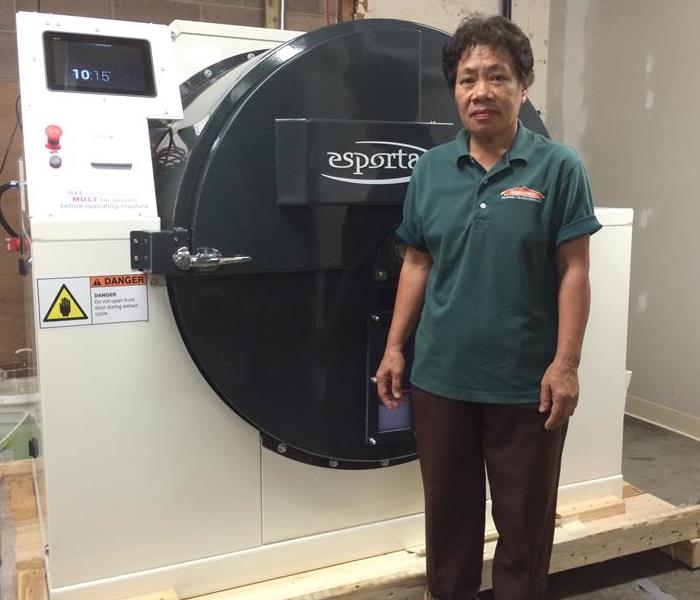 Items are held stationary in each compartment and do not tumble.
Items are held stationary in each compartment and do not tumble.
Imagine walking into the ocean. Living in Hawaii, it is easy to do. Feel the force of the waves pushing against your body. Now imagine that same force pushing through items inside of a washing machine. This is exactly what happens inside of the Esporta Wash System that uses a completely different technology than a regular machine.
The new method is called hydraulic water action. SERVPRO of East Honolulu, a local cleanup and restoration company has brought this revolutionary technology to Hawaii. Now items contaminated with sewage, mold, smoke and soot can be made like new and disinfected to food grade clean, “like it never even happened,” which is SERVPRO’s slogan.
“The Esporta iS4000 Wash System offers us an edge over our competitors by empowering us to restore items that would be normally marked as non-restorable,” said Raul Natividad, SERVPRO of East Honolulu owner who has been in the business for 25 years.
“Now we can wash anything from teddy bears and dolls to leather jackets, high end purses, shoes, pillows and blankets, taking out heavy odor and smoke, as well as killing bacteria,” Natividad said while sharing why he decided to invest in this system.
What would happen before is, adjusters would have to write items off as non-restorable and give checks to the insured for replacement cost.
A regular dry cleaner could only restore 40-50 percent of the soft contents from a claim and 0 (zero) percent of items from a sewage and mold loss. This has increased the cost of the claim and has raised premiums.
SERVPRO can now restore more than 90 percent of the soft contents on a claim, including mold and sewage.
This 2,200-pound machine is almost as tall as an average person and has a capacity of 100 pounds. Inside it is divided into four compartments.
Water and detergents are forced through the fabrics while the items are held stationary in each compartment and do not tumble.





 24/7 Emergency Service
24/7 Emergency Service



